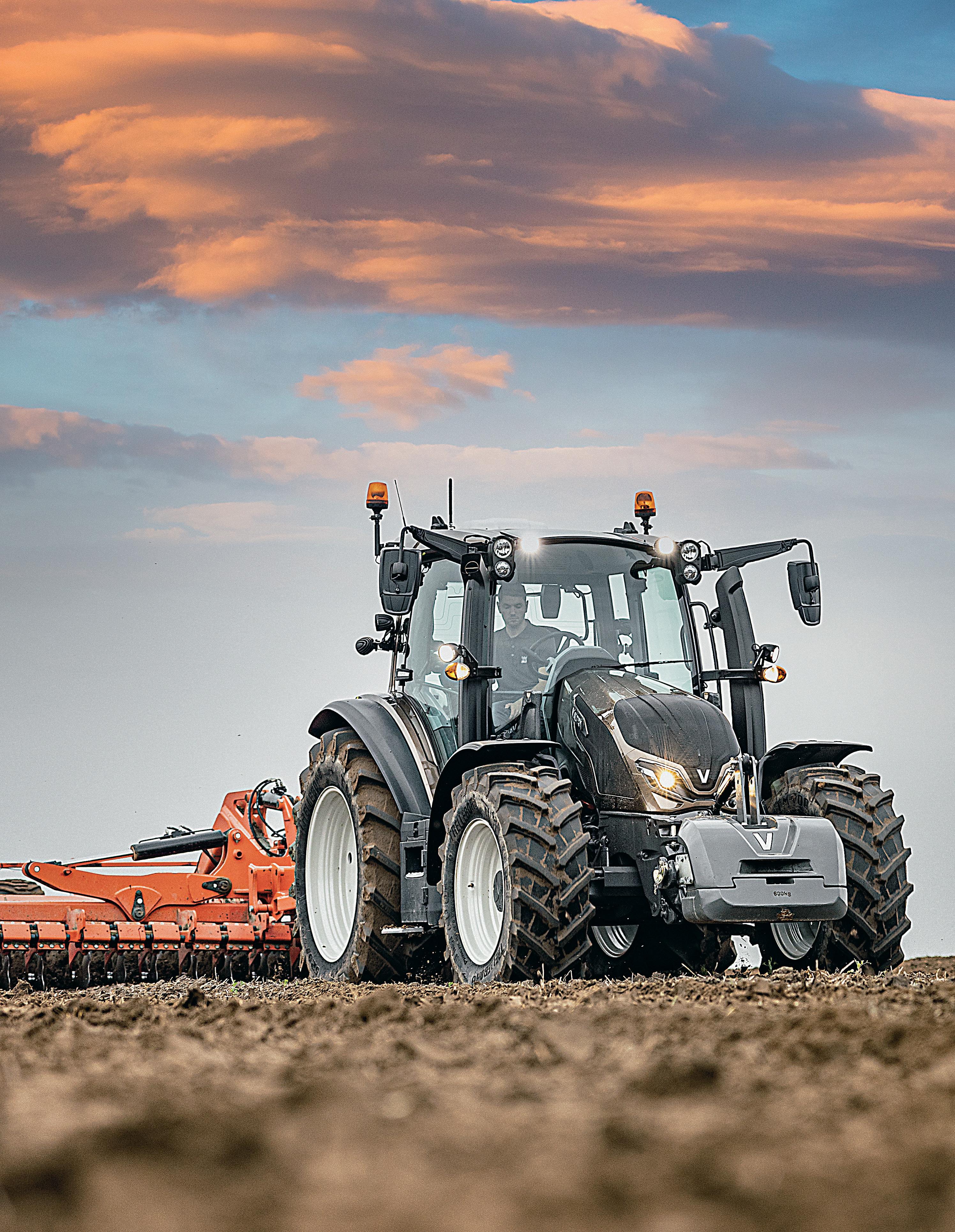
Every farm is unique, even if they’re neighbours. That’s why you need a vaccination programme that fits your farm’s unique requirements.


Every farm is unique, even if they’re neighbours. That’s why you need a vaccination programme that fits your farm’s unique requirements.
The only specialised 5-in-1 pre-lamb vaccine that provides up to 4 months protection for lambs.

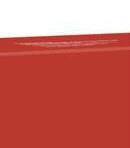

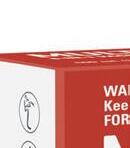

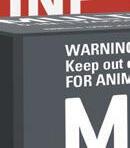






New Zealand’s leading 5-in-1 vaccine range with multiple options for supplementation1.


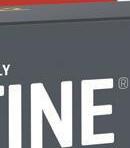
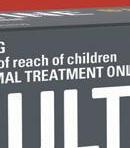
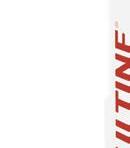




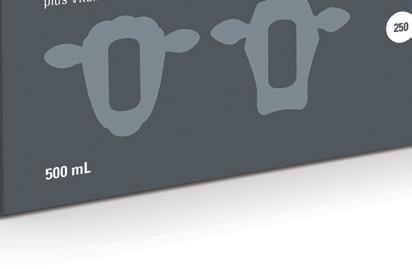
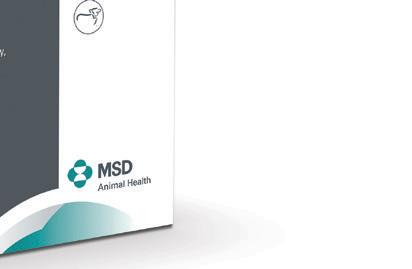



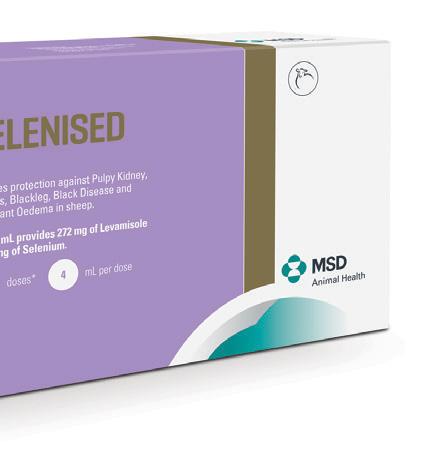
Every sheep farm is unique, so when it comes to vaccination, you need a programme that fi ts your way of getting things done.
NILVAX is the only pre-lamb vaccine that provides up to 4 months protection for lambs. This gives you the flexibility to vaccinate your ewes earlier to avoid sleepy sickness*, or vaccinate your lambs later due to the longer duration of protection provided via their mother’s colostrum.

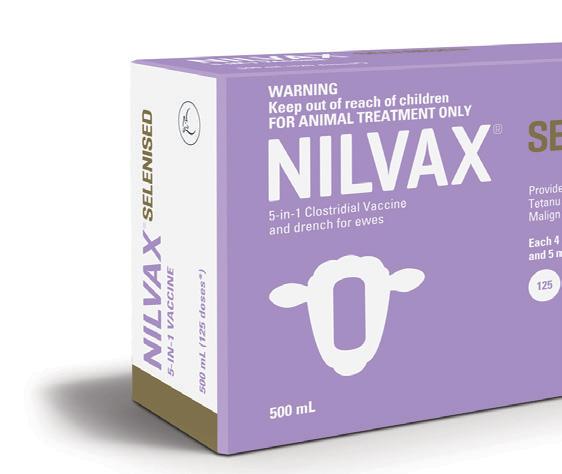
MULTINE gives you multiple options for supplementation of Vitamin B12 or selenium in combination with New Zealand farmers favourite 5-in-1. This means you can get everything you need and nothing you don’t.

NILVAX and MULTINE. Two tried and proven pre-lamb vaccine options made right here in New Zealand, that give you flexibility and effectiveness for your farm.
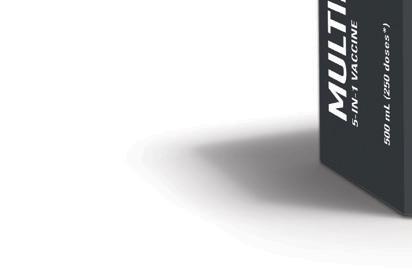
Join with the team at Country-Wide to take New Zealand’s premier farming magazine up a notch.
Just like you do in your own farming businesses, we need to adapt to maintain our premium position as your trusted provider of farming information to help you learn, grow and excel.
From this issue, we’re changing the frequency of Country-Wide to two-monthly and boosting the number of pages to about 120 an issue so we can deliver more of what you want in your favourite magazine.
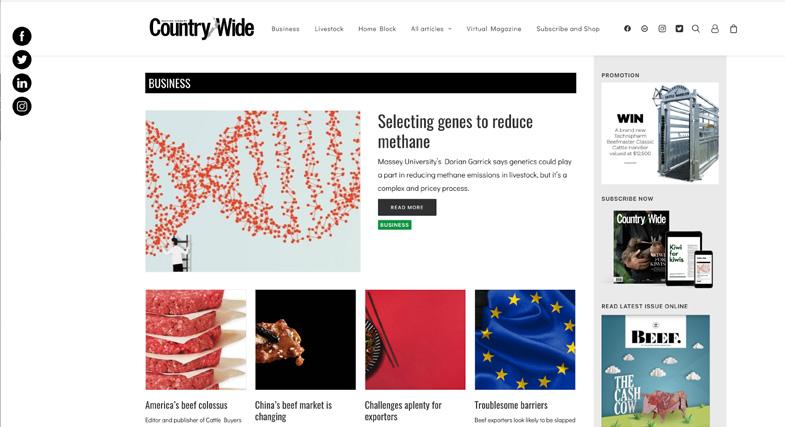
You will continue to see the type of content CountryWide is renowned for – on-farm excellence, cuttingedge research, coverage of new technologies and stories about the people who work on farms and agribusinesses around the country.
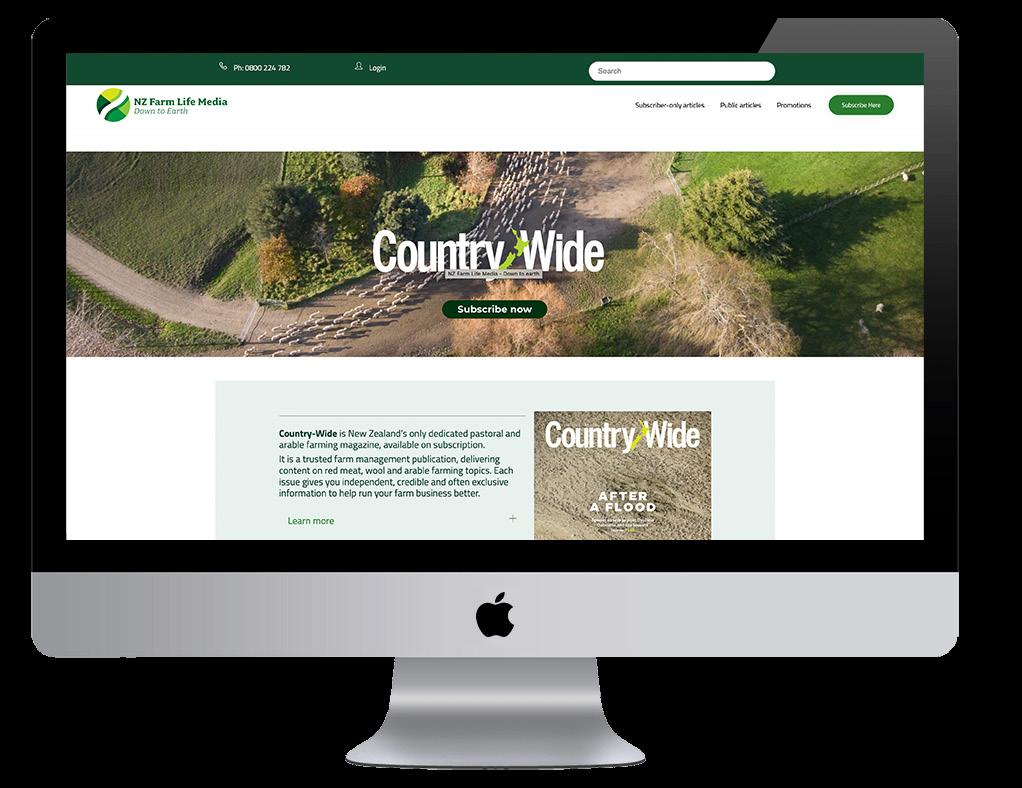
To complement this, we’re adding more in-depth coverage of the key issues impacting farming families and businesses. We’ll also be looking at what’s happening further down the value chain so you can get a better feel for the future and how it impacts the farmgate price for your meat, wool and crops.
0800 224 782

Six issues of the Country-Wide each year, plus our regular special Beef and Sheep publications. Regular content delivered through our email and social media channels, so you’re always up to date.
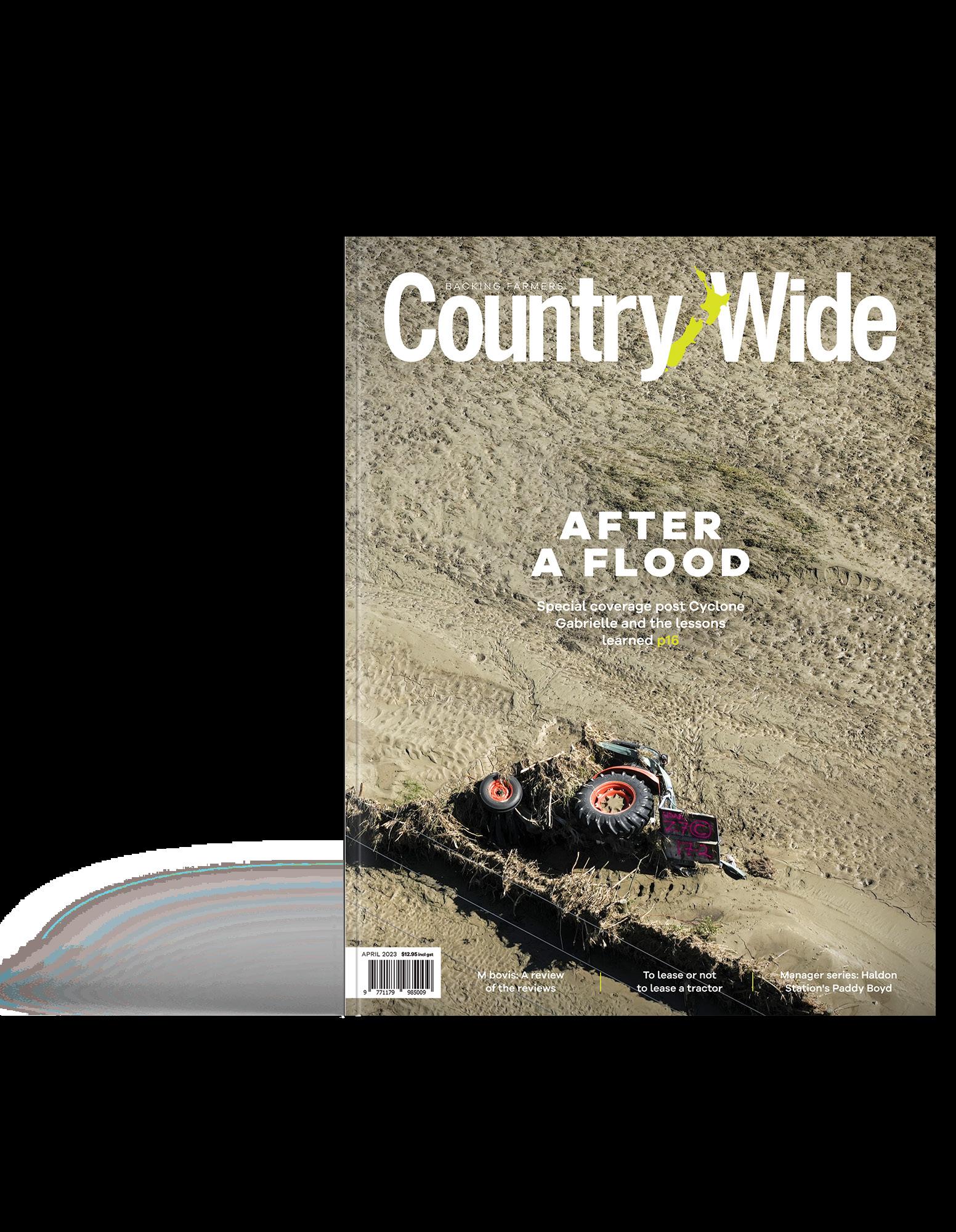

Call our subscriptions freephone on 0800 224 782 Visit country-wide.co.nz/shop and subscribe using your credit card. Farmlands or Ruralco cards are also accepted.
Or email subs@nzfarmlife.co.nz and one of our subscription team members will respond to help you through the subscription process.
12 months – $129
24 months – $252
3-* and 6-month subscription terms are available, visit our website for details.
*credit card payment only
subs@nzfarmlife.co.nz • www.country-wide.co.nz

Incomes are not matching rising costs as economic conditions deteriorate for businesses and citizens.
Companies and organisations that have been so focused on conforming to identity politics are now waking up to economic reality. They are focusing on costs and the true customer.
Auckland City Council is over staffed and Mayor Wayne Brown was elected to do a job. To help fill a $336 million budget hole, 500 jobs have to go. Will other councils, organisations and companies follow to balance their books?
The Government should be following Auckland’s lead, but won’t. If National and Act become the government after October’s election there is likely to be carnage in government departments and agencies’ back offices. Communication and middle managers should be nervous.
As inflation rises and incomes are static or fall, costs can’t easily be passed on, unless you have a monopoly.
Country-Wide’s publisher NZ Farm Life Media has had some tough decisions to make.
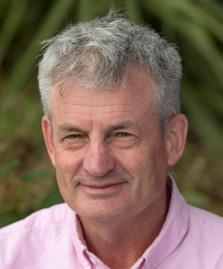
Most of its costs have gone up, but the worst has been NZ Post. In the past seven years magazine postage costs have doubled and now NZ Post will hike prices another 30% in July.
A campaign run by community networks and businesses is underway to keep New Zealand’s postal service open to all, especially those in rural areas. The campaign argues that the Deed of Understanding between NZ Post and the Government has been breached. All New Zealanders should have access to using post, but the price has now become a barrier.
Rather than raise the subscription price, NZ Farm Life made the decision to add value, not cost. Country-Wide has moved to a bi-monthly frequency, but we’ve added more pages. Our
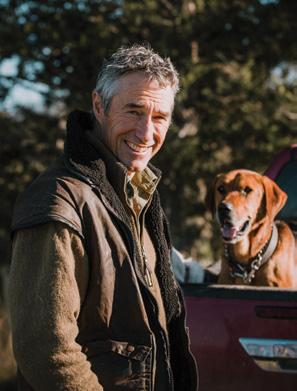
writers have more time to dig deeper into issues and produce greater in-depth stories.
It’s about working with what we can control.
Farmers are handling costs by cutting back on fertiliser, shearing, etc, and being more strategic. They are using tools such as genomics or better management practices to add value, not just cost.
Adding new technologies doesn’t always end well if the cost is not supported by proven benefits. For example, buying highly fertile rams but not having the feed or management skills to profit from them.
The Government gave the Australian company Bluescope $140 million for an electric furnace at its Glenbrook steel mill in Auckland. By not burning coal it is said the plant will reduce NZ carbon emissions by 1%. Bluescope is reported to be about to build a furnace in Australia that will burn coal for 20 years.
Based on the warming effect, NZ farmers have reduced methane emission by 30% since 1990 without any subsidy.
Paying farmers to reduce emissions further rather than taxing them would be better bang for the buck.
terry.brosnahan@nzfarmlife.co.nz
Ph: 03 471 5272
CONTENTS
STATION BRED FAST FINISHED
Otairi station is a sheep and beef operation spanning three sites, which keeps manager Sam Duncan busy.
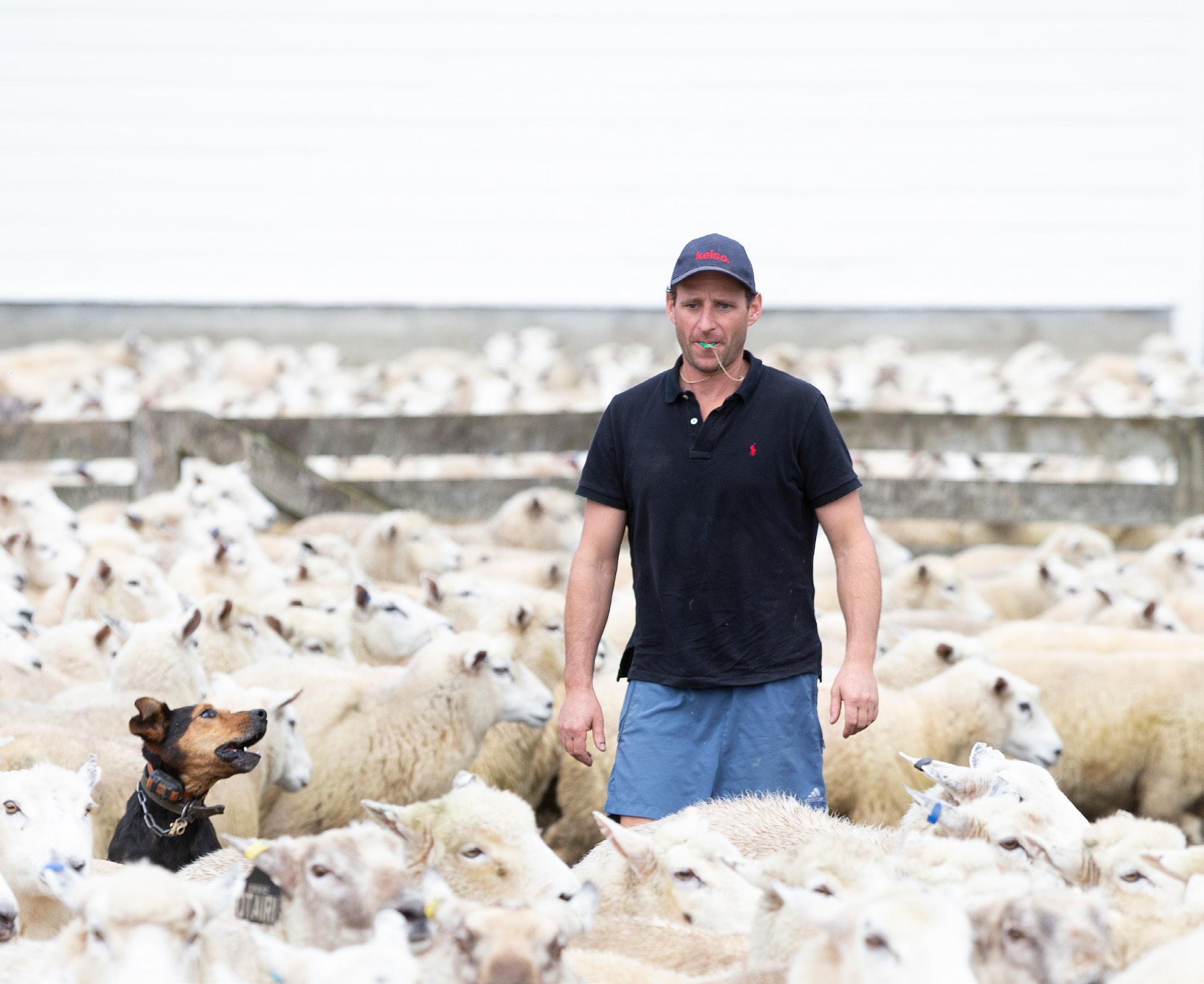
SERIES: M BOVIS
16 More questions than answers
BUSINESS
22 Look for hidden kilos and dollars
24 Measuring inflation is no easy task
27 Tim and Binds White have more in the tank
28 Jacqueline Rowarth asks: where are all the leaders?
30 Emissions: A bit of Irish biffo
32 Composite sheep advantage is not huge
ONFARM PROFILES
36 Fast-finished on Otairi
44 Crunching the numbers is second nature at Upperwood
56 West Otago’s ‘brilliant’ sheep
ANIMAL HEALTH
62 Ken Geenty: Beware subclinical FE
64 Vet Trevor Cook: The value of science
GENETICS
66 Genomic tools speed genetic gain
74 Bull sires for dairy leave their mark
SYSTEMS
82 Growth potential for Red Wagyu
90 Techno-grazing making good sense
98 Water scheme makes money flow
CROPPING
104 Fertiliser prices - Doug Edmeades asks: what to do?
108 How to achieve top maize yields
SOCIAL
114 On the blades: A fair shear
118 Loosening the choke-hold on worry
120 Rural/urban divide exaggerated
REGULARS
9 BOUNDARIES
10 HOME BLOCK
15 AUNT THISTLEDOWN
122 FARMING IN FOCUS
Published by NZ Farm Life Media PO Box 218, Feilding 4740 Toll free 0800 224 782 www.country-wide.co.nz
Editor Terry Brosnahan 03 471 5272 | 027 249 0200 terry.brosnahan@nzfarmlife.co.nz

Publisher Tony Leggett 06 280 3162 | 0274 746 093 tony.leggett@nzfarmlife.co.nz
Sub editors Andy Maciver 06 280 3166 andy.maciver@nzfarmlife.co.nz

Alison Robertson
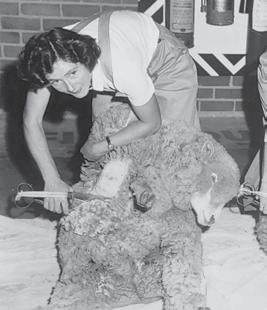
Designer Emily Rees 06 280 3167 emily.rees@nzfarmlife.co.nz
Production
Jo Hannam 06 280 3168
Writers
Anne Hardie 03 540 3635
Sandra Taylor 021 151 8685
James Hoban 027 251 1986
Jo Cuttance 03 976 5599
Joanna Grigg 027 275 4031
Glenys Christian 027 434 7803
Annabelle Latz 027 808 6469
Louise Savage 027 260 2750
Sarah Horrocks 027 555 7941
Partnership Managers


Janine Aish | Auckland, Waikato, BOP 027 890 0015 janine.aish@nzfarmlife.co.nz
Angus Kebbell | South Island, Lower North Island, Livestock 022 052 3268 angus.kebbell@nzfarmlife.co.nz
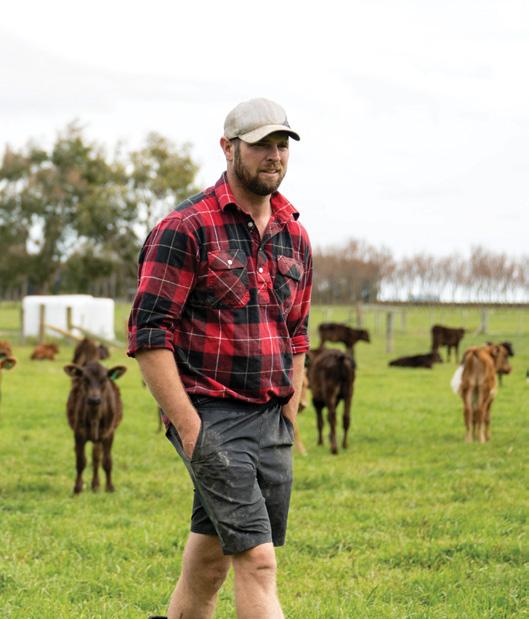
Tony Leggett | International 027 474 6093 tony.leggett@nzfarmlife.co.nz
Subscriptions nzfarmlife.co.nz/shop 0800 224 782 subs@nzfarmlife.co.nz
Printed by Blue Star, Petone
ISSN 1179-9854 (Print) ISSN 2253-2307 (Online)
Working dogs need powerful nutrition to help maintain vitality, energy and overall good health. Give them the fuel they need to do the job you need.
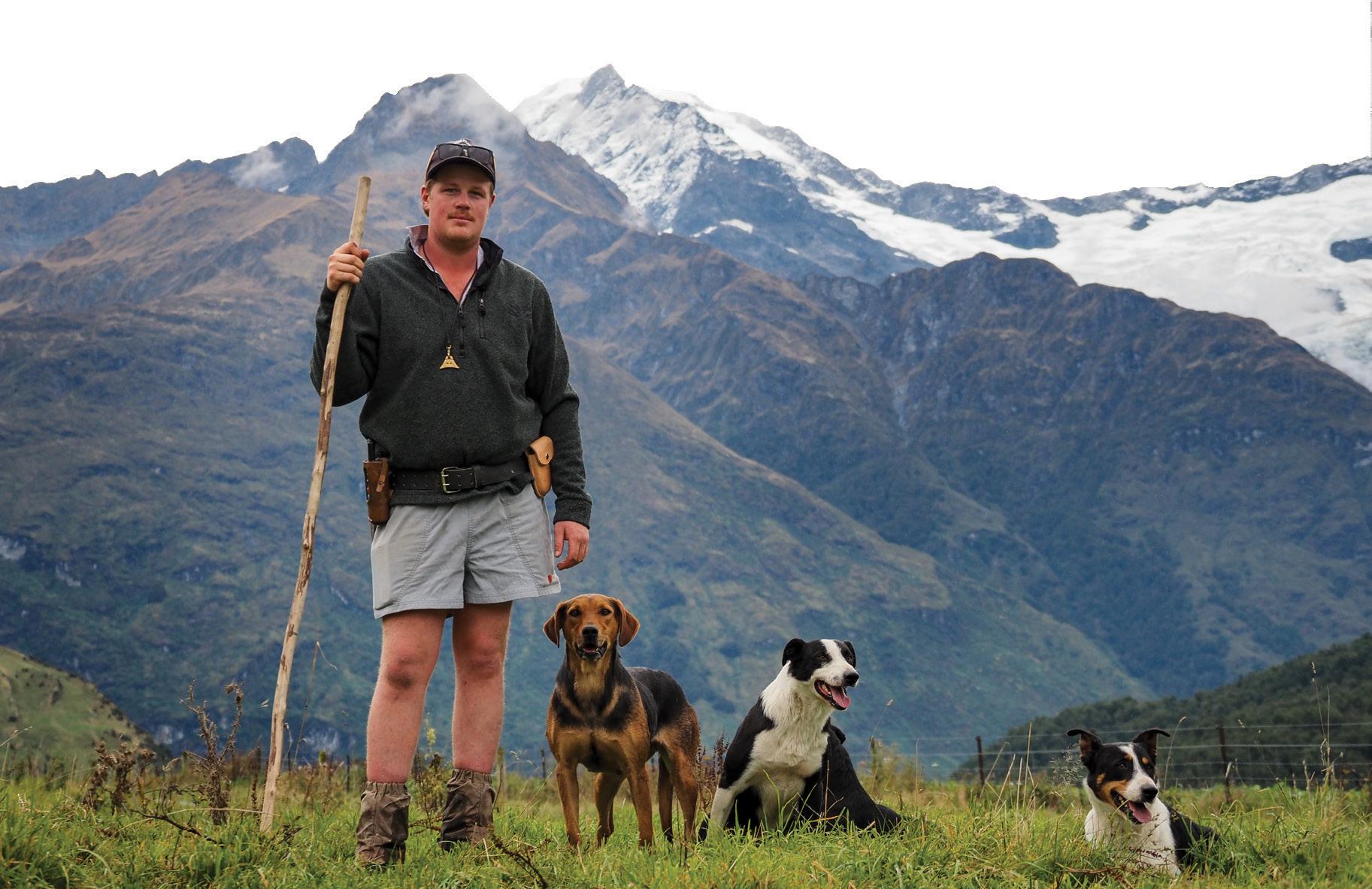
Speak to your vet clinic about ROYAL CANIN® Energy 4800

A FLATLAND AREA of Cumbrian countryside in England’s Lakes District has come on the market. It’s the largest single ring-fenced block of productive farmland the land agent has brought to the market for many years.

It’s only 116 hectares but it’s causing great excitement. While the agency mentions agriculture, the potential for solar generation and storage is the lead marketing push. For $NZ3.7 million you get some gorgeous dry-stone walls.
A study into farm sizes by the New University of Colorado Boulder has shown that globally, farm sizes are getting bigger. Small farms are being swallowed up. The researchers predict the number of farms globally will probably decline from the current 616 million in 2020 to 272 million by 2100. The average farm size is likely to double.
Smaller farms typically have more biodiversity and crop diversity. And while the world’s smallest farms might only take up 25% of the world’s agricultural land, they harvest one-third of the world’s food.
DID YOU KNOW?
The phrase ‘Daylight Robbery’ has been around for hundreds of years but its origin is far removed from the meaning of the phrase today.
The phrase came to prominence in the 1690s, when King William III was in dire need of money. He and his advisers devised the ‘Window Tax’, whereby houses with more windows would pay a greater amount of money. Because of this, people would board up their windows to avoid paying the tax. Some chose to build houses with fewer windows. This of course meant that there would be less daylight coming into their houses. Hence the phrase, ‘Daylight Robbery’.
Some of these buildings still exist in parts of England.
A young American man takes a trip out West and comes across a Native American village. He decides to stop and look around.
One of the Native women, seeing that he’s not from around there, tells the man he should visit the Chief, who she says has the longest and best memory in the world.
Intrigued, the man visits the Chief and asks: “I hear you have the

greatest memory in the world.” The Chief answers “I do. I can remember every single detail of my entire life.”
The man figures he should test this, and asks the Chief “What did you have for breakfast on April 27, 1959?”

After stopping to think for a second, the chief answers “two eggs”.
The young man isn’t convinced
so decides to carry on, he says goodbye to the Chief and leaves the village.
Twenty years later, the man takes another trip out West and visits the same village. He’s amazed when he notices the Chief, still alive after all these years. The young man stops to say hello, raises his hand and says, “How” and the Chief replies “fried”.
Jane Smith’s pleased there’s been a good autumn on her farm, but worries this year’s election might be a horror show.

to stand up for grassroots farmers and not be Wellingtonised in their approach. Post Beef + Lamb NZ’s AGM there appears to be a willingness to bring back the “by farmers, for farmers” mantra, and to scrutinise the methane myth and associated threat to one million stock units a year.
IN THE U.S, HALLOWEEN is the scariest night of the year. In New Zealand it’s election night. The election-year cup is overflowing with frothy promises, particularly for those who believe they have been marginalised, colonised or blamed for something that they actually did. Accountability has long left the building. Socialists are in a fiscal fantasy land, ignoring all signs of imminent recession while the smell of Crown money exudes out of the Wellington kremlin. Radicalists in cowboy hats do whatever the hell they like while a cacophony of hypocrisy from screeching, green feminists echoes through the corridors of misguided power.

North Otago has given us an unusually good autumn, which we feel guilty about when so many regions in the North Island are struggling to even get their fences reinstated. We have our Newhaven Perendale Stud 50th anniversary event shortly and our annual Fossil Creek Angus bull sale in mid-June. Blair looks forward to seeing each bloodline coming to fruition, while I look forward to a captive audience to talk politics with.
It’s been a challenging two years of asking agricultural representatives
A surprise came in May when the government inquiry into East Coast forestry ‘slash and run’ was completed in less than eight weeks. I’m hoping Mr Parker will finally realise that any regulation in isolation doesn’t work and communities should be able to take a “whole catchment” approach to solutions. I’m yet to see a resource consent do anything useful for the environment. All sectors should have an equal playing field, not a free pass for some and suffocation through regulation for others.
I’ve noticed the myriad of fancy primary industry conferences this year where righteous speakers with fancy job titles tell farmers what they are doing wrong. Ironically with a “special rate of only $900” to attend, there will be no real farmers in the audience anyway. I would rather spend the day and $900 at the dentist than listen to another self-proclaimed expert telling the world how NZ farmers “could” be good one day.
I’m concerned how quiet the Three Waters debacle has gone, considering that this is step one in the great “reset”. Back in 2016, the Ministry for the Environment valued freshwater at $35 billion a year. Clipping this ticket will provide already wealthy iwi with a perpetual income stream of immense proportions every time we turn on the tap.
Speaking of co-governance, the Smith children are well versed in the fact that I run a dictatorship not a democracy and often state “money doesn’t grow on trees”. This was answered back recently
by 11-year-old George who said, “It does actually, look at carbon farmers.”
We pulled into a small provincial town car park to see a massive diesel generator powering six electric cars. I proceeded to ask each car owner if they had considered the irony. Three ignored me and one said, “Well I never actually noticed it was a diesel generator. That does seem a bit funny.”
I would rather spend the day and $900 at the dentist than listen to another selfproclaimed expert telling the world how NZ farmers “could” be good one day.
It’s been frustrating to see teachers striking over the past few months yet again. I question the strength of a union that is unable to negotiate a suitable deal in an election year under a Labour government. Blair thought he might go on strike for better working conditions but he was unable to find a contract, a union or even an HR department. However, all is not lost for middleaged white guys – Prince Charles managed to get a promotion at age 74, so Blair still has a few decades of his apprenticeship to go.

ALL GOOD THINGS MUST come to an end and, sadly, the Chambo’s time in West Otago is up. By the time you read this, we will have uprooted our possessions and memories and moved to the metropolis of Gore.



Sharemilking is never straightforward, and the wind of change is always just around the corner. There is not much I can say, other than this was not the future we had been building towards. A surprise farm sale that didn’t fall our way left us reassessing our future.
My father, being a crusty Southland sheep farmer, was by default no supporter of the dairy industry. The invasion from the north in the 1990s was akin to a modern-day gold rush. Their arguably more progressive farming practices were a shot in the arm for a conservative Southland economy. My foray into the industry, leaving behind a good trade, was met with the same negativity by my father, with his vision of my impending failure a constant reminder. Dad was, at times, a glass half-empty type of fellow.
It is not all bad news. Our
complete herd has been sold to good people just up the road; lock, (young) stock and barrel. The girls will still get to enjoy the steadfast vista that is the Blue Mountains. And more good news, I get to award myself a “gap year”. There will be, of course, a transition period – the type of transition that my tackle will survive, however. During my gap year, I intend to smell more roses. I have an opportunity that many never get – a chance to stop and think about what this next phase of my life might look like.
Mrs Chamberlain is looking forward to no more unexpected phone calls at dawn, due to another relief milker’s sudden bout of “food poisoning”, or flat tyre and/or battery. Nor will she miss their inability to commit to a Sunday morning milking as the cows’ daily routine interferes with their social calendar.
mirrors that of a six-month-old baby with colic. The dog and I will both benefit from more exercise and, as I expand my culinary repertoire beyond the humble roast, Mrs Chamberlain will be much enamored.
Will we return to dairying? Perhaps. Time will tell.
My mini break is also well timed to proffer my observant, if somewhat cynical, commentary as politicians tart themselves to the voting public. I worry that PM Chippie might buy his way back into office by printing more Monopoly play money while his government operating under a jury rig slowly drowns in a stormy sea of stupidity. Perhaps some of our politicians should take a leaf out of this humble sharemilker’s book, and they too should take a gap year, to help repair the gap between their ears. This would be incredibly beneficial and productive for our country, only returning once that cranial void has been filled.
First item on the gap year agenda – sleep. My sleep pattern
We all know that hindsight is a perfect science. Rural folk often have their backs against the wall which can act as their driver – be it finance, fear of failure (real or perceived), and more lately, compliance. That means we find ourselves continuously surfing the crest of the productivity wave to make ends meet. Farm ownership has been a goal for so long that once it appeared within reach; an honest appraisal revealed that the costs were far more than just financial. The cost to me over my years of dairying was time. Time away from family, working long hours or being so tired once home that I was mentally checked out. Special moments lost and missed. With hindsight, I was so focused on being the best farmer I could, when perhaps my focus should have been on trying to be the best father I could. Enough said.
Mark Chamberlain finds himself looking forward to a gap year he wasn’t expecting.
Regrets – I have a few
A surprise farm sale that didn’t fall our way left us reassessing our future.
Gore
May and the past few weeks have been mild, and we have grown a lot of grass, but today it’s very cold. This season was a repeat of the last two: a dry summer and grass growth well below average. We no longer know what an average year is.
All our great plans for weights we would sell lambs at and have 80% of the heifers at killable weights by May 1 were no longer achievable, so we just had to make it up week by week, trying to make the right decisions early enough so that only this season’s income is affected. We farm for damp summers and are quite highly stocked, so our farming system needs major adjustments when it is dry.
It has been one of those seasons that in hindsight management mistakes have been made; some crops not sown early enough, ewes
not condition scored as early as they could have been and EID tags not ordered on time, so lambs couldn’t be sold into a premium market when they were ready. But we have been farming long enough to know we don’t get it all right all of the time, and every year there is room for improvement.
After writing in January about my affectionate wild kitten that I tamed last winter, I now have to inform you he had a very untimely death. I was devastated.
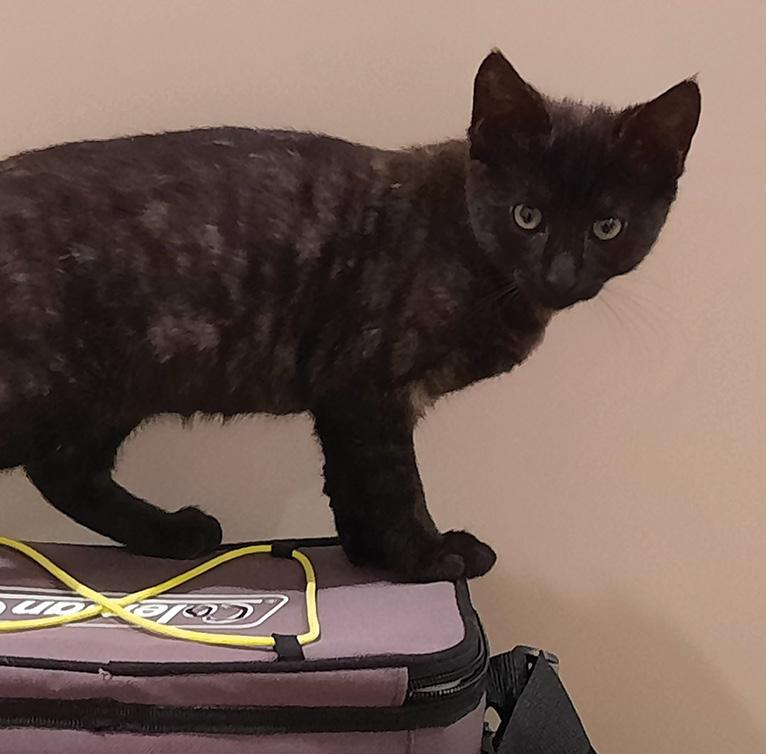
We own more than 1000 acres behind our house, but he chose to walk 200 metres in the other direction and get killed on the road. I missed him so much that I went to the vets within a few days and adopted another kitten. Angus is a black tabby, and we are back to kitten training again. We have scratched hands and legs from sharp little claws that chase fingers and jump up on you when you least expect it.
Both Paul and I have reached ages ending in zero this year and have achieved a number of our farming goals, so where to from here? We had more than one farming couple visit this summer who have retired from farming and one of the many discussions we
had was about what we will do in the future. We have no children so there will be no family succession. Neither of us wants to lease the farm because our capital for the next stage of life is in the farm, so it will be sold one day. But where will we live, what will we do every day to fill our time?
We have been talking about these things for a few years now, and have even looked at some houses, but it is a big step to take. I would like to keep some of my pet animals and Paul says he would like to do more horse riding, so we want a few acres, but not too much or it will turn into a life-sentence block, not lifestyle, and we will still be tied to the land.
We don’t feel ready to live close to neighbours and have to shut curtains for privacy, and we don’t want to be woken by that annoying neighbour who wants to mow the lawn early on a Sunday morning. It would be good to live close to town so we can take home takeaways and not have to reheat them because we’re so far from the shop.
We both want to do some overseas travel before our bodies are too worn out to be able to do those walks in the Alps, we want to sleep in tents in Tanzania while looking for Africa’s Big 5 and have any other adventures that might come along.
Unless we have some major unfortunate event, we will be farming for a while yet and have time to make plans so that we optimise our exit from farming. Winter is fast approaching, and as usual there will be plenty to do on the farm while we plan for the future. It is never too early to think about future plans.

As Paul and Suzie Corboy hit ages ending with a zero, they’re thinking about what to do next in life’s big adventure.
Weather, cats, and the future
“...where will we live, what will we do every day to fill our time?”Meet Angus.
us around like dogs and have occasionally been welcomed into the living room to clean up cluster flies. Maybe it’s the same on most farms, as we all tend to be animal lovers. Animals certainly keep the place interesting.
I’m dreading the next six months leading up to the election. The winner of this election will need to make some hard and unpopular decisions. Those decisions will likely be expensive for the entire country.

IT’S EARLY MAY IN THE Wairarapa and lots of people are talking about duck shooting. I’m not much of a duck shooter myself. We have a Labrador called Mac who is mad keen on carrying stuff and would probably be a decent gun dog.
Pity I’m not very good at training dogs. But I’ve found a use for him that keeps his instincts happy and is very useful for us. He collects firewood. He’ll come out to the shed and happily bring a bit of wood into the house.

He’s not that keen on depositing it into the wood basket beside the fire at this stage, but I’ve got all winter to work on him. He’s a real “people pleaser” so is very keen to help and this just might be more productive than swimming in a dam chasing ducks.
We seem to attract weird pets in our house. The above-mentioned Labrador is one. Then there’s his mate Marty the foxy who’s a bit of a wimp, the half-blind retired huntaway Kell that roams the garden, and the world’s dumbest cat “Flea-taxi”. The three chooks that eat dog sausage follow
I hate to say it, but neither main party is going to help the ag sector. Just imagine if agriculture was a top priority for the government. Regional roads without potholes, new bridges planned and delivered, compliance that was straightforward and well thought out, and where you’d only have to fill out forms once. Dreams are free.

Having said that, I’m not one of those people who wants to put their hand up for public office. Good luck to all the rural-based candidates; I admire your desire to put your head above the parapet. Leadership is a minefield these days.
nearly saturated already. Might be a long winter.
Unfortunately, we’ve still got about 75 hectares of harvesting to go – squash pumpkin, maize grain, maize seed and some red clover still has to come in over the next month. The timing isn’t too late just yet, but the soil and weather conditions won’t make it straightforward.
Spare a thought for some of the arable farmers around the North Island this summer. Barley and pea crops have been a disaster and some northern maize crops have been hammered with disease. A nice warm dry summer is certainly on the wish list for next year.
Like a lot of the North Island, the Wairarapa has had a very wet summer. Parts of Eastern Wairarapa were hammered by the two cyclones and, like further north, are amid a major clean up. The way New Zealanders from all walks of life mobilised to help those affected was inspirational.
We had some flooding, which ruined crops, but largely the Ponatahi valley seemed to miss the worst of the weather, for which we are very grateful. We now have grass halfway up the quad bike tyres in early May and the soil is
At least the finishing cattle and lambs have done well. It’s unusual for us to be able to kill 18-month bulls at north of 550kg LW but we sent the first unit load out in early May. Lambs aren’t setting records for yields, but they’re still acceptable. We’ll scan the ewes in early June and see how our management has been over the summer. The regular heavy rains seem to have kept them fat and the facial eczema mostly under control. Let’s not talk about flystrike though.
Good luck for the winter ahead. Let’s hope the mud doesn’t get over the top of the gumboots.
Mac the Labrador is good at fetching firewood and he could make a good gun dog if Mark Guscott was a duck shooter.
“The three chooks that eat dog sausage follow us around like dogs…”Carterton
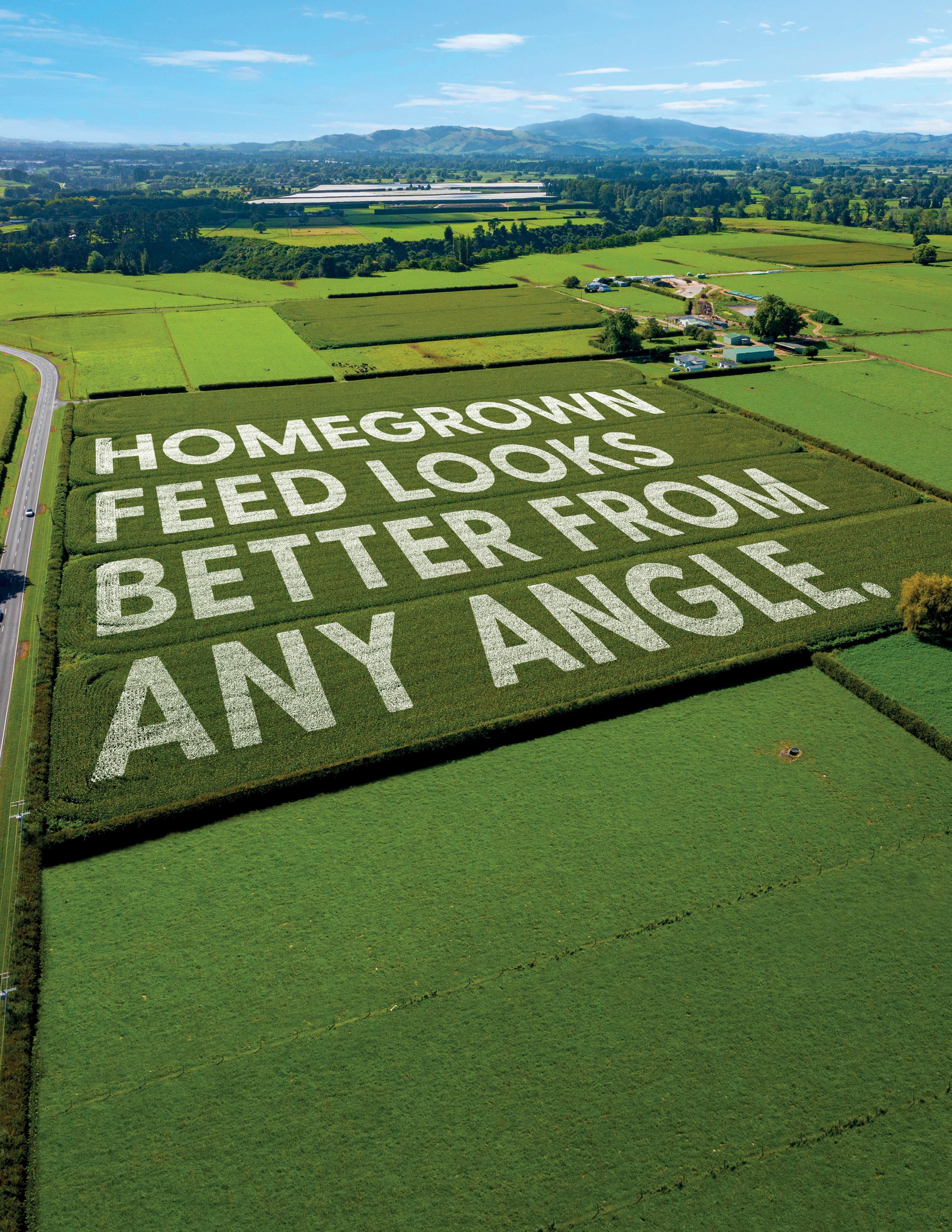
Holy hell, everything costs so much these days. Can’t hardly fart without someone sending a $1000 invoice. But still, you have to keep on keeping on, don’t you? Nothing else for it. Can you give me some pointers on how to add value onfarm without incurring extra costs?
Dear SID,
A wise person once advised me that “people go broke trying to save money”. I’m not sure how much credence to give to that, since I seem to be going broke no matter what I do. I note that top operators do splash the cash around a fair bit, but I will be damned if I know how they got it in the first place. What came first, the cash or the splash?
However, I did have a eureka moment the other day that has already saved me hours of time and many tears, for the low-low price of $20. I am happy to share it with you, but you must be warned that it is probably not the idea you are looking for. It is mainly about receiving fewer electric shocks in the crotch, which is not everyone’s priority.
The point is that I had an idea. I was able to have the idea because my head was uncharacteristically empty of chores to do and my body was not yet screaming for sleep – and out of nowhere up the damn thing popped. So that is what I recommend you do: declutter your cranium so there is room for new ideas. Adds value and doesn’t cost a thing. It might help to get off farm and mingle with other people and their ideas. I know, I know, everyone says “get off farm”. You are here to farm, but the number one piece of advice seems to be to stop doing it.
Hear me out. What do you have to do to get off farm? That’s right, you have to tidy up all the little hurdles that are “good enough” for you to struggle
through on a day-to-day basis, but “bad enough” to cause embarrassment if you had to ask anyone else to do it.

That gate that only opens three quarters and in the wrong direction.
That trough leak that has graduated to a quagmire.
Equipment that only functions when the moon is in Venus.
Maybe you could spend a little time removing the scum that builds up on the surface of life and then not even leave the farm. Just stay there and enjoy the smooth ride you were setting up for the farmsitter.
You may also want to document some of the info that lives in your head, so that you are not the only person on planet Earth who knows where your farm’s valves and switches are and what the dog is supposed to eat. That might boost some processing speed in the old brain box. Basically what I am suggesting is that you spend a bit of time greasing the
wheels so that it is quiet enough to hear yourself think.
But let me tell you about my idea, so you can judge if the payoff is even worth it. It was a smart switch for the electric-fence energiser. I can now toggle the electric fence on and off from wherever I please with my phone. Many of you with fancypants energisers can already do that, but we couldn’t because we are a family of cheap thistles.
The embarrassing thing is we had already bought a four-pack ($80) of these Kogan smart switches so that we could put a timer on the farm water pump and the child’s electric blanket… and then we got busy and stuck the other two in a drawer without ever considering the electric fence. While the switch costs $20, there needs to be internet at the shed for it to work.
Luckily for us I once dedicated a day’s frustration (and $600 of equipment) to beaming the home internet to the shed. If you have a teenager you may be able to trick them into doing this.
The beaming is done by a couple of Ubiquiti NanoStation doodackies which can talk to each other over many kilometres (line of sight) and you will need a couple of ethernet cables, an extra router and someone who knows what these words mean to sit through a YouTube tutorial. But it's a great starting point for smart gadgets and security cameras, and watching “what to do if your chainsaw isn’t working” videos in the shed.
Best of luck, Aunty Thistledown
Cali Thistledown lives on a farm where all the gates are tied together with baling twine and broken dreams. While she rarely knows what day it is, she has a rolodex of experts to call on to get the info you need. She’s Kiwi agriculture’s agony aunt. Contact our editor if you have a question for her, terry.brosnahan@nzfarmlife.co.nz
Kerry Dwyer writes about the frustration he and many other farmers experienced with the Ministry for Primary Industries as it struggled to deal with Mycoplasma bovis. He’s still wanting answers.
On August 28, 2017 MPI walked in our door chasing Mycoplasma bovis (M bovis). Since then we’ve dealt with our own problem, alongside a lot of other farmers affected to a greater or lesser extent by the response to the disease.
My wife Rosie and I depopulated all our cattle well before any other farms, because it was the best way to handle the animal welfare and financial brick wall that was ahead of us. We were aided in doing this by some very good people from the Ministry for Primary
Industries (MPI). At that stage no plans were functioning so we had to push to get cattle out, and MPI’s assistance was crucial in achieving that.
AsureQuality was given the hands-on tasks early in the response, and while we didn’t have much to do with their people, what dealings we did have were frustrating and time consuming.
Note that the Biosecurity Act states that compensation doesn’t have to be paid for “diseased organisms”, which was a situation faced by Foveaux Strait oyster farmers in 2016, and also by some North Island plant nurseries when myrtle rust appeared in 2017.
When the full primary industry response got into action in May 2018 it appeared the full budget to eliminate M bovis was $886 million; I now read it to be $870m. That was to be funded 68% by government and 32% by industry, i.e. Beef + Lamb and DairyNZ. Part of the deal was that affected businesses would be compensated for cattle and some costs incurred.
The big question is where did the money go? To date there have been 2870 claims and just under $240m has been paid as compensation to affected farmers. That is an average of just on $84,000 a claim, and note that the most affected farms will have put in multiple claims, largely because the time frame to get from initial to final compensation may be as long as three years.
It appears that all the $870m or $886m has been spent. This means $630m was spent on the response effort, being all the MPI and AsureQuality people and time, along with whatever else. I commented to Minister of Agriculture Damien O’Connor at one stage that the M bovis response was creating more jobs than the government’s Provincial Growth Fund.
While there have been various reports written on the M bovis response that have dealt largely with the effects on farmers and cattle, I question the audit process and the justification of the $630m spend.
I had a couple of AsureQuality people in for coffee in late 2017 and asked one of them how long he’d been on the project. The response was that he came from the North Island for a two-week shift then had similar time at home, because it was a “very
stressful job”. Yeah right.
One farmer I dealt with had more than 100 water troughs to be cleaned, so five people arrived with a vehicle each, a smoko portacom and toilets. On their first day they cleaned five troughs and managed to break three ball-cocks. The farmer was going to watch them but decided it would be better to empty all the troughs himself, to get rid of them earlier than the possible month or more it would have taken at that rate.
MPI might be able to justify spending $630m in their world of bureaucracy but we farmers saw a huge waste.
Transparency and bureaucracy are not natural companions, and bureaucrats have a tendency to be very defensive when questioned, let alone criticised.

To get most information from MPI you have to do an Official Information Act request (OIA), which they basically have to respond to within 20 working days. My first series of OIA requests related to
the MPI response plan for M bovis, or similar. It appeared there had been no structured plan available in 2017. What was the director of MPI doing in the years prior to that? Bugger all it seems.
My second series of OIA requests related to how compensation was assessed: i.e. what were the criteria used by their people to assess whether it should be paid or not? Again it took a series of OIA requests to get nowhere. Either they didn’t have clear assessment guidelines or wouldn’t provide them.
The third series of OIA requests I put in related to their complaints procedure. A written complaints process is basic twenty-first century governance: if you receive a complaint it outlines the process to deal with it in a fair, transparent and timely manner. MPI stuck to the pattern of asking for extensions to my OIA requests, and then basically said they didn’t have a complaints procedure. If they receive a complaint they hope you just go away when they don’t answer.
“Transparency and bureaucracy are not natural companions, and bureaucrats have a tendency to be very defensive when questioned, let alone criticised.”
My first conversation with an MPI compensation person was on August 30, 2017, who said their brief was to minimise the cost to the taxpayer. My reply was that we just wanted a fair deal. That chap did subsequently apologise to me for taking that stance, but it has been the culture we have consistently struck when dealing with compensation.
Rosie and I visited MPI compensation staff in Wellington on June 1, 2018, to push the line that as citizens, we deserved communication, consultation and choice. It fell on deaf ears, or the ears changed in the constant shuffling of MPI staff.
The MPI brand is probably rated in primary industry at the same level as the Census is with Maori, maybe worse. I have had more apologies from MPI compensation than hot dinners. We just wanted them to do their job in a fair and timely manner. The audit process to achieve a compensation payment has been thorough, which seems to be lacking with the rest of the M bovis response spend.
We had all our cattle killed by a local processor, to go into the human food chain. Subsequent to that MPI realised that small cattle had a net processing cost and were better disposed of by other methods, which they called pet food. I don’t have any opinion against that, but I still cannot stomach the mis-truth that slaughtering cattle and disposing of them in landfills can then be called “processing for pet food”.
The owners of those cattle deserved to be told the truth, not blatantly and constantly lied to.
Which raises the question about what other parts of the M bovis response have been hidden under the carpet?
I attended a few MPI-arranged meetings concerning M bovis, most of which were time that I will never get back. At one I made the point that you can roll a turd in glitter, but it is still a turd.
Mfor Primary Industries (MPI). It’s taken three months for them to consider my basic questions on the Mycoplasma bovis (M bovis) eradication programme. How much did it cost? Where did the money go? Can I have some simple statistics (age and weight) of cattle slaughtered and where they went (pet or human food)? To be clear, I never meant to make any OIA requests at all. I just asked MPI for information, but they have elected to raise an OIA on my behalf. The whole process yielded very little information. But before we get into that, let’s explore what an OIA is and how it is meant to work.
The year was 1982. If I have googled correctly, then Olivia Newton-John’s “Physical” and Survivor’s “Eye of the Tiger” were battling it out in the charts. Muldoon had swept through the land
But the NZ government still found the time to create the Official Information Act of 1982 which declared that (for the most part), official information belonged to the public and should be freely shared with kiwis willing to ask for it. This was a complete change in vibe from the preceding Official Secrets Act of 1951, which threatened to prosecute any public servants who disclosed information without specific authorisation.
The OIA allows anyone in NZ to request information from a government department unless said government department has a decent reason not to. There are about 40 good reasons to choose from, mostly focused on protecting national security, the judicial system, individuals privacy and things that would unduly influence the economy.

Your snooping is not limited to

government departments. There is also a sister law called the Local Government Official Information and Meetings Act 1987, which means you can also poke around information from community boards, state education authorities, licensing trusts, airports, councils, etc. And you are allowed to violate your own privacy (or someone else’s with their permission). So, if you are in a scab-picking mood, you can also ask the Police, Oranga Tamariki, etc, for the information that they hold on you.
Ready to flex your OIA powers? The first step is to pick your department and your question. If you are stuck for inspiration, there is a website called FYI.org.nz where people can share their OIA requests. From here you can view all OIA-able authorities and look up previous requests. Want to know how many Koru club memberships Pamu/ Landcorp hold at AirNZ? Wish to view the parking receipts of the mayor of Porirua City? Heard a rumour that MPI is investigating someone’s grandmother for smuggling mooncakes through the border? FYI.org.nz has already got the official answer. You can make your own OIA requests, if you don’t mind it being on the website for the world to see.
If you want to make a private request, the Ombudsman has a helpful “Making official information requests – a guide for requesters” document on their website (ombudsman.parliament.nz) with a helpful email template to copy. Had I known I was about to OIA anyone, I would have totally read this first. They say the key is to be as specific as possible about the information requested. They also outline the timelines. From the moment the request is made, the department receiving the request has seven working days to ask for clarification, 10 working days to transfer the request if it has been made to the wrong department, 20 working days to deliver the request or issue itself an extension. The Ombudsman is where you go to complain if you are unhappy with the OIA process…if you don’t have a national magazine to vent your spleen in.
Each icon represents $1 million spent eradicating M bovis from New Zealand

$7m Cleaning infected farms (from 2020 onwards).
$54m Onfarm costs for infected farms.
$117m Replacing slaughtered cattle.
$451m Undisclosed costs.

Ultravac vaccines protect ewes and lambs against the key clostridial diseases. Proven in the paddock, New Zealand trial work showed vaccination with Ultravac 5in1 reduced lamb deaths from docking to pre-lamb by 23%1. Concentrated into a 1mL dose, choose Ultravac vaccines, the proven performer in the paddock.
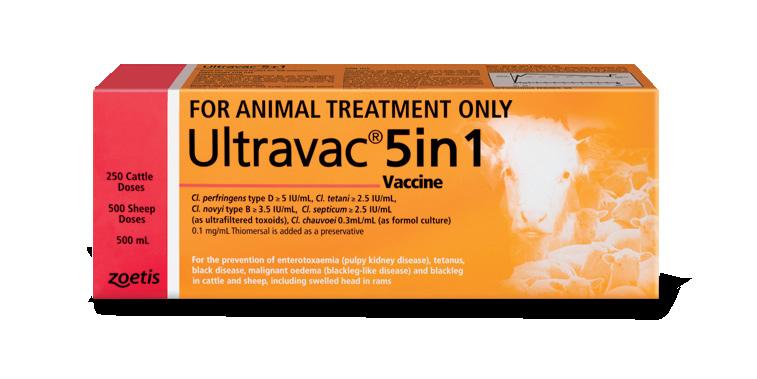
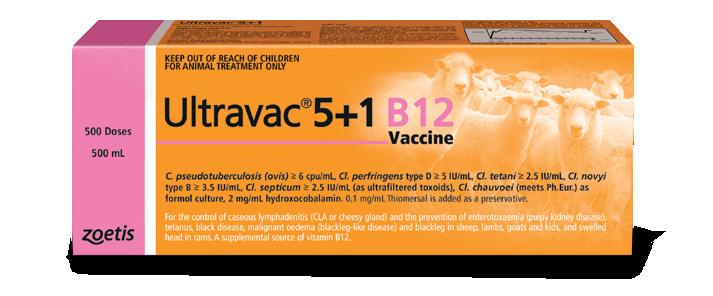
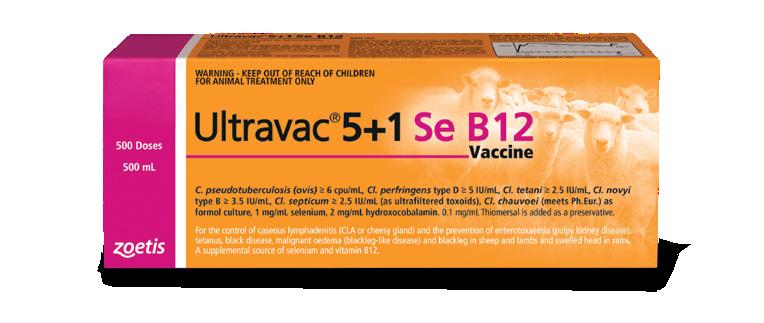
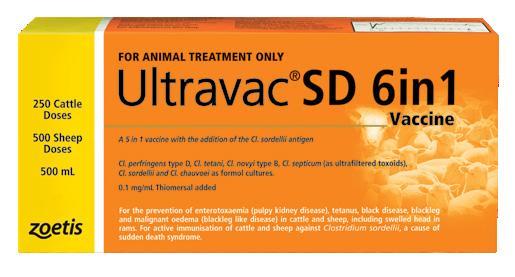


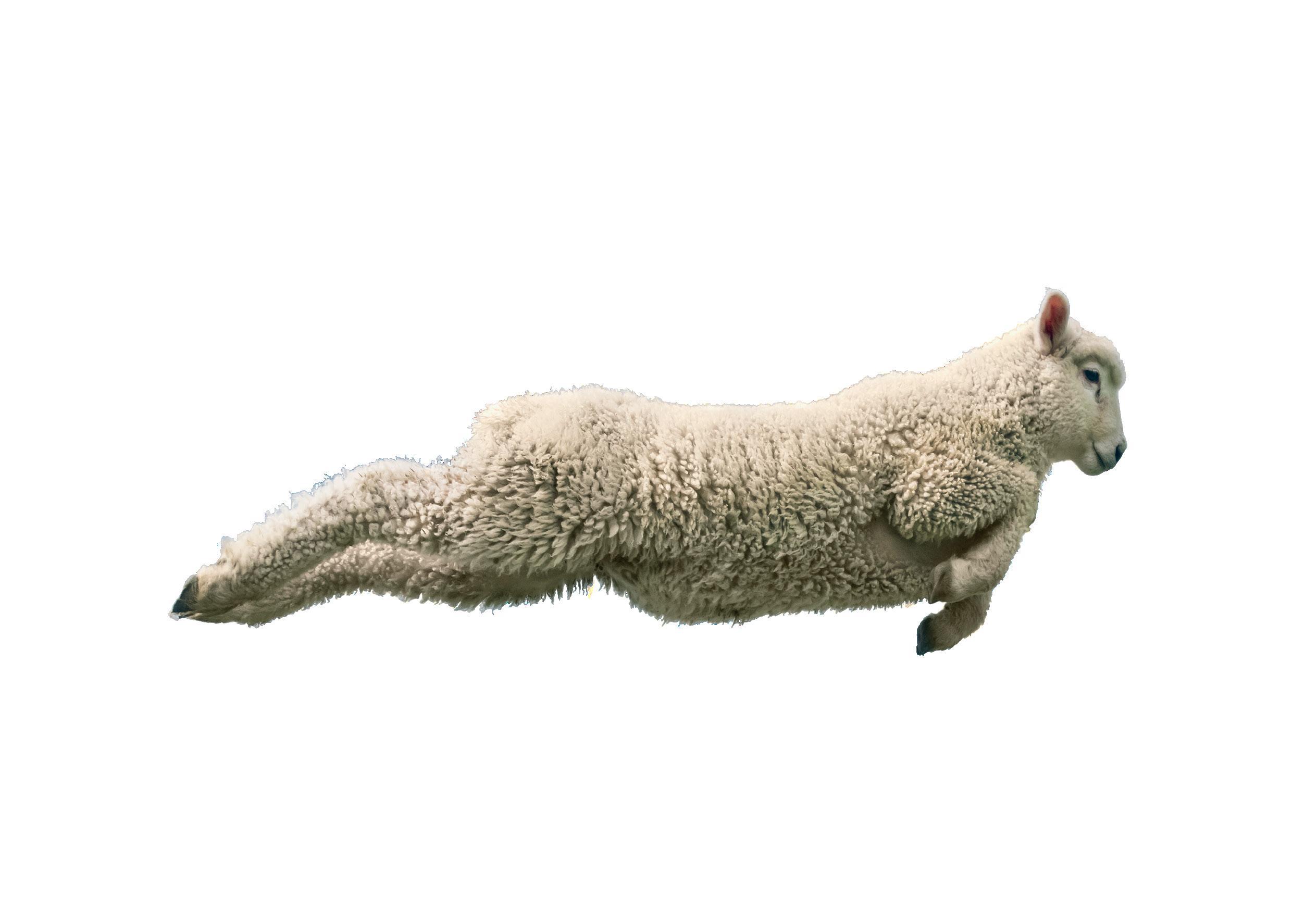
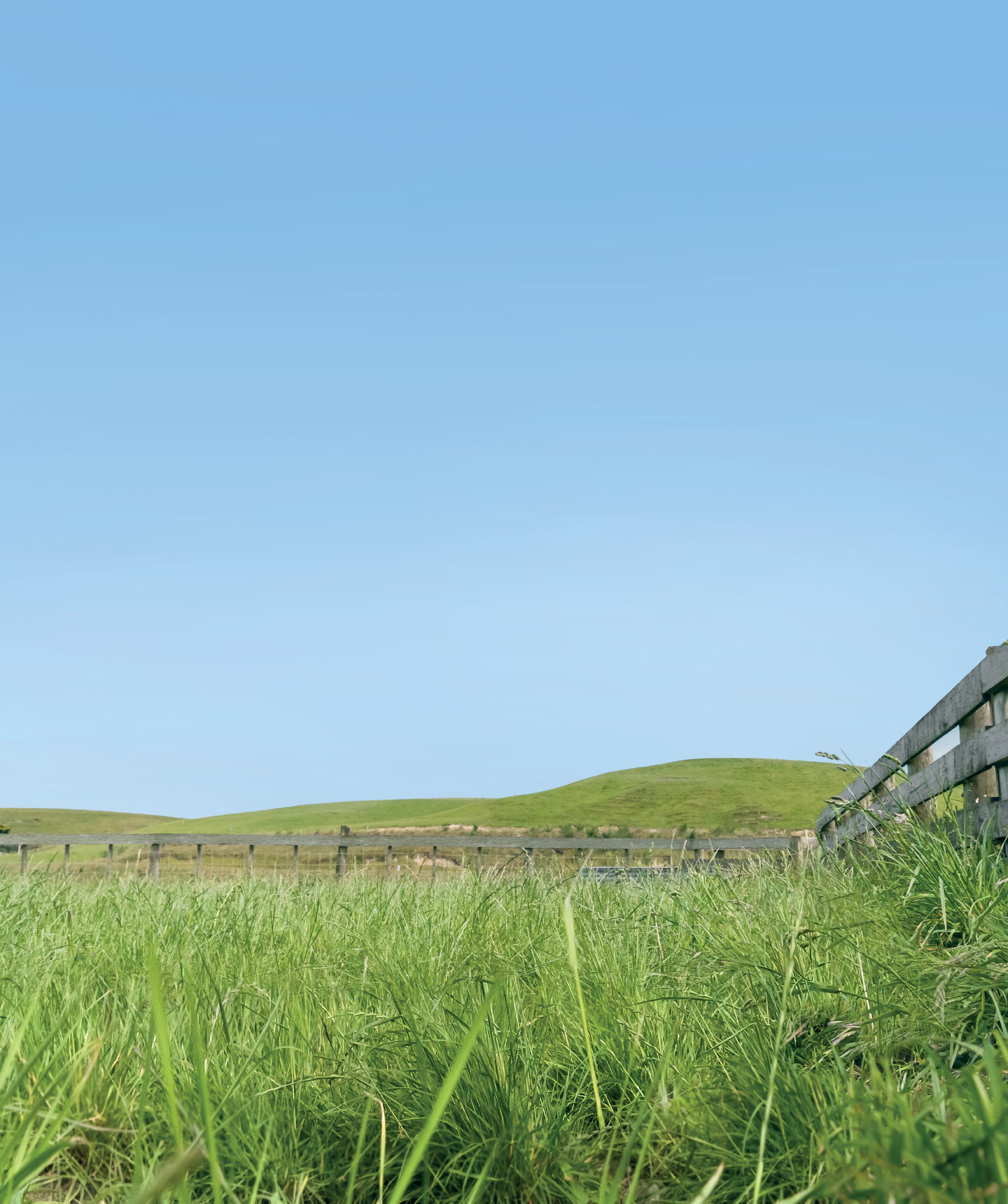
What did my OIA actually yield? We will start with the easiest one first, because MPI did actually give me some information on this. MPI states that as of February 2023, it had spent $629 million on the eradication of M bovis. Of this, $117.2m was compensation for slaughtered animals, $54m was other forms of on-farm compensation (feed costs, etc), $7m was for farm cleaning costs from 2020 onwards. Prior to this, cleaning costs were not separately recorded by their third party provider (presumably AsureQuality, whose annual reports attribute more than $30m/year to M bovis revenue during 2018 to 2020). That leaves $451m of other costs that I have no information about. I guess I should have asked about testing costs and salaries and research costs. My bad.
This might seem like an odd question to ask. Whatever the meat companies were paid, I am sure they were worth it. It’s not normal for quarantined animals to be funnelled towards human consumption, and the meat companies didn’t really want a bar of it. The extra cleaning and paperwork held things up, and they were being asked to kill undersized stock which didn’t exactly sweeten the deal. The thing is, the meat companies were happy to disclose that they had received payments for slaughtering stock, but MPI has tried on numerous occasions to tell me it didn’t happen. MPI has triggered a siblingreflex in me; I really only want to know because they don’t want me to know.
Anyway, the latest in this is that they didn’t tell me because I used the word “compensation” and paying processor fees is not, in their view, compensation. Or, in their words: “... as no compensation has been paid to meat processors, without knowing the exact content of your discussions with these companies, we assume they may be referring to higher processing fees
paid by MPI in the initial stages of the response. These fees were paid to cover additional costs incurred to dispose of infected animals safely.” Cool. But how much did you pay meat processors?
WHAT INFORMATION DOES THE PROGRAMME HOLD ON THE CATTLE SLAUGHTERED?
Apparently I am to be assured that information on the age-group and destination of infected animals was recorded by AsureQuality. But, the information is not centrally recorded and it is not reasonable to ask AsureQuality to manually search through 2856 compensation claims or 3000 RFID scan files to find the answer. Reasonable is in the eye of the beholder, but that wasn’t what I asked AsureQuality to do. I actually requested that they anonymise the scan files so I could compile the information myself. If you think I wouldn’t crunch through 3000 scan files, then you haven’t met me. That is a data scientist’s idea of a fun afternoon.
But, I think it is worth pausing to wonder why AsureQuality hasn’t recorded this data in a central location. How on earth did this information not find its way into the NAIT database?
or Progressive which does not always record weights) and deducting any meat payment received in sending the animal to the abattoir.”
OK, I understand this to a degree. They would not have the carcaseweights of every single animal. Especially not the ones that allegedly went into landfill. And I can understand that the compensation (and therefore the main focus) was based on the difference between the replacement value and the salvage value of the stock. Maybe it is not strictly necessary to record all the raw numbers that led to the compensation value. But I would have thought that one would hold on to kill sheets for auditing purposes. And if you didn’t, you can be damn sure that the major meat processors did. So why then is there not any kill information at hand?
Is it all done and dusted and I am raking over old coals? Should we just sit back and assume the money was well spent? I vote no. The OIA was designed so that Jo Public could hold authorities accountable. So I guess I fire up the email and ask them very specific questions. How many animals do you know for
Does NAIT not exist to centrally record the movements of infected animals? How on earth can nobody pull the data on where 186,000 confiscated cattle went? Or how old they were when they went there? Surely to goodness someone was tracking these animals and making sure they got to where they were supposed to be, right?
Even more curiously, AsureQuality ”were unable to find any information regarding the carcaseweights or meat values of the culled cattle”, and “Compensation is assessed for destroyed stock by taking the market value of the animal at the point of cull (based on a valuation by either PGG, Alliance
sure went to meat processors? How much money (money – money not “compensation”) was paid to meat processors for the purposes of disposing of infected stock? What was the total cost spent on testing? Staff remuneration (assuming the word “remuneration” is specific enough)? Research costs?
Yours sincerely, Nicola.
“MPI has triggered a sibling-reflex in me; I really only want to know because they don’t want me to know.”Nicola Dennis is a scientist, farmer and data wrangler.

rates combined with the huge cost of feeding. All the feedlots we saw would not accept animals unless they had been yard weaned as calves.
On return to NZ, yard weaning was adopted by many of the group and it is now a well-established practice by many farmers to build a positive relationship between young cattle and humans.
To say our beef farming world is under some pressure at present would be the understatement of the century.
Our beef market lacks enthusiasm and New Zealand farming has an invasion of high interest rates and production costs, and now the odd cyclone thrown in just to keep us all standing on our absolute tippy toes.
It is important to not only survive the ride, but land squarely on your feet and learn from every sniff of the experience.
Only from learning will we be able to build more resilient beef farming systems and farming policies.
I think it was Pita Alexander who said, “No, money is not the most important thing in the world, but it comes a close second to oxygen.”
Resilience can mean earning lots of money from hot policies such as bull beef in the good times so you have a strong cash position when tough times call.
We must remember that our main job with hill country farming is to cost effectively turn grass into as much saleable beef as is possible.
So where are some of the opportunities and where is some of slippage in our beef systems?
Are high nitrogen prices trying to tell us a lesson? We need to continue to try to maximise the amount of clover in our pastures to drive the amount of natural nitrogen that is fixed.
Creating and maintaining low-cost healthy pastures are key drivers going into or out of troubled times.
Are high trucking costs trying to teach us all a lesson?
Shifting young surplus dairy animals around NZ at 120kg liveweight, it is conceptually important for many of the country’s beef finishing policies. However, conceptually from then on, as much beef as possible should be finished within a farm and within a region. An animal only has so much value, so why not try to capture as much of it as possible before it leaves?
If you are spending $40 a head trucking 18-month-old cattle, it is going to take the first two to three weeks of growth to recover that cost. This is before you consider the stress associated with loading, unloading, and trucking over our hilly back-country roads. Stress is so hard to measure in this situation and may present itself as subtlety as increased vulnerability to health issues such as parasitism.
A few years back I went to Australia with a group of local beef farmers as part of the Beef Profit Partnership programme. It was a great opportunity to relieve some personal stress. It was also an opportunity to understand the huge impact of stress in growing beef.
Australia has long had some wild beef breeds and plenty of wide-open spaces to miss out on human interaction.
Problems arose when many of the steers and heifers headed towards feedlots to be finished.
Stress was seen as a constant issue that had the potential to erode growth and profits. The feedlots visited were a great opportunity to look at relative growth
Further emphasis on the removal of stress in Australia was demonstrated by their focus on using flight time in stud genetic selection. Flight time is a measurement of a beef animal’s natural nervousness whilst in the yards and around people.
Now our top operators are trying to take reduced stress management practices out into the paddock.
Over the past 20 years our stud breeders in NZ have made huge progress in creating quieter genetics.
On most farms I visit there is opportunity for a 5% increase in the calf crop. This could simply be achieved by moving the heifer-mate date later to coincide with the cows.
To take out some risk, the heifers could be mated for three cycles, then foetal age the calves at pregnancy diagnosis to potentially take out the last cycle.
There is also a 5% opportunity to increase calf survival by selecting the right calving paddock or calving behind a wire.
This is also a good time to get into some monitoring and weighing of your growing cattle. It starts the discussion about how we can make all of them as heavy as the best.
In good times we tend to drift into lazy practices and beef policies that often suit us rather than suiting optimised cattle production.
Now is a good time to look for the hidden kilograms and the hidden dollars inside your beef policy to build a more resilient business for the future.
Hill country farmers need to remember their main job is to cost effectively turn grass into saleable beef.
Peter Andrew.Peter Andrew is an AgFirst agribusiness consultant based in Gisborne.
Dr Dennis Wesselbaum outlines how inflation is measured, its value, its flaws and ideas for better accuracy.
German architect Ludwig Mies van der Rohe is believed to be the originator of the saying “God is in the details”. The saying means that while something appears to be simple, the underlying details can be complicated. The same applies to measuring inflation.
In general terms, inflation is a positive change in prices between two periods. I guess this is intuitive. However, how we arrive at one number, the inflation rate, is more complicated than most will appreciate and involves a high degree of mathematical theory. At its core, the inflation rate reflects the change in the amount of money needed to maintain a certain standard of living.

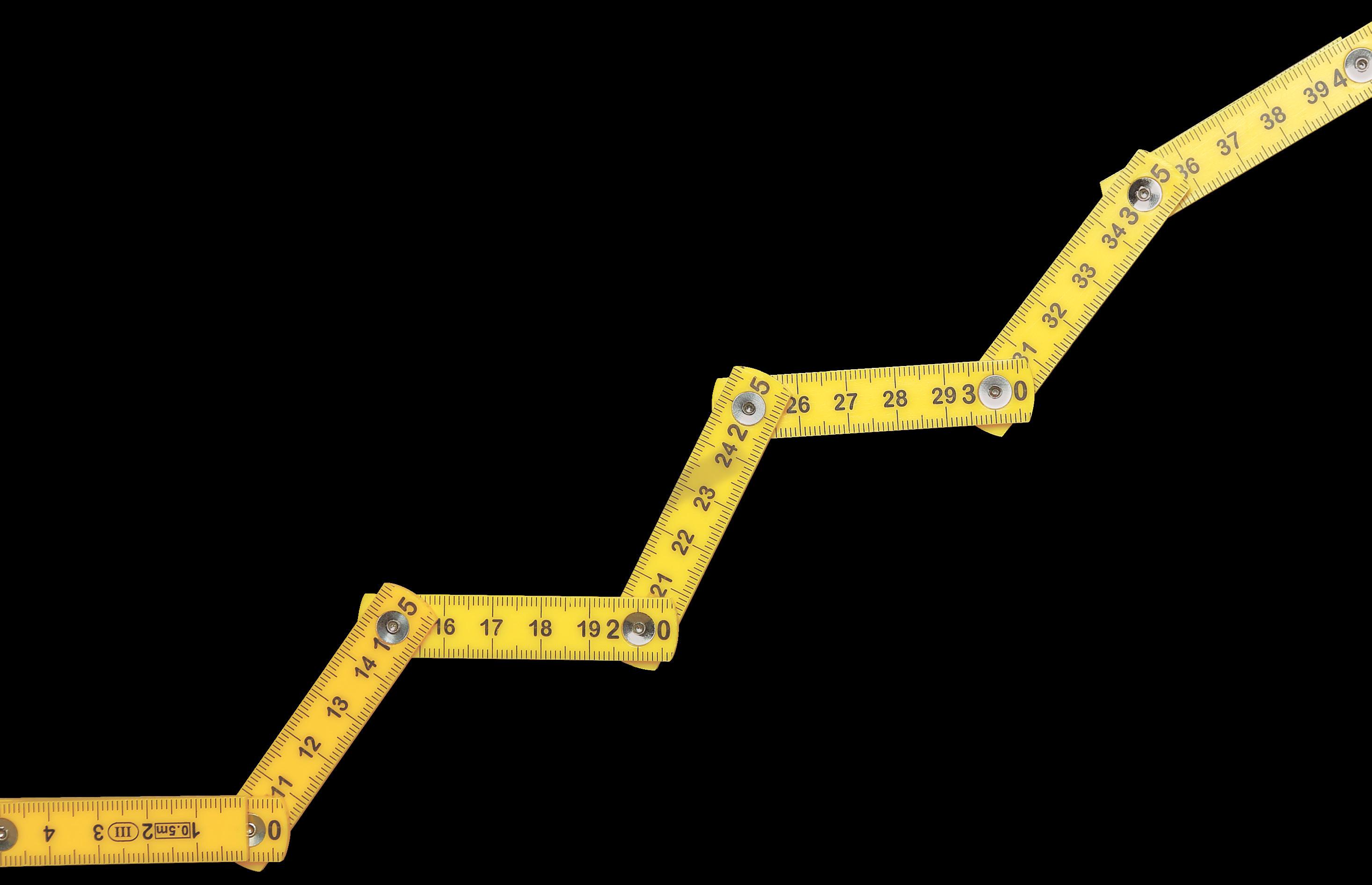
Computing the overall change in prices in an economy is a difficult task. Not only do consumers buy thousands of different goods and services, the characteristics of these goods
and services are changing with consumer preferences varying, quality changes, new goods being introduced and some goods being taken off the market. Therefore, it is a challenge to combine all these prices into an index that gives one number that we can track over time.
To do so, we rely on a price index. A price index is a measure that summarises the change in prices of many goods and services from one period to another. In fact, it is better to think about a representative basket of goods and services. This implies that the change in prices of the goods and services that I consume will be different to the price change you will experience by buying your basket of goods and services. However, if we aggregate across all consumers in an economy, we arrive at an index that represents the representative (or average)
consumer. These prices are obtained through postal surveys, store visits (>2,800 in 12 cities), and the internet by StatsNZ.
Furthermore, the price index is usually a weighted average of a given basket of goods and services; i.e. not all goods and services count equally. For example, in the current price index for New Zealand, housing and household utilities is the largest group with a weight of 28% and food is the second largest group with a weight of about 19%. This also implies that some prices in the economy can fall while the overall inflation rate is positive.

To be precise, when we talk about inflation, we talk about the change in prices based upon the CPI, the Consumer Price Index. It measures the change in prices of a fixed basket of goods and services (649 for NZ, to be precise).
It applies the so-called Laspeyres price index formula, which relates the costs of buying a fixed basket of goods and services in a base period with the cost of purchasing the same basket in the next period. An alternative is the so-called Paasche index, which computes the costs of buying a fixed basket today and compares it with the costs of purchasing this basket in a previous period. Of course, hybrid indices exist, which
combine these two (and other definitions).
The Laspeyres index is subject to several biases and generally overstates price changes (while the Paasche index understates them). These include the substitution bias, where the index does not take into account that consumer preferences (and therefore demand) changes. Also, the quality bias, where the index fails to incorporate quality changes and the new good bias, new goods are typically not included until they achieve some market position. It assumes one price for a good, whereas in reality, prices are likely to vary across outlets and even locations.
To limit these biases, the basket is updated regularly. In New Zealand this happens every three years. Updating the basket in every period is called “chaining” (the New Zealand CPI is therefore chain-linked every three years). The US central bank focuses on the so-called “Personal Consumption Expenditure” price index (PCE), which is an example of a chained index. While the CPI and the PCE show a similar trend over time, the CPI tends to increase more than the PCE. This relates directly to the frequency at which the price index and, hence inflation, is computed. In New Zealand, inflation is measured quarterly, but monthly in other countries, for example the US. Generally speaking, having more information should allow one to make better decisions. However, I think this ignores a political economy story and behavioural factors (e.g. “action bias”, where people prefer to do
something over doing nothing and “optimism bias”, where we overestimate the success chance).
If more frequent inflation data were to be available, this could create an incentive for a central bank to micro-manage and overcorrect the economy. I think this risk is particularly strong for the case of the RBNZ with a weak leadership without credible expertise in monetary policy.
I would like to close with some final remarks. CPI Inflation only applies to households. There are also various producer price indices that measure the changes in prices (input or output) for producers. Furthermore, it is very difficult to put prices on goods and services that are not produced or sold on markets. For example, household production (e.g. care of children, sick, or older adults, or growing vegetables) is difficult to measure accurately.
A solution for biases in the index could be to use electronic scanner data, which includes detailed information that can be used to limit these biases. Efforts are already underway, for example, in Australia, the Netherlands, Norway, Sweden and Switzerland. NZ has introduced scanner data for consumer electronics and plans to extend the usage of scanner data in the future. Overall, measuring inflation is a difficult task in theory and in practice. This requires a careful interpretation considering the strength and weakness of a given measure of inflation. Furthermore, it also requires considering not just one measure of inflation but a range of measures that, hopefully, paint a picture of the underlying inflationary pressures.
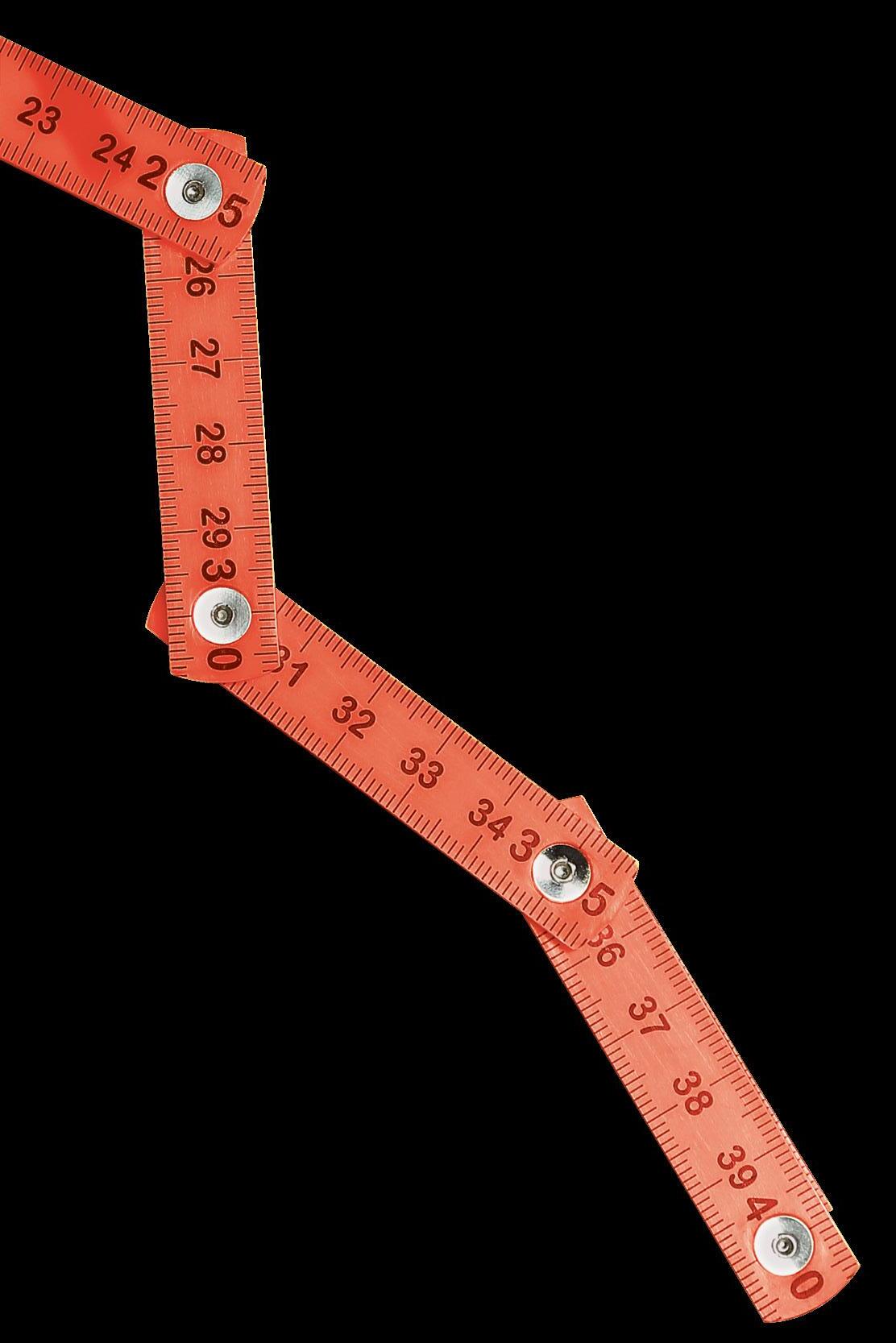
"If more frequent inflation data were to be available, this could create an incentive for a central bank to micro-manage and overcorrect the economy."
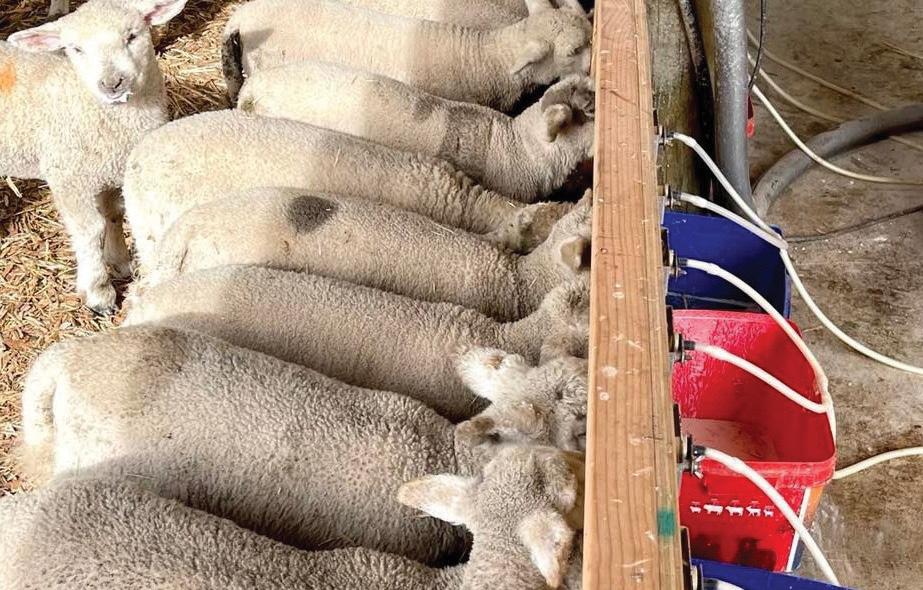
Remember, not all milk replacers are formulated the same or made from the same ingredients. In some cases, the same brand will differ from batch to batch.
High digestibility is key; it ensures the animal gets maximum value from the feed, providing them with the protein and energy they need to grow.
Here are some basic guidelines:
1.Choose a milk replacer with balanced amino acids. Proteins play an important role in many bodily functions, including formation of muscle and structural tissues and hormones. Each of these proteins are made from a different combination of amino acids.
Having a whole lot of one amino acid is not useful if you do not have enough of the others - the young animal is limited in the amount of protein it can produce and any excess amino acids must be excreted. Not only is this expensive, but it also contributes to nitrogen loading and can lead to elevated ammonia levels in the shed.
2.Choose a milk replacer that contains highly digestible fat sources.
The source of ingredients and the manufacturing processes both play significant roles in milk replacer digestibility.
Butter fat, palm fat and coconut oil are all highly digestible while homogenisation of fat also helps to increase fat digestibility, as the very small particles are more easily absorbed from the digestive tract.
3.Ask about vitamins and minerals.
A good quality milk replacer will contain added vitamins, micro minerals (like selenium, zinc and copper) and macro minerals (like calcium and phosphorus) with any added vitamins and minerals specifically formulated to complement the nutrients provided by the other ingredients in the milk replacer.
The source of ingredients used in a milk replacer can dramatically affect digestibility. Some processing methods can damage the proteins in milk powders, affecting digestibility. Often, ingredients that cannot be used for human food, because digestibility has been negatively affected during processing, are diverted for use in milk replacer.
Ask your milk replacer supplier about how they source their ingredients and what manufacturing technologies are used to help ensure high digestibility.
From easy-to-follow instructions on the bag right through to easy mixing and feeding, a milk replacer should be easy to use, no matter what your system. Find out from other farmers how a product has worked for them.
It’s tempting to buy a product with a wide range of different additives in the hopes that this will improve the nutritive value of the product. Make sure any additives included in the product are there for a reason, and not to hide the use of poor quality ingredients.
Ask your reseller for Sprayfo lamb milk replacers this season –the science-based brand with proven performance in New Zealand lamb rearing systems.
Tim and Binds White have knocked over a big prize by winning this year’s Keinzley Ag Wairarapa Sheep & Beef Farm Business of the Year Award, but they aren’t ready to take their foot off the accelerator just yet.

Both in their early fifties and with two daughters in their early twenties (Maggie and Grace), the pair only started fulltime farming a decade ago.
They see plenty of upside in farming their 420ha (effective) property Upperwood, at Matahiwi just northwest of Masterton, and feel it still has potential to produce 30% more meat
and wool over its already impressive 300kg/ha in their 2021/22 financial year.
“This property has potential to get to 400kg/ha, but we would need to change our system to do that.
“How hard we chase it will come down to how much we invest in more man hours, more intensification and more use of things like Farmax to help us manage the feed budget.”
Tim says they would have to go back to bulls and shifting hot wires, fewer ewes, more trading stock and more nitrogen used strategically. Also more cropping so they could lift their stocking rate over the summer months.
“We’ve got soil fertility about okay in the mid-twenties but we’d need to lift pH, do more drainage and subdivision to get to that level of performance.”
He’s confident of producing 400kg/ ha of product off the easier country, but says the challenge would be the medium hill third of the farm that’s producing 250kg/ha of product.
At $6/kg, 400kg/ha of meat and wool would generate a gross farm revenue (GFR) from stock of $2400/ha, 50% higher than Upperwood’s class-topping 2021/22 GFR of $1748/ha.
Tim says the downsides from higher performance included more internal worm burden, pugging issues, with more older cattle and more environmental challenges.
“It would be a roller coaster ride for sure, and we’re enjoying what we’re doing now.”
Tim says the performance and system is in a good “spot”.
“But we’ll ponder how hard we chase the next production lift.”
For the next five years, Tim wants to stay actively farming Upperwood before slowly exiting the day-to-day labour contribution he makes now.
Upperwood is their biggest single investment. It has multiple titles, plenty of road frontage and lots of new planting. Being so close to town, selling off some land is always a backstop.
The Whites have stuck with the primary sector with other investments, including shares in kiwifruit and Rockit apple orchards, a coolstore and two poultry sheds. They also have a shareholding in a commercial building and have developed a large portfolio of shares and fixed-rate bonds.
However it is not all work. Time for travelling and enjoying the outdoors, particularly ski-ing, remains a priority for them both.
New Zealand lacks good leaders, and while leadership courses are plentiful, Jacqueline Rowarth finds they are not created equal.
New Zealand agricultural businesses, from farms through to levy bodies, co-operatives, banks and other rural professional groups, invest money in upskilling staff. Upskilling in nutrient management, finances or animal health might seem a more obvious investment than leadership – but leadership is needed for the future success of the country. And there are many people champing at the bit to assist. Picking the right
course and the right person has become an art.
A Google search on “leadership lacking in NZ” produces more than 11 million hits in less than half a second. Add “agriculture” and the hits are more than three million in the same time frame.
Across the ditch, the search produces more than eight million hits for agriculture. Change NZ to Ireland and 3.7 million hits appear.
In the complaint about
leadership, NZ is not alone. Blaming lack of leadership is a common response to ‘things’ not progressing in the way anticipated or desired. The complaints often come from people who feel they have not been heard or included in the decision-making process. The big question is whether or not they have the ability to do a better job. What do they think is lacking? And do they have the skills to fill what they perceive as the void?
Responding to this apparent need, leadership courses have proliferated globally. Google produces 99 million hits for NZ alone. Some are directed at minorities (women and ethnic backgrounds, for instance), others at particular ages and stages, and some at agriculture. Most offer challenge, development and

skills. Some are also linked to a certificate which may or may not be accredited by a recognising body (e.g. a professional organisation).
Increasingly, analysts are wondering if the global initiative to upskill people for leadership is working. It has been estimated that global organisations spend more than US$60 billion (NZ$98b) on leadership development but only 10% of corporate spending achieves positive results.
For NZ agriculture, a 10:1 ratio doesn’t seem like a good return on investment. However, improving the outcome is possible.
Researchers from Fordham University and the Harvard Kennedy School of Government have identified the factors that create lasting positive change. Their article in Harvard Business Review in February reported that successful programmes have a focus on whole-person growth
with opportunities for selfreflection and meaning-making (making sense of real-life events), followed by stress reduction. The value of short, intensive courses was emphasised, rather than those that cover a semester, year or longer.
Another factor for success was the candidate. Though this isn’t surprising, the type of candidate was.
The research found that people who had the most clarity in their sense of self and who were highly conscientious exhibited the least positive change in response to development programmes. This means those with drive, who one might pick as natural leaders, are not going to benefit as much as those without.
For the people with a track record of leadership, it might be the networking that becomes the value of a leadership course. This is difficult to achieve online – it is shared experiences and concerns
that build relationships and trust. Networks also allow exchange of information. With information and imagination, it becomes possible to create a vision that is credible and identify the steps to create that vision. Leaders then need the energy to get going and energise others. The latter requires an emotional quotient to understand the perspectives and position of those around them –the people who might follow to make the team.
The right person in the right course will add to the team, and with knowledge might also turn into the leader that is right for the time.
In her Kellogg report in 2016, Agmardt leadership scholarship recipient Sarah Bell wrote, “There is no doubt the agricultural sector needs strong, courageous, brave, skilled leaders with good judgement. Some of this currently exists, but a larger cross section of leaders with diverse perspectives need to display these attributes.”

NZ is a work in progress – as is the rest of the world. By homing in on what we are trying to achieve with the next generation, we can become the leaders in leadership in agriculture. Some might argue we already are – but maintaining the position will take careful investment.
Choose with care.
“The right person in the right course will add to the team, and with knowledge might also turn into the leader that is right for the time.”Dr Jacqueline Rowarth, Adjunct Professor Lincoln University, has a PhD in Soil Science (nutrient cycling) and is a director of Ravensdown, DairyNZ, Deer Industry NZ and NZAEL. The analysis and conclusions above are her own. jsrowarth@gmail.com
Billboards in the Republic of Ireland are highlighting a big boxing match coming to town that is set to be quite controversial for the country’s livestock industry.
By Chris McCullough.In the red corner are the suckler farmers, the historical stalwarts of the Irish beef industry, who are battling the dairy farmers, seen as the wealthy, in the blue corner.
This is really a fight for emissions and which sector gets the upper hand to be safeguarded against harsh-hitting environmental regulations sweeping European Union countries.
At the last count in 2022, Ireland is home to 7.4 million cattle, 2.4m more than there are people. Within the livestock count, the number of dairy cows rose by 1.4% (22,800 head) to 1.6m, while the number of beef cows fell by 2.9% (27,100 head) to 913,000.
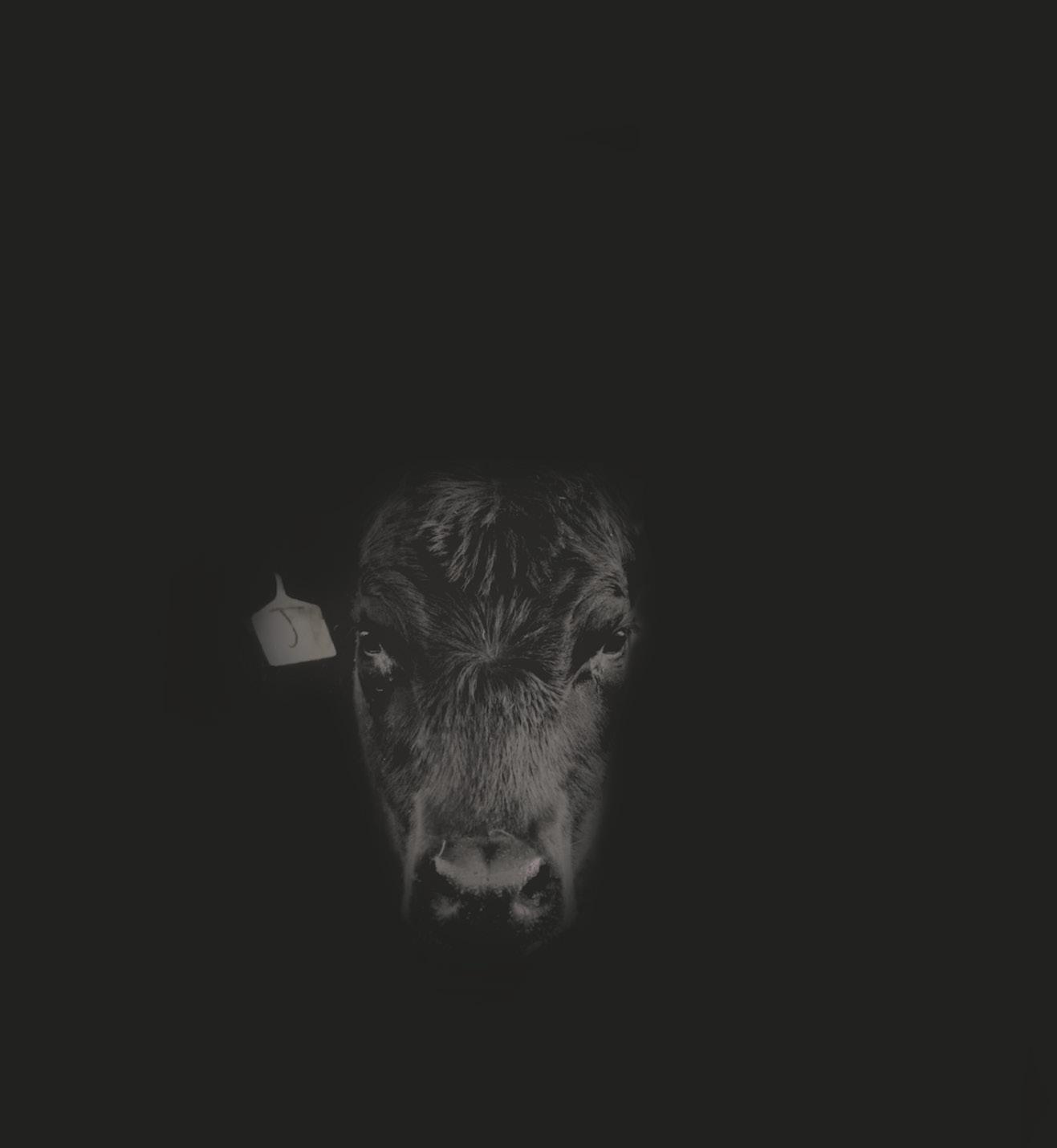
And this is where it gets interesting, as the trend of the dairy herd expanding and the suckler herd contracting continues. Since 2017, the Irish dairy herd has increased by 14% (194,600 head), while the suckler herd has shrunk by 16% (167,800 head).
Since the EU milk quota system ended in 2015, Irish dairy farmers have continued to expand and have recently
enjoyed higher milk prices and incomes. Suckler farmers, however, have been squeezed harder financially over the years, forcing some to switch to dairying in hope of a better return. As more farmers took the bold step to give up their suckler cows and replace them with dairy equivalents, this created the sway in overall livestock sector numbers.
Ireland’s 135,000 farms produce 37.5% of the country’s emissions, the highest in all the EU’s 27 member states.
The Irish government has found itself under incredible pressure from the EU to reduce these GHG emissions – in the past promising a reduction of 25% by the year 2030.
Methane, largely produced by livestock, makes up 65% of Irish emissions, therefore the dairy and beef sectors are high up the pecking order to be targeted for major reform.
With such pressure on the government, all kinds of whacky solutions to reduce these emissions have been barked by various officials and groups.
Farmers know emissions must be reduced, which ultimately means cattle numbers must be cut, but they are somewhat at loggerheads when it comes to which animals must go.
Ireland’s Minister for Agriculture
Charlie McConalogue has got the hairs on the backs of suckler farmers raised after suggesting a voluntary reduction scheme would be offered to dairy farmers. In absence of a similar scheme, where the dairy farmers are offered “cash to cull”, being considered for suckler farmers, let’s just say tempers are high.
There are fears that in order to achieve these targets to reduce emissions from farms, Ireland could lose 20% of its beef output, costing the industry €700 million (NZ$1.2b) a year and effectively seeing 14,500 beef farmers walk away from the sector.
Using better breeding and genetics can help produce cows that are more efficient and more carbon neutral, which could help Ireland’s farmers’ dilemma.
One breed being hyped as “the most efficient and profitable animals available in the marketplace” is the Stabiliser breed, first developed in the United States.
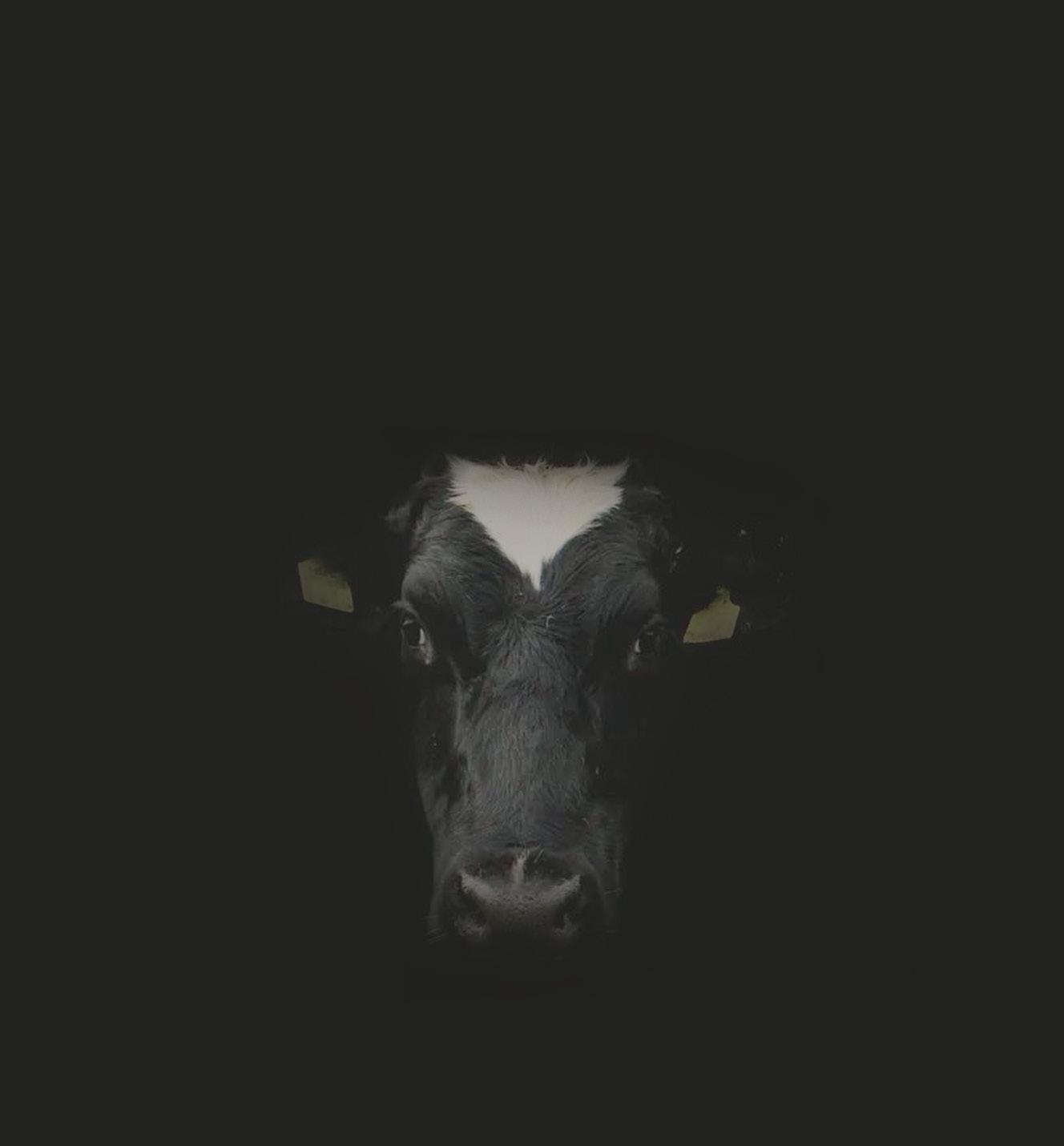
In the late 1970s, the USDA Meat Animal Research Centre in Nebraska started looking at the benefits of composite breeding techniques for cattle efficiencies, using crosses between breeds such as the Hereford and Angus, and the continental breeds, in particular the Simmental and Gelbvieh.
After extensive trials, it emerged the best-performing mix consisted of 25% genetics from the Hereford, Angus, Simmental and Gelbvieh, therefore the renaissance of the Stabiliser breed.
Over the years the breed has become popular with beef farmers in the United Kingdom and Ireland due to its docility, early maturing, easy calving, high-feed efficiency, high-milk production and good fertility.
With these traits the breed claims it is in a good position to be more carbon efficient, therefore reducing the
emissions they produce. In fact, with a combination of management techniques and genetic changes, Stabiliser farmers say they can reduce the carbon footprint of their suckler unit by up to 40%, while at the same time realising significant production efficiencies.
During trials on the breed, changes to management systems, such as male calves finished as bulls, reducing cow size, calving heifers at two years old and improving feed efficiency, were practised.
Breed researchers found significant carbon savings were easily and quickly achievable by improving many things incrementally rather than one thing outright.
The new system with all forage-fed cows included improved fertility, growth rate and feed efficiency, reducing cow
size, and calving at two years old. It produced a carbon saving of 31% under the full steer finishing system and a saving of 40% under the bull finishing system.
Northern Ireland beef farmer and former vet Billy O’Kane was the first to bring the Stabiliser breed into north and south Ireland back in 2002 when he bought 200 cattle for his Ballymena farm.
“I bought them because they are more profitable. They are a scientifically developed hybrid animal that eats less, grows faster and is sent to the factory younger.”
By using this breed and its traits, combined with new management procedures, Billy has reduced the farm’s GHG emissions. Cutting his nitrogen fertiliser usage in half by introducing more clover to his grassland and by using low-emission slurry spreading techniques were some of those new management decisions.
“There is more carbon loss from ploughing than any other type of farming. The key is not to expose the carbon in the organic matter of the soil to oxygen by direct drilling. That way, the soil will regain its embedded carbon through photosynthesis into the leaves and roots of plants.
“As a beef farmer working with the Stabiliser system, my part of the jigsaw is to demonstrate that the proven 40% carbon saving per kilogram of meat in our system would allow our sector of farming to produce the same amount of human food with a 40% reduction in carbon with no added costs,” O’Kane said.
His Stabiliser heifers normally calve at two years old and he finishes male calves as bulls on 1.5 tonnes of meal, averaging 380kg deadweight at 14 months old.
With such pressure on the government, all kinds of whacky solutions to reduce these emissions have been barked by various officials and groups.
Tom Ward looks at the advantages and disadvantages of composite sheep.
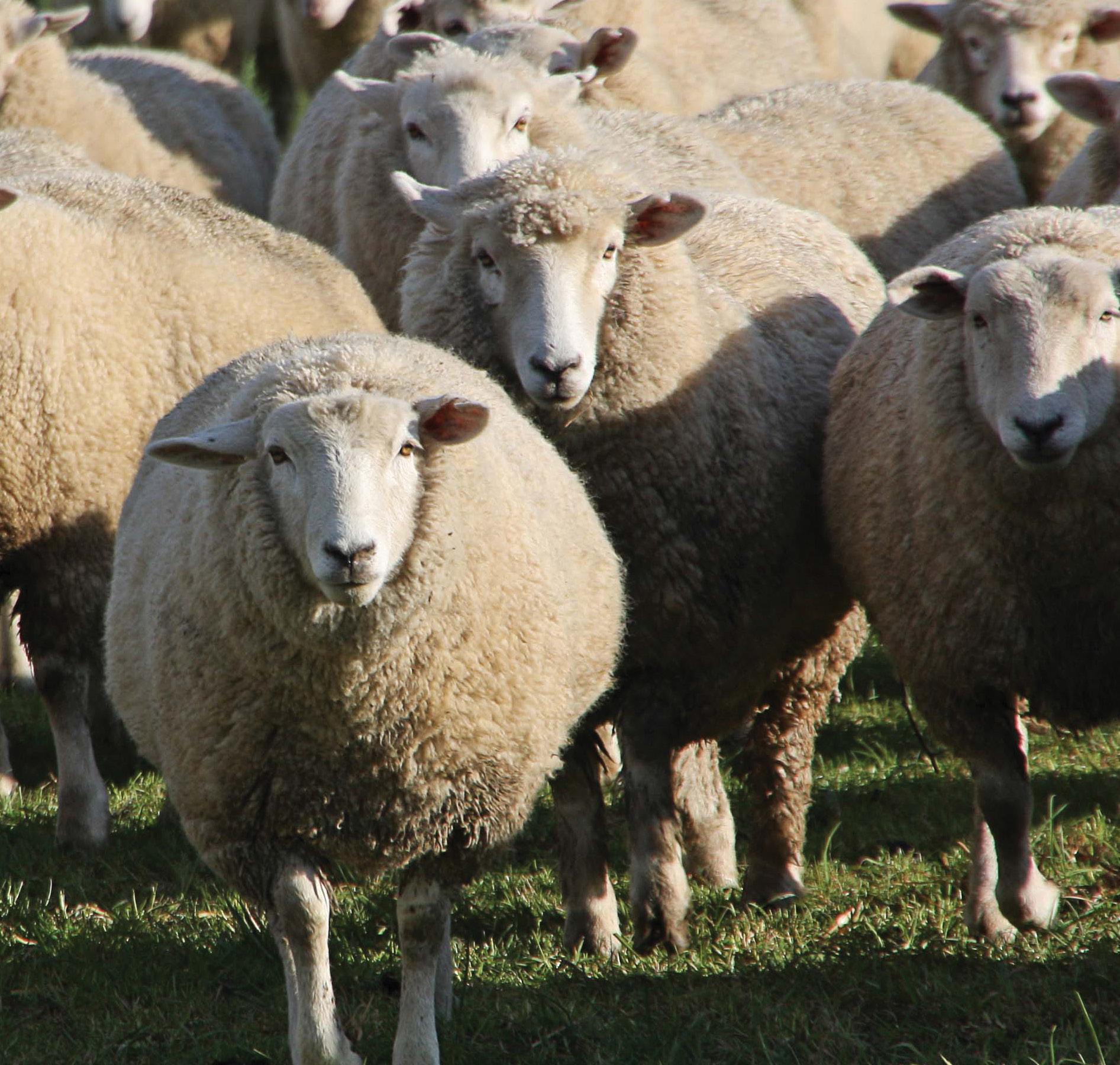
In recent years, the term composites has been used to describe a sheep containing a mix of high performance breeds, each providing a different trait. For example, Texel for muscle development, the Finn for fecundity and East Friesian for milking ability. The composite may or may not be a first cross or a stabilised breed. These are essentially bigger sheep than the standard 65kg crossbred, leading to the question of whether or not the greater productivity outweighs the greater appetite and whether or not composites
are superior to other breeds of the same size.
It is difficult to gauge the interest in composites. The concept appears less popular than 15 to 20 years ago. Some large South Island farms are developing a strong composite programme. Other farmers are staying with conventional breeds and growing a 75–80kg ewe anyway. Complicating the picture is not all composites are huge sheep, and not all high-producing ewes weigh more than 65kg. Wairere Romney’s Derek Daniels said he used to sell 1000
composite rams a year, but now very few. Buyers decided the benefit was in the hybrid vigour (first cross).
Some South Island sheep and beef farms are changing to Headwaters sheep, a composite of Romney, Perendale, Texel and Finn as a breed. The ewes weigh 72kg, manage a 155% docking, and wean on average a 28kg liveweight (LW) lamb. Headwaters is regarded as a stabilised breed, with 15 years’ selection, so there is no hybrid vigour effect.
Management regards it as a tough sheep, not one that needs pampering.
The Headwaters business incorporates Lumina lamb, a brand which, through the genetic makeup of the Headwaters sheep, claims to improve lamb quality by putting the fat back into sheep. The meat is evidently higher in polyunsaturated fats and intramuscular fat (IMF), leading to improved tenderness and taste. To further enhance these fats, the animals are grazed on chicory for at least 30 days. The $25/head premium for lamb fitting the criterion is expected to increase to $35 and $45/head in 2024 and 2025 respectively.
Another example is a South Canterbury farm running 4600 Texel/ Romney stabilised composite ewes weighing 75–80kg (empty) on hill country blocks. The ewes scan 205%, and survival to sale is 163%. Triplet rearing is assisted with two calfaterias so that every lamb gets a chance. Typically, 60–70% of the terminal lambs are sold pre-wean or off mum at 19.5–21.0kg
carcaseweight (41–46.5kg LW). These are very large well-fed ewes, probably with a body condition score of 3.5+. The average daily pre-wean lamb growth rate is 450gm/day.
A North Island hill country unit runs 1500 five- and six-year-old Romney ewes, and 2000 composite (first cross) ewes with 750 dry beef cattle. The Romneys are mated with a Romney/Texel/East Friesian cross ram to produce a first-cross composite ewe. Hybrid vigour is a driver in the performance of these first-cross composite ewes. This 900ha, 8000 stock unit farm is run by one man.
A North Canterbury, dryland, droughtprone farm, runs a predominantly sheep operation wintering 3200 Romney ewes and replacements. On a stock unit wintered basis the cattle are only 17% total stock units, and all lambs are sold by Dec 25, 70% fat at an average 38kg LW. The ewes are normally lambed on 2000kg DM/ha grass covers, saved from the autumn, as most of the ewes are wintered on a crop.
An apparent aberration is an east Otago flock of 4700 Coopdales plus replacements, 60–65kg empty, scanning 175%, and achieving a 162% survival to sale. This is a 5–7% reduction in scanning compared to seven years ago, however, the very low wastage rate has been maintained. Stockmanship is excellent, albeit slipping slightly with the farm enlarged recently. The farmer attributes the results to stockmanship and buying rams that are all out of dams that have borne multiples (a twin or triplet) every year. They have also reared every lamb born every year. This 1200ha farm also has 430 bulls and is run by one man.
Table 1 (2022/23 budget) shows all farms are fairly closely aligned. The North Island hill farm is second highest, no doubt assisted by the hybrid vigour in the composites, and more than half the replacements being bought as fiveyear-old ewes.
With a $25/head premium the Headwaters gross margin is 26c/kg DM. Increasing ewe size does not exponentially increase appetite, however it is still very significant. More importantly, the increased production is matched by the increased feed consumed. This is illustrated in Table 2 where Farmax models the same North Canterbury farm as in Table 1, with increased ewe size.
Pre-weaning growth rates are key to profitable sheep systems as faster growing lambs can be slaughtered earlier or be heavier at slaughter. A higher growth rate in itself does not improve feed efficiency, but reduced time does because less feed is going to maintenance. Also, high growth rates transfer the feed demand from late to early summer (from post-weaning to pre-weaning), a time when there is more likely to be sufficient moisture and warmth for optimum grass growth and better quality pastures. Generally prices are higher early.
This pre-wean high growth rate effect is enhanced by high-performing ewes producing a lot of lambs very quickly, usually getting 85% in-lamb within the
“Complicating the picture, I found that not all composites are huge sheep, and not all highproducing ewes weigh more than 65kg.”




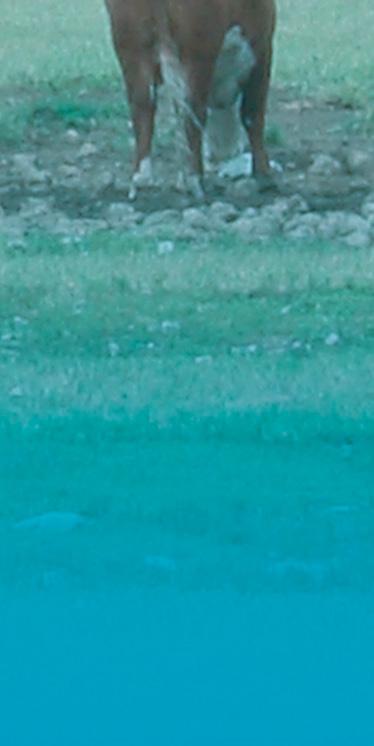




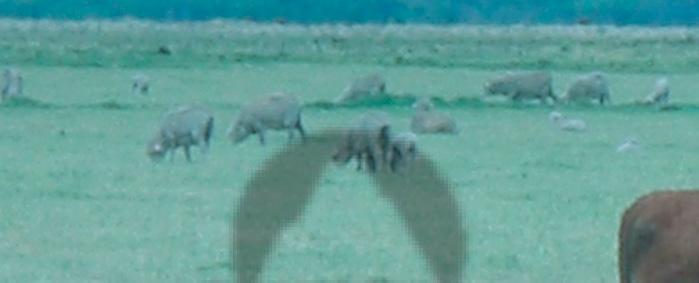
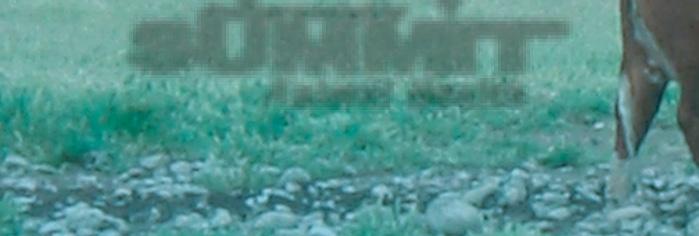




first 14 days of tupping. The composites, particularly with Finn and East Friesian, can produce a lot of milk, suggesting they may be better suited to rearing triplets where lambing percent is above 170%.
However, few commercial operations are doing more than 170% survival to sale. Farmers report these high milk producers have the ability to keep milking longer than traditional New Zealand sheep breeds, provided they are being fed sufficiently.
Some research suggests that above a 65kg ewe liveweight, there is a declining ovulation response to increasing ewe size, that is, the reduced stocking rate required by the bigger sheep is not compensated for by the increased productivity from that bigger ewe.
Feed quality is of paramount importance with respect to both energy (megajoules of metabolisable energy) and protein. With the number of triplets increasing rapidly with scanning above 170%, room inside the womb and rumen is limited. Feed throughput is very important.
Feed conversion efficiency (FCE) is the real elephant in the room. It is related to lambing percent and lamb growth rates. Coming off a low (not acceptable today) 110% lambing, a 10% increase in lambing increases the FCE by 20%. Further 10% increases in lambing percent initially improve the FCE by 3.5%, however the FCE improvement reduces to minimal levels by 170%. This occurs because the ewe costs are spread across more lambs. However, at higher lambing percentages the FCE declines as more multiples cause higher lamb deaths, smaller lambs and lower lamb growth rates.
My study is not exhaustive so I have not reached a comprehensive conclusion about Composite sheep, however I do not see a significant production advantage. Some farmers are achieving very good performances with composites, while others achieve without. Some ewes are large, others not. All the farmers spoken to were good managers.
The Headwaters $25/head premium over schedule apparently pushes that GM to 10% better than the next best. It will help the profitability of the Alliance Co-op lamb job that Headwaters supplied 100,000 lambs in 2022, and is looking to add that number year on year. Whether the IMF is as good as claimed is a moot point. Well-bred lamb has good fat levels and taste, and there is insufficient time at the age lambs are killed for sufficient IMF to accumulate to affect taste. Other meat processors reward their preferred lamb suppliers differently. The Lincoln University geneticist I spoke to suggests the limited research shows NZ lamb has an IMF of about 2.5%, a little less than
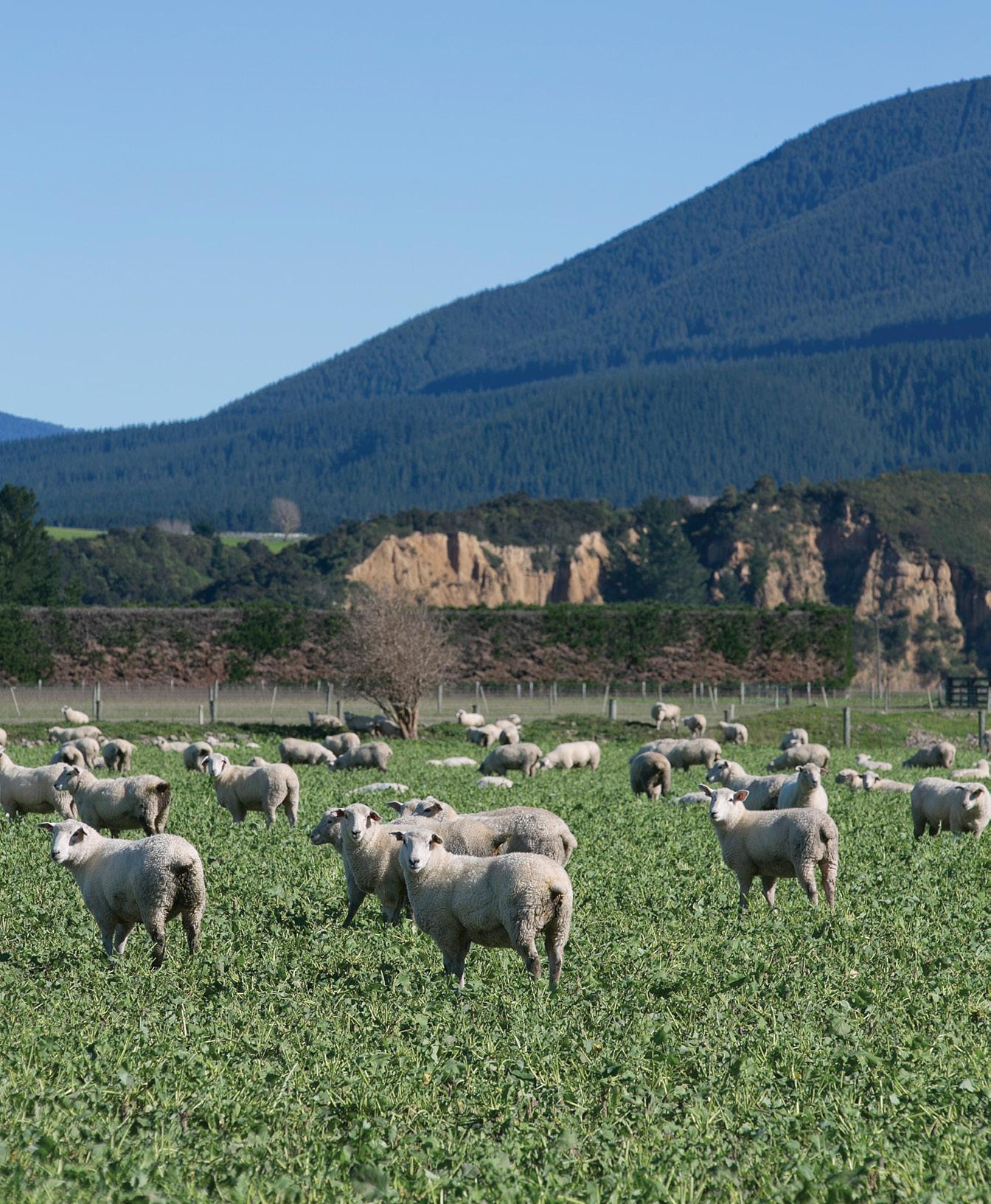
the Headwaters product.
I have some concern over the low use of feed under very high ewe and lamb performance. This unused feed can be tidied up with the mower (and balage), or with cattle or dry ewes later. However, the residual feed will be lower quality and the alternative enterprise lower value. A standard hill country scenario you may say. Accepting lower ewe flock performance would increase utilisation by the ewe flock, possibly earning as much for each kilogram of dry matter grown as the high-performance option. There is another twist to this story. Limiting the ewe flock size in favour of more cattle reduces the costs of farming, as both the North Island hill and east Otago farms show. Higher sheep numbers might require an extra shepherd, which would cost $70,000, plus higher animal health and shearing costs.
Otairi station in the Turakina Valley is a sheep and beef operation spanning three sites, and where most of the stockwork is still done on horseback. Not so different from when the Duncan family first moved there in the 1800s. Story and photos by Sarah
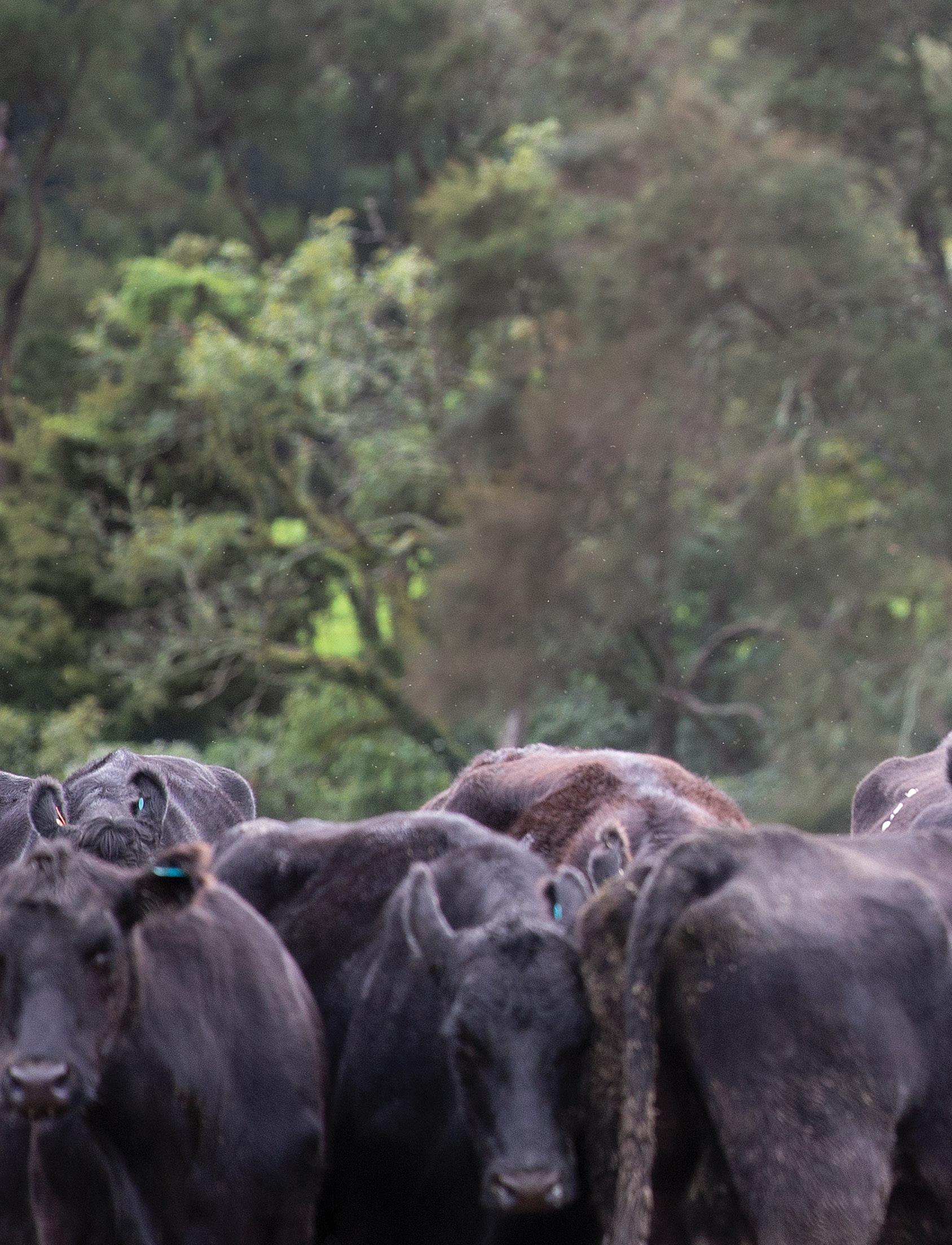 Horrocks
Horrocks
.
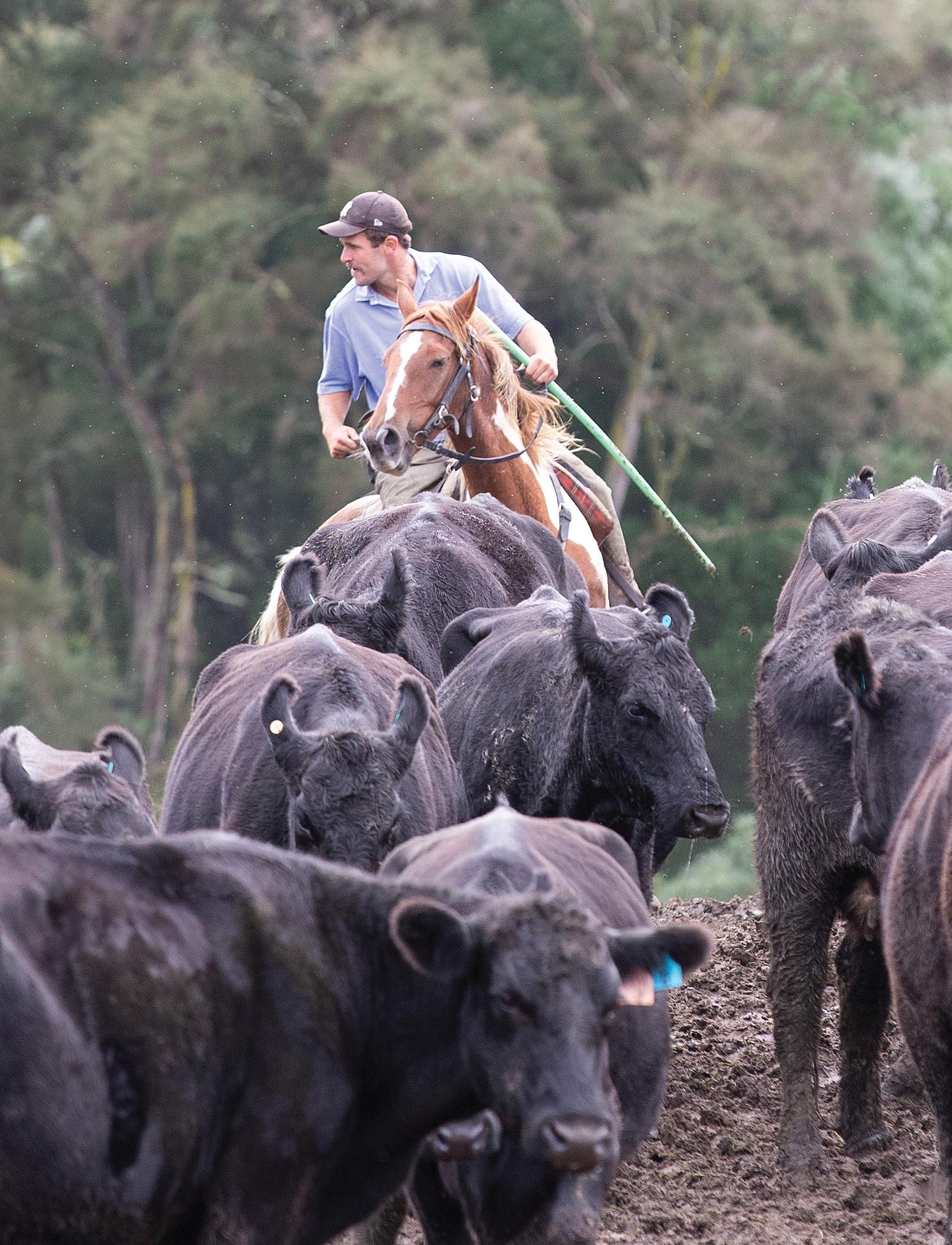 Head shepherd Toby Proude moving a mob of cows around in the yards at weaning on Otairi Station.
Head shepherd Toby Proude moving a mob of cows around in the yards at weaning on Otairi Station.
Sam Duncan is your typical Kiwi farming bloke – he loves the dog trials and has a passion for negotiating gullies on his mud-laden station hack. His family has been farming in the Turakina Valley west of Hunterville in the Rangitikei since the 1800s and although Sam jokes that he didn’t end up there by choice, he took over as manager of Otairi Station back in 2012 aged 25.
Otairi is 3200 hectares (2700 effective) of predominantly steep hill country and is owned by Sam’s father Douglas Duncan. It sits about a third of the
way up the valley, ranging in altitude from 250 metres above sea level at the roadside and tracking up to 700m at the northern end.
The station is complemented by two finishing blocks; the first being Flockhart, 320ha of easy country that runs alongside State Highway 1, just 10 minutes north of Marton. Then there’s Waipu, which totals 1300ha and encompasses 420ha of forestry, a 180ha dairy farm and 530ha of grazing and cropping country. Waipu sits south of Wanganui and is bound by the Tasman Sea, so the soil varies greatly from freedraining sand to heavy clay.
The operation is complex, and Sam oversees all three farms, but it all starts at the station where the breeding stock is farmed.
“I’ve got a manager, head shepherd and two shepherds up there,” Sam says.
It’s a sheep and beef system, with 14,500 Kelso ewes, plus 4600 ewe hoggets run alongside 900 predominantly Angus females.
“Kelso rams are used for both our terminal and maternal flocks.”
The terminal ram goes out on February 28 for the five- and six-year ewes and then maternal sires are used across the B mob, followed by the A-line ewes, and then the hoggets go to the ram last on March 20.
Scanning rates vary but the average is 160-170% for the ewes, with the hoggets at 65–80% in lamb.
“It depends on the season with the hoggets.”

The early-lambing ewes are mouthed before weaning and anything that’s no good is put on the truck at weaning.
Weaning starts on December 1 for the early terminal lambs and Sam manages to get about 30% of these killed straight off mum.
“They’re drafted by eye at 16.5–18kg carcaseweight.”
All lambs are processed through Silver Fern Farms (SFF) and about 3500 are killed pre-Christmas, by which time all 22,500 Otairi-bred lambs are weaned.
After weaning, the middle-to-top
weight lambs are sent down country to Flockhart for finishing and only the smaller lambs are retained at Otairi. There’s 250ha of easier country there, where 10ha of plantain is grown for lamb feed, but all lambs are off the station by March. There’s also 15ha of swedes grown for the ewes in winter.
Down at Flockhart, Douglas Duncan runs the day-to-day farming, moving the lambs around on a rotational grazing system, with 145ha of plantain grown in a five-year re-grassing programme.
An additional 6000–8000 lambs are
brought in and finished depending on how much feed is around during the season.
“We buy stock in, but it’s always finished; we never trade stock back out,” Sam says.
On the cattle front, there are 750 cows and 150 heifer replacements run at Otairi. The cows are a new thing in the last three years.
“We used to run steers at Otairi over winter and they’d lose 100kg.”
Buying in cows seemed a logical solution, as not only do they not lose the weight over winter, but they also raise a calf every year. This removed the need for Sam to buy in so many weaner steers in spring.
“We never made much out of those trade cattle."
Sam says the cows were bought in from everywhere so they’re a bit of a mixed bag but they’re predominantly Angus.
All bulls are bought from Rissington stud in Hawke’s Bay. Angus and Profit Maker bulls are used over the Angus females. The Profit Maker breed is a black multi-breed composite developed by Leachman Cattle Company in the United States. A terminal Simmental sire is used over the coloured and brokenfaced Angus cows.
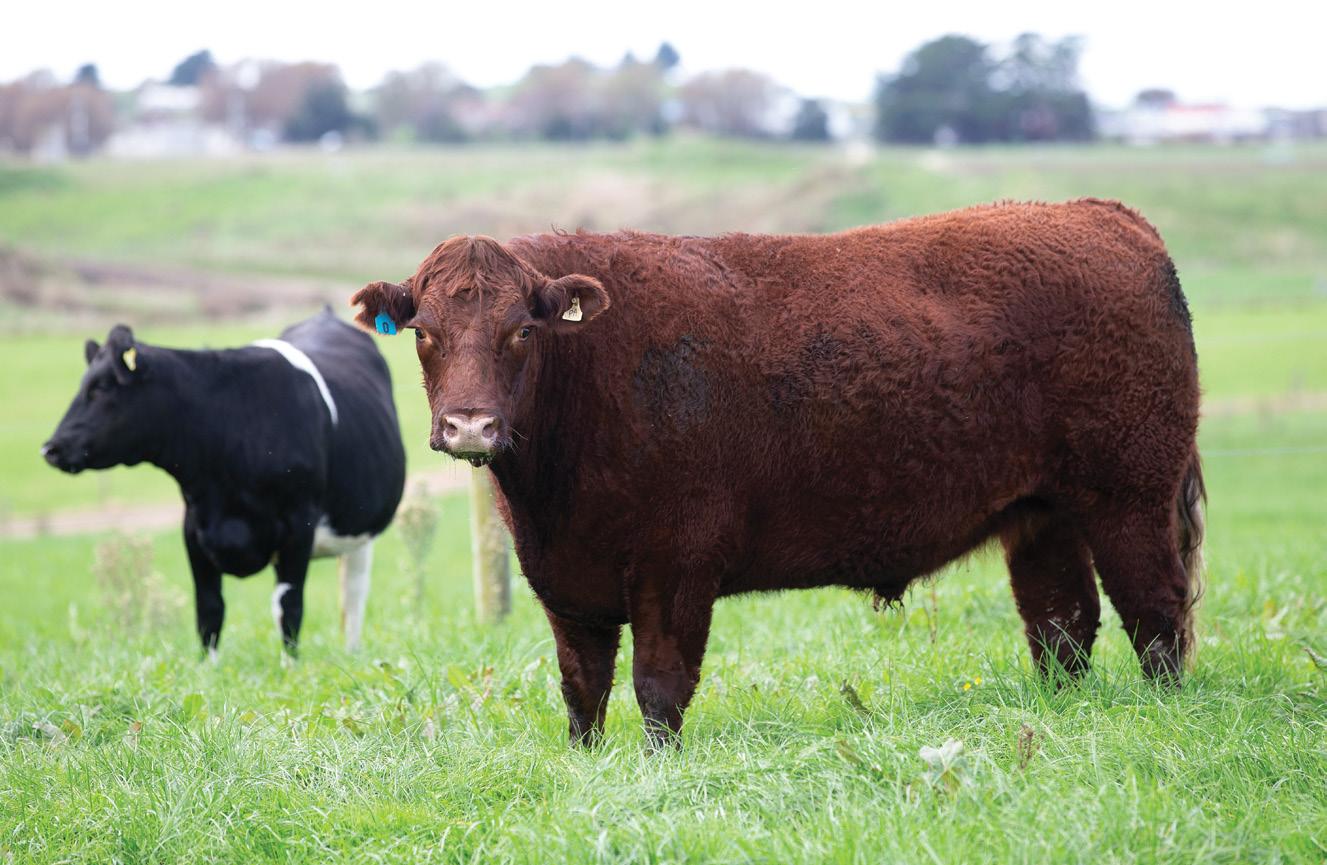
“I primarily look for good growth and structure in the bulls.”
There are 22 bulls in total (14 are yearlings) and they go out on December 15 for three cycles.
All females are scanned in April at weaning and the dry rate was just 5%
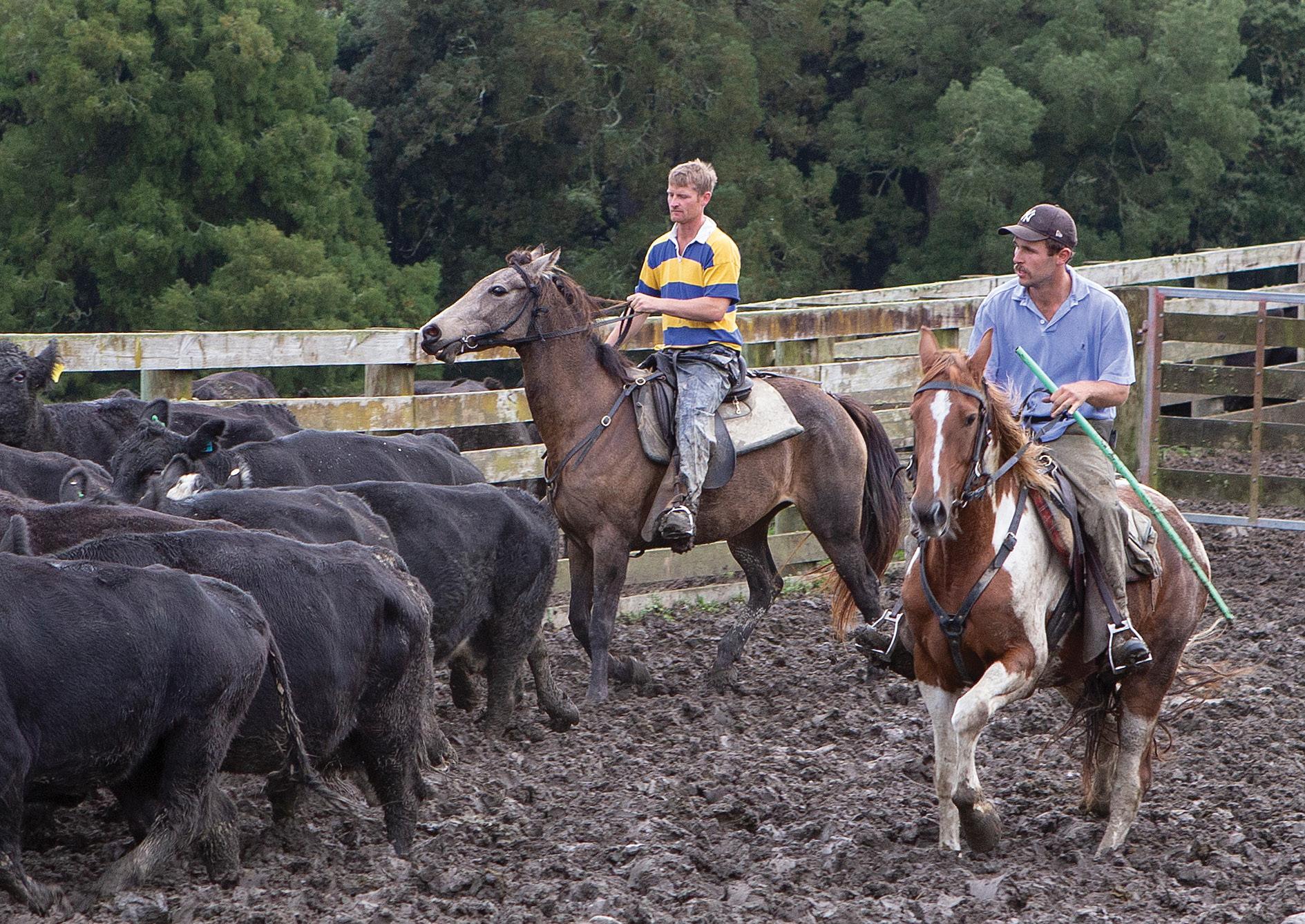
in 2023, which Sam is happy about. All dries are culled.
The yearling heifers are all mated to Profit Maker bulls and Sam sees mating them as an obvious decision.
“They’re up to weight so they go to the bull.”
Otairi also has the scope on the finishing farms to wean the heifers’ calves early if needed.
Terminal calves are weaned at the beginning of April and the maternal-bred calves are weaned in mid-April, at 210kg liveweight average.
At weaning, 190 heifer replacements are retained on the station and the remaining 550 progeny go on the truck to Waipu to begin their game of pingpong as they’re trucked back and forth between Waipu and Flockhart. The weaners stay at Waipu for six months until September, when they’re shifted to Flockhart as 14-month-olds for the summer and autumn, before returning to Waipu in April the following year for finishing at 22 months.
Waipu can hold 2000 cattle in winter, with 130ha of plantain as well as 25ha of fodder beet, 105ha triticale and 55ha grass grown for back-feeding in 3ha blocks, but supplementary minerals and feed is fed in bins. There are three fulltime staff there.
“It’s a large-scale intensive wintering system,” Sam says.
All the supplementary feed is cutand-carry, grown onfarm at Waipu. It includes 250 tonnes of sugar beet, 850t of maize silage (40ha), 650t of lucerne (five cuts off 43ha) and 300t of grass silage.
Waipu has 43ha of lucerne under centre pivot irrigation and another 57ha of ground under a travelling gun.
“The travelling gun doesn’t cover its area very well.”
There’s plentiful feed, so an additional 600 trade steers (including some heifers) are bought in from all over the North Island and these are sourced by Sam’s
brother Mark Duncan, an agent for SFF.
Steers are killed at 310–320kg CW and heifers at 280kg CW, though Sam says the yield is only 50%, which is lower than standard.
“They have a huge amount of feed in their guts when they’re weighed.”
As the 19- and 20-month-old cattle arrive back at Waipu, they’re drafted and kept in weight-range mobs, then they’re weighed and killed every two weeks from then on.

“In that last 60–90 days each beast gains about 150kg.”
The cattle numbers at Waipu are bolstered by Rissington Cattle Company, which is coming into its second year of farming out 450 Profit Maker bulls to Waipu for the winter.
“They come in as weaners and they’re taken through till September.”
The bulls are a minimum of 450kg by the spring and Sam is enjoying working closely with Rissington to deliver Profit Maker bulls suited to the dairy industry and its bobby crisis.
“It’s a more profitable option to rear as a calf.”
Bobby calves are relevant to Sam’s operation, having the dairy farm there at Waipu. He has three staff running a 60-bail rotary shed and his brother Tom Duncan is involved with the business side of the dairy operation, with 420 Friesian cows producing 420kg of milk solids/year.
Sam says that’s good for heavy clay soils.
“It’s not the ideal dairy country.”
Sexed semen is used for dairy replacements, as well as some unsexed semen, which delivers a total of just 60 Friesian bull calves. These are grown out on the intensive grazing system alongside 260 Friesian Profit Maker-cross progeny from the remaining cows and heifers in the dairy herd.
“Profit Maker bulls remove the bobby calf issue, and we can use them on the

The dairy cows are wintered on 15ha of fodder beet, with supplementary feed in bins for roughage and minerals as well.
Having so many different stock classes on the intensive system at Waipu requires precision nutritional management, so Hawke’s Bay company Ruminate is contracted to ensure all stock receive the nutritional balance they require and acidosis buffering.
Growing feed requires fertility in the soil of course, and Sam isn’t shy about putting on what’s needed.
Soil testing is done on a block-by-block basis at Otairi and with Olsen P levels ranging from 9-40, super was applied last year at a variable rate, ranging from 0-750kg/ha.
“The flats are 25–40 and the hills are 9-18.”
There was also 2.5t/ha of lime spread with a truck over 80ha of flats to lift the pH, which is lower than optimum at pH 5.5.
Super goes on with a plane across the farm at Otairi and the hill country also got lime for the first time this year at a rate of 1t/ha.
When asked whether he’s doing maintenance or lifting the fertility, Sam says Otairi is slowly increasing its P levels.
“When it was more cost effective, we just blanketed the whole place in DAP.”
Flockhart has good fertility, with Olsen P levels of 25–35, so super goes on at a rate of 300kg/ha. Sam says the pH there is good, with lime going on with crops as needed.

Waipu has a tailored fertiliser plan, which is hugely variable depending on the crop being grown and the soil type –60ha of the crops are grown in silt.
The total fertiliser cost is $769,000, and Sam says this figure is continually increasing with the lift in nitrogen prices.
For the 2022/23 year, animal health spending sat at $350,000 for the entire operation.
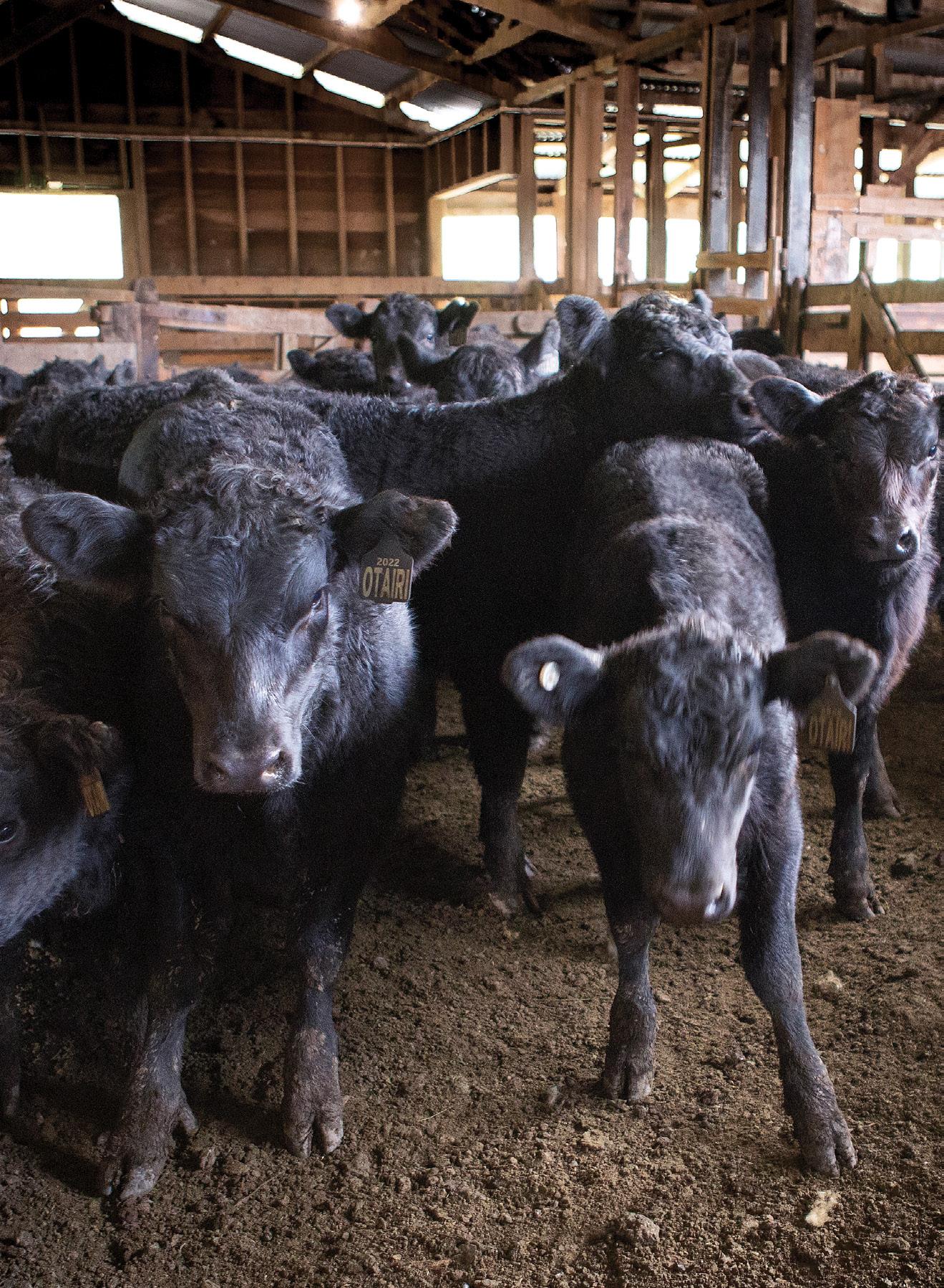
The ewes at Otairi are given a Bionic capsule, copper, and an 8-in-1 clostridial vaccine on the conveyor pre-lambing.
“We’re not going to be able to get capsules this year due to a supply issue,” Sam says.
To remedy this, he’s looking to create a trace mineral mix that will be beneficial to replace the selenium and cobalt that was in the capsules.
“We haven’t got the facilities to be drenching ewes at docking.”
Lambs are all drenched at 60 days and then again from weaning onwards as needed. Sam says the worm burden has been crippling because it’s been so wet this year and they lost a lot of lambs.
“I’ve never done faecal egg counts much in the past, but I certainly do now.”
Cattle at Waipu get a drench, B12 and a 5-in-1 vaccine.

“We use pour-on to prevent any lesions because they’re being killed within 60-90 days.”
Sam says the biggest animal health
cost is six-month shearing, which costs $261,000. “That doesn’t include our staff wages at shearing.”
They’re shearing for animal health nowadays, for lamb survivability.
“We shear for more meat.”
The wool is sold on contracts to NZ Wools and NZ Merino Company, bringing in a cheque of just $128,000.
Although wool prices are dismal, Sam says they have always had good advice from their agents who try to help them in any way they can.
“The wool has cracked it,” he jokes.
The pitiful wool cheque got Sam thinking about alternative revenue streams. Recently he and his fiance Sarah Stephens started a new enterprise in Feilding.
At Otairi the mustering work is all done on horseback with the 12 homebred station hacks. Unlike the shepherds, the 50 working dogs don’t get to hitch a ride, so they work “bloody hard” and
build up an insatiable appetite.
In the past they’ve fed mutton alongside dry biscuits, but Sam and Sarah always thought there must be a better way to cater for their dogs’ nutritional needs.
“There just wasn’t anything around that provided the nutrition needed for their daily workload,” Sam says.
Impact 4 Dogs was born – a nutritionally balanced food developed by Sam and Sarah to cater specifically for working dogs.
“It’s 42% fats and 40% protein, superior to all other options in the marketplace.”
Over the past 12 months, the couple built a factory in Feilding, importing the infrastructure required and, after testing their product, have started producing their working-dog rolls. The plan is to not only provide for their station dogs, but also other stations in the Turakina Valley and beyond.
Hopefully Farmlands or PGG Wrightson will pick it up.
A standout financial performance, constant and thorough planning, a strong partnership and off-farm fun all contribute to Wairarapa farmers Tim and Binds White’s farming success.
By Tony LeggettAward-winning farmer Tim White is always running numbers in his head and it shows in the performance of his family’s Matahiwi farm, just northwest of Masterton.
“I use lots of gut feel and intuition, but I often justify something by doing a calculation out in the paddock. If they don’t match up, I dig deeper into the detail,” Tim says.
He likes having a budget to create spending discipline and dislikes surprises at balance date.
He’s found his “first crack” at running numbers for a stock trade or a new purchase is usually the best one because of the temptation to manipulate the details to make it work.
His previous experience before starting full-time farming a decade ago has also
.
influenced his approach to asset growth. He remembers as a young finance officer with a stock firm visiting farming families in the mid 1990s who were in financial difficulty.
“It was daunting to deal with them and I told myself then I didn’t want to go through that stress and strain.
Tim could see the impact that it had on them and those lessons have stuck with him.
He always prefers a strong cashflow business and is happy with a cash surplus at the end of each year, rather than being focused on growing their business through more debt.
Gross farm revenue (GFR) in the Upperwood 2021/22 year was a whopping $1748/ha or $182/stock unit. To put this into perspective, it was $500/ ha above the class average for semi-
finishing, summer-wet farms analysed in the BakerAg financial analysis benchmarking (FAB) results for that year.
When total farm expenses are standardised in the FAB analysis, the Whites spent $830/ha ($86.57/ su) including a $66,397 standardised allocation for management wages in the same year. The net result was an exceptional economic farm surplus (EFS) of $918/ha or $96/su, easily the best in the region.
Upperwood’s cash report for the same year shows spending of $627/ha (44% of farm cash revenue) before allowance for $100,000 of rent paid by the farm operating company to the asset-owning family trust.
“In reality, I’m spending about the same as a hill country farm to get where we are. My aim is to keep farm working expenditure between $250,000 and $300,000 each year,” Tim says.
Local farm consultant Ed Harrison says a key ingredient of the Whites’ financial success is they operate a hill country farming cost structure with a finishing farm revenue capacity.
The only standout in the farm working expenditure for 2021/22 (and earlier years) is the low cost for feed and grazing at $31/su, compared with $80/ su for the same farm class within the BakerAg FAB.
He says they are not cutting costs in animal health, fertiliser and administration.
“It’s the cropping where they are skimping on costs,” he says.
“There’s nothing else out there that will touch $918/ha EFS. It’s very impressive.”
Tim is a member of the Whangaehu farm discussion group and uses the comparative data from the BakerAg FAB to monitor and compare costs. He also appreciates the class of country he farms allows him the scope to reliably add more value to stock.
As an owner-operator on 420ha effective property, he capitalises on the efficiencies its size allows.
“There are lots of time savings we can grab. Stock shifts are quick and easy,
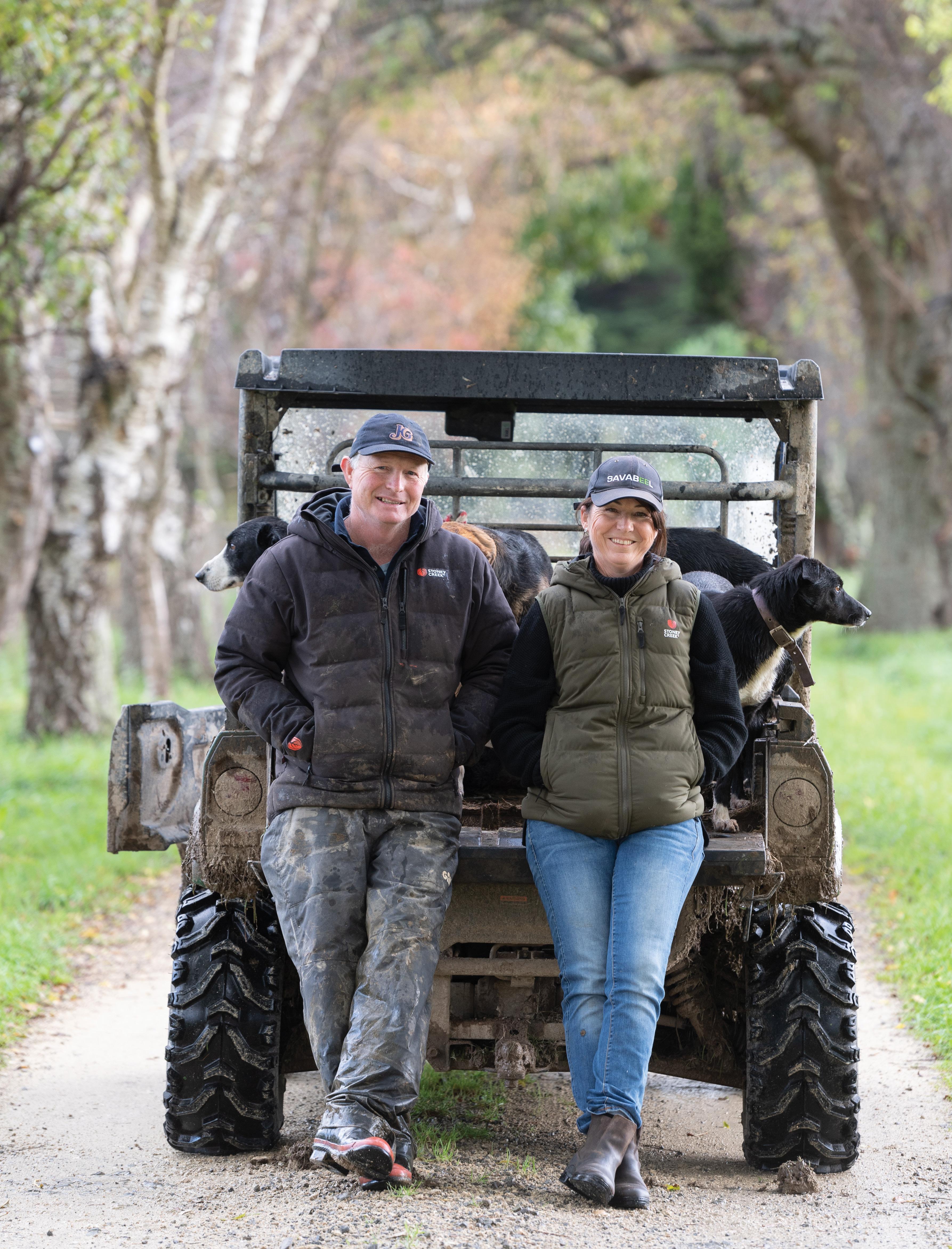 Tim and Binds White, winners of the 2023 Keinzley Vet Wairarapa Farm Business of the Year.
Tim and Binds White, winners of the 2023 Keinzley Vet Wairarapa Farm Business of the Year.
1. You can cut corners, but know why you are doing that and be prepared for failure
2. If you achieve the desired outcome most of the time, you can live with the odd failure
3. Tweaking the existing system is usually better than wholesale change
4. Discussion groups are great for ideas, inspiration, and a reset after touring around someone else’s farm
5. Know your numbers, but gut feel and intuition are still a big part of the equation
6. Write a list most days – the best feeling is putting a line through each task on that list when completed
7. Discipline to do the urgentimportant tasks first, rather than the non-urgent important tasks.
and there’s no need for a big dog team which can be expensive, and there are labour savings too.
Tim says there’s no time lag between changing a plan and getting on with it either. In a big business, owners have to pass information through several hands, but he can cut to the chase and that’s a big attribute of working without scale.
“Aside from administration costs, most costs are all relative to either stock units and/or area. But, you do have to be hands-on, so getting away is not always an easy thing to do.”
When considering a new purchase, Tim prides himself on filtering out the marketing hype and reading reviews to make sure it is a “must have” rather than “could have”. He likes to keep up with new technologies and product developments, but admits he’s made
his share of wrong decisions too.
He’s embraced many of the technologies now available, including mobile phone apps which allow him to complete tasks through the day rather than at night.
All dagging and crutching is done with Combi Clamp and Handypieces. Their scale allows them to do that.
“We’re not dealing with big numbers, so we can get a job done quickly.”
Any machinery or implement that sits idle for two or three years is sold. His experience in valuation and finance roles before going farming also helped Tim with producing onepage scenario spreadsheets and stock reconciliations, which are critical to get accurate at the start of each year.
He uses Farm Focus, farm financial management and budgeting

Establishing crops at
software. After a settling in phase he’s comfortable with the programme and its capacity to generate future-focused scenario analysis.

Upperwood’s easy contour and silt loam soils provide a great platform for crops to be grown to finish stock to higher weights.
A third of the 420ha effective area is flat, another third is easy and the balance is medium hill, meaning close to 250ha could be cropped if required.
The Whites haven’t ploughed a paddock in more than 15 years, preferring the speed and cost savings from direct drilling seed and applying fertiliser by truck.
In the past, paddocks in the programme were sprayed out with glyphosate in early spring, sown in red and white clover, then Italian ryegrass was stitched in by late autumn. Tim says it was not uncommon to get four or five years of good pasture production out of that programme.
But in 2019 and 2020, two hard droughts led to a rethink and a change of system.
He works 12 months ahead to make sure the paddocks chosen for cropping are cleared of Californian thistles, using Versatil at a heavier rate. Paddocks are soil tested and receive capital applications of phosphate, sulphur and lime if required.
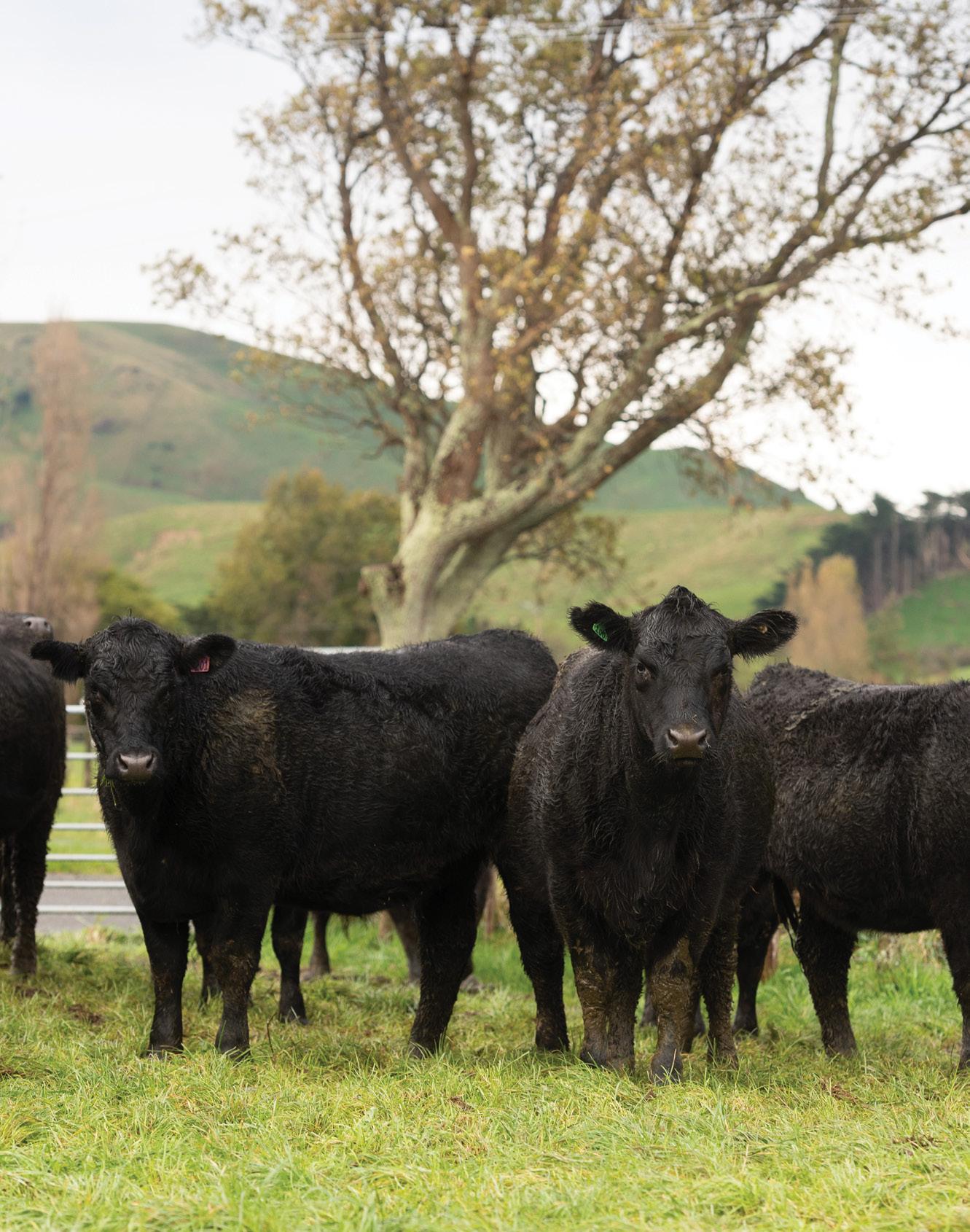
In spring, they are sprayed out with Glyphosate 540 at 4–4.5 litres/ha using their own Katipo eight-metre spray rig. With no GPS in the tractor, Tim uses a free downloadable phone GPS app instead and finds that works well.
The phosphate and sulphur plus any lime goes on with ground spreader trucks before it’s sown using a Duncan
2023 time series analysis Farm class 3, semi finishing, summer wet.
seed drill with no fertiliser box on it.
Tim says the P and S go on regardless of the test results and he’s prepared to risk not placing fertiliser with the seed at sowing time.
New crop is monitored for slugs and treated if the infestation is sufficient to warrant it.
The seed-mix cost ranges from $100–$140/ha depending on where he can source the seed. He’s happy to use uncertified seed and to trim the sowing rate back from recommended rates.
With $20–$50/ha for slug bait, depending on the level of infestation, another $70/ha for glyphosate and seed at $100–$140/ha, the total cost is
$200–$250/ha. Add another $170/ha for fertiliser and the total cost is up to less than $500/ha.
“I don’t compromise on timing, so having our own gear helps with that,” he says.
“Our climate and class of land we have means its forgiving country, but when you cut corners like I do, there is a risk it will backfire.”
He finds sowing chicory at 1kg/ha is sufficient, and red or white clover at 6kg/ ha, and plantain at 1kg/ha.
Stitching in perennial ryegrass later means that as the clover and chicory start to go dormant, the ryegrass will come through.
About 40–50ha a year goes into the clover, plantain, chicory and Italian mix, though last spring 55ha went into crop after the tough summers in 2019 and 2020.
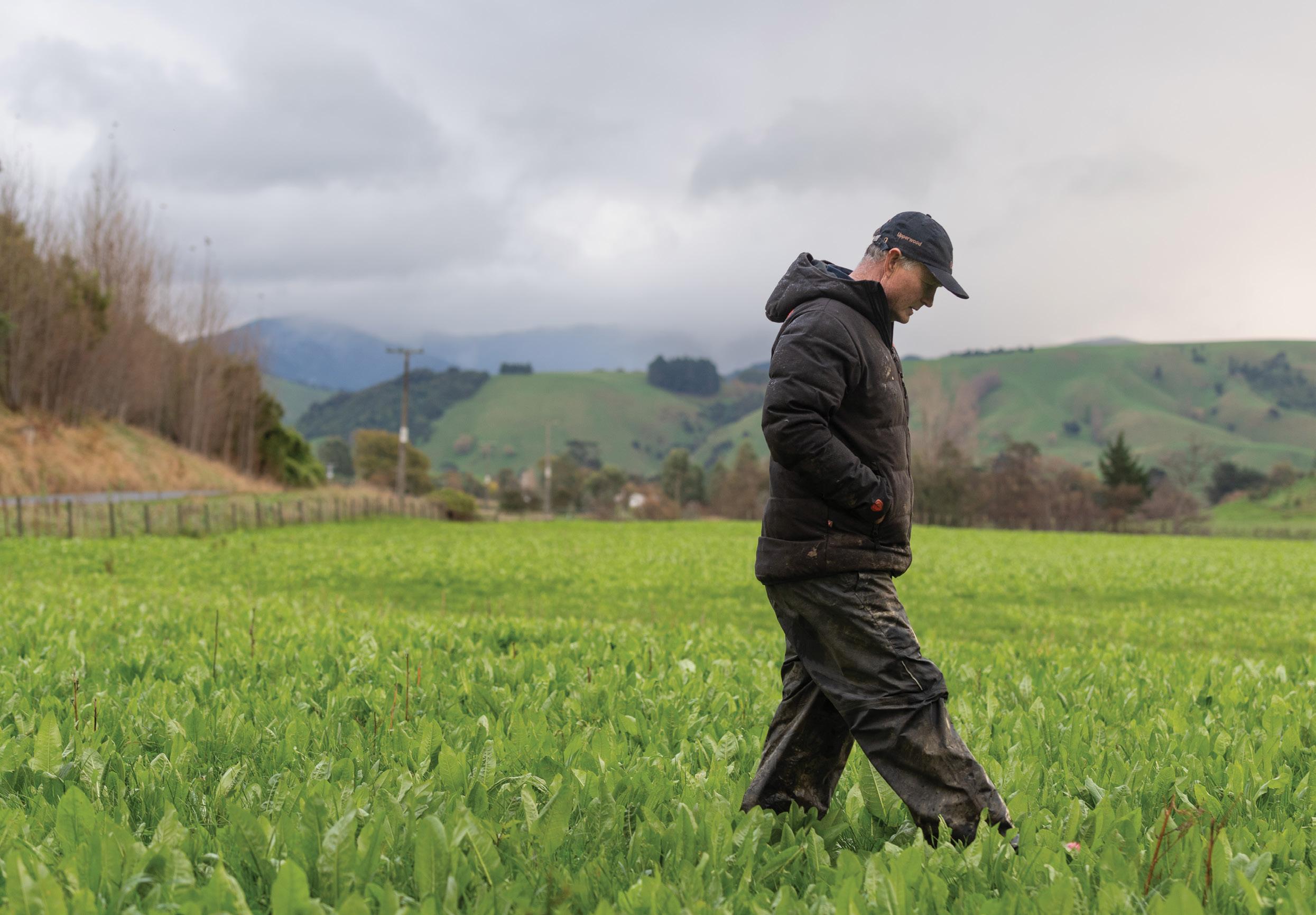
Tim’s preferred brassica mix is 3kg/ha of Spitfire rape, 4–5kg/ha of clovers and 1kg/ha of plantain.
It is grazed by ewe lambs through autumn and then ewe hoggets prelamb. This last autumn it’s been full of red clover and the resident ryegrass has come back too.
The key to success is selecting paddocks early and ensuring the fertility, drainage and subdivision are right before they enter the cropping programme.
“Fencing and water needs to happen together, hand in hand, and that has given us our biggest return.”
KEY POINTS: 410ha effective at Matahiwi, Wairarapa
• Three main blocks, divided by roads
• Third flat, third easy, third medium hill
• 100-plus paddocks, 3-5ha
• Water reticulated to 80% of farm
• Mostly silt loam soils, suits cropping
• Summer-safe, though rainfall now more variable
• Good infrastructure in place
• Growing 8500kg/ha DM per year
• Produced 274kg/ha of meat and wool in 2021-22.
With more than 100 paddocks, ranging from 3–5ha and averaging 4ha, fertility transfer is greatly reduced and there is plenty of flexibility in managing the rotation of livestock.
Many of Upperwood’s electric fences have been replaced with nine-wire quarter-round post fences. Without the pressure of cows and with regular stock movements, they cope well and are a big saving on batten fences plus less maintenance than remaining electric.
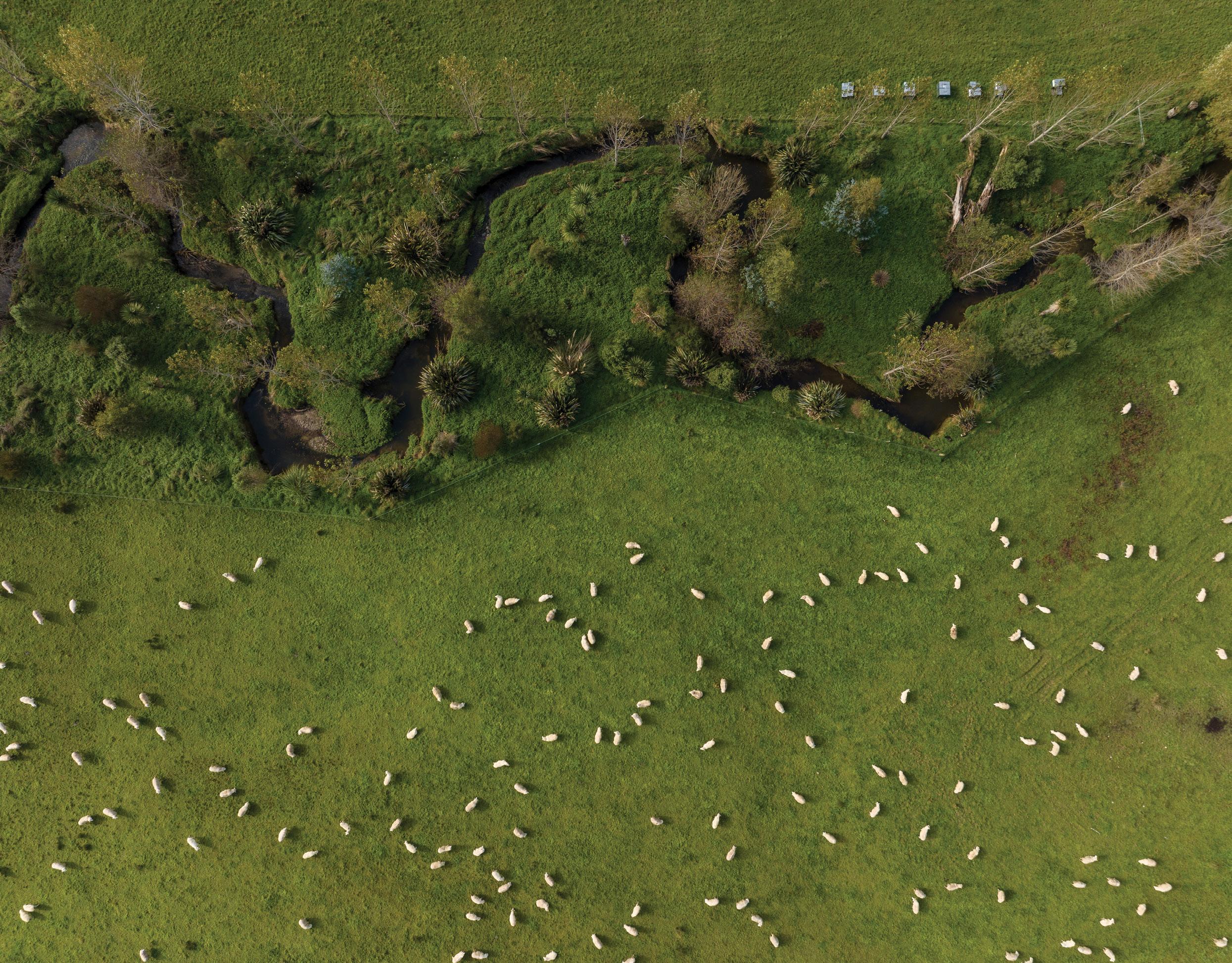
After some dams failed in the 2019 and 2020 droughts, the Whites decided to tap into two of their most reliable water sources and reticulate that water using solar-powered and gravity pumps on about 100ha of hill paddocks.
They spent about $10,000 on pumps and another $10,000 on troughs, pipes and tanks, so 90% of water is now reticulated.
Tim says they went for cheaper black plastic troughs because they are half the cost of concrete troughs and easier
to install. As long as they have water in them and are well set into the ground, they are fine.
They are trying to move away from using nitrogen but it is a get out of jail card especially when they need to grow feed in early spring to lamb on.
“Our other option is to reduce our trading numbers a bit – and we don’t get hung up on achieving a particular closing number for stock at balance date – before jumping into nitrogen or offloading stock early if necessary.”
At 30c/kg drymatter grown, nitrogen (N) use takes some justification in their system.
“There are not a lot of (livestock) systems throwing out that sort of return at present, so it needs to be well considered before we’d step in with N.”
Staying ahead of the compliance curve has always been important to the Whites.
They have a detailed farm environment plan which is being updated and have been consistently planting riparian, wetland and retired land areas of the farm. Critical watersource areas of the farm are all fenced and planted where appropriate.
Tim and Binds enjoy planting trees and they are great for the aesthetic appeal of the farm.
Planting of gullies and waterways hasn’t been an issue. Poles in the gullies are a natural progression for them.
They have avoided pines, preferring native species and poles for soil stability.
Pole planting has been ramped up in the past 18 months after damage resulting from heavy rains in February 2022.
They’ve tapped into the supply of poles from the Greater Wellington Regional Council and also developed a technique to source their own ecosourced poles. They planted 500 last year and planned 700 this July.
The extra poles are leaders off the regional council poles, soaked for a week, then placed in holes drilled with an 80mm augur. The key to success is to ram them well and to make sure the fine soil that comes out of the hole goes back
down with the poplar stem.
“We take leaders off when they are the size of a wrist and 2.5–3.5m long. They are a little bit ugly initially, but they straighten up nicely in the end.”
Survival rates are 80–90% and to qualify for the Emissions Trading Scheme (ETS), they’ve planted at 60 stems/ha and can still graze those areas too.
Native species are the choice for any retired areas, especially riparian strips, where there are fencing and plant subsidies available.
Running their farm through the Beef + Lamb New Zealand carbon calculator, it
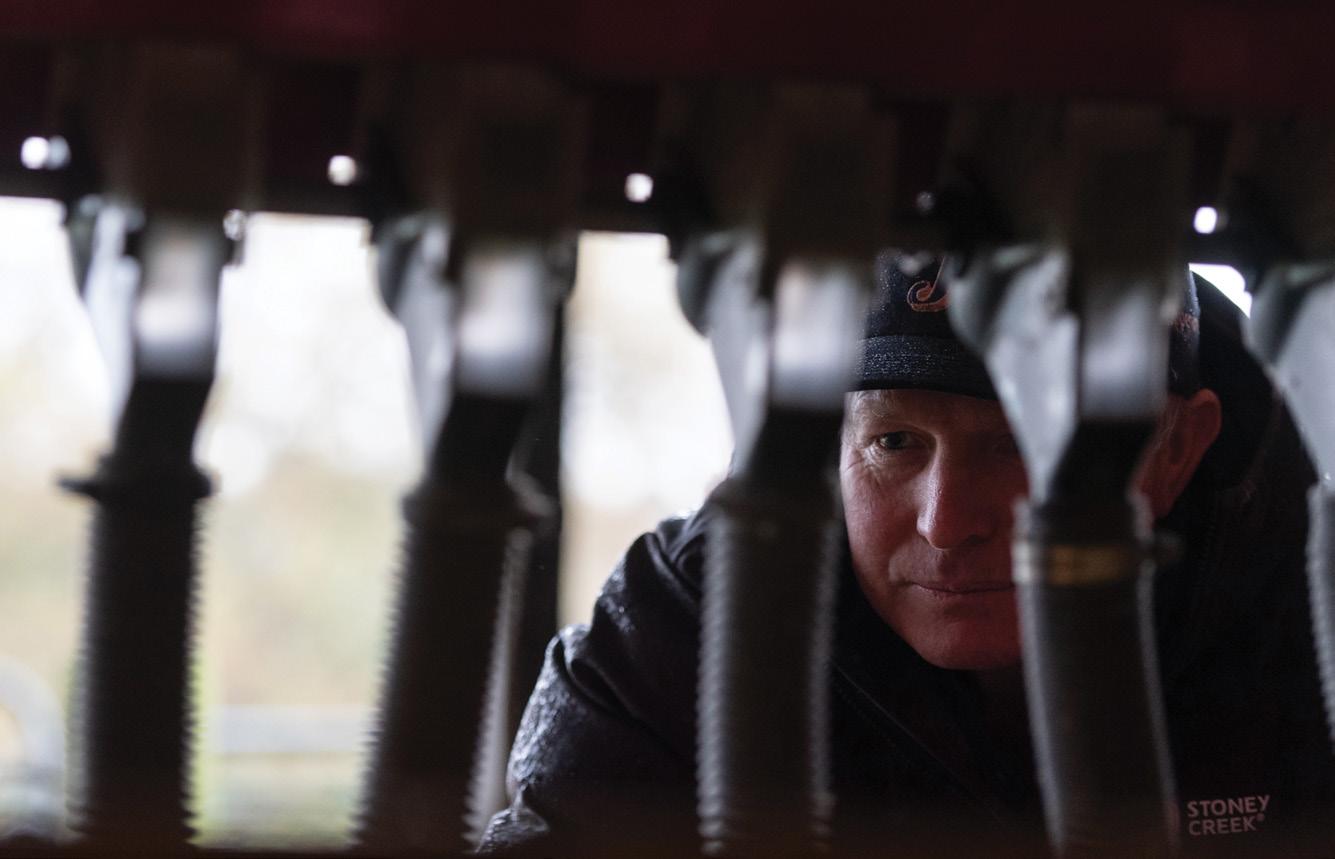
is generating gross emissions of 3.5t/ha, almost entirely from livestock.
Methane output was 55,000kg or 130kg/ha (13kg/su) so that the proposed He Waka Eke Noa price of 8–10c/kg, is $4400–$6050 of tax payable.
But with 8ha of poplars already registered in the ETS providing a 10t/ha offset at $55/t (current price), the Whites already have $4400 income to pay the tax.
By the end of 2023, they are targeting another 32ha of poplars, which would generate more than $20,000 at the $55/t carbon price, plus another 15ha of natives offsetting 5t/ha at $55/t for a further $4125.
“If we can get that up to $60–$70,000, that’s up to 10% of our farm income, which will be a big help when the tax on emissions rises in the future.”
A flexible and adaptive stock policy is vital in summer-risky Wairarapa.
The Whites are reviewing their lambing dates after a meat processor preference emerged for heavier carcaseweight(CW) lambs at weaning.
They had been steadily bringing their lambing date forward and aiming for a high percentage of prime lambs at 34kg minimum liveweight(LW) for a 14.5kg CW by weaning at 90–100 days. It required lambs to gain 320–375g/day LW from birth, a very challenging goal in the past two springs.
“The last two springs have been dogs to grow a lamb.”
Tim is seriously thinking of pushing the lambing date back to try to better match with their feed curve.
Upperwood’s location and cropping programme brings a good degree of safety for summer- lamb finishing, but there’s more risk moving lambs into the summer without consistent rains.
Their aim is always to feed stock just

Entering the Wairarapa Farm Business of the Year proved a cathartic and rewarding process for the Whites.
It pushed them outside their comfort zone, but preparing the entry was a rewarding process. They were forced to deeply analyse their farm business and values, then commit it all to paper.
Farm ownership started in the 1990s when they bought the first 130ha of Upperwood, and over the following five years they added another three blocks to create the 427ha farm it is
today. Some of the early purchases were at $2000–$3000/ha and they wondered how it would work.
“A lot has changed when you consider values today,” Tim says.
The land and buildings are owned in a family trust that leases it to a farming company that owns the livestock and plant. The Whites say the aim was to create a structure that would make it as easy as possible to leave it to the next generation.
At the same time as they bought their first part of Upperwood, Tim
to their genetic potential, but no more. They are on track to winter about 700kg/ ha LW, but it varies through the year. It depends on the trading component in the system. It was above 800kg/ha in March this year.
Before those two tough springs, the Whites had been sending 70% of their terminal-cross lambs prime off their mothers at the minimum 34kg LW. The lift to minimum 36kg LW means they have not achieved that percentage in the past two springs.
Kelso rams have been the maternal sire choice for the past six years in the Upperwood flock of 2000 mixed-age and two-tooth ewes. Rams are now joined from April 5.
Tim’s pleased with the Kelso genetics as a choice to stabilise the ewe flock after some tinkering with different breeds and trialling out-of-season lambing using Poll Dorset genetics.
“We wanted good growth rate, yield and fecundity all in one package and Kelso is delivering that.”
About 60% of the ewes are mated to Kelso maternal rams from April 5 to provide 800–900 ewe lambs which are then culled back to about 600 which enter the ewe flock. The other 40% of ewes go to Kelso terminal rams from March 25 for about 40–50 days.

A portion of the maternal rams are
started a role as a valuer for Wairarapa Property Consultants, working alongside Don Todd and Phil Guscott. For the next 12 years, they fitted farming with town jobs and a young family.
But at the age of 40, Tim made the call to come home to the farm full time.
“I really enjoy what we do.”
They have a modest scale which works to their advantage.
Tim says it is hands-on but he enjoys having only one boss to
then used for mating the ewe hoggets for additional replacements.
Tim regrets not investing more in his maternal sheep genetics when he started farming and is still frustrated by the “throwbacks” that appear from the old maternal genetics he was using.
“We’re keen to get mature ewe body weights down a bit but that is quite tricky because we want to feed them well to achieve the performance we’re after.”
The Kelso mixed-age ewes typically scan 175% (without scanning for triplets) and Tim estimates there are usually between 10 and 15% carrying three or more lambs.
The ewe hogget in-lamb percentage is building and this year, with 4–5kg more body weight average at mating time, he’s expecting more than 90% to be in lamb.
The Whites philosophy is every mouth on the farm has to be a productive one.
“Young stock are the real earners but you need older mouths to create the feed for them.”
Long- and short-term grazing of ewe hoggets has been phased out and more ewes and trading lambs added to compensate.
Tim says grazing ewe hoggets was a lucrative option for their business, taking on ewe lambs in December and returning them as 64kg two-tooths after they had reared a lamb on the farm as a
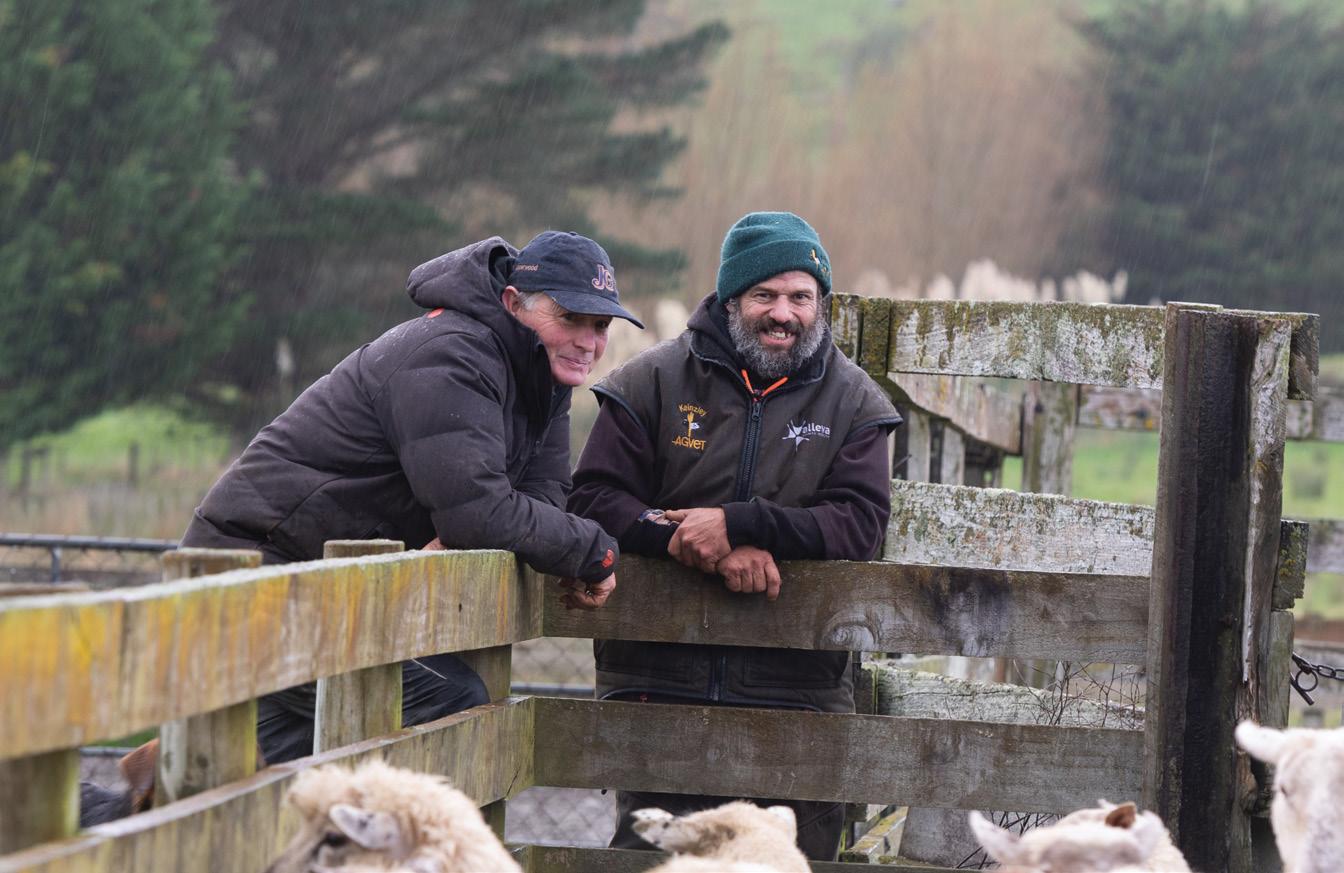
ewe hogget.
But achieving the target body weights in a variable climate and managing a big percentage of young sheep with all the inherent animal health risks led to a rethink.
“Adding value to our own stock stacks up on paper and gives me more flexibility.”
He says as they build the quality of the maternal flock, more ewe hoggets
will probably go to the maternal rams and they will keep their ewes lambs as replacements.
The new system still has sufficient flexibility to do a lamb trade if the season and margin allows.
Tim says a return to grazing ewe hoggets is “not fully off the table”.
Ewe hoggets are selected on type and weight before being mated to Kelso terminal rams. The target is a minimum
communicate with and that’s Binds.
“We often find our best decisions are made over our morning cup of coffee.”
Binds says her involvement day to day with the farm has been minimal, but she is on call when needed.
“Tim can rattle off all the details of the farm business off the top of his head, but his attention to other details like birthdays is lost five minutes after you tell him something.”
One of the competition judges Geordie McCallum says a huge strength of the Whites’ business is the
dynamics of the duo who run it.
“They are a fantastic team. Both have extremely good skills learned from external roles. They work well together because they recognise each other’s strengths and weaknesses,”
He says the Whites have no formal governance structure in place, but good governance starts with a strong husband and wife partnership.
He applauds the Whites’ balance of investments, both on the farm and off it, and their passion for having fun off the farm, including ski-ing holidays offshore.
“When Tim wants to get away for something, Binds will jump in and run this ship and vice versa, but this takes organisation and discipline to do it.”
The standout financial performance of the business is also notable.
“The gross farm income is not the best we have seen, but the efficiency and cost structure is the best we’ve seen,” he says.
“They use their management skills and experience to drive production, and they sustain the farm on the cash it generates.”
of 42kg however they were forced to drop that minimum last mating to get sufficient numbers to replace the grazing ewe hoggets that were dropped.
Farm consultant Ed Harrison says standouts in the sheep performance for the 2021/22 year were low deaths and missing at under 4%. Also a survival to sale for lambs of 143% in the mixed age ewes and 78% for the ewe hoggets, and a $168/head average for lambs sold.
Compared with the average price achieved by other farms in the same BakerAg FAB semi-finishing, summer-wet class, the Upperwood lamb price was more than $30 higher.
Net income from sheep in the 2021/22 year was $582,471 or nearly $174/ sheep stock unit, regarded as the best performer in its FAB class.
The number of lambs born per effective ha for Upperwood was 8.3, almost 2/ha higher than any other farm in the same FAB class.
He says farms with a high number of lambs born per hectare don’t generally win on dollars per head as well, but in this case, the Whites’ result was impressive at nearly $180/head.
He says the Whites were lucky to get big rains in Feb 2022.
“...to their credit, they had lambs on
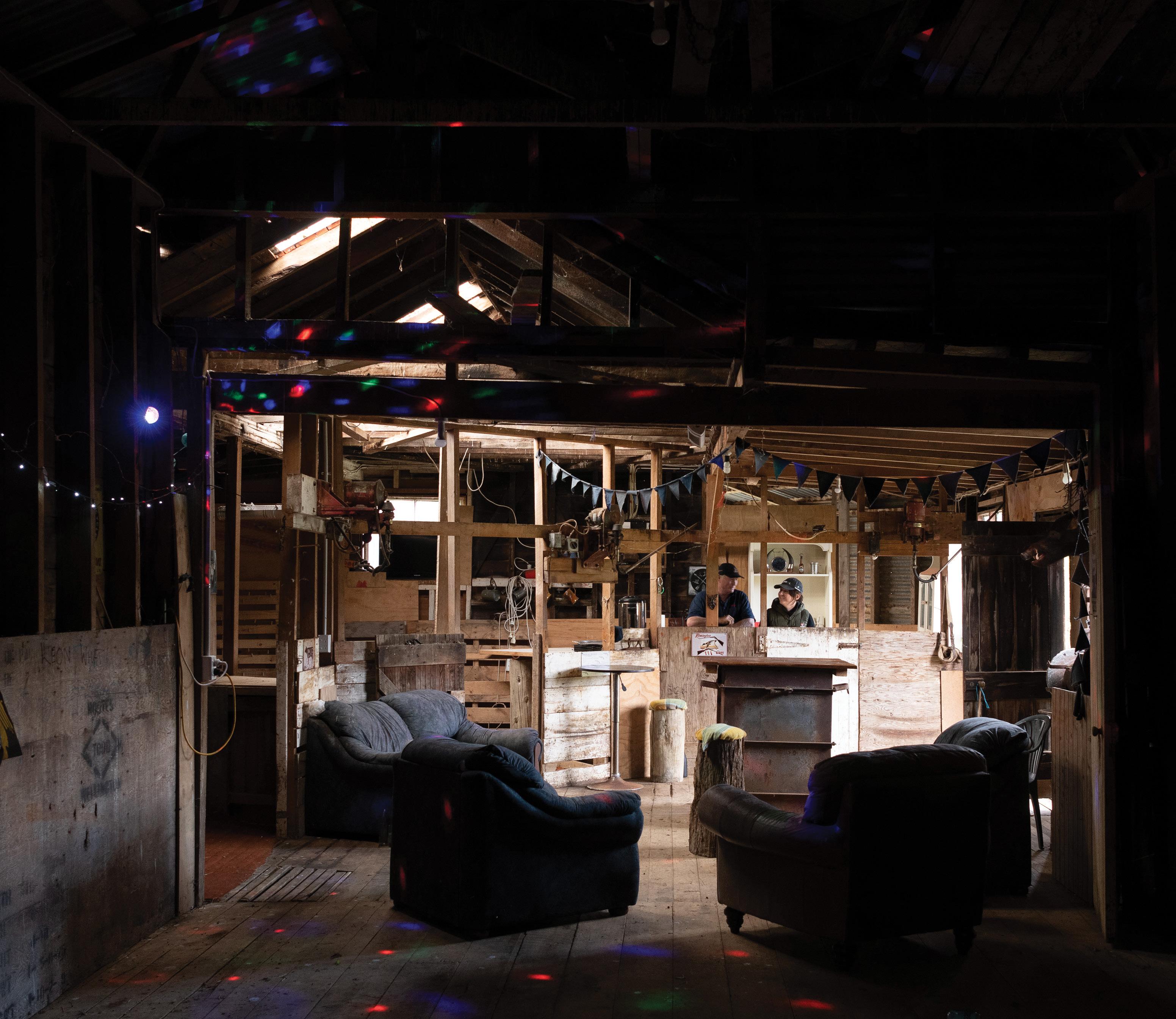
“...to their credit, they had lambs on board and they showed the ability to add the cream on top by chucking on an extra $30 to $40 a head on to their lambs that year.”
board and they showed the ability to add the cream on top by chucking on an extra $30 to $40 a head on to their lambs that year.”
Being aggressive and early with cattle buying is a successful formula for the Whites.
They’ve replaced buying in 100kg bulls and killing them at 18–20 months with two heifer finishing systems – a short-term spring option and an annual option.
When the average margin for their first year of annual heifer finishing hit $800, they were pleased the move had paid off financially.
A key to the success of the short-term August to Christmas heifer trade is being in the market earlier than most in the spring and backing the farm’s ability to grow grass to feed them. Buying two weeks later could mean a halving of the $400/head margin they achieved in the 2021/22 year.
Tim likes the “softer” option of heifer finishing over bulls, but admits he expects to take “a bit of punishment” this year because weaner calf prices were higher in the autumn.
Income per cattle stock unit in the 2021/22 year was almost $187.
For the longer-term finishing heifers, his aim is to buy 220kg weaner heifers in autumn, winter them in mobs of 40–50 and grow them at 500g/day. Then feed them to grow at 1.1–1.2kg/day from October to Feb so they are 300kg heavier and killable at 260–270kg CW.
“We’re just taking a break from bulls,” Tim says.
“They are good earners and easy to buy and sell, but they dig holes, wreck things and they are just bastards to manage.”
They are hard to box, there’s always a tail and he is always patching up something around the farm.
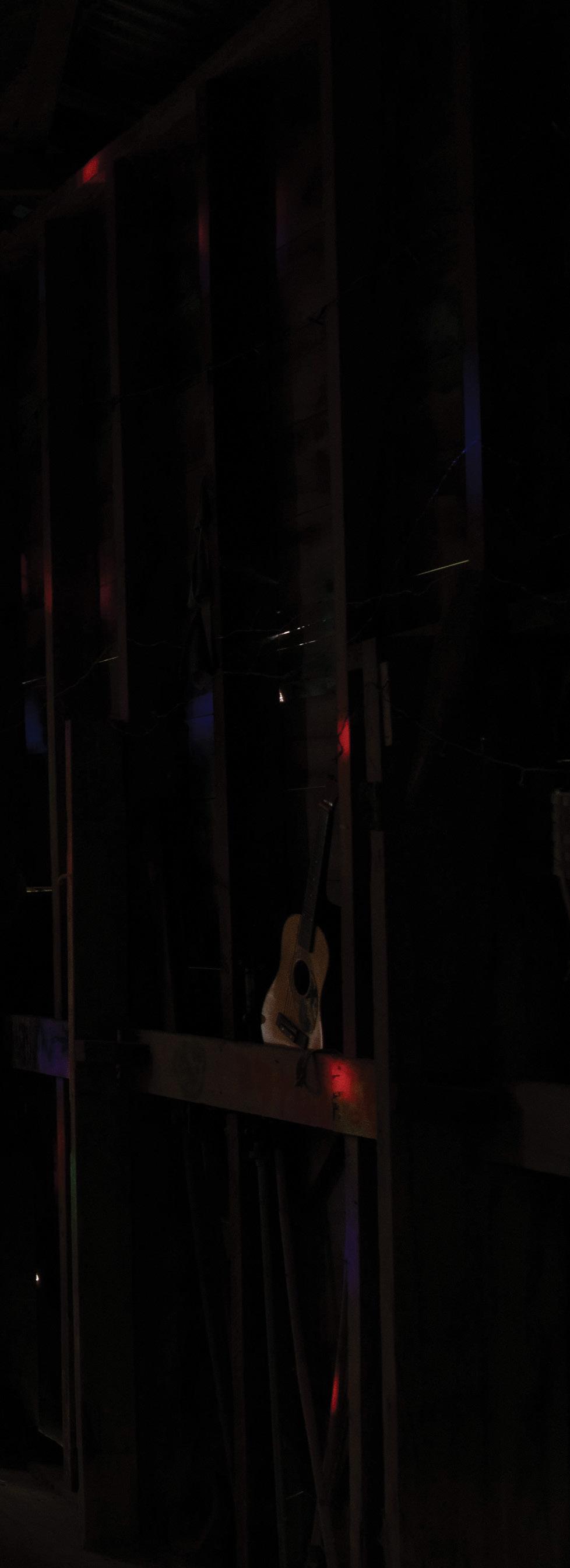
“We try to buy outside the grass hype.”
He is not worried about the colour of cattle and happy to buy smaller mobs.
“They just need good bone and type.”
Over summer, the heifer mobs do a bit of grooming work, rotating around
a group of paddocks, often returning to paddocks they have grazed before if there is sufficient regrowth. Ultimately, it is hoof and tooth and the ewe flock that manages feed quality.
They haven’t got big paddocks and Tim is not afraid to top paddocks with the mower if he can’t get enough stock there to control it or Californian thistles, the biggest weed on the farm.
“We want to drive a clover-based system here, so the last thing I want to do is spray out the thistles and knock out the clover at the same time.”
Tim is a fan of mowing the thistles first, then spraying with MCPA and Versatil when the clovers are dormant in the cooler months. A rotawiper is used as well, especially in chicory or cropped areas.
He supports online selling platform Cloud Yards and is happy to buy via bidr or through Feilding sale yards. One of the biggest limitations for his location is getting stock trucked back from Feilding to the farm because there isn’t always a truck from Masterton at the sale.
One change in policy is to increase the cattle percentage from 15% to 25% of total stock units. Mopping up sheep worms, prepping country for sheep and saving on labour are the motivations.
He’s also keen to move to once-a-year shearing too, to reduce his shearing costs. The plan is to have all sheep shorn by late February so there’s less wool and hopefully fewer cast ewes when they are set stocked for lambing. He is also hoping he can eyeball bodycondition score in the race to ensure those ewes can be separated from the main mob and preferentially fed.
Tim’s aware of the risk of wool yellowing with once-a-year shearing, but at $1.20/kg for the wool now, it is not going to impact the return enough to warrant a second-shear policy.
His Kelso composites don’t grow as much wool as a Romney and this was an influence on his decision to move to 12-month shearing.
A West Otago couple’s farm is limited by a lack of finishing country, but they are using good sheep genetics and feed strategically.
 By Terry Brosnahan.
By Terry Brosnahan.
High and faster growth rates are what counts for champion sheep growers
Amanda and Todd Perkins.
The Tapanui couple recently won this year’s Country-Wide West Otago TwoTooth competition.
Todd (56) puts the win down to good genetics and feed. The mixed-aged ewes and two-tooths are run together with scanning about 181% without flushing. The hoggets scan 70%, but the rams go out for only one cycle. Half the hoggets in lamb produce twins.
One of the competition judges, stock agent Shaun Tauti says the type of country the sheep are in, the stocking rate and the production all added to the win. The farm runs from 140m at the house to 600m above sea level, from rolling paddocks to extensive hill country.
Shaun says most impressive was the performance, the lambing percentage and lambs sold.
“It was a very well-rounded flock, brilliant sheep.”
The Perkins scored 92.7 points out of 100 with 57.7 for performance, 22 for flock evenness and 13 for breeding objective. The runner up Mike Power scored 90.7.
The couple also came runner up in the West Otago ewe hogget competition, which was won by Sam and Liz Barton.
The Perkins run 3100 RomneyCoopworth cross ewes, 900 replacements and 120 breeding cows on 770ha (700ha effective).
Amanda works as office manager for Stuart Timber in nearby Tapanui three days a week and helps out on the farm.
None of their three children, Sam (25), Izzy (23), and Hannah (27) with two

children, are farming but who knows what may happen. Todd’s brothers Glen and Scott came back to farming when they were 30 and 40ish.
At least 90% of the ewes are pregnant in the first cycle. The hoggets are lambing 70%.
The two-tooths are not lambed separately and over the whole flock it’s been 151% for the past five years, with usually about 4800 lambs tailed. This year, 100 ewes were dropped because of the dry summer, but the autumn has been good. Usually they mate all 900 hoggets.
Amanda says they ran Perendales for 15 years but changed in 2011.
Todd says the Perendale were great sheep, but after reaching 140% lambing, others were achieving 150% and he wanted to make use of hybrid vigour. They also wanted something less active as the couple got older.
“When you came into a paddock they would take off and mismother,” Amanda says.
They opted for Simon Carthew’s Tumeke Farming’s Romney-Coopworth cross and put his rams over the Perendales.
The hybrid vigour lifted the lambing by 10–12% and has been maintained.
Todd says the cross is a compact sheep, and like the Perendales they are good foragers on the hill country. They buy all their rams from Tumeke farming.
Rams go out to the terminal ewes on April 5, the main mob of ewes on April 18 and the hoggets, May 30. The hoggets only have the ram for one cycle and start lambing in late October, early November.
The terminal mob starts lambing in the first week of September and the main mob on the 13th. They use a Suffolk Supreme cross over the terminal ewe
mob, a Lamb Supreme over the hoggets. “They’re a bit like a Perendale – they fall out and up, wanting to go.”
Todd says out of hoggets in lamb, half of them have twins.
“The hoggets handle it, but you have to really feed the twins well.”
Tailing is in late October for the ewes, early December for the hoggets.
Many of the terminal mob ewes lamb on red clover and the weaned lambs go straight back on to it in early December.
The rest of the ewes in the paddocks, older and triplet bearing, are weaned about December 20. The hill ewes, singles and second cycle, are weaned about January 10.
Todd says weaning has become more flexible with good quality feed and not being so set on a fixed date.
Based on a five-year average, 50% of the lambs are sold store due to the lack of finishing country, but it is weather dependent. This year, fewer lambs were

“In winter the best place for a tractor is in the shed.”
finished because of the dryness. The Perkins kill the bulk of their freezer ewes before Christmas and hopefully before the schedule falls.
They kill their lambs through Blue Sky Meats and last year averaged $129/lamb (works and store).
This year they expect to average $104/ lamb because they only killed about 1300 lambs and the rest went as stores.
“This is probably the driest summer and the best autumn we’ve had,” Todd says.
The drop in farmgate prices might have been more palatable if the farm input prices hadn’t risen so dramatically. The biggest cost is fertiliser.
DAP has doubled over the past two years. Interest rates have almost doubled in the past 18 months.
Sulphur super is flown on to the steep hill country and gullies every fourth year to keep the cost down. The Olsen P in the rolling paddocks is in the mid 20s and the pH6.
Spreader trucks are used on easier country. About 250kg/ha of 20% Sulphur super is applied to paddocks annually.
The Perkins have a pasture renewal programme with a paddock renewed about every 10 years. It is part of a cropping rotation in which about 40ha of winter crops are grown.
About 20ha is double cropped, drilled in swedes and sown in kale the following year.
It used to be 50ha, but in the past four years they have also been sowing short-term ryegrasses: about 50ha of Feast, a tetraploid Italian, and Shogun, a tetraploid hybrid, to reduce the amount of winter crop, which lowers costs and gives more flexibility. Todd wanted to reduce the time a paddock was out of action between swedes and sowing kale. These grasses can also extend the seasons.
“They grow further into the autumn/ early winter and start earlier in the spring.”
The Perkins use cultivation, direct
drilling and a helicopter for sowing the grasses.
A helicopter will spray off a hill paddock in November and then seed it.
Todd says they get great results from direct drilling the grass after red clover. About 20ha/year of just red clover is grown for finishing works and ewe lambs.
He says there are no problems with bloat.
They have a short growing season, but when it grows there is a huge amount of dry matter.
“Quality feed and high weight gains.”
Todd likes the versatility of red clover and unlike other crops such as rape, the lambs can go straight on it.
Amanda says they started to fence waterways about 10 years ago to make the farming operation easier.
“Not because we had to.”
The paddocks have a creek at the bottom and a hill up the other side. The
ewes would lamb on the hill then come back through the creek with the lambs and they’d fall and drown.
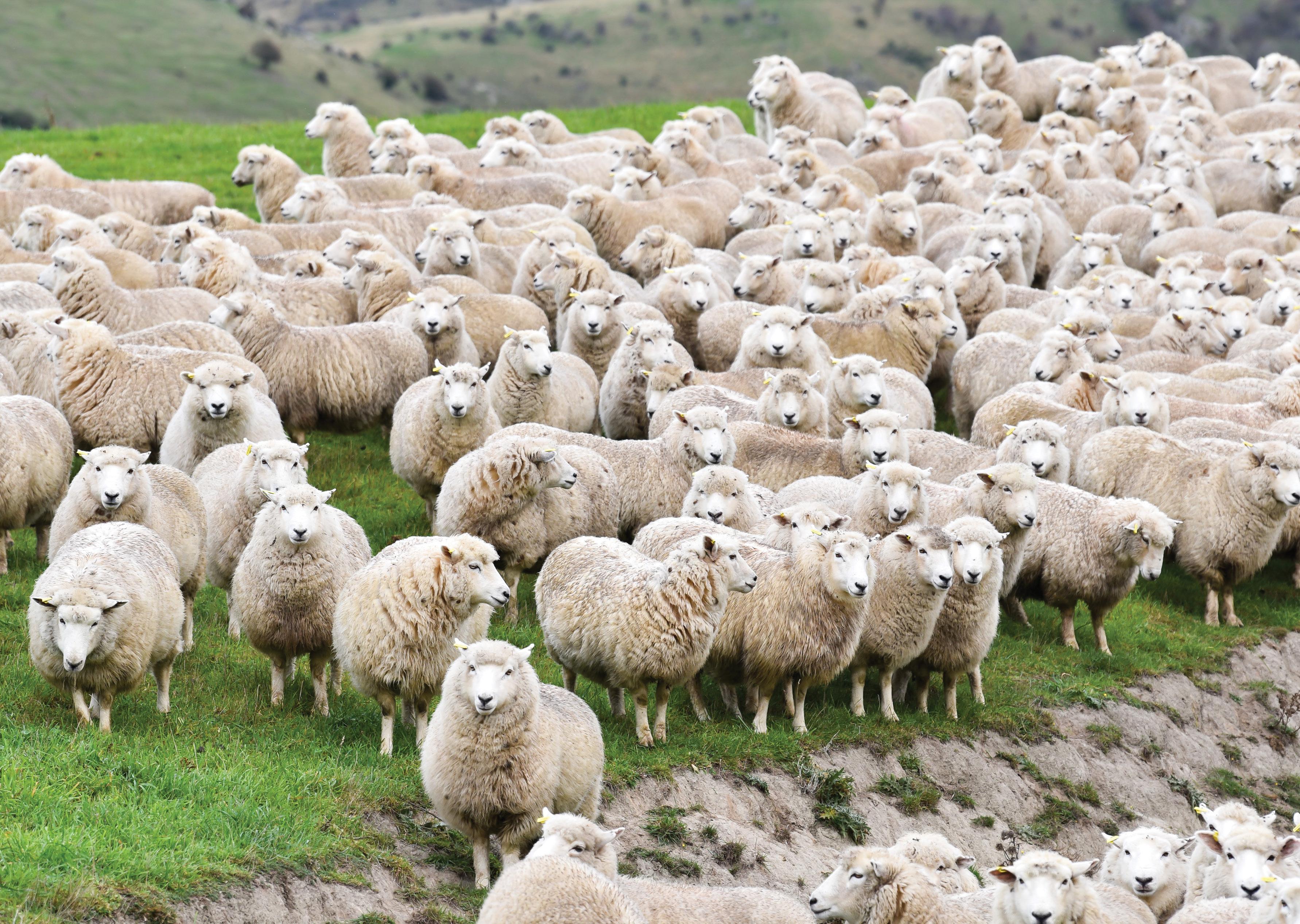
They started fencing the worst paddocks and kept going.
“You can’t do it all in one year,” Amanda says.
They have planted mainly toi toi for shelter in fenced-off creek areas which have grown well. They are also planting trees for shelter.
A stock water scheme was put into a block they used to lease and later bought. Once it was in, 90% of the stock kept out of the waterways.
The water comes from the Moa Flat scheme and when Amanda and Todd first took over the farm in 2001 there was just one water tank. Now there are five 30,000 litre tanks.
Like most farmers they still need to be able to give stock access to waterways if
the water scheme fails.
“Animal welfare is the number one concern,” Amanda says.
Most of the hill blocks’ stock water comes from springs and the intensive paddocks have troughs.
Amanda and Todd run 120 Angus Hereford cross beef cows and sell most calves at the Mt Benger weaner calf sale. A handful of small calves are wintered. They buy in replacement in-calf heifers.
After weaning, the ewes are rotated around the hills, except this year because the dry feed ran out. Luckily the good growth in November allowed them to make extra balage and that fed the ewes.
Todd says they don’t usually make much balage because of the steepness of the hills.
“In winter the best place for a tractor is in the shed.”
The ewes used to be shorn annually, but last year feed was tight in autumn
so Todd decided to shear in April before the ram went out, rather than June when there was little feed.
So they were shorn in January this year and then will be back to annual shearing in June because of the price of wool and shearing cost.
Todd says shearing once a year did not affect scanning rates or wool colour. They shear ewes in June to avoid yellowing, which they got through shearing in January.
The hoggets are shorn at the end of September/early October. The ewes go on to a crop in August and spend four to five weeks on it. They then have a week or to two on grass.
Todd checks the paddocks for casts but leaves the hills alone. With the high scanning rates there are not many singlebearing ewes. They twin-bearing ewes go up the hill, older ewes, the triplets and hoggets stay in the paddocks.
Flystrike has become worse on the farm but the Perkins have their own jetting race and are able to treat the sheep with Cyrex as they bring them into the yards. If they relied on a contractor all the sheep would need to come in together. Todd hasn’t seen lice for years.

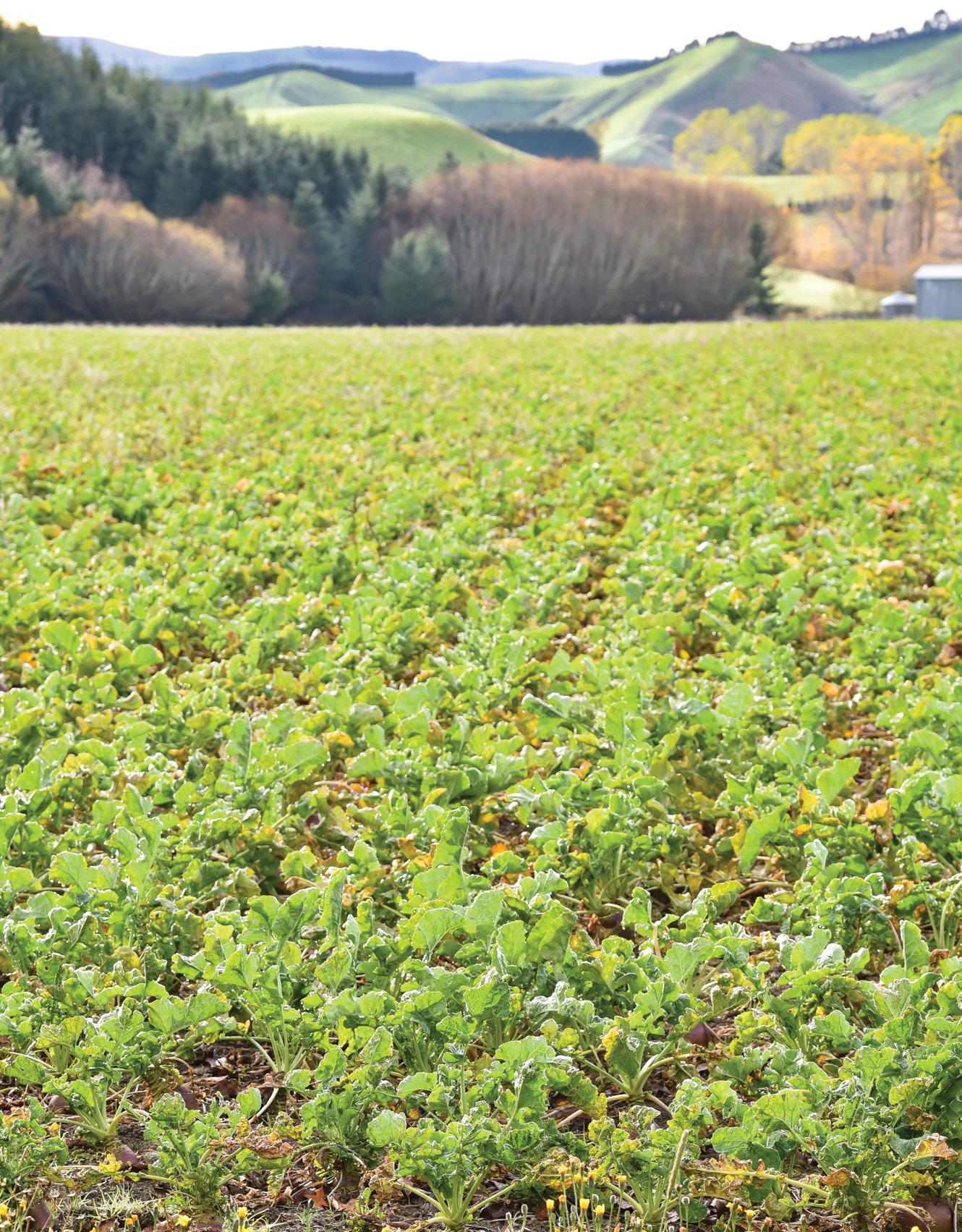
Faecal egg counts are taken and reduction tests showed some resistance in the white and clear drenches.
“The rest were looking good and we will keep monitoring,” Todd says.
When the hoggets come back from grazing off farm they get a quarantine drench, Zolvix or Startech. The Perkins alternate their drenches, Cydectin and a triple. Their animal health regime is standard, a toxo, campy and Depodine (iodine). Any vaccines have selenium in them.
“They get too light, they go to the works.”
After weaning they will condition score, especially the hoggets, and preferentially feed the lighter ones. They tend to be the ones that reared twin lambs.
Rural professionals often say unexplained production losses in beef cattle can sometimes be caused by unseen subclinical facial eczema.
By Dr Ken GeentyThe debilitating disease, facial eczema (FE), is caused by liver damage from the fungal toxin sporidesmin ingested with grass-based pasture.
Veterinarians can test for FE-induced liver damage from blood levels of the enzyme GGT (gamma-glutamyl transferase). Also, meat processing plants can sometimes provide information on bovine liver damage, though regional data from them are patchy.
The Government’s Animal Health Laboratories (AHL) have detailed postmortem data on tissue samples from animals suspected by farmers or vets of having FE. However, this information can be skewed as it only contains results from animals tentatively thought to have FE.
Farmers should be vigilant in most years between January and May to detect danger periods from rising spore counts on their farms. Most veterinary practices have spore counting services
.
and can advise of looming risk periods and treatments. Comprehensive weekly regional consolidated reports on spore counts, indicating a natural FE challenge to animals, can be obtained from the Gribbles Veterinary link – https://www. gribblesvets.co.nz/facial-eczema-
These reports will show when regional spore counts start trending above the FE risk level of 30,000 spores/gm of pasture. This should be a trigger for farmers to begin preventive and remedial treatments.
In 2020 I examined data from meat companies and AHL, supported by Beef + Lamb New Zealand, and found it to be inconclusive. However, it did show prevalence of sub-clinical FE wasn’t as great in beef cattle as in dairy. Incidence varied markedly between years, and the disease was most common in North Island areas and to a lesser extent in the central to upper South Island.
FE is not considered as serious in beef cattle as in dairy cattle and sheep with
no solid quantification on prevalence. It’s well known that in some areas with humid weather the disease can seriously affect ruminants grazing grass-based pastures when ground temperatures are above 12C and humidity is high. Animals affected include cattle, sheep, deer and alpacas. Horses are not susceptible.
The threat is greatest when rain follows a dry spell and there is dead litter at the base of the pasture. Conditions ideal for mushrooms also favour the fungus Pithomyces chartarum which produces sporidesmin, the toxin causing FE.
A couple of years ago the farmer-based facial eczema working group discussed FE in beef cattle with facilitation from Ruakura geneticist Neil Cullen and Hamilton-based AgFirst consultant Bob Thomson. Main points were that beef cattle are more tolerant than other ruminants and tend not to visually show clinical signs. There is greater prevalence in dairy and dairy cross animals.
Although liver damage data from meat processing plants was inconclusive, it was thought sub-clinical FE is probably much more widespread than farmers realise. A DairyNZ supported survey a few years ago showed widespread sub-clinical FE not visually evident in dairy cows.
More recently, central North Island consultant and Wormwise manager Ginny Dodunski has said for every blood or post-mortem liver sample submitted to animal health laboratories there may be several visually diagnosed cases not sampled but instead used as a trigger for treatment. And former vet Jeremy Leigh, now farming in north Waikato, said that Friesian cross beef animals appear most susceptible to FE. He considers traditional beef breeds such as Angus probably have greater natural resistance to the disease.
Jeremy noted that FE resistance had been successfully bred into sheep in the area so for them the disease was not a problem.
The cost of FE to livestock industries is huge. Past estimates by the FE working group show an industry average of more than $500m annually with beef cattle predicted to contribute up to $80m if
incidence approaches that in sheep. However, this extent is unlikely as beef cattle, particularly on hill country, often graze pastures not presenting an FE challenge.
If spore counts rise above risk levels, beef producers should contact their veterinarian for procedures to test for sub-clinical FE. This will probably involve collection of blood samples from some animals.
Producer industry groups B+LNZ, DairyNZ and Deer Industry NZ are actively working to combat the potentially worsening FE problem and have helpful information on their websites.
Farming areas most affected by FE are generally north of Taupo and the east coast north from Hawkes Bay. But there is wide variation between years, depending on climate. A severe outbreak in 2016 included the Kapiti coast and large parts of the South Island.
Ruakura scientist Dr Margaret Di Menna predicted some time ago that average season historical FE risk areas, estimated at about 20% of available grazing land, would increase to a
There are several options for farmers for prevention and treatment of FE including –
• Early treatment of animals with zinc, which lessens the toxin’s impact.
• Spraying pastures with fungicide to kill the fungus.
• Removing animals from grass-based pastures to safer pastures or crops.
• Breeding for FE tolerance using proven sires.
predicted 70% with three degrees global climate warming (Di Menna et al. 2009, NZ Journal of Agricultural Research). FE experts say the bad FE year of 2016 surpassed this prediction with much wider areas affected.
The toxic fungal spores containing sporidesmin eaten by grazing animals cause damage to their liver and bile ducts. Because they can’t release bile and waste products they become highly photosensitive with chlorophyll overload, often causing skin around the face and points to break out with weeping dermatitis and scabby rashes around the face and legs.
Distressing symptoms with clinical FE include frequent urination, restlessness, rubbing heads against posts and gates and seeking shade to avoid sunlight.
The vast majority have unseen sub-clinical FE
Importantly, animals showing these external clinical symptoms are only the tip of the iceberg. For every affected animal seen there will be five or 10 others with unseen sub-clinical FE. In a herd of beef cattle with up to 20% clinical cases it’s very likely 100 percent of the animals have sub-clinical FE causing lower production and profit. Animal deaths often occur with clinical FE.



Nearly 20 years ago when I was on one of the Ovita committees, there was a lot of excitement about what DNA technology could do to fast track the genetic gain being made in the sheep industry. It has done just that, with a number of tools now available to stud breeders.
The availability of that to commercial farmers was always talked about, with the big one being able to link lambs born to their mothers. Selecting only ewes that scanned and weaned two lambs for breeding replacements would add massive pace to the genetic gain in the flock, for example.
I remember a data set from a commercial flock that manually tracked lambs to mothers and only selected ewes to breed from the weight of lamb weaned. Over three generations the weight of lamb weaned per ewe had lifted by more than 20%. Using DNA to link lambs to ewes was going to be a game changer. But the price of that DNA technology never came down enough to allow it to be used much at a commercial level. Finally, that has changed, and it could well become an added tool for selection on commercial sheep farms.
When that same data collection can be used to select for production traits
and not just parentage, it could be the gateway to huge gains. To date, most of the genetic gain has been via the ram because there have been limited options for selection within the flock, these just being using scanning data and lambing outcome. Long gone are the times when weighing fleeces was a key selection tool.
That DNA technology is science at its best. Science has backed the massive progress that our livestock industries have made and we pride ourselves on how much of what we do is based on science.
A lot has changed since I graduated from vet school. When I look at the drug resources available, the knowledge of parasite behaviour, or the knowledge about the metabolic state of dairy cows, what we have now is massively different – all the outcome from a science approach. Most of that science was not challenged and has been largely implemented.
But more and more science-generated outcomes are being challenged or ignored. Take our soil science, which is probably the most comprehensive in the world; we know so much about our soils and what they need. With this very strong science background it is surprising how easily alternative fertiliser
and grazing systems have gained ground. Their entry into the NZ market has been based on outcomes in exotic soils. These being different types of soil, different ages of soil and different management systems on those soils. With no science to show that they are applicable to our soils, they have gained traction. Time may well yet expose the folly of these claims.
The science that is getting misinterpreted is generated from surveys
Trevor Cook calls for good, reliable science to enhance our farming systems, and says it’s a mistake to misinterpret or ignore scientific outcomes.
or linking an outcome to a particular factor. While the science behind gathering that data will be valid, it is not a cause and effect study, so does not prove the link or survey result. The recent negative press about the health effects of eating red meat is firmly in the camp of an association. In no way is it proof. The signed rejection of that claim by 1000 scientists shows up the fallacy of the survey result being presented as a valid claim.

The focus on methane has and is leading to some very good science activity. Selecting livestock on their methane outputs sounds logical as a means to lower the outpouring of methane into the atmosphere. The technical science around that measuring is impressive but fails to look beyond that claim. It is looking more and more like those lower methane output animals have a smaller rumen. Consequently they are less efficient, have a lower feed
conversion efficiency and will grow more slowly, and so destroy the perceived benefit of emitting less methane. But the story sounds impressive. Of course the whole science around methane and its role in global warming while valid is being either ignored or misinterpreted. In exactly the same camp as ignoring or misinterpreting science outcomes is a large amount of the environmental regulation. It is frightening just how much is being put into place without the backing of published science.
Riparian strips, cropping slope, nitrogen applications, nitrous oxide contamination related to animal type, methane emissions and sequestration are many of the items that farmers are being forced to implement when every one of these is subject to a valid science challenge. Some of it has got into the silly camp, like two wires instead of one or six metre riparian strips instead of four.
What I said at the start we need to respect and value. Our farming systems are based on good science.
“With this very strong science background it is surprising how easily alternative fertiliser and grazing systems have gained ground."
Trevor Cook is a production animal consultant/ veterinarian in Feilding.
Three weeks out from weaning his hill country cows, North Canterbury farmer Andy Mason has already selected his heifer replacements.
Using genomic tools, Andy has identified the heifer calves most genetically valuable for his beef breeding operation. As long as they are phenotypically sound, they will be retained, mated as yearlings and used to breed the next generation of replacement heifers.
Fast-tracking genetic progress is typically the domain of stud breeders,
but Andy is a commercial farmer with a passion for breeding top-quality livestock. He is prepared to invest in the tools to help him breed animals that will drive the future productivity and profitability of his herd.
Andy is part of the Next Generation Herds, a tranche of Beef + Lamb New Zealand’s Informing NZ Beef (INZB) programme. The seven-year INZB partnership, between B+LNZ, the Ministry for Primary Industries and the NZMeat Board aims to boost the sector’s profits by $460m during the next 25 years.
Commercial farmers contribute to genetic evaluations through the recording of data and incorporating it into breeding value predictions. This increases the accuracy with which breeding values can be estimated.
Andy and his wife Angie farm 40 hectares at Amberley House in Amberley and 1000ha of hill country in the Lowry Peaks Range near Culverden.
Their cattle operation is mainly based at Culverden where they winter 350 Angus breeding cows (mixed-age and R2s). The breeding cows are the only livestock class on the farm other than up to a dozen horses from Amberley House’s sporthorse breeding stud.
FARM FACTS: Farm 40ha and 1000ha, North Canterbury
• Run 350 commercial Angus breeding cows
The primary objective of the Masons’ cattle operation is to breed quality beef cows that produce calves that are sought after by regular buyers at weaning.
• Most calves sold to repeat buyers at weaning
• Next Generation herd, Informing NZ Beef
• A focus on speeding-up genetic gain • Heifers are used for breeding replacements
• Invest in top-quality yearling bulls • 10% of in-calf cows culled every year
• Genomic tool used for selecting replacement heifers.
The replacement heifer calves and about 70 of the steer calves are trucked to Amberley after weaning for growing
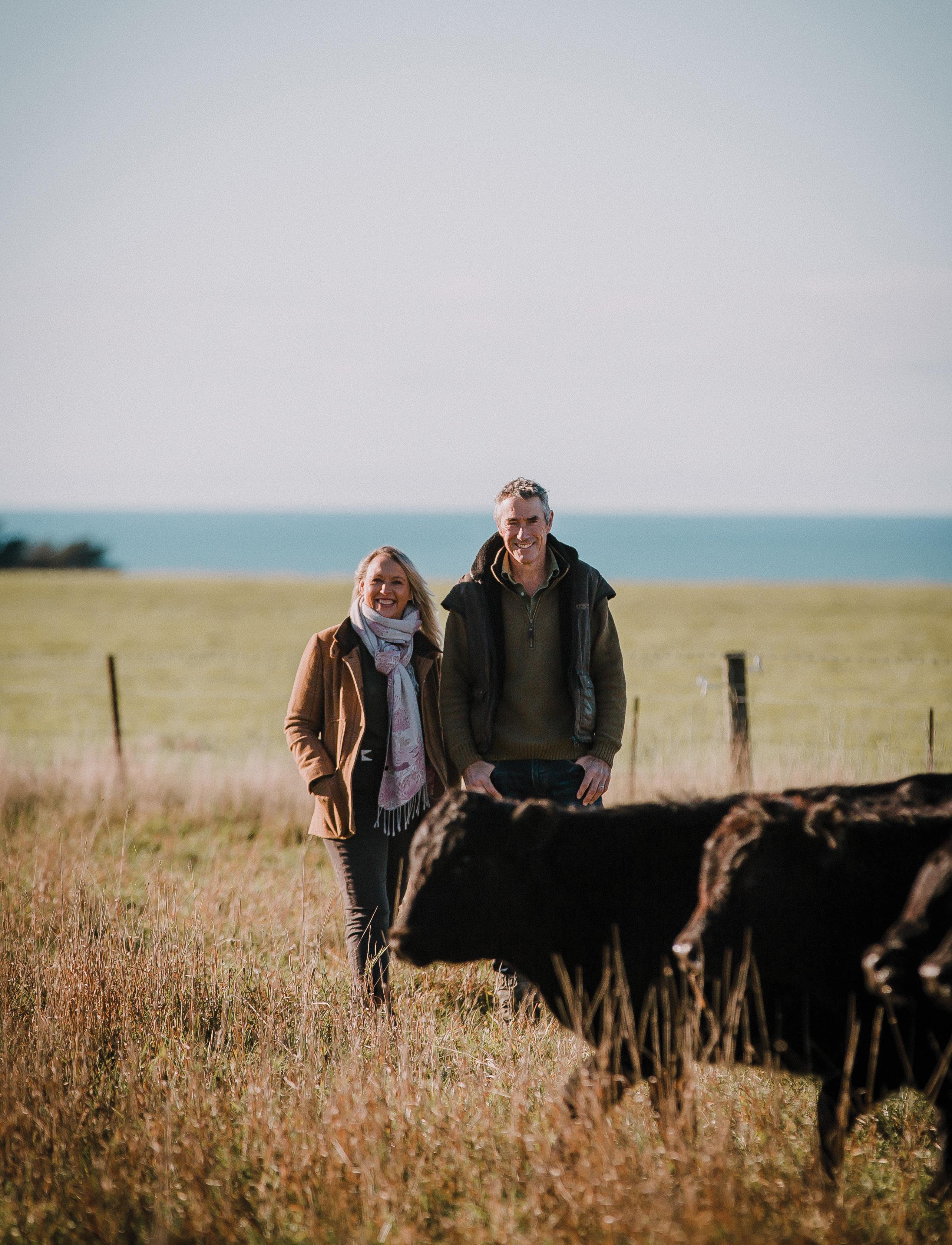
out, and in the case of the steer calves, finishing.
Andy enjoys seeing genetics expressed in his finishing cattle. But nothing compares to seeing the productivity and profitability of his female cattle improve through genetic selection.
In the lead up to weaning in the third week of April, the cows and calves are mustered off the hills and held in 4ha of deer pens behind the yards for a few days, supplemented with hay.
This helps settle the cows and calves
down before weaning and pregnancy scanning.
This year, all the cows will have tissue samples taken as part of Next Generation Herds for genomic testing and to determine the parentage of each animal. The cows are also given animal health treatments, including long-acting selenium, and about a third of the cows are drenched based on body condition.
The bulk of the steer calves and nonreplacement heifers are sold directly to repeat buyers through PGG Cheviot livestock agent Nic Denton.
“Our agent Nic does a great job managing these relationships for us,” Andy says.
The replacement heifers and steers selected for finishing are trucked to Amberley.
“We haven’t sold anything at auction for four years. We have the same buyers who buy off us on the day at an agreed price per kilogram.”
The price is based on recent calf sales and the calves are truck weighed.
Along with the dries and 10-year-olds, another 10% of their in-calf cows are culled every year to allow room for the heifers coming through.
This year, structural assessor Bill Austin will go through and select the animals that don’t suit the Masons’ programme. These will be sold as pregnancy-tested in-calf cows.
Three years ago, in a bid to tighten up their calving pattern, the Masons took the bull out three weeks earlier than usual and sold the dries.
“We could afford to do this because we had a good number of heifers coming through and the effect on our average calf weight was massive,” Andy says.
At Amberley House, the 85 heifer and 70 steer calves are once again held in pens for a few days and given a 10-in-
Despite being commercial, hill country beef breeders, the couple use genomic tools to select replacements and speed-up genetic gain.


"We haven’t sold anything at auction for four years. We have the same buyers who buy off us on the day at an agreed price per kilogram."
one vaccine, drench and a copper bullet. They are then rotated around pasture paddocks where they get used to moving through gateways and being handled.
In late autumn, they are run onto winter forage crops on daily shifts. Andy and Angie have been growing rape and kale, but this year have grown fodder beet as an alternative to rape to increase yield and extend feed utilisation into spring.
The yearling heifers are mated at Amberley and depending on how the spring holds out on the dryland
Amberley House paddocks, may be shifted mid-mating back to Culverden.
While Andy acknowledges that this is hardly best practice, they only ever get a handful of dries in their heifers and these are sold.
“I often wonder if it’s the more nervy ones that get affected by trucking in very early pregnancy.”
The bulls go out to the heifers on November 9 and the mixed-age cows on November 20.
In the past they bought the majority of their bulls from Te Mania, but in recent years Andy has sourced most of them from the Blacknight stud in Nelson’s Rai Valley. He says many of the sires the stud uses in its AI programme have strong maternal as well as growth traits and are well known in the United States and Australia.
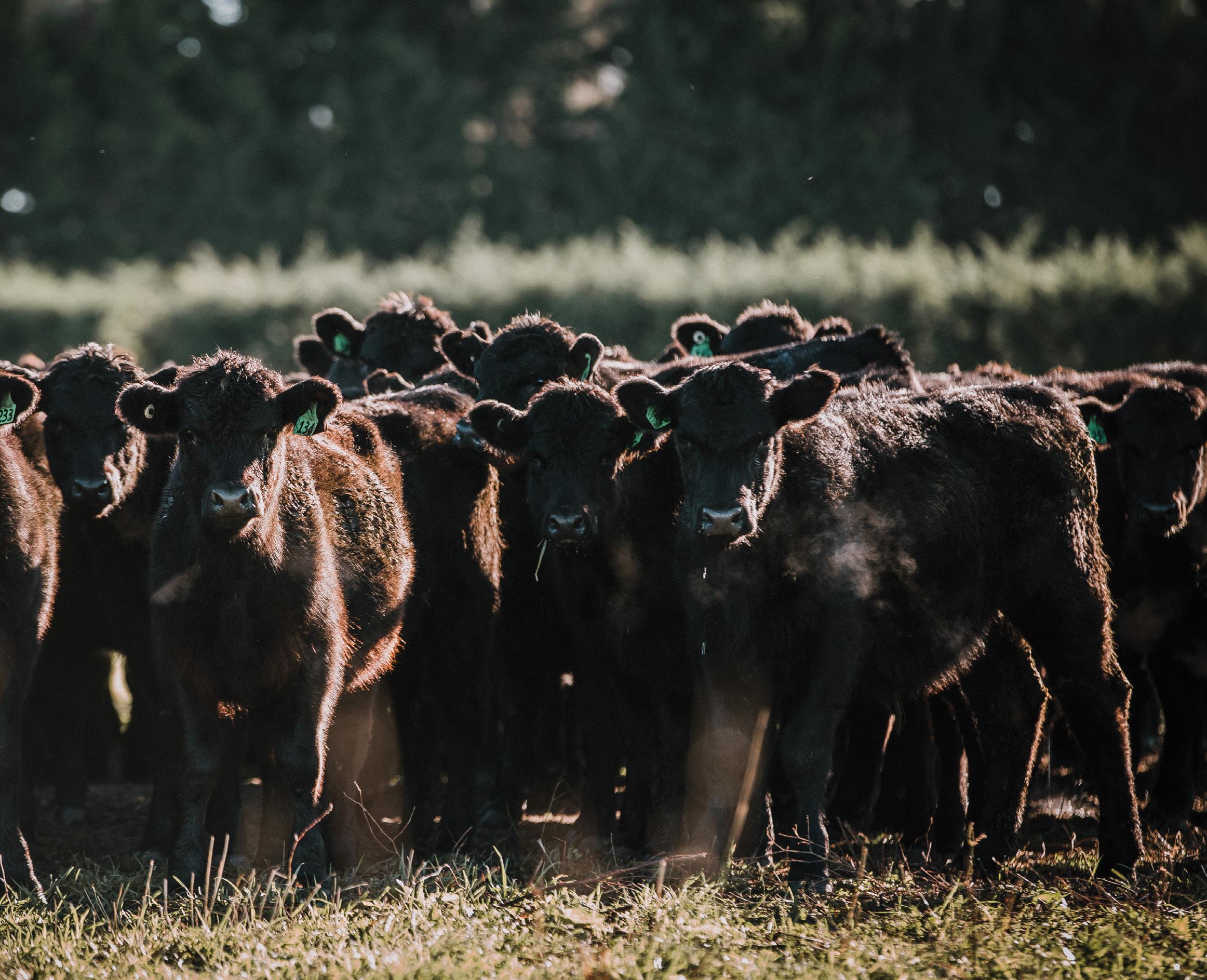
“They have so much more data than what we can get in NZ, increasing the accuracy of what you’re actually using.”
Andy says when selecting genetics, he wants a stud quality bull at a
commercial price and he particularly wants top-quality yearling bulls that can be used over the heifers to breed replacements. They are then used in the subsequent three to four years over the mixed-age cows.

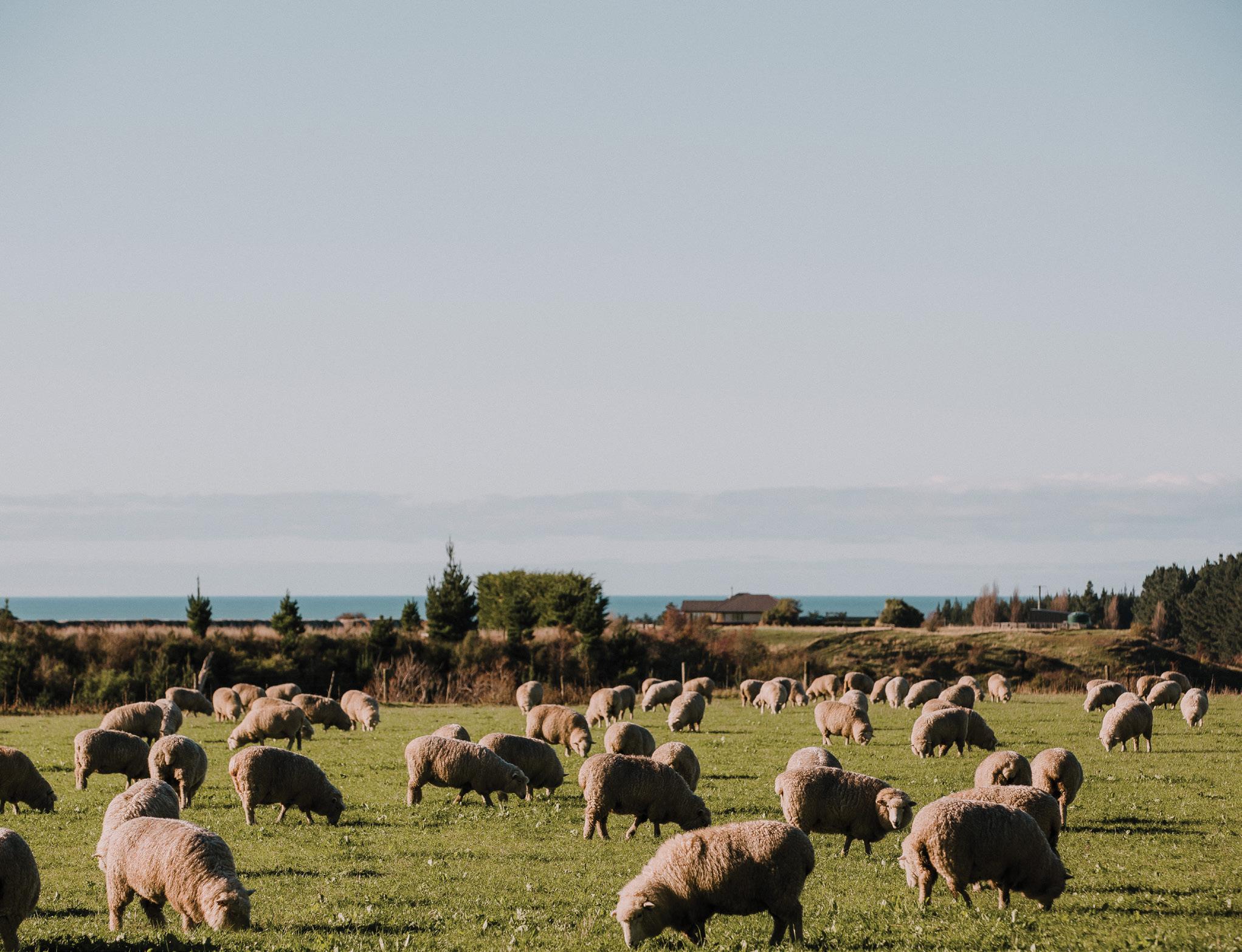
He has been frustrated by the lack of quality genetics available in the yearling bull sales, as most studs will retain their best yearling bulls to be sold as two-yearolds. He has taken heed of advice offered to him by Te Mania stud’s Will Wilding who told him to think about his heifers as being his best animals and therefore the animals that should be used for breeding replacements.
“I got stuck with how to progress genetically using these heifers and found a match with Blacknight. They understood my problem and can supply me with good yearling bulls
Opposite page, top: The couple farm 40ha at Amberley House near Amberley and 1000ha of hill country near Culverden. Bottom: Replacement heifers and 70 steer calves are wintered on forage crops. Right: Angie and Andy share a passion for breeding top quality livestock.
supplemented with two-year-olds bought at their public auction.”
Andy and Angie run a team of 11 or 12 bulls at mating. Seven (plus a spare if one’s available) are put to the 270 mixed-age cows which are run in one mob on steep hill country over the back of the range. Two bulls go out to 80 recently calved R3s on the warmer Culverden faces where they wintered. Two yearling bulls are put to the 85 heifers at Amberley House.
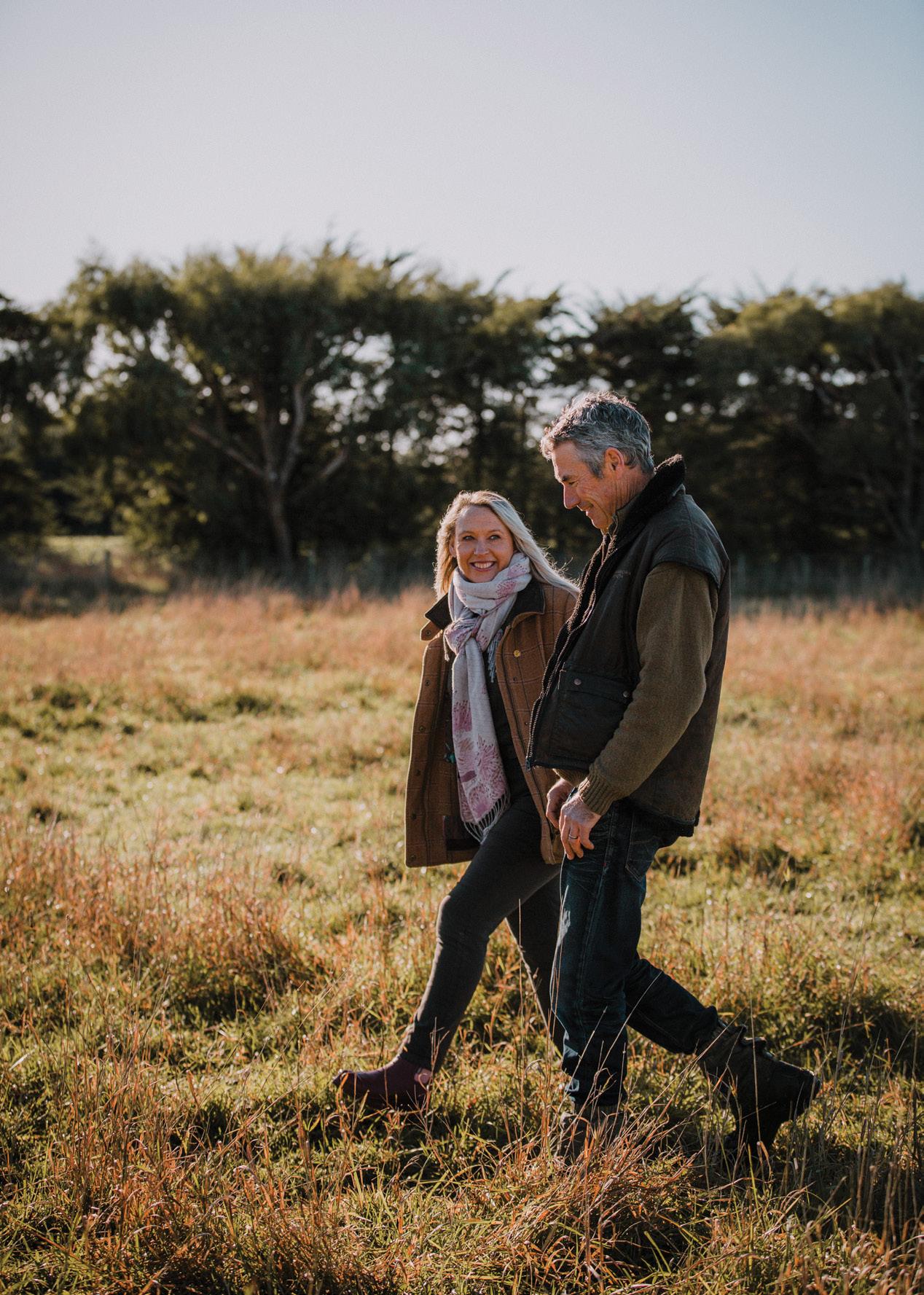
Andy says a good temperament is critical in their bulls as they cannot afford to have bulls injured through fighting, especially in the big mixedage mob. They also don’t want bulls in remote country posing any risk to Andy or his other musterer – his very active 78-year-old father David.
The mixed-age cows, which are spread out over the hill country over calving, are consolidated into one mob around calf marking, generally a week or so either side of mating. They stay in that mob, which grows to about 650 head once the R3s and their calves are added in over the new year.
They are then rotated around the hill blocks every seven to 10 days over summer until weaning.
In the past, Andy selected his replacement heifers based on weaning weight, taking the heaviest half, but this selection method never sat well with him. He felt he could simply be selecting animals that were born early.
So, wanting to take a more scientific approach, he crunched the numbers. He worked out a $6000 investment in the genetic tool Inherit Select would quickly generate a sound return. Also, by lifting sale heifers at weaning to the average weight rather than selling the lightest
half, would more than cover this cost.
“Keeping heifers based on liveweight alone is a very ham-fisted way of selecting replacements.”
As he was already taking tissue samples for Next Generation Beef, it was a matter of working with Zoetis to generate the data that would allow him to select the heifers that carried the genetics most suited to his operation.
“We’re selecting bulls based on EBVs –why not use them to select our heifers? Surely we must make faster genetic progress.”
Andy has a run a rough ruler over the cost of doing AI over his heifers as a way
to speed genetic progress and believes in the first year it’s about cost neutral (not counting a time cost). However, he believes it is better to invest in quality yearling bulls that can then be used for up to four years or more.
Because they are still growing, bulls bought as yearlings tend to be more robust when grown out in commercial hill country conditions and are likely to last longer.
“They just don’t have breakdowns like some fast grown two-year-olds.”
He says there is typically very little shift in EBVs between one and two years, so he is happy to pay a premium
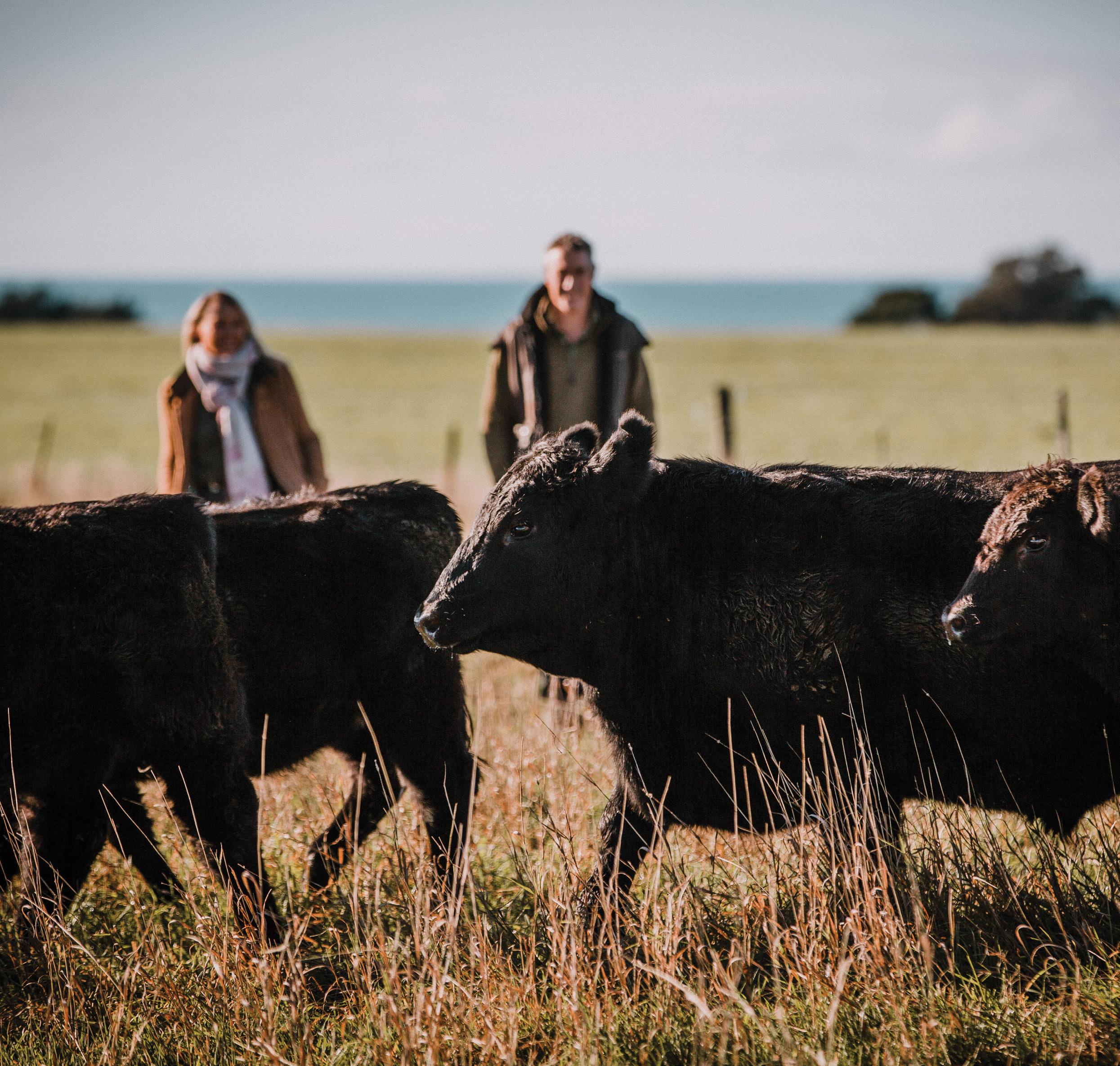
for young animals with the right genetic and phenotypic package.
“It seems to me it’s the most appropriate way to make rapid genetic progress with a good eye on the commercial aspects.”
The information gathered through the tissue sampling also helps identify the bulls producing the most replacement heifer calves, as well as the most active bulls.
“At our bull-to-cow ratio of 1:40, we should be getting up to 17 heifers from each bull after allowing for dries and culling,” Andy says.
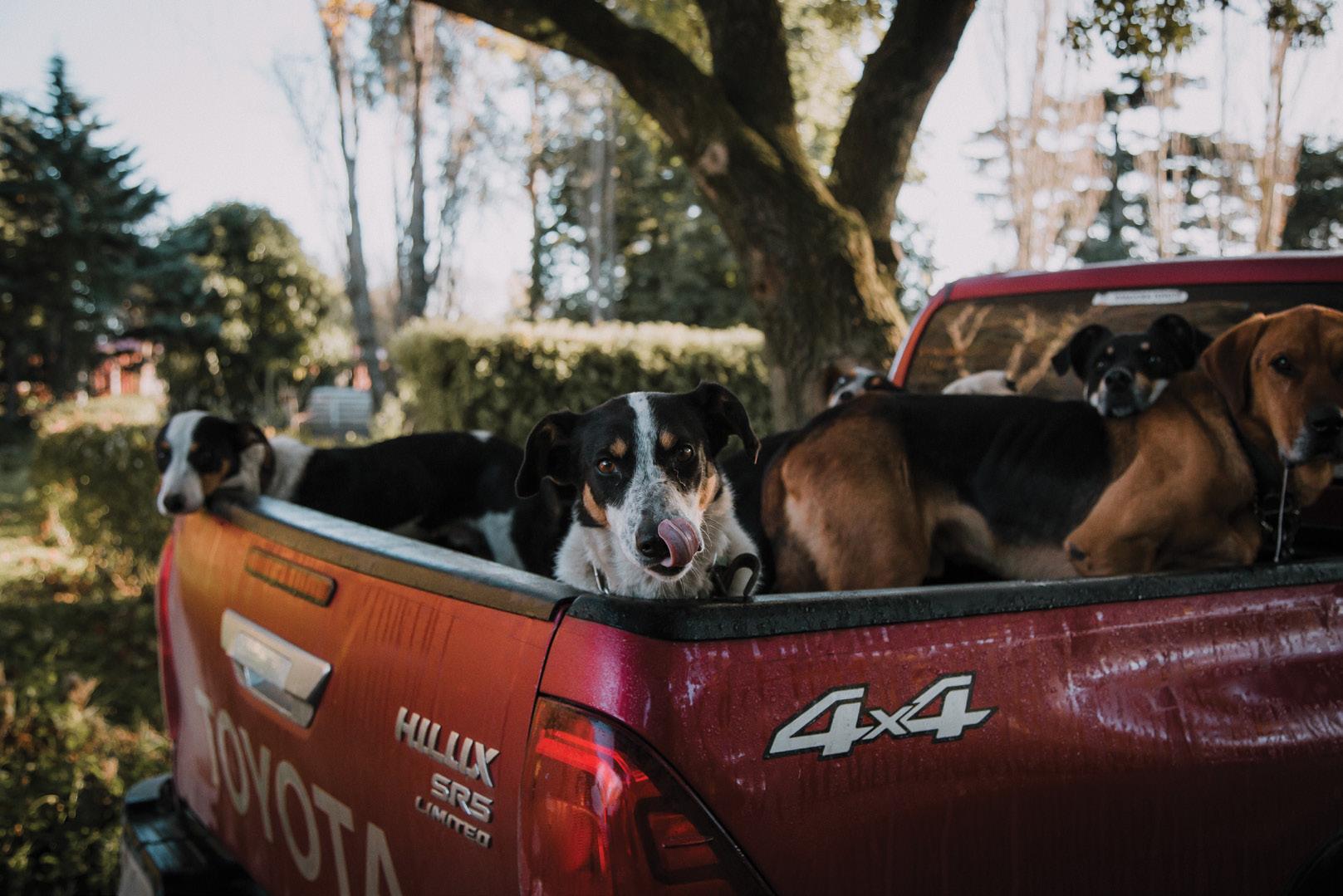
“Some bulls punch well above their weight and some just don’t get there. It’s never the ones you think are the most dominant, it just doesn’t seem to work like that.”
Because of the DNA testing, Andy is able to use bulls over a mob that could contain daughters, as he will know not to retain the heifer calves from that mating. This means they can get
another few years from a good bull that they would have otherwise had to cull because of the possibility of in-breeding.
“The odds of these matings are never as high as you think they are, but we only learnt that once we had the data.”
Similarly, bulls with a good genetic package that are struggling to compete effectively against seven bulls are used over the 80 R3s where they only have to compete against one other bull.
Having seen the possibilities opened up through the use of genomic tools, Andy is wondering if one day it might be financially feasible to tissue sample the steer calves to identify the superior animals to take through for finishing.

“How much more money would it generate as against its cost? Would it be worthwhile?”
Questions that might well be answered in the not-too-distant future.
FARM FACTS: Breeding beef bulls for dairy. Many calves white or grey. Supply chain forming.
Crossbreeding for finer wool.
4100ha flat and hill.
Arable unit part of station.
Contract harvesting 600ha.
Selling R1 Changus bulls for $1600 and R2, $2500.
STOCK
5500 ewes
1200 hoggets
3400 deer
800 cattle
A South Canterbury farmer and a local stud breeder have worked together to provide beef bulls for the dairy industry, and they’re leaving their mark, Terry Brosnahan writes.
layton Station’s Hamish Orbell and stud owner Tom Hargreaves are breeding Kakahu Changus bulls, a Charolais Angus-cross. They are breeding low birthweight, short gestation and fast growth bulls for dairy farmers, which is not new, but the Changus may have another important trait for dairy farmers.
Hamish says when Kakahu Changus bulls were used over local dairy cows, 90% of the calves were white or grey, making the calves easy to recognise on dairy farms.
And these Kakahu Changus bulls may be capable of bringing through the double dilution gene (see next page).
Hamish bought the Angus cows and Charolais bulls from Kakahu Stud.
Tom says the Changus’ strength is the combination of the Angus’ calving ease,
and the Charolais’ growth and carcase yield. There may also be something coming through leaving white or grey calves, but more research is needed.
“It’s still early days and there’s a lot of work to do,” he says.
Hamish says research work will focus on identifying which animals may have the double dilution gene. Both breeds can have it, but the Charolais’ is stronger.
Tom and Hamish are trying to find the gene within Angus so it comes out with a coloured calf instead of a black one. The use of genomics can help with the pedigree performance and parentage.
Kakahu is developing a programme to help Hamish market his own bull sires, which includes using the Kakahu Changus brand.
Tom says for some time farmers have been naming calves out of dairy cows
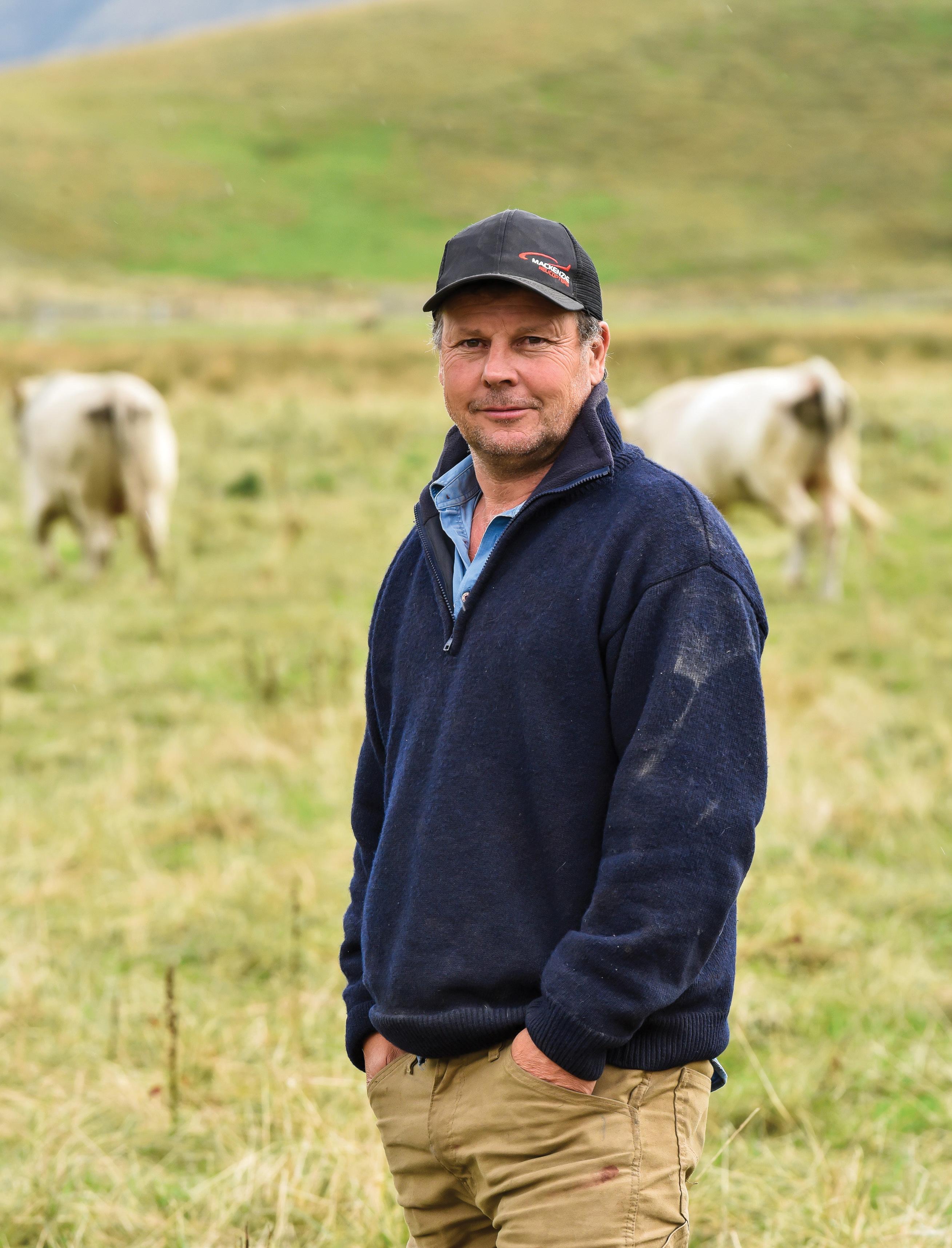
crossed with a Charolais a Changus. That’s why the Hargreaves branded Kakahu Changus.
“We are working on sire bulls that can be marketed as Changus in the dairy industry.”
Hamish and Anna Orbell own Clayton station, 4100ha, near Fairlie.
Stock includes 5500 ewes, 1200 hoggets, about 3400 deer and about 800 cattle. The cattle include 380 Angus and 70 Changus cows, 150 replacements, 40 Changus bulls, 100–135 Hereford bulls for dairy farmers and 17 replacement Angus bulls.
In 2016, Hamish bought 40 low birthweight, short gestation Angus cows from Kakahu stud.
After he bought them, the owner of Kakahu at the time, Gerald Hargreaves, Tom’s father, suggested there could be value in an Angus Charolais cross.
They could sell low birthweight, short gestation and high growth bulls into the dairy industry.
Hamish (49) says the cross couldn’t be at Kakahu because it would compromise the stud, so it was run on Clayton.
In 2017, Hamish and Anna bought a straight Charloais bull which was a half-
Dilution gene variants interrupt the deposition of pigment in skin, hair or feathers.
Scientist Nicola Dennis says these are benign mutations that “wash out” or dilute the base coat colour.
Chocolate labradors, blue chickens/ dogs/cats and palomino horses are all examples of dilution variants in action. These variants are often
brother to Kakahu Gerry, a bull widely used in the dairy industry. So Hamish started breeding first-cross bulls and weighing them at birth.
He’s been testing the market and the Changus bulls have been so successful he can’t keep up with demand.
Kakahu has a sire bull from which limited semen has been sold to some dairy farmers to see how the calves performed. There are calves born with the farmers recording calf weights and other measurements. When Tom does ramp up the sale of Changus genetics, it will be done as semen, because that’s what dairy farmers prefer.
Hamish says after the second cross they decided to slow the process down and put an Angus over the Changus heifers. They didn’t want the Changus to get too strong with Charolais genetics so an Angus-cross sire was used. It meant fewer Changus bull calves, because too many were black. However, they also had some unusual progeny; some of the heifer calves were white.
Hamish says Tom took the cows and calves back to Kakahu and carried out genomic work. It takes a lot of time and money to harness the gene. For
incompletely dominant, that is, the effect is dependent on the number of copies of the mutation inherited. For example, one copy of the PMEL17 mutation that causes dilution in Charolais cattle will produce animals that are grey or pale-red (depending on the base-coat colour), whereas two copies will produce a white- or creamcoat colour. Likewise, one copy of the
dilution gene in chickens will turn a black hen blue, but two copies will turn it into a pale grey hen with spots. While double copy dilutes can sometimes be strikingly pale, they are very different from albinos which cannot produce pigment at all. While dilutions result in fun colour palettes, albinism causes serious health concerns.

“It is too risky to bring them back to Clayton...”
example, out of say, 30 calves, 15 are heifers and only two might have the gene.
Hamish’s original goal was to lease the Changus bulls out to dairy farmers for $600 and sell them as R2 for $2200. Mycoplasma bovis put a stop to that plan, except they do supply one dairy farmer who has run a closed herd for 29 years. He leases the bulls off Hamish which later come back to Clayton until they are sold to the dairy farmer in October. Dairy farmers want to focus on milking cows, not growing bulls.
After the bulls have finished mating, the dairy farmer sells them to the meatworks.
Other Changus bulls are sold as yearlings to dairy farmers. Most dairy farmers will kill them as R2s, though some might keep them for two years before selling them for slaughter.
Clayton doesn’t have the land for buying back yearling bulls from dairy farmers because of M bovis. Instead, the animals are killed and good genetics wasted.
“It is too risky to bring them back to Clayton,” Hamish says.
Leasing land and keeping the Changus bulls separate may be an option, but Hamish says it is unlikely to earn enough money. Or perhaps there is an opportunity for share farming.
Hamish says because of the Angus and Charolais genetics, the R2 bulls would be cheap to run. They wouldn’t need to be fed a lot during winter and could then be pushed along in spring for compulsory growth.
“Dairy farmers would love to lease
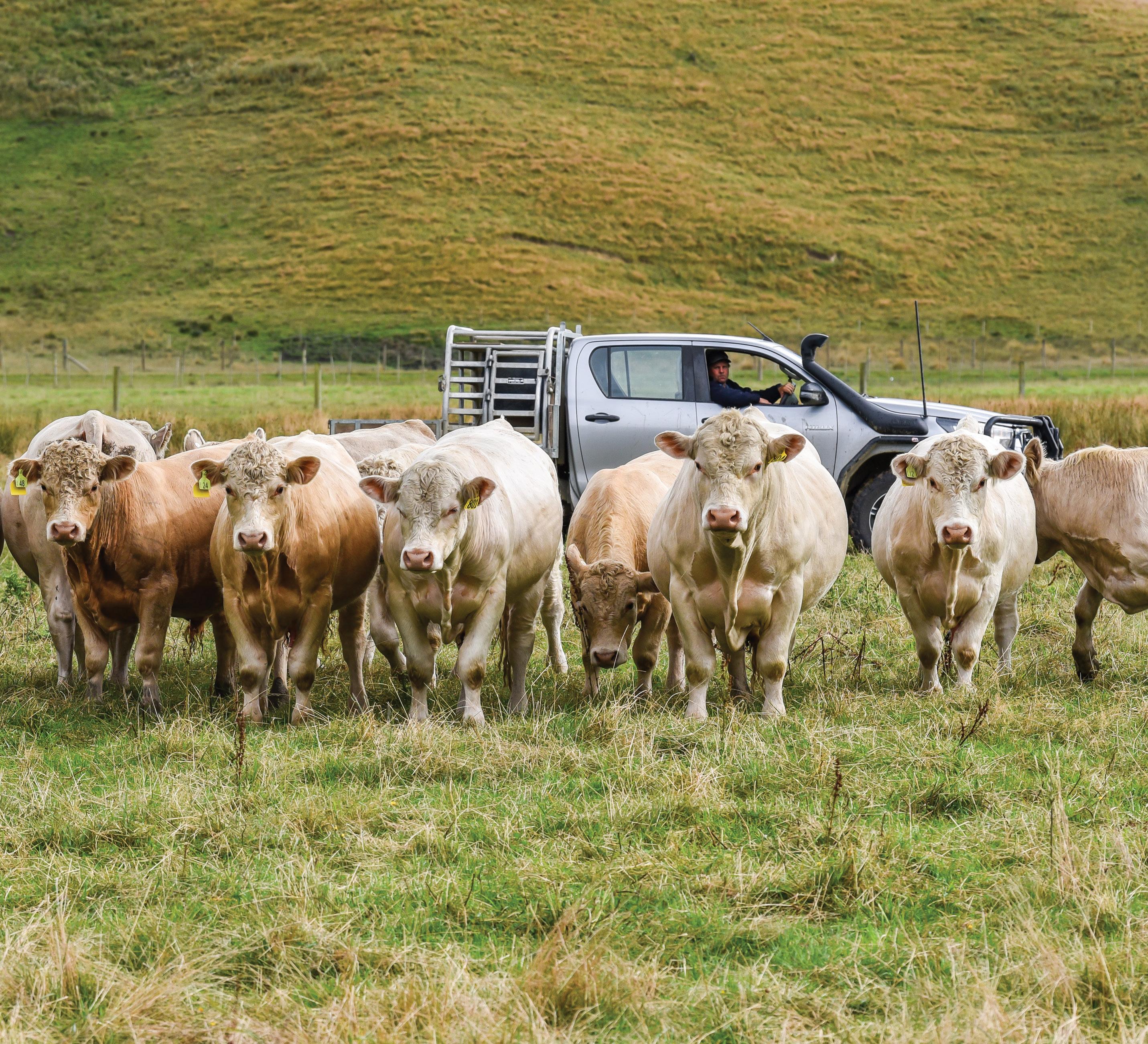
them but it is the M bovis [which stops them].”
Like a number of farmers, Hamish also sells 100–150 Hereford bulls to dairy farmers who will pay $1800–2200 as long as they don’t take too much of a loss when reselling. Ideally, they can sell the bull for at least $1600 to be killed. They might keep the bulls for two seasons before killing.
The Hereford bull selling will phase out as Changus numbers increase. This may be the last year they sell Herefords.
Clayton doesn’t buy in a lot of stock and is virtually a closed system, which reduces the M bovis risk. The station didn’t get caught with M bovis, but did have a couple of ghost cattle. They had been dead for several years but MPI still chased them up.

Hamish and Anna have 43 Changus bulls this year but hope for another 110 bulls next season for dairy farmers. They
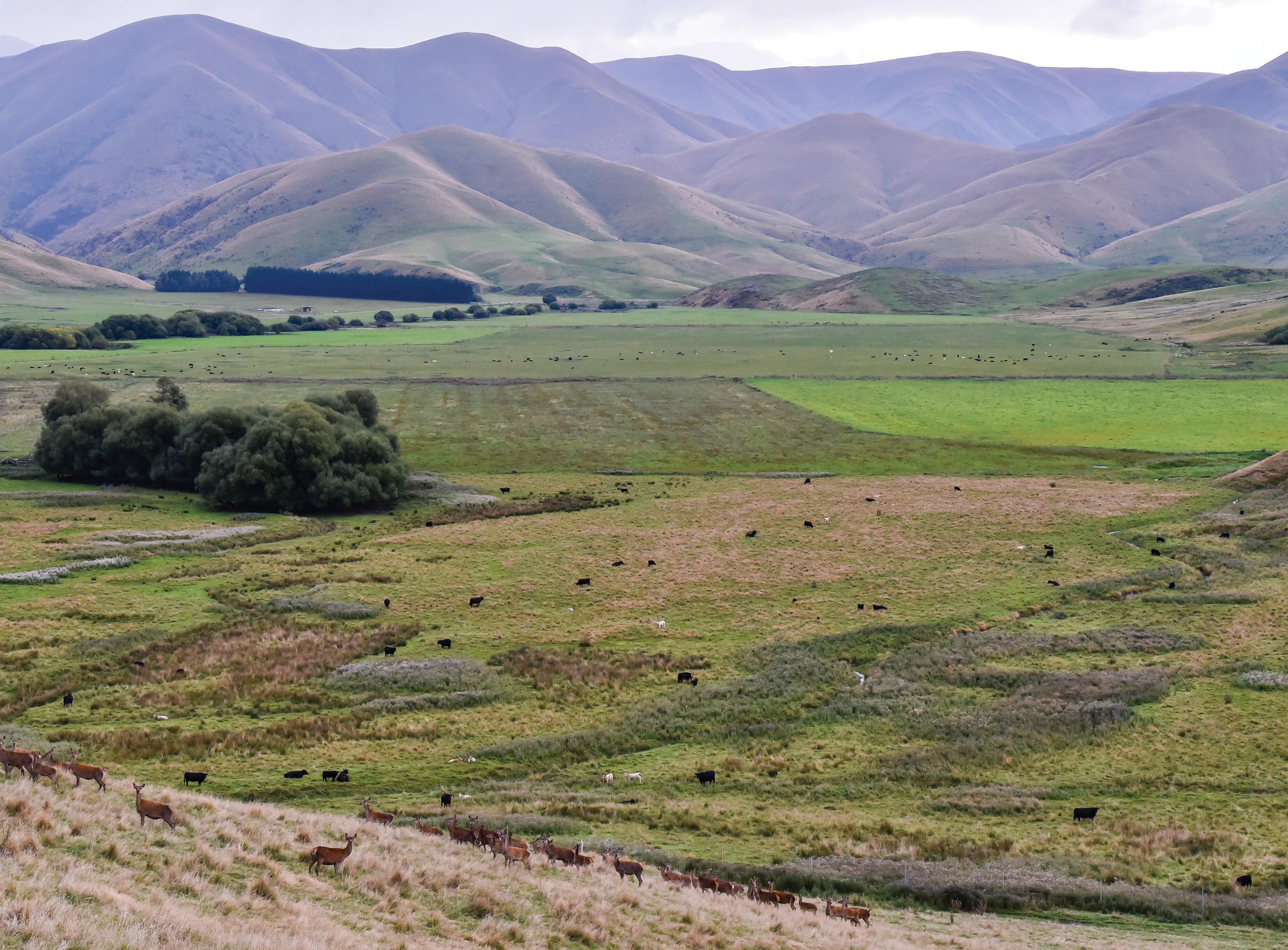
can’t supply enough. One dairy farmer alone has 6000 cows and is keen for more Changus bulls.
“We didn’t want to grow it too big, too soon,” Hamish says.
He says it seems the bobby calf market wants a consistent and distinctive calf.
“There is a good market for the Changus, but it’s a matter of taking our time.”
Any outlier bulls that are too heavy are culled, along with anything that is late calving or with other faults.
A few dairy farmers are weighing calves at birth for them to make sure the genetics are performing as they should.
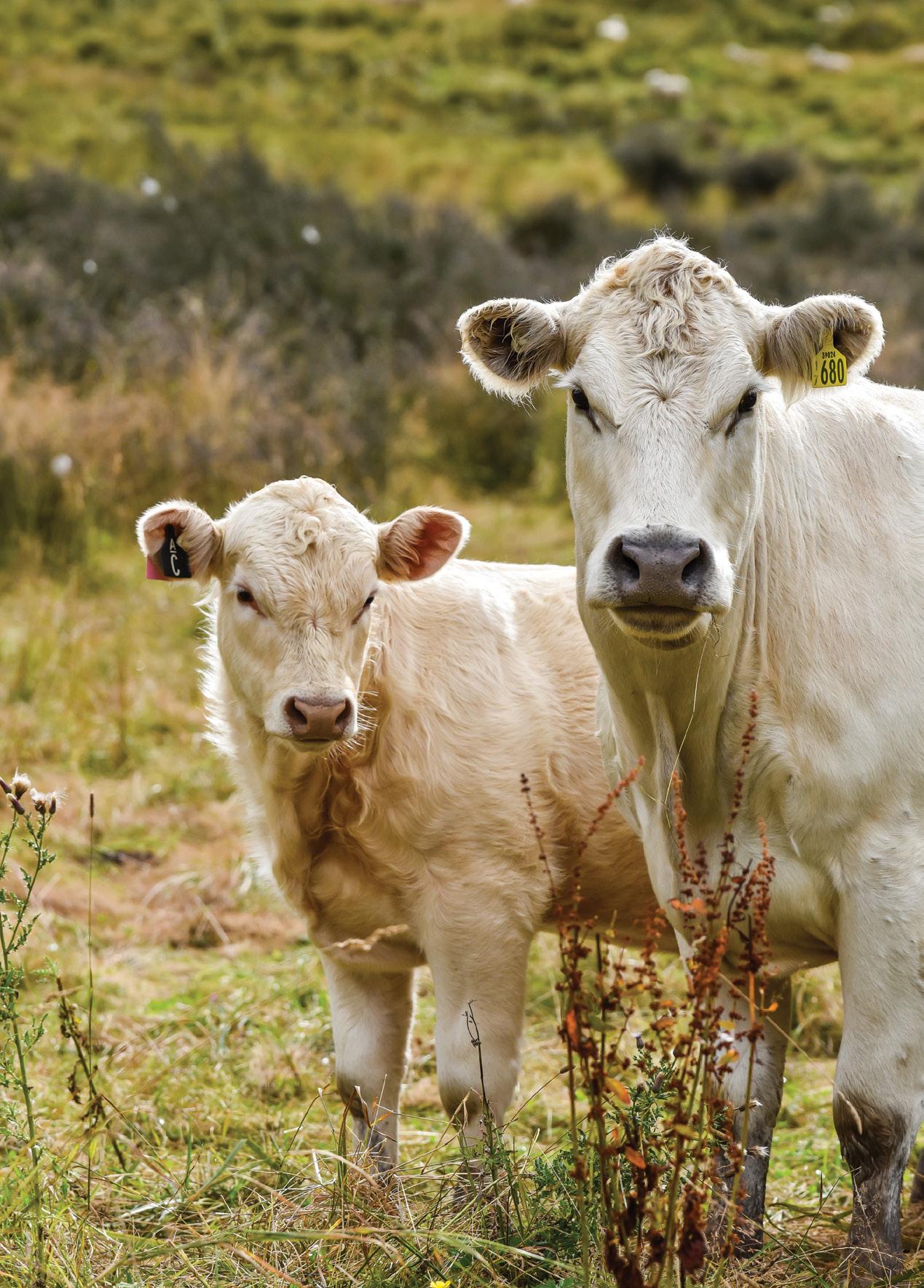
This year Hamish and Anna are putting 260 Angus and Changus cows to the Charloais bulls. The bull to cow ratio is 1:40.
Four years ago the Chaolais bull went over some Jersey dairy heifers and the first cross were mainly good, grey calves, some black. Clayton now has third-cross Changus cows.
Feedback from farmers who reared the Changus calves was that they sold well.
A supply chain is being organised by a pro-active stock agent, Ross Wilson from Whitestone Livestock, Oamaru. It is between the breeder, dairy farmer, calf rearer and finisher.

He had heard what Hamish was doing, met with him and is now selling most of the bulls.
“He will try and find the fattener who will take them,” Hamish says.
“There’s a market for used two-yearold bulls for the dairy industry but there is also one for virgins.”
Clayton regularly takes Kakahu cows during winter for grazing to allow the stud’s feed to build up. They go out on the hills and go home at the start of August.
The station’s Angus cows calve down in the paddocks and after weaning
spend the winter in the hills. Clayton runs from about 500m to 1000m above sea level.
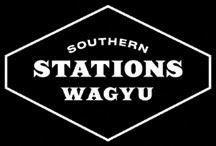
The calves are on grass until June then go on to kale and fodder beet.
Clayton never gets huge growth rates on crops during winter, only 700g/day after weaning. There isn’t much profit in finishing the calves. Instead the Orbells sell Angus calves, 240kg liveweight, to another farmer as part of an online deal with Five Star Beef feedlot.
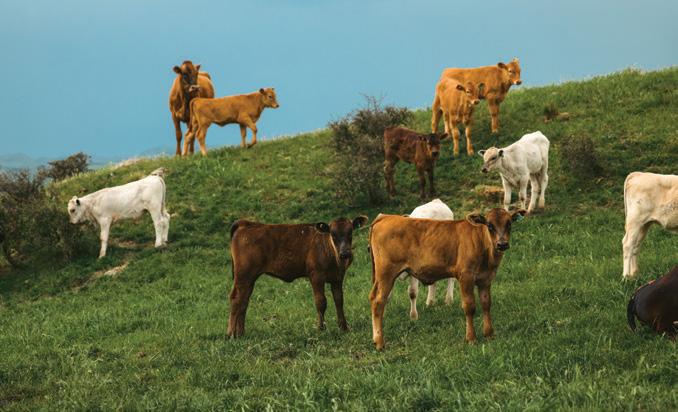

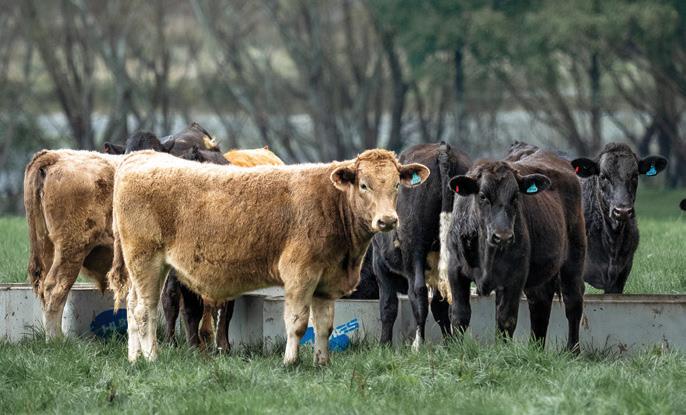
Hamish says the Charolais temperament is known to be flighty, so the Changus cattle are constantly handled while on feed crops.
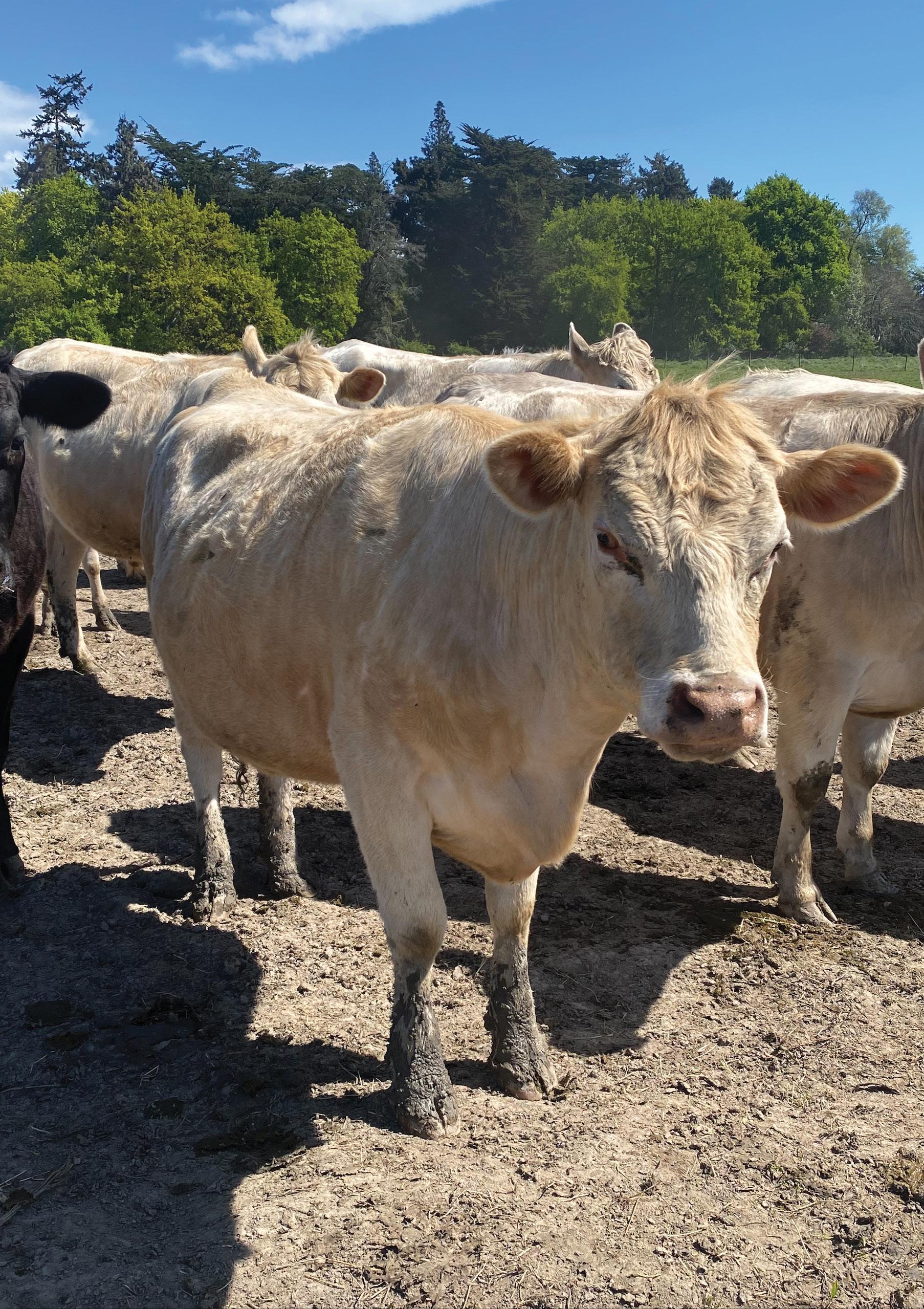
The number of deer on Clayton used to be about 4300, but after the venison price fell several years ago they are now down to 3400. Hamish held on to a number for another full season before selling and gained an extra $200/head.
They are changing their sheep breed as they have been making nothing out of the crossbred wool from 6500 RomneyTexel ewes and 1200 hoggets. It costs $6 to have a sheep shorn and crutched.
Some of the Romney-Texel have been crossed with a Merino to produce
quarterbreds and halfbreds.
The goal is a wool micron of 22–25.
“Long term we will still get fat lambs but a wool cheque too.”
Hamish says probably only 75% of the flock will be changed because there is still a place for Romney-Texel ewes producing early fat lambs.
Cattle are used as a cleaning tool and in a good season won’t see the hill country over summer and autumn until
they are weaned. The sheep and cattle are mixed as a mob. The two also clean up the tag in the deer-fenced area. Sheep tapeworm has been found in deer, so oral and tape drenches have been used on the fawns.
Faecal egg counts are carried out on the cattle and sheep.
There are four full-time staff plus Hamish at Clayton, three working on the stock and two on the arable. They
employ a casual during the harvest season.
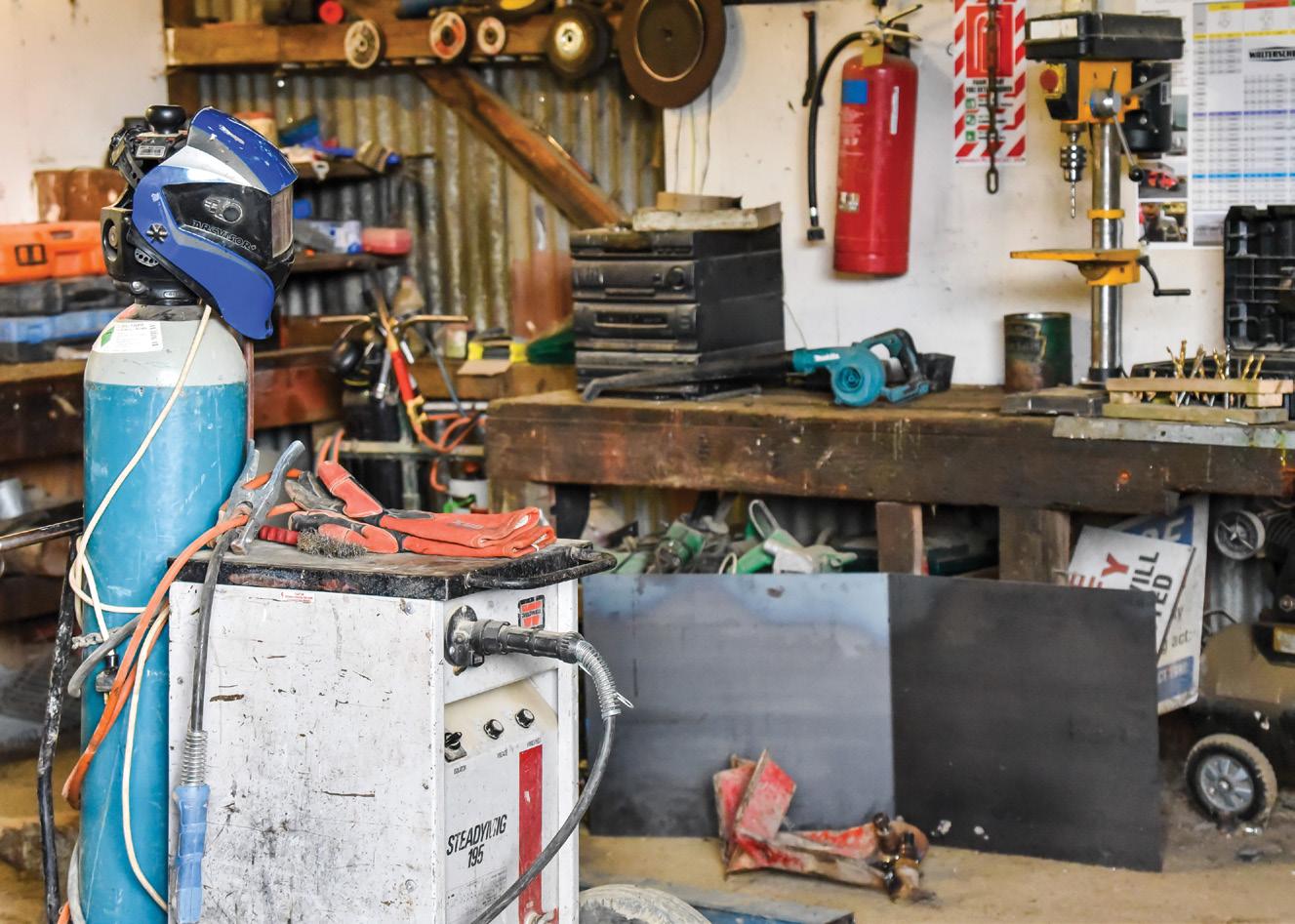
He and Anna have three children, 14, 12 and 10. Anna does the book work and is involved in the community.
Clayton has a 230ha arable unit within the station with grain crops grown on rotation. When they moved around the farm cropping they never addressed soil fertility issues; now they do.
He and staff also harvest 600ha of crops on farms in the Mackenzie Basin. Some of the autumn and spring sown barley under irrigation yields 9–10.5t/ha. Given it costs $540/t plus cartage to buy in barley, it is well worthwhile.
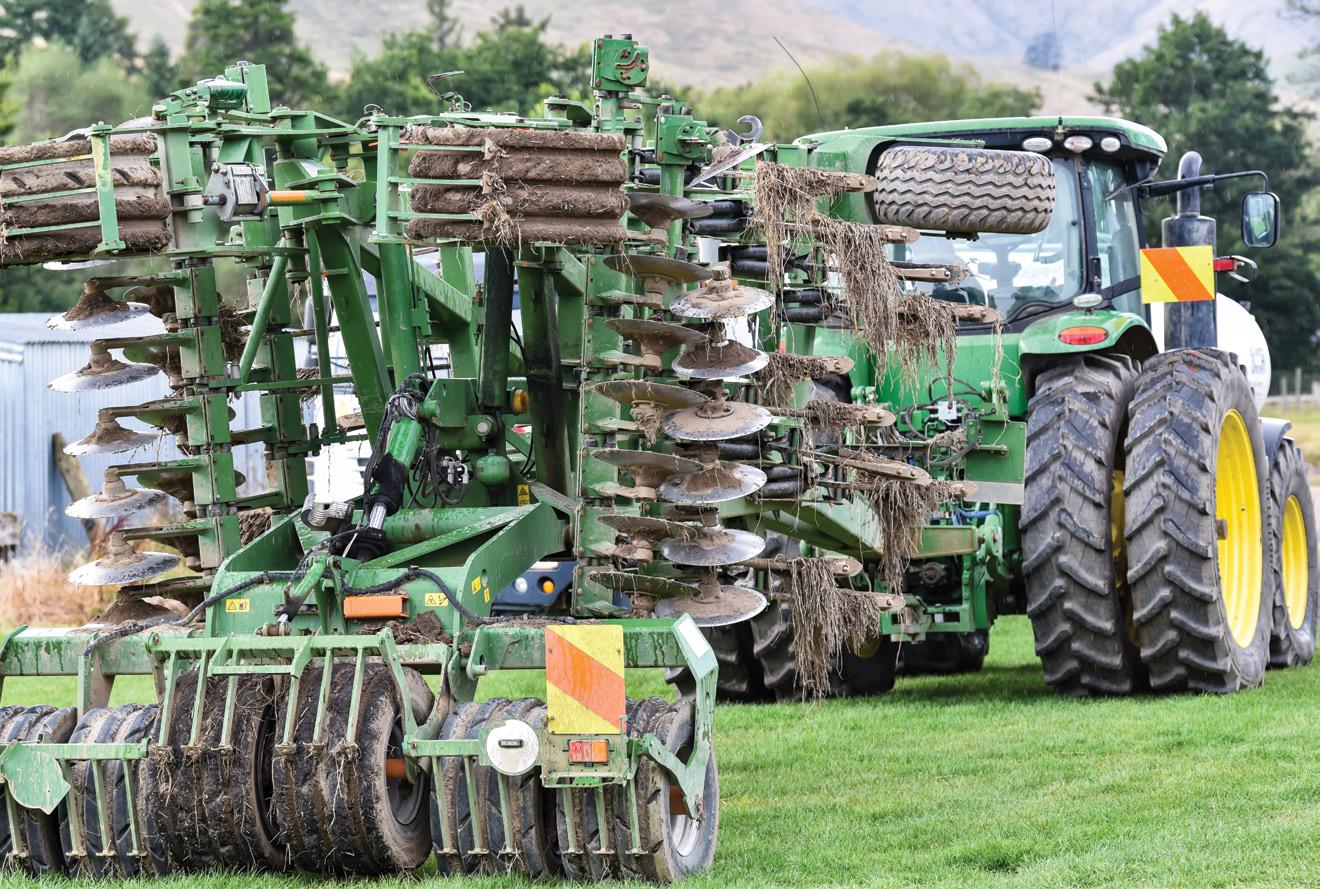
Hamish has two New Holland combines, a 25-foot front and a 30-foot. One stays at home until they are up to date with the harvest before helping out the other.
December is the wettest month on Clayton Station which is good for filling grain heads. January and February are dry and good for harvesting.
They use aerial cropping for the hills and put winter feed in the nonarable land and grow some ryecorn for balage and silage. Weed problems are brome, ragwort, calis and nodders. The Cinnabar caterpillar seems to be controlling the ragwort. The Olsen P and pH in the paddocks are in the 20s and about 6.2. In the hills about 8 and 5.2.
In the 2015/16 season they didn’t get the norwest rain and the dry led to 2000 ewes and hoggets sent away for grazing. The lambs were killed at lower weights.
Two years ago the station’s flats were covered in water and 90% of the flood gates on main rivers were destroyed.
Even though the station is up the road from the Opuha dam, it has no irrigation. The rainfall is usually about 1100mm. They were offered B class shares but never took them up because when they needed the water it would not have been available. They would have had to put in a dam to guarantee water was available, so all too expensive.
Hamish says there are other ways of handling the climate such as the management of pastures.
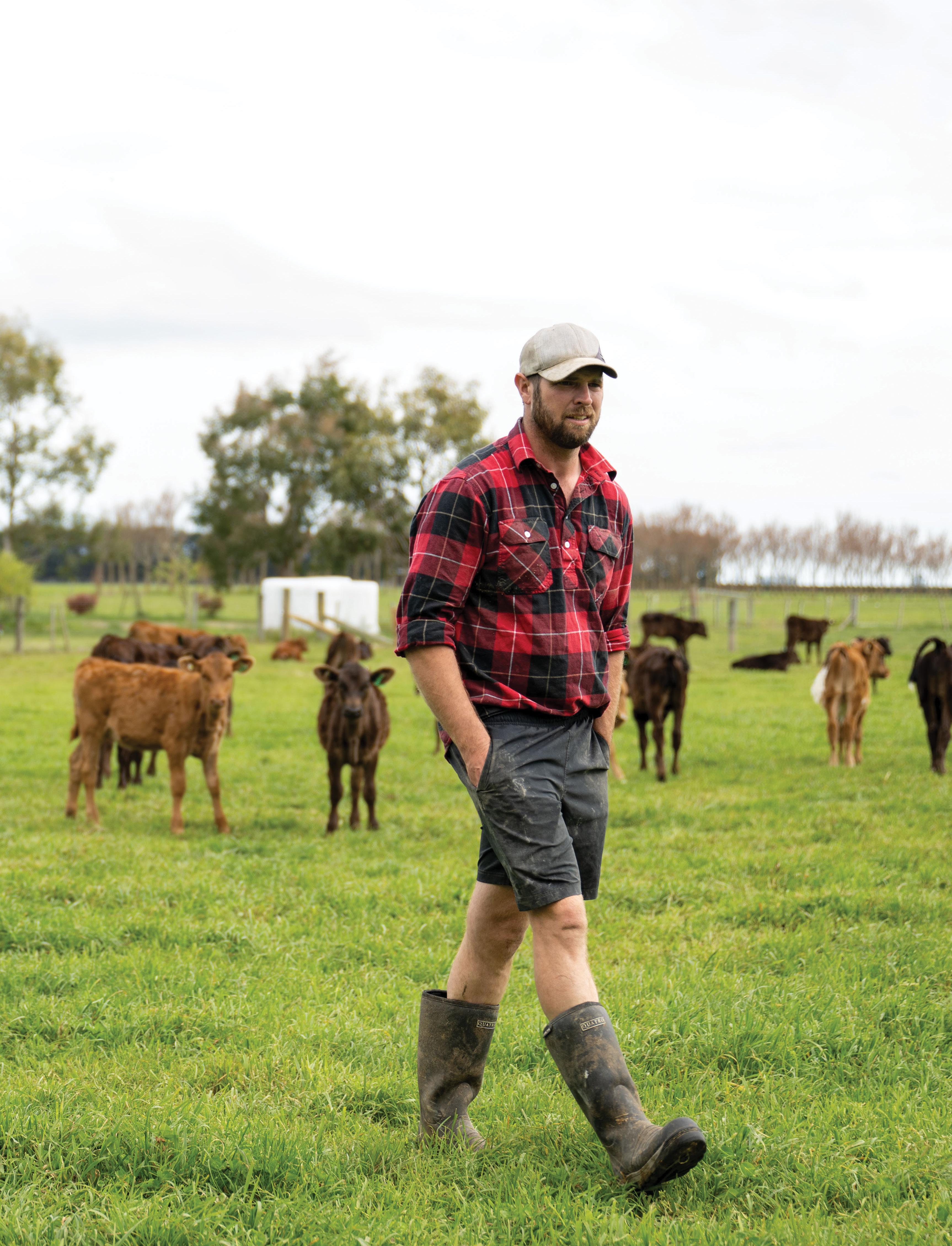
Michael Schat gave up contract milking to go into the Red Wagyu business boots ‘n’ all and is making the most of opportunities that come his way.
By Sandra Taylor.Last spring, Dunsandel farmer Michael Schat almost singlehandedly reared 2000 Red Wagyu-cross calves to 110kg on his small lifestyle block.
From July, he will also be operating at the other end of the supply chain, finishing more than 3000 Wagyu cattle annually in a 1ha covered, composting barn at Aylesbury, about 20km from Dunsandel.
The barn, which will have 1250-head capacity, will be home for the Wagyu for a minimum of 100 days. Construction will soon get underway on the $12 million facility that Michael is building in partnership with Southern Stations Wagyu, an Australasian subsidiary of StockCo.
The former dairy farmer sees huge opportunity for Red Wagyu beef in a world crying out for the rich, marbled meat that sits at the very premium end of the market. In Wellington in May, Wagyu beef was retailing for $199.99/kg.
Michael says this premium can flow right along the supply chain, from the dairy farmers who use Red Wagyu genetics across their non-replacement cows, through to the rearers, graziers and finishers.
Michael, his wife Leigh and their two sons Charlie (9) and Liam (7) live on the 8ha calf-rearing block at Dunsandel, about 50km south of Christchurch.
It’s on this block that the inventive Michael initially built a 340-head ecobuild tunnel house calf-rearing shed. This was followed last year by a larger 800-head tunnel house. Within these sheds, he has set up ingenious feeding systems that allow him to rear so many calves, assisted only by a part-time labour unit at the peak of the season.
To justify this sort of investment, forward contracts with Southern Stations Wagyu were essential and Michael was paid $700/110kg calf for autumn and $630 for spring-born calves. The dairy farmers supplying the calves, which were a minimum of four days old, were
paid $300 and $200 respectively.
Calf-rearing costs last season were high, so Michael needed a high throughput model to make calf rearing a viable career option.
“We were confident to buy the milk powder and the meal, knowing these calves were sold at a fixed price,” he says.
Last year they spent more than $300,000 on milk powder alone.
Michael dipped his toe into the Red Wagyu supply chain three years ago, rearing just 180 calves for Southern Stations Wagyu while still working as a contract milker.
This grew to 1000 calves in 2021, and last year Michael and Leigh made the decision to finish up their contract milking and go into the Red
Wagyu business boots and all.
This meant building the second calf shed, which Michael was scrambling to finish as the first calves arrived last spring. They invested in a grain silo and dispenser (a converted fertiliser hopper), a JCB loader for spreading straw bales (it can spread a bale in less than a minute), a gas califont for heating the milk, and a large-scale milk-mixing unit. During spring he was mixing up to 8000 litres of milk a day – that’s 70 bags of milk powder.
Along with milk and feed dispensing systems designed by Michael, this set-up allowed him to feed 2000 calves in twoand-a-half hours.
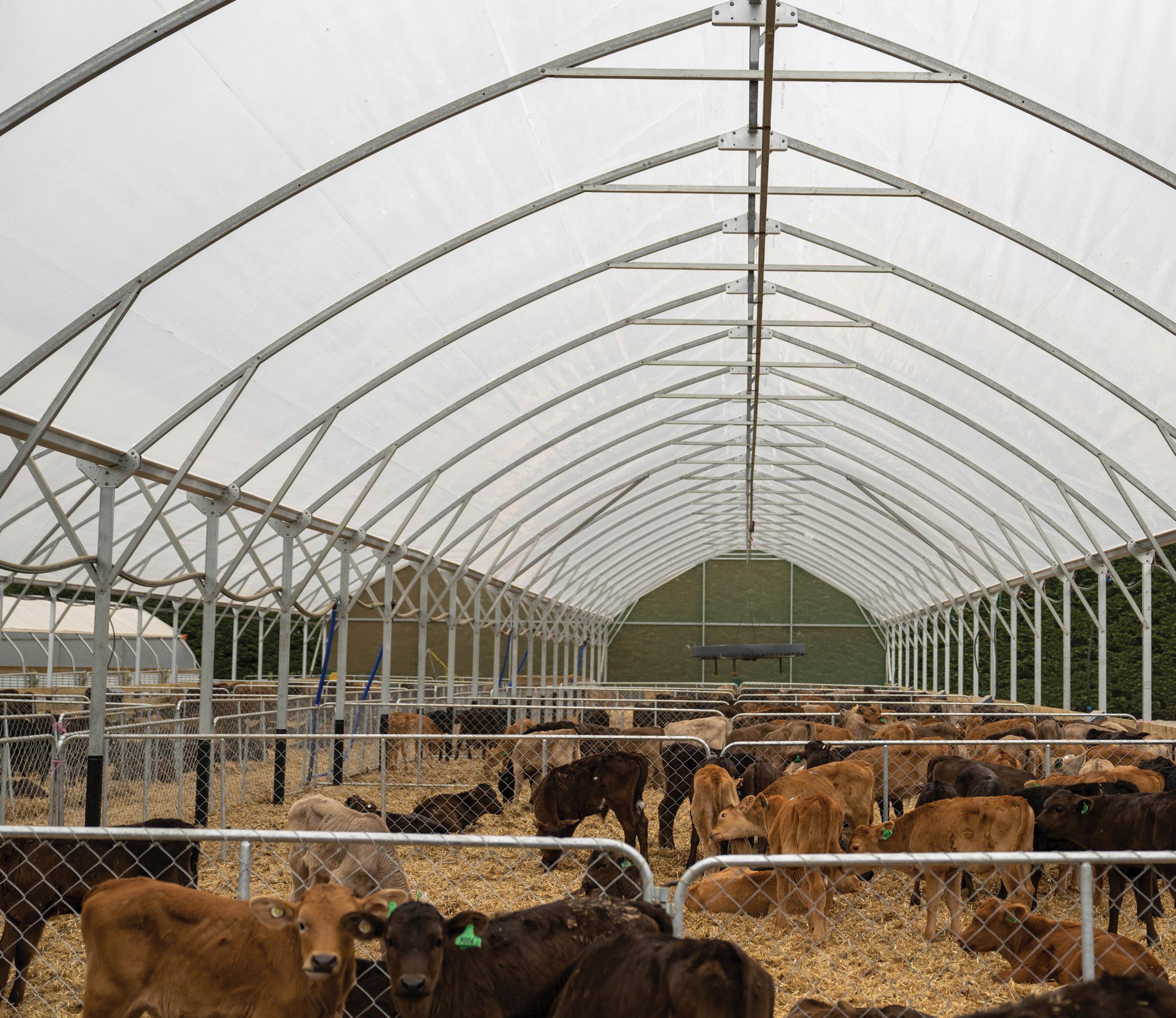
Despite dealing with such large numbers, Michael stresses the importance of not cutting corners in any aspect of the rearing process and this means ensuring the animals have nutritionally balanced feed and fibre that is so essential for rumen development.
He collects the four-day-old (minimum) Red Wagyu-cross calves from dairy farmers from the Canterbury area and the calves are put into pens of 50. They stay in this cohort until they are sent off to their graziers at an average 110kg (minimum 100kg).
It is vital the calves have had colostrum and are healthy before Michael collects them. Southern
Stations Wagyu monitors this by visual inspection, DNA testing and doing random antibody blood tests to ensure farmers have been following best practice.
While Wagyu calves seem to have a reputation amongst some dairy farmers for being hard work, Michael disputes this. He says the Red Wagyu are a completely different genetic package, being similar in size and type to a Friesian rather than an Angus or Jersey calf.
“Care and attention to detail will go a long way.”
The calves are on straw bedding and new bales are rolled out daily. Not only
does this provide warm, dry bedding, the calves chew on it and it’s an important part of their diet to complement the grain feeding and facilitate the growth of the papillae in the rumen.
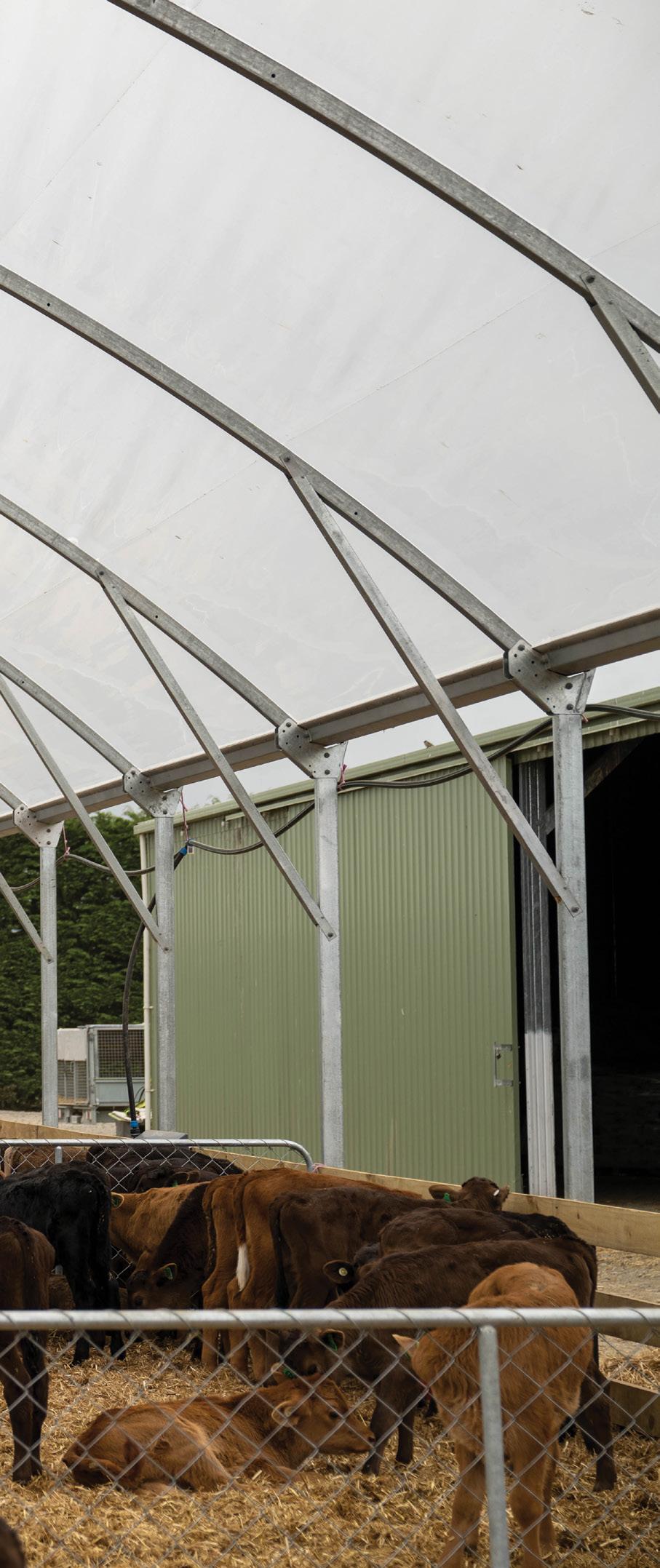
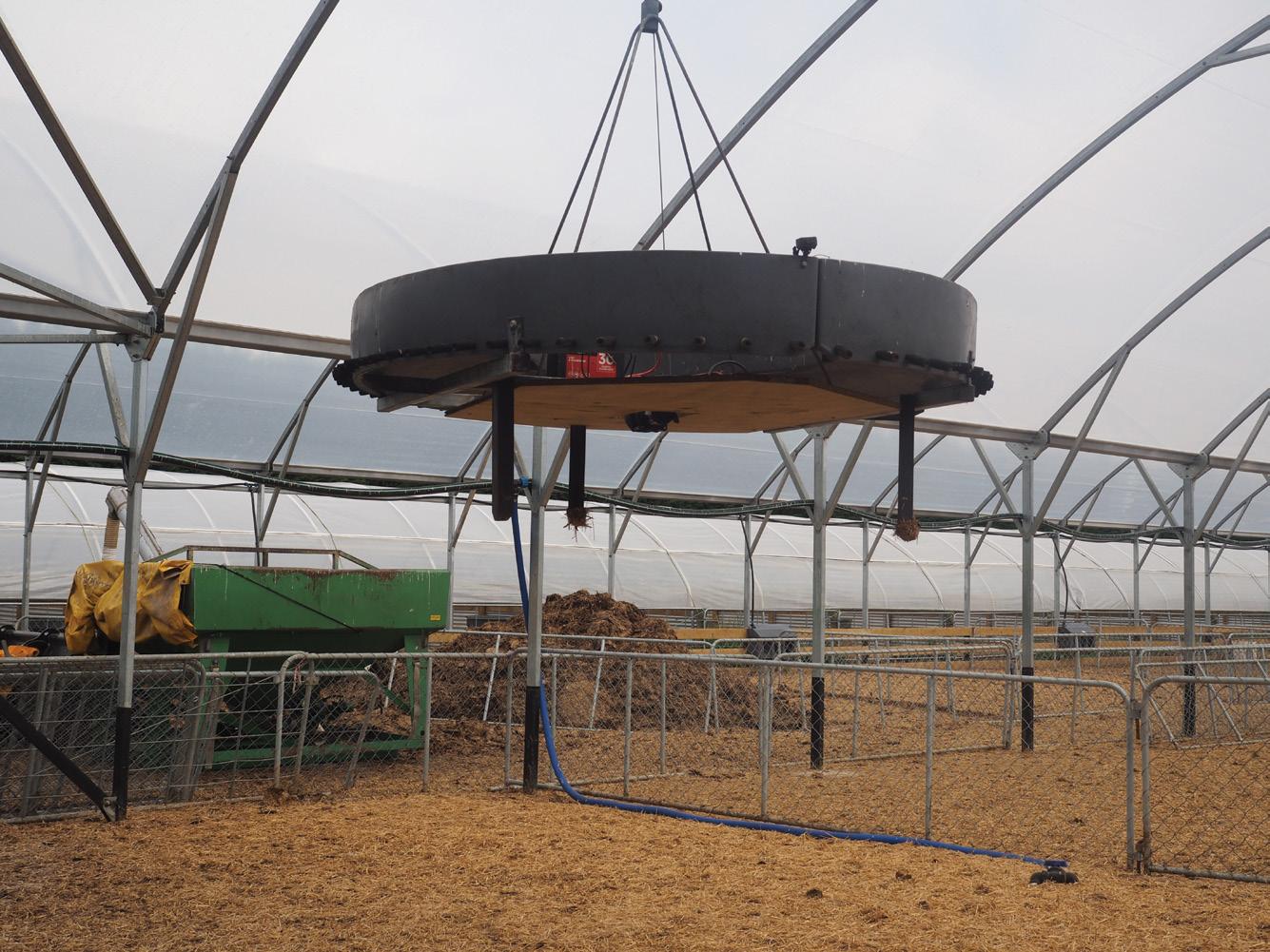
Last season wasn’t without challenges and last year Michael had to deal with an outbreak of rotavirus and coronavirus.
It took a concerted effort to minimise losses to just under two percent and required feeding affected calves up to five times a day with an immunity milk mix and warm electrolytes.
Michael says it was the coronavirus that killed the calves very quickly and they had to be on top of the disease to minimise its spread. This meant asking
supply farmers to hold calves for a few more days, which they were happy to do.
Michael believes the diseases were exaggerated by using milk powder rather than whole milk, and he is negotiating with a whole-milk supplier for next spring for blending.
While four weeks in the shed is recommended best practice, Michael held some of the calves in the shed for six to seven weeks and felt they did so much better, especially as it was such a cold, wet spring.
The calves were then run out into small, sheltered pasture paddocks in their existing mobs. Here again Michael has designed a milk-feeding system that allows him to feed a large number of calves without having to go into the paddock.
The Red Wagyu calves need to have starch in their diets throughout their first year, but this can be dropped in the second year until the animals are ready for the feed barn.
The cattle will spend a minimum of 100 days in the feed barn on a grainbased diet with the aim of producing an average 400kg carcase. As well as getting the animals really fat, the high starch diet helps replace the yellow fat (taint from pasture) with the brightwhite fat favoured by the Wagyu and grain-fed market.
The 1ha feed barn at Aylesbury will be part of a 206ha farm the partnership has bought. As well as the feed barn that will hold 1250 head, they will grow young Red Wagyu on pasture and necessary supplements to optimise growth rates.

The calves were weaned at about seven weeks or 70kg, but continued to have ad lib access to hay, balage and meal, which drove daily growth rates of up to 1.5kg/day.
Michael stresses the importance of a high starch diet balanced with protein and fibre to help the calves start to lay down the fat that is the essence of Wagyu beef.
Many Wagyu rearers use grain to grow the calves past 110kg and up to 200-250kg. This also helps their ability to marble and lay down fat.
Once at an average of 110kg (100kg minimum), the calves are sent off to graziers for growing out to their feedbarn entry weight of 550kg.
Michael says the attention to detail at the calf rearing stage lays the foundation for the calves to continue to grow and lay down fat, which makes the graziers’ job a lot easier.
Michael says the focus will be on grain assisting the young stock to maximise performance and activate their genetic ability to marble well later in life.
While construction of the feed barn is yet to get underway due to a minor consent hold-up, Michael says it will be state-of-the-art deluxe finishing set-up with a carefully managed composting barn.
He says they have been working alongside Environment Canterbury to ensure the barn meets all required environmental standards.
“The system is driven by very high environmental standards and outcomes and a lot of capital has been invested in achieving these,” he says.
“ECan has very robust criteria that has to be met and this should give the public confidence in what we’re doing.”
“The system is driven by very high environmental standards and outcomes and a lot of capital has been invested in achieving these.”
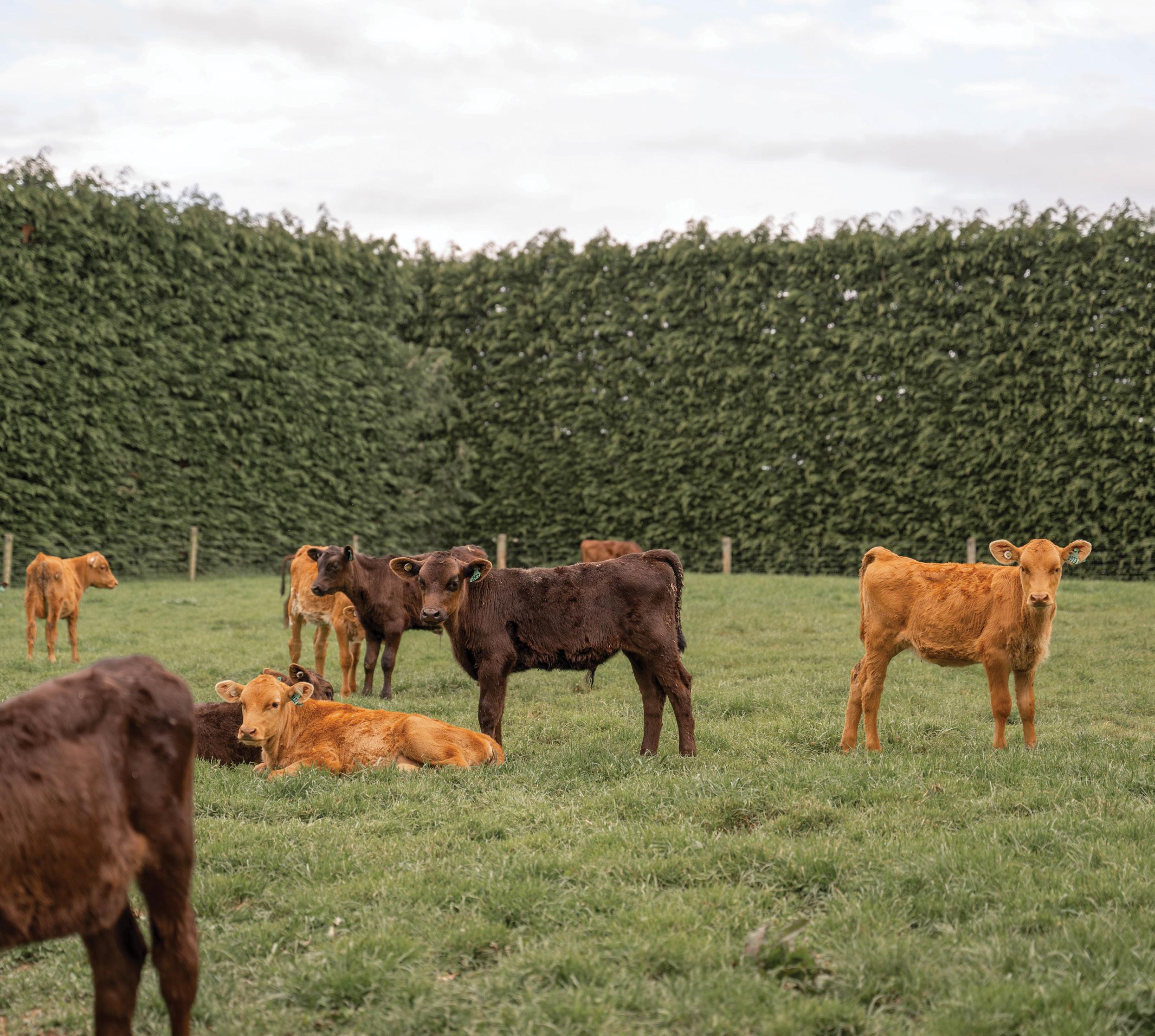
The animals are toll processed at 400kg CW by ANZCO for Endeavour Meats, an Australian-based company that looks after all the shipping and marketing.
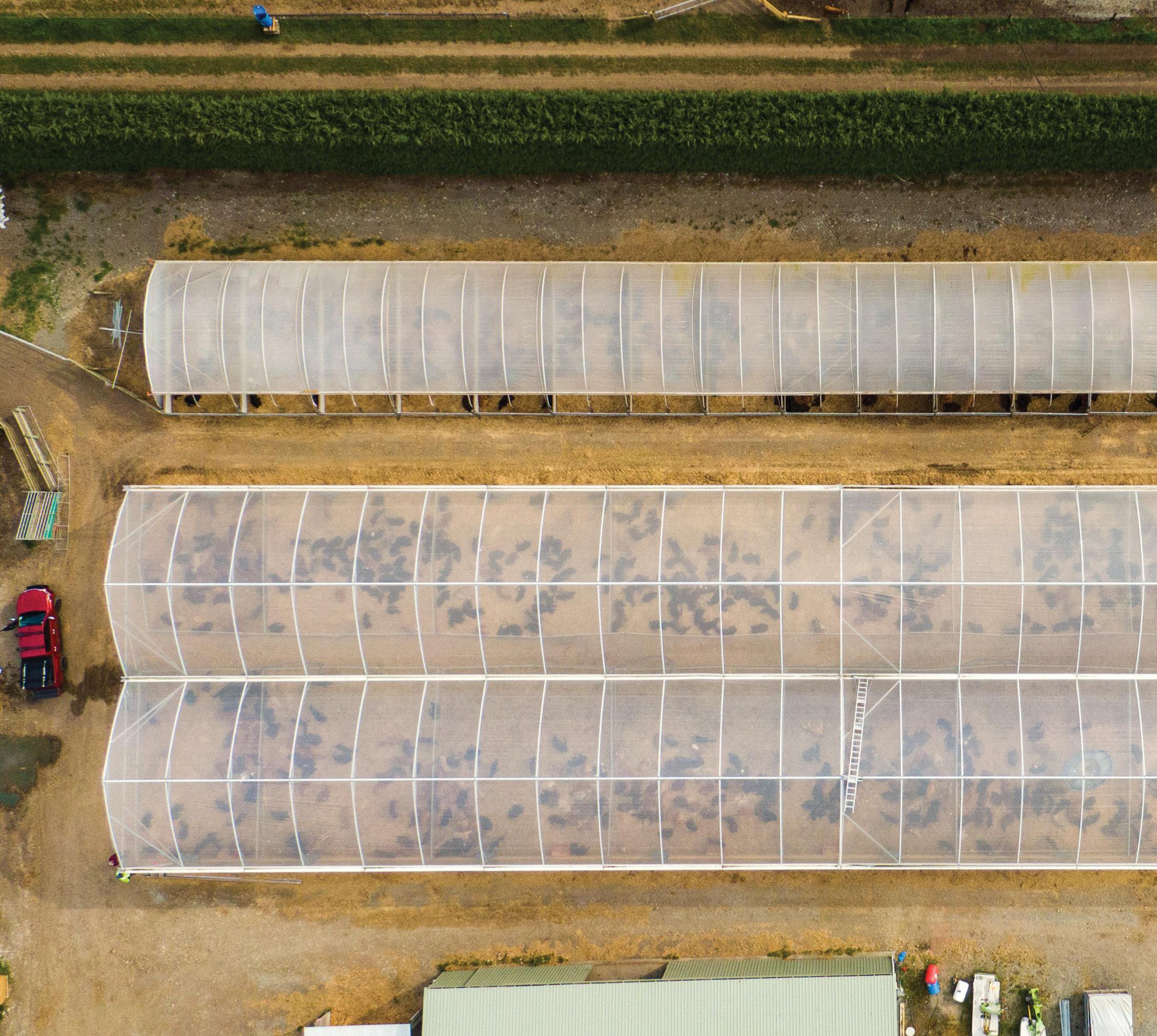
It was Southern Stations Wagyu who approached Michael about going into the partnership with them at the grain finishing end of the supply chain.
While running a feed barn was never on his radar, he did learn about bestpractice feedlot finishing when, aged 19, he went to Australia and worked for a
family considered to be at the top of the grain-feeding game.
“I was fortunate to be taught from the ground up and it was a lifetime’s worth of knowledge.
With the first animals expected to arrive at the barn in July, Michael will have his hands full setting that up while getting the first calves into the rearing sheds.
Ultimately, he and the family will move to Aylesbury to focus on grazing and the finishing operation and give others an opportunity to rear the calves.
He says Southern Stations Wagyu
will handpick people to rear the calves and this will help those people who are prepared to go the extra mile with these animals to grow their businesses.
“It’s been a fortunate move for me. I’m 37 and it’s a good time to be getting my teeth into something and growing my equity.”
He says while it’s big numbers, it is underwritten by the Southern Stations Wagyu supply chain.
“It’s a huge opportunity for us.”
While Michael always thought he would make a career out of dairy farming, he is now pleased to have taken
a different path and encourages others to step outside their comfort zones. He encourages people to have a go and “break the mould”.
Michael talks a lot about quality assurance and best practice throughout the Red Wagyu supply chain and this is closely monitored by Southern Stations Wagyu, but he says farmers are financially rewarded for their attention to detail and hard work in growing these high-worth animals.
He says for the dairy industry, which is grappling with the issue of bobby calves, the Red Wagyu are an excellent solution in that the calves are sold on forward contract and an earlier AI means a compact three-week in-calf rate. Also, with herd management
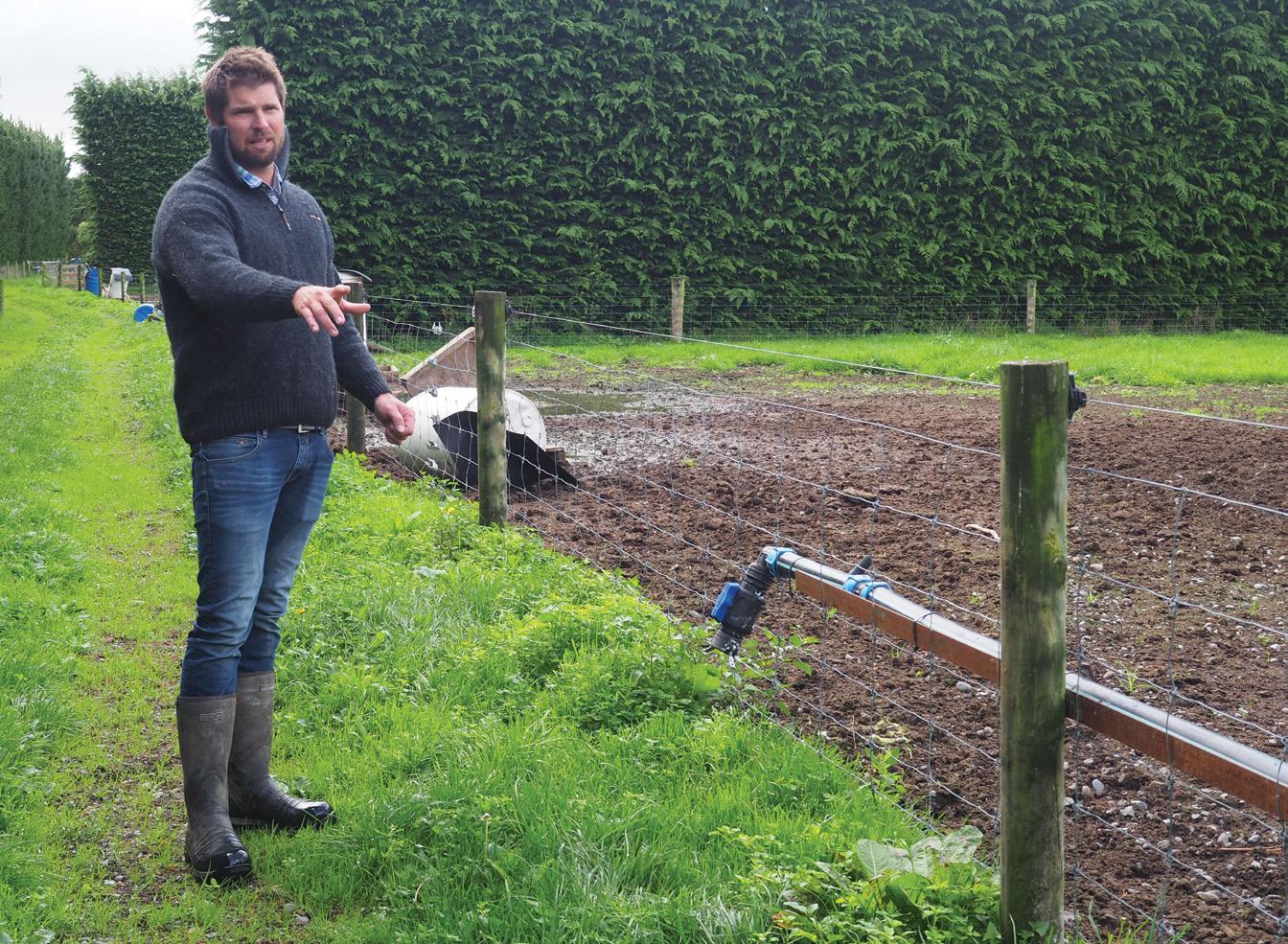
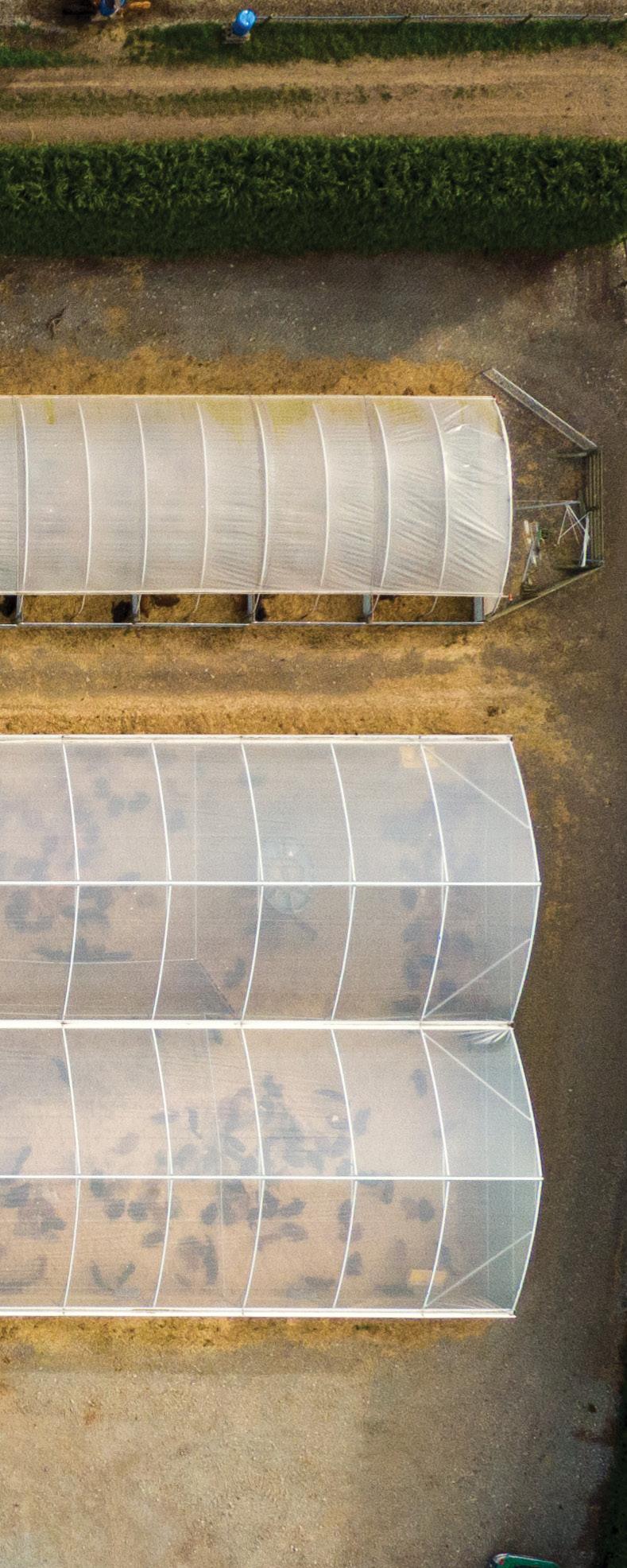
systems, which allow cows to be drafted automatically for AI, there is no need to use bulls over cows, which is a big saving in itself.
Similarly, the rewards are there for calf rearers and graziers. Michael says there are a range of relationships and contracts available through Southern Stations Wagyu, but he believes the opportunities are there to really lift per-hectare returns and diversify farms, particularly for calf rearing.
At the other end, Michael is confident that the market for premium Red Wagyu meat will continue to grow.
He says Wagyu has been around a long time. Red Wagyu is strong because Southern Stations Wagyu sells it into a range of markets around the world, not relying on any one country or small markets for its sales.
“It’s been a fortunate move for me. I’m 37 and it’s a good time to be getting my teeth into something and growing my equity.”
Mack Lynn credits his father Murray with being on the right track with subdivision before he and his brother Toby took up Techo-grazing in Northland.
“We were strip grazing mountains,” Mack says. “Dad was accurately rationing feed and not back-grazing.”
But that involved carrying a lot of standards and tapes around, “and in the spring all our good work was undone”.
So it was up to the sons to take the next step on the 550 hectare family farm just out of Paihia, which they lease.
“It made perfect sense,” Mack, 34, says. “Techno-grazing is very numbers driven and a powerful tool. By May 1 you’ve got your plan nutted out and you know what’s in front of you.”
For the last couple of years, two metres of rainfall, mostly in winter, has been the norm, but feed can be limited
in spring. With Techno – which paid for its setup costs in its first year – when grass grows, they can manage it.
“You’re not guessing whether the cattle have enough grass today and if they will have enough tomorrow. You can visualise it and see it all laid out in front of you.”
While they own an ATV-towed dry matter calculator, Mack wonders whether they now need it.
“Often our limiting factor is sunlight in spring.”
They treat their grass cover like a solar panel, with the bigger area of leaf the better. Mack says grass grows grass.
“That’s the management power of Techno – it allows you to manipulate those factors.”
Mack was a stock agent in the Waikato for five years after missing out on being accepted on Massey University’s vet course. He came back to a family farm after his father injured his back for what was supposed to be


Below: By adding a third hot wire to the strip grazing set up, calves and sheep are run together. In the foreground is a flax and manuka planting that was established with the help of a community planting day. Bottom: Kahu Harkness in the old Landcorp goat shed that is now used to rear hundreds of calves. Mack says Kahu has a special touch for calf rearing and is part of the extended family with roles on the farm.
a short stint. Meanwhile Toby, now 38, was a professional rugby player for the Chiefs and the Western Force from 2004 to 2012.
They first put Techno into place in 2014 on a 300ha farm leased from the family at Matauri Bay on Northland’s east coast, which Mack describes as “a blank canvas with no fences”.

Denis O’Callaghan, an early adopter of Techno, had a run-off next door and invited the brothers to have a look at what he was doing. From the outside they couldn’t recognise how powerful a tool it was, but when they understood it more, they did the numbers and put 220ha into Techno.
“It’s an incredibly flexible system,” Mack says.“You can be in fifth gear and going flat out, or in first and just cruise.”
But he cautions that getting the design right is all-important with the risk of big inaccuracies coming in later on.
The farm was bought in 2017 and sold in 2021 after it had to be completely destocked when Mycoplasma bovis was found there (see over page).
The family bought Wakelins Station in 2013 and Mack and Toby started leasing it in 2016. It had been a Landcorp farm running a range of exotic livestock back in the 1990s, including Boer goats, Santa Gertrudis cattle and deer. But “the powerhouse” is about 1000 Friesian bulls. These were bought in at 100kg from Waikato saleyards in November or December and sold a year later at between 300–350kg.
“Then it was rinse and repeat,” Mack says.
But after dipping their toes in the water with calf rearing from 2016, which was incredibly challenging, they found it a more profitable option. About 1500 calves a year are reared as a way of getting the product they want, with more substantial rumen development. Mack and Toby’s mother Lynda is in charge here, helped by her nephew Kahu Harkness and local teenagers.
The calves come from Waikato in batches of 600, as recommended by local vet Jorrit Verver.
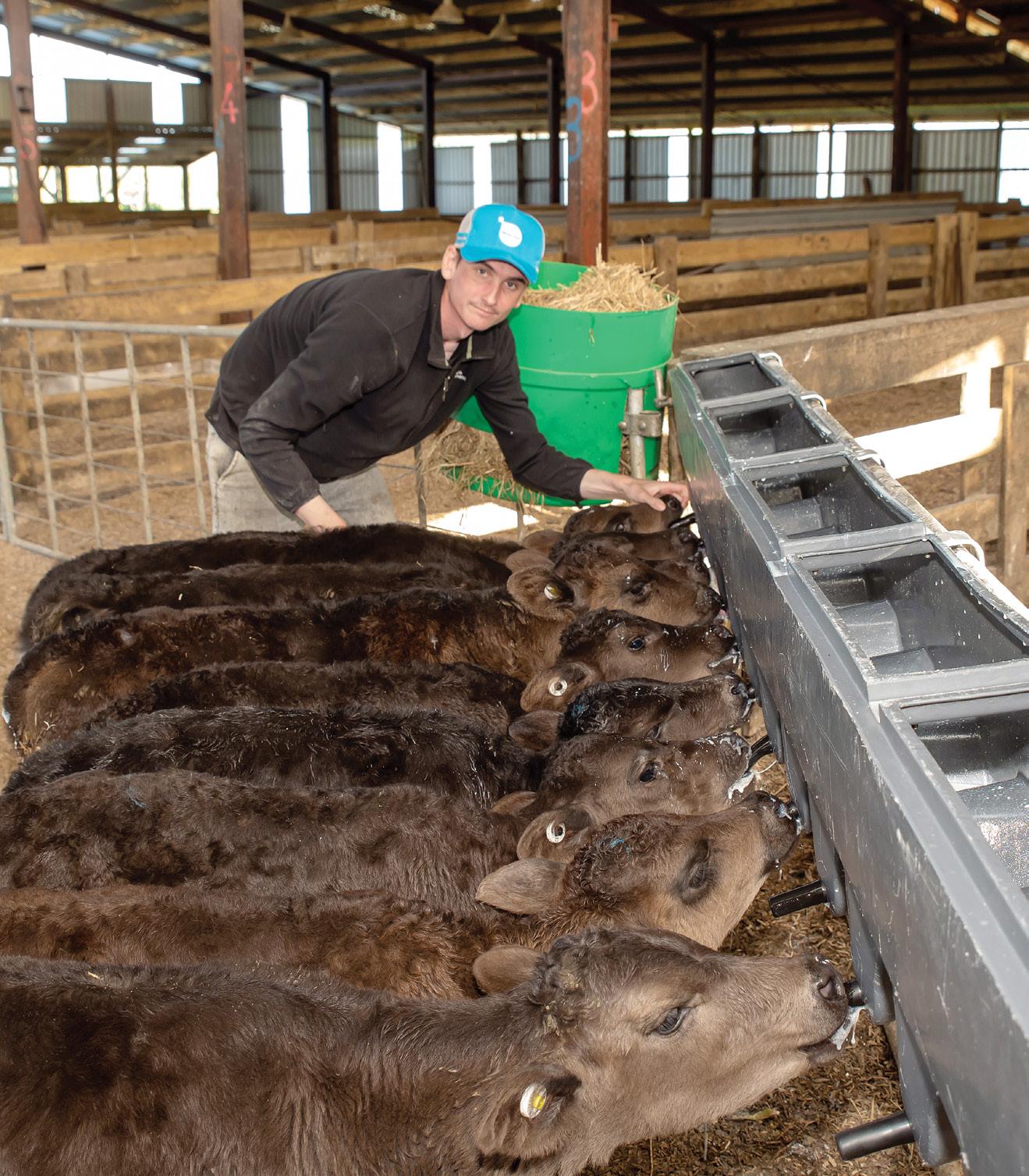
“He revolutionised our approach to calf rearing,” Mack says. “It’s a very challenging model we’ve developed, but necessary for the situation we face.”
Scarcity of whole milk means they use milk powder from day one, costing about $150 a calf. They introduce meal from the calves’ first day through until they’re 12 weeks old, another $80/head cost.
“Something as simple as access to a source of dry bedding can be an issue. Then there’s the unholy trinity of rotovirus, crypto and salmonella. Every year it seems there’s something new, but once you’ve dealt with it it’s not so scary.”
Theileria isn’t an issue in the four-dayolds they bring in.
They’re drenched about once a month and the brothers are now smarter about integrating other stock classes to keep
on top of the worm challenge, with 400–500 breeding cows also run under a Techno system.
“Because it’s very wet land, there were concerns that there’d be too much stock pressure and they’d make a big mess,” Mack says.
“We held our breath, but the Techno allows us to control cattle behaviour and pasture height and quality in wet periods, greatly limiting damage in wet periods. The quantifiable nature
of Techno allows you to easily identify poorer producing areas or stock classes, so if they don’t meet a certain threshold we can go back to the drawing board to look at other options.”
They’ve experimented with almost every stock class and stocking rate, winter round length and have settled on targeting four yearling bulls/ha which allows a target of 400kg/ha to be relatively easily met.
While higher production is definitely
FARM FACTS: Wakelins Station, Paihia, Northland • Gross Farm Revenue $2733/ha
• Farm Working Expenses $1368/ha • Effective Farm Surplus $1328/ha • Lease family’s 550ha (430ha effective) • 1000 bulls run under a Techno-grazing system, taken to 300-350kg LW • 400kg+ CW/ha production target • 400-500 breeding cows, changes seasonally • Up to 1500 calves reared • 500 sheep, 460 red deer, including 270 velveting stags and 1200 chickens.
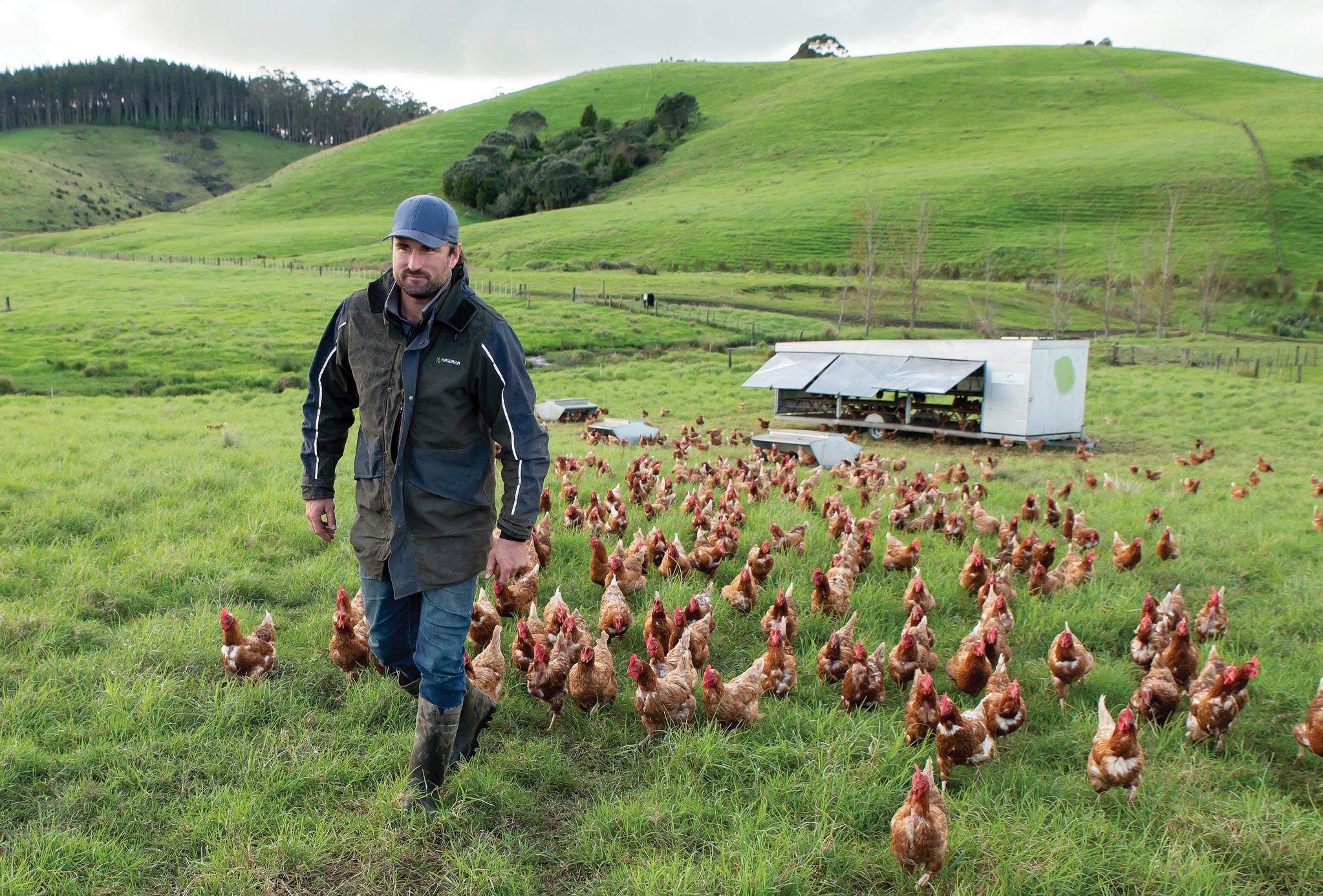
Mycoplasma bovis came on to two farms leased by Mack and Toby Lynn after they bought in 150 calves that had originally come from the South Island. In total, 2500 head of stock had to be slaughtered.
“We had really good people to deal with and some real lemons too,” Mack says.
“We were young guys with lots of debt and a lot on the line. But at
meetings we had with the Ministry for Primary Industries, they didn’t ask if you could afford milk in the tea that they were drinking.
“Our business was growing quickly and things were working well until MPI imposed themselves on us. It took a lot of the passion out of it and changed our outlook a lot, which wasn’t all for the bad.”
As fate would have it, the day they
achievable, this level is more sustainable.
Both ewes and lambs have been farmed successfully with Techno.
“You’ve just got to have lots of power and make sure they’re not too woolly,” Mack says.
They have 500 ewes that lamb at the beginning of June when there’s usually a good feed supply available. Although the lambing percentage may be low, averaging 125%, the concentration is on lambs weaned per hectare. They also trade lambs through the winter to be sold in August, with the flock controlling worms for the cattle. Their stock agent will buy them in from as far south as Waikato and King Country.
They also tried the Techno system with their 470 red deer, including 260 velveting stags, but found it wasn’t so applicable.
“With the nature of kikuyu in Northland coupled with the grazing habits of deer, it proved difficult to manage feed in the same way as you would with bulls.”
They initially bought in deer from their brother in law out of Whangarei, and from a local farmer who was retiring.
“It’s the most profitable thing we do and has enabled us to accelerate our learning.”
Toby has put in a number of strip
found out their stock had M bovis, after a number of cases of pneumonia and pink eye, they were holding a Beef + Lamb field day. Not only did they have to tell their visitors, they then realised some of their stock had gone to five or six other farmers.

“We had to call people and tell them – MPI didn’t.”
There were also issues with inaccurate testing. About 30 bulls
Mack knew must have had M bovis were blood-tested three times and each time came back negative.
“But when they were slaughtered they were all positive,” he says.
They had to beg MPI to depopulate their Matauri Bay farm because Toby knew his stock had M bovis.
Other decisions were laughable, such as the brand new calf feeder that MPI decided someone had to
come from Christchurch specifically to clean it.
“I knew it hadn’t been used and said that I’d burn it because with it here we still couldn’t restock. It was bureaucracy gone mad. Like most people who went through M bovis, it wasn’t a fun time, but what doesn’t kill you makes you stronger. And we’re still here.”
trials of crops such as Raphno, chicory, red clover and Italian ryegrass into the kikuyu-dominant pastures. Most of the pasture renovation happens on the deer farm, targeting early spring growth to promote velvet growth, and the requirement for high-energy feed for lactating hinds through the summer – neither of which kikuyu can meet. Unlike many Northland farmers they don’t mulch it to stop rank growth.
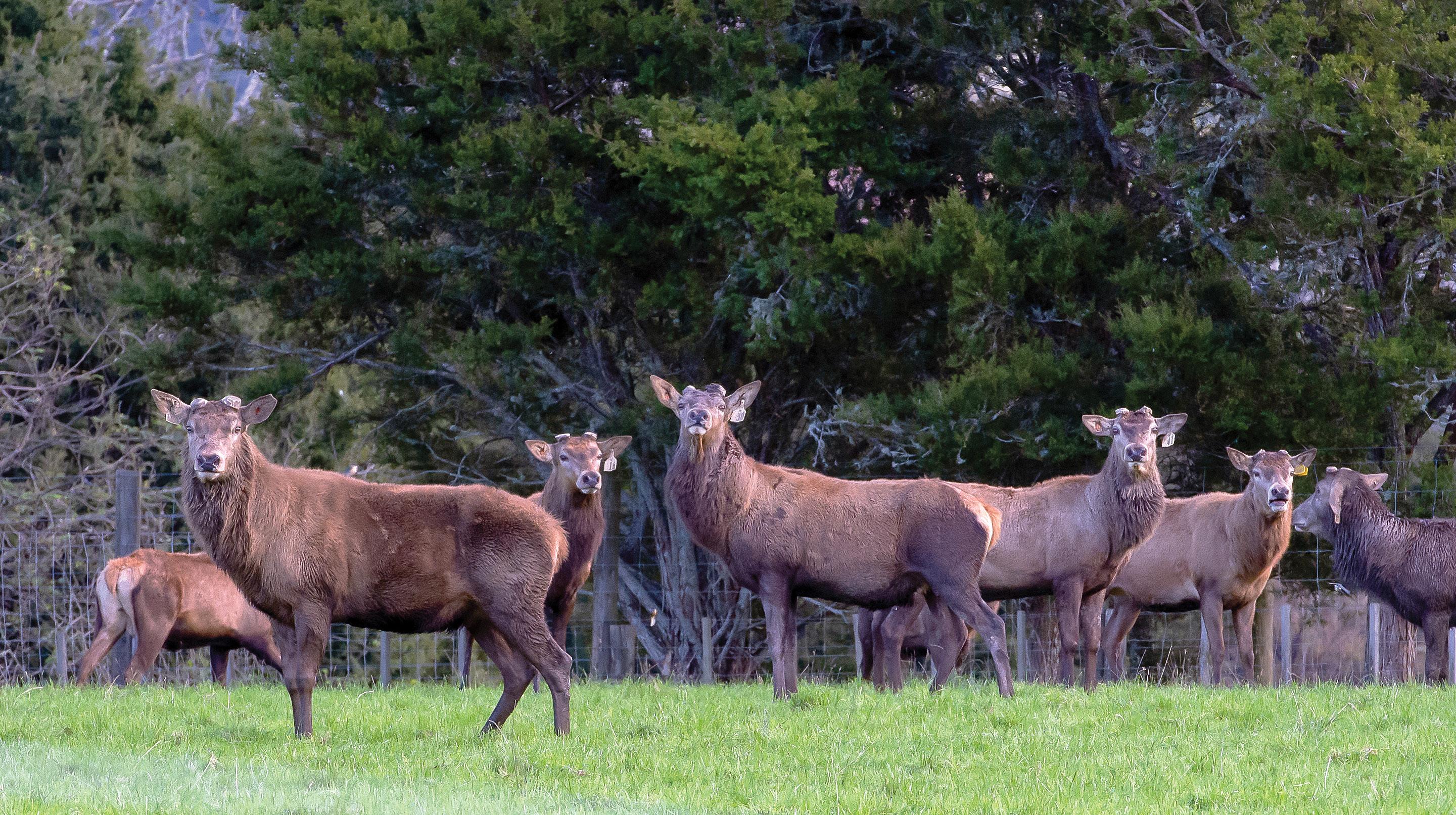
They make silage on a small finger of land that can’t be grazed easily by cattle but is highly fertile. They’ll grow a crop such as oats or make silage for the deer, as feeding silage to their cattle is “an extreme rarity”.
“I don’t like the idea of silage, I’d rather use Techno to manipulate grass cover and carrying capacity,” Mack says. “Silage doesn’t get better because you put it into a bale. And harvesting it then storing and feeding it out is a lot of work.”
The farm’s pH averages 5.8 and the Olsen P 15–20. They apply 500kg/ha of capital fertiliser made up of phosphate
“Silage doesn’t get better because you put it into a bale. And harvesting it then storing and feeding it out is a lot of work.”
Changing to Coglavax8 increased the survival rate of our lambs. Now we only use Coglavax8 across all our sheep and cattle.
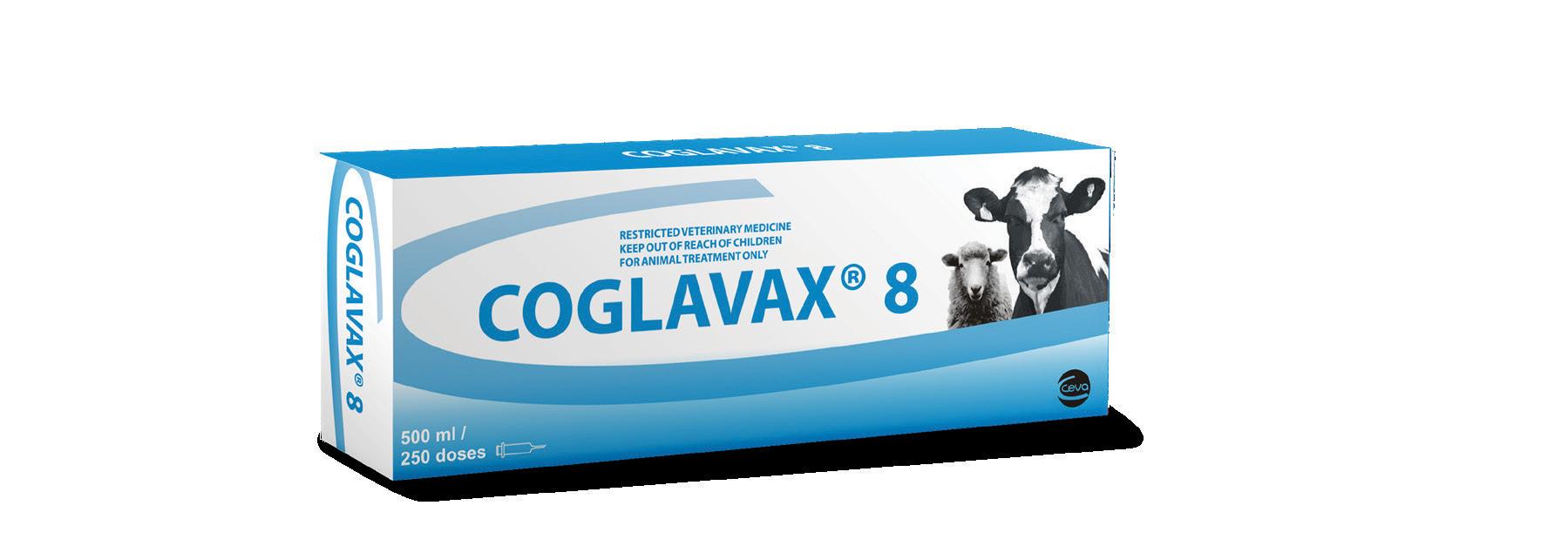 Donald Polson Owner – Waipuna Farms
Donald Polson Owner – Waipuna Farms
STEP
When you’ve built a reputation for outstanding genetics you don’t want to take unnecessary risks with clostridial disease. That’s why Waipuna Farms have stepped up from 5 in 1 to Coglavax8 vaccine to protect their unique Waipuna Maternal and Terminal breeds against 8 clostridrial diseases present in New Zealand.
YOUR
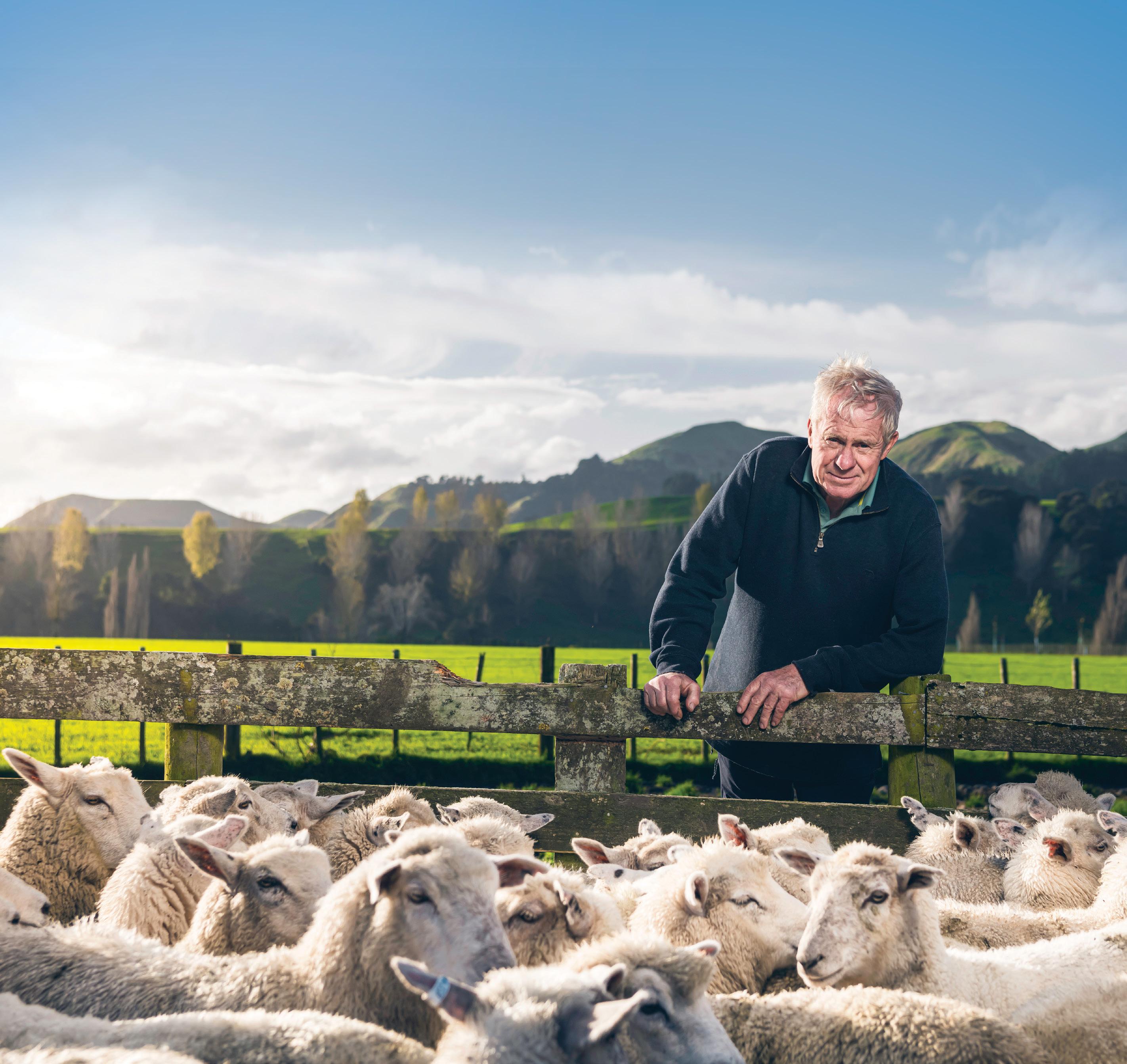
and some form of sulphur, which varies annually. After using a lot of nitrogen in the past they’re now trying to reduce this input as much as they can; not applying any last year, other than for crop establishment.
“We’ve got our own spreader and Toby is onto that.”
Mack has been running 1200 hens for just over a year, housed in two purpose-built “chicken caravans” he bought on Trade Me. The aim was for the birds to clean up pasture after the cattle and to earn income from the sale of eggs to Paihia restaurateurs. But it didn’t go smoothly to start with as the chickens wouldn’t go into their new accommodation, instead swarming outside on their first night.
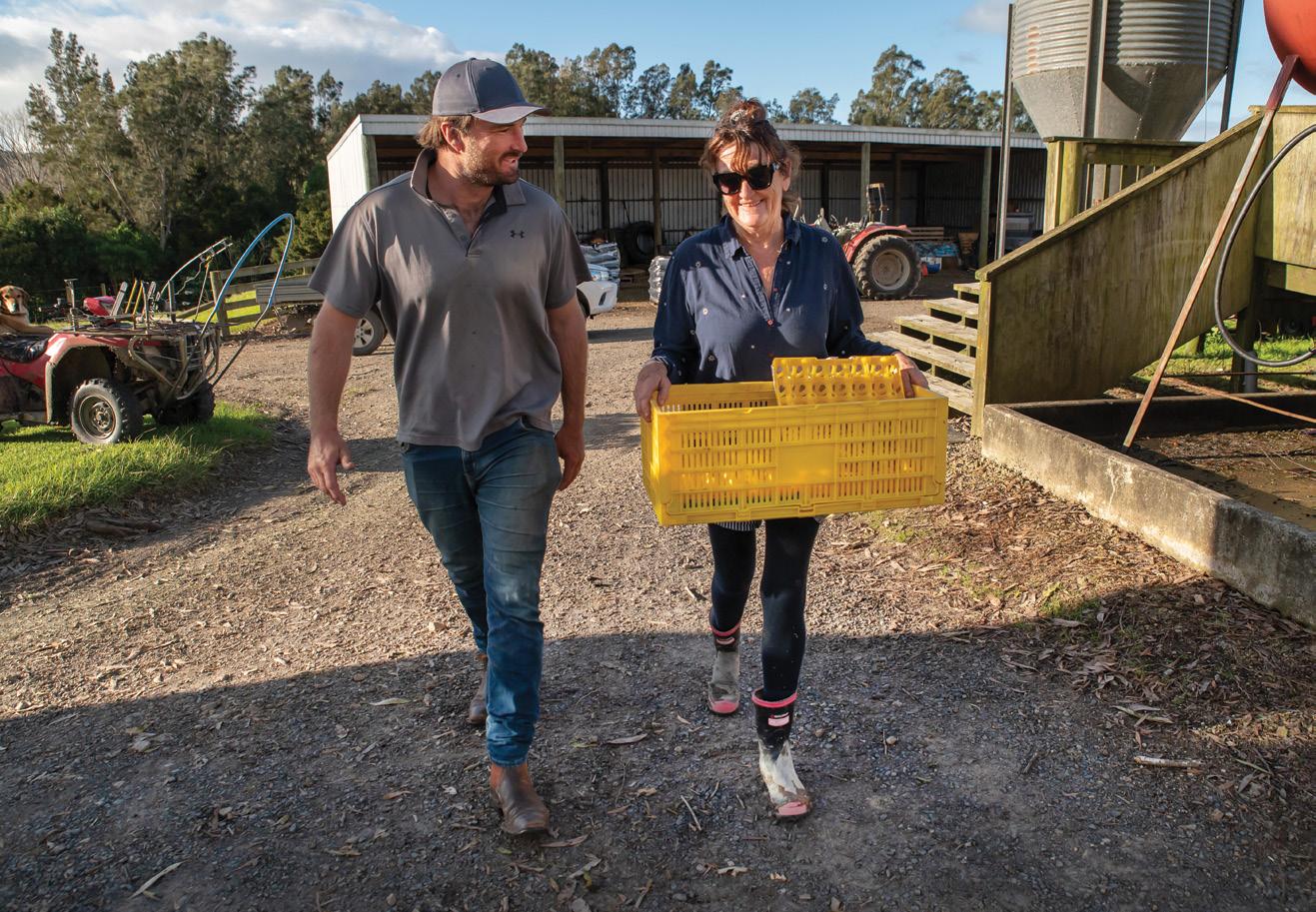
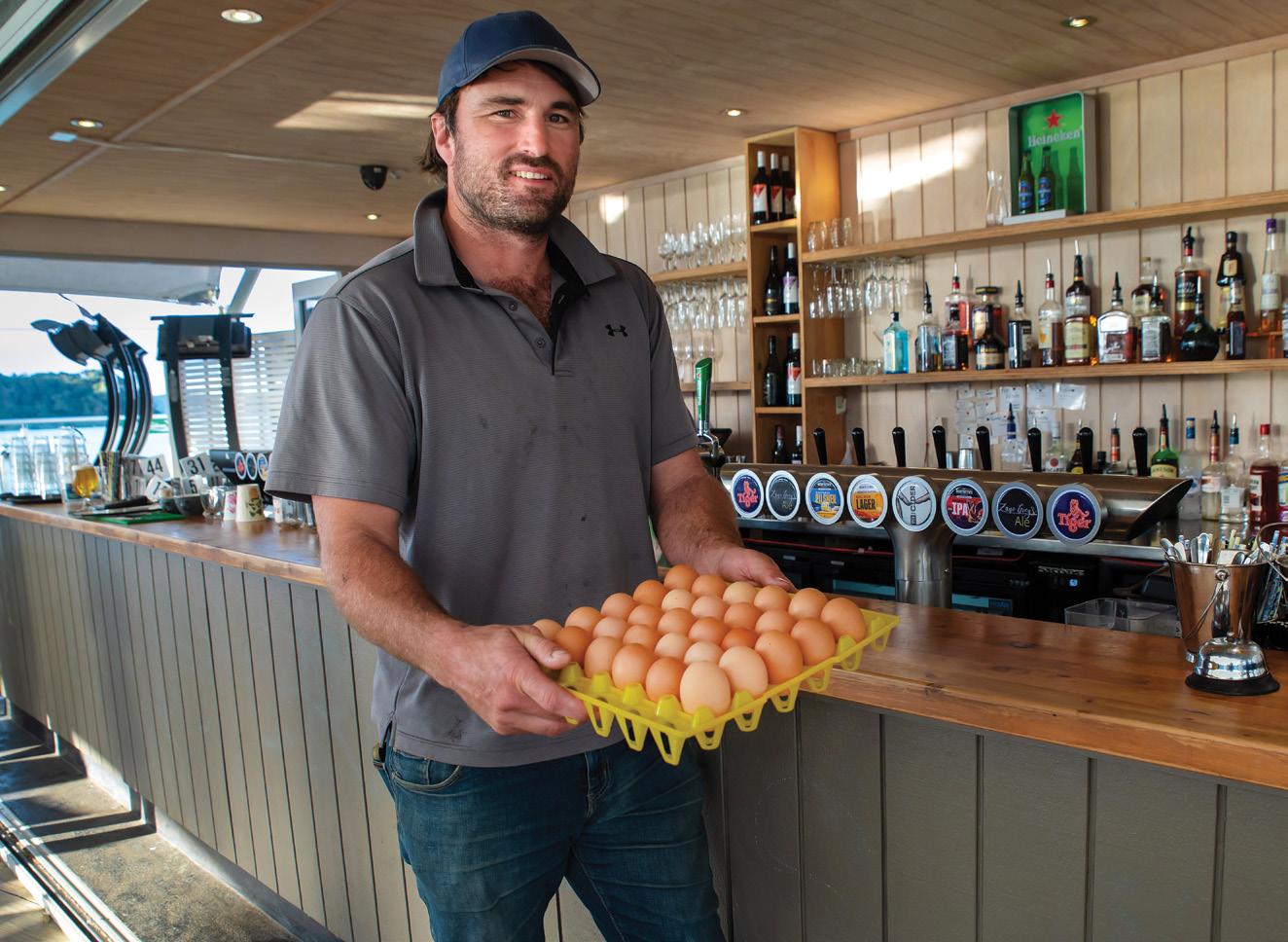
“After a panicked phone call to a chicken farmer in Australia who assured me my chickens weren’t broken, I
realised I’d made a beginner’s mistake,” Mack says.
“We should have started with six chickens in the backyard, but with every venture we’ve started we tend to go a bit hard a bit too soon.
“We learn quickly. Like getting into calf rearing and deer, it was a steep learning curve, but the signs are there of a profitable business.”
About 50ha of forestry planting is planned for the farm this winter on
marginal country, and if they don’t reach production targets the trees can be included in the emissions trading scheme (ETS). They’ve also tried manuka, with a friend putting hives on 10ha.
“Financially it was probably a mistake and more for aesthetics, but ethically it’s the right thing to do,” Mack says.
However, with some “mongrel gullies” at the back of the farm there are plans to employ a company to manage the whole process, with no decision made yet on what tree species to plant.
Another interest for Mack is creating a model for share farming using the Techno system, hoping to recreate the magic of sharemilking in the sheep and beef industry. There are 1200ha farmed locally under this structure.
“While it’s early days, signs are positive for us, landowners and the young people share farming. And it would help sheep and beef farms not to go into trees.”
Another plan is to return Wakelins Station to some type of tourism operation as was the case when it was owned by Landcorp. An old goat-shed was converted into a wedding venue, found to be cheaper than a marquee for an on-site wedding. And a cellar door for a local winery is another option being explored.



While it is a significant capital outlay, according to a 2016 report ‘The Economics of Stock Water Reticulation on Hill Country’ the average payback period was just three years. This is based on indepth case studies of 11 sheep and beef farmers from across the country who had installed reticulated water systems on their hill country properties.

Speaking at a recent Beef + Lamb New Zealand Farming for Profit day, report co-author and AgFirst consultant Erica van Reenen said most case study farmers were able to increase stocking rates after the installation of a reticulated water system. All reported increases in lambing, calving or fawning percentages, as well as increases in the number of animals sold prime to heavier slaughter weights.
When the farmers were asked what advice they would give other farmers contemplating installing a reticulated water system, they were unanimous in their response: “Just do it.”
At the time the report was written, the average capital costs of the water system were $311/ha or $29/su and operating costs were $4.77/ha or $0.59/su.
Van Reenen said most farmers
• A reticulated water system on hill country gives significant ROI
• Can lift stock reproductive performance and productivity
• Greatest benefits are around grazing management.
experienced a slight over-run in costs when installing their systems, but this was mainly due to farmers wanting to over-spec once they got under way. There were also some logistical challenges, such as requiring a helicopter during the installation process when it became apparent that a tractor wasn’t up to the job.
She said the greatest benefits generated by the water schemes were around grazing management and the ability to better utilise pasture. Most were able to further subdivide paddocks, but this was not critical to see a return on investment.
Troughs proved to be an effective way to encourage grazing over hill country and optimise land use. The systems also gave farmers the opportunity to retire less productive areas such as gullies or erosion-prone land.
Another benefit was greater flexibility over summer. This included being able to buy trading stock and co-graze sheep and cattle, which can be difficult when relying on dam water.
Most farmers reported that their water system made implementing their farm plan easier and enabled them to fenceoff water ways, bush and wetlands and
carry out riparian and erosion control planting.
Another significant but less tangible benefit that all case study farmers reported was peace of mind.
Before the installation of the water systems, most sourced their water from dams or other unreliable water sources.
Van Reenen said just about every farmer spoken to had experienced drought before the installation of their water system and the peace of mind was enormous.
The water system provided access to more of the farm during subsequent droughts.
Getting the right people involved in the project from the outset was important, as was drawing up a plan and getting the correct pipes.
She said pipe requirements determined everything else such as pumping and head requirements.
The grazing management should also be planned from the outset.
“Think about what changes you are going to make to ensure you make the most of your new system.”
Van Reenan said first off, farmers need to think about why they needed a reticulated water system and the drivers behind it. Typically, an increase in productivity and performance were the main motivators.
Other factors that need consideration include the water source, where the water needs to go to, how much volume is needed, power supply, hydraulic design, compliance requirements and efficiency or the scheme’s life-time costs.
• Greater flexibility over summer.
• More subdivision and retirement of less productive land.
• Grazing management should be planned at the outset.
• Installation can be staged.
Most systems draw water from streams, dams or lakes (evaporation needs to be taken into account), springs or groundwater and with all of these, take time to ensure the sustainability of the water source and its quality.
“It’s important to test the water for the system at the start.”
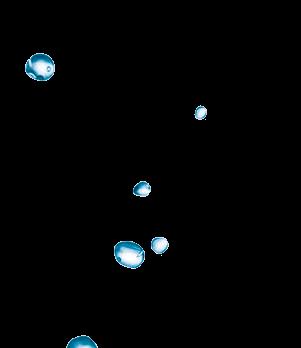
The installation of a stock water reticulation scheme on hill country has given an average return on investment of 53%, Sandra Taylor writes.
From the outset, the longterm goals of the water system and the fencing should be planned to maximise grazing management.
It can be done in stages, so the benefits become apparent before undertaking stage two. Consider the environmental benefits of a reticulated water system, such as fencing off less productive or riparian areas. It's also important to have a backup in case of system failure.
This might include putting a gate in fenced-off riparian areas to allow stock access to water in case of emergencies.
When calculating the system’s requirements, she advises taking peak demand from maximum stock numbers into consideration. Cattle can drink a lot of water in summer.
While gravity is the most costeffective way to move water around, she said it is important to ensure pressure doesn’t exceed pipe ratings and pressure breaks are placed roughly every 60 metres. Troughs should not be used as pressure breakers.
Solar pumps can be effective in remote locations, but additional storage would be needed for periods of grey days. Diesel pumps are good, particularly in remote locations where water is needed on demand.

Ram pumps can be effective but they need a consistent volume of water to fill them as adequate fall.
Electric pumps are most cost efficient if the power source is close by.
Pipes should be buried as they will derate quickly and if they can’t be buried, they should run along a fence-line to get covered in grass.
“Think about pipes in relation to the contour of the land.”
Troughs should be positioned to maximise grazing management while being easily accessible for repairs and maintenance.
The whole system should be mapped, ideally during installation.
Wanganui farmers Bevan and Mary
Proffit have just completed stage one of their reticulated water system that covers 230ha. Stage two, which will cover a further 300ha, is scheduled to get underway next spring.
The couple farm Ohineiti Station, a 1972ha predominantly steep hill country property north of Wanganui, running 12,518 stock units. These are made up of 5176 mixed-age ewes, 1998 two-tooths and 1625 hoggets (not mated) and 383 mixed-age breeding cows, 95 R2 heifers and 209 R1 heifers.
While every paddock on the station had water, Bevan says it was unreliable at best, and the predominance of dams limited their ability to graze sheep and cattle together over summer. Sheep would continually get stuck in the mud created by the cattle.
Proffit said they had been thinking about installing a reticulated water system for some time and while there was a small water system on Ohineiti when they bought the station 10 years ago, it had not worked for five years.
“We needed more reliability and to be able to integrate cows and ewes and lambs.”
He did a lot of homework and picked a lot of brains before making the decision to go ahead with the project.
A reliable water source is critical, and the Proffits have been able to source water from a creek on their neighbour’s farm. This creek runs all year and has been tapped at 410m above sea level.
The tanks on Ohineiti are 10m below the creek so the whole system is gravity fed.
“We’re playing with altitude.”
So far, they have installed three 30,000 litre tanks, one 5000 tank and laid 7km of pipes. All but 100m of pipe is buried. They have placed 25 troughs (along with 30 existing troughs that were part of the old water system) and installed three 70-litre pressure breakers. They have also hand-built a small dam at the water source.
The couple has spent $85,800 on materials (which includes materials for stage two) and $38,000 in labour and installation costs. These costs include flying the tanks onto their hill site.
Platforms have been built on the outside of the tanks so they can be checked safely, and Proffit spent an extra $800 to allow him to check the tanks via his cell phone using the wifi at his house.
“For $800 it saves so much time.”
The installation of the water system has enabled the Proffits to retire 17ha of land and subdivide 15ha of flat land.
The removal of the 17ha from their rotation has made stock management a lot easier without impacting on stock numbers. The Proffits are hoping to enter retired land into the ETS.
Most importantly, the water system will enable them to utilise more of their hill country.
They used to have to force animals to graze the higher parts of the block.
Unfortunately, they have yet to fully reap the benefits of their water system,
due to the extremely wet weather they have been experiencing since last winter.
A series of slips has wiped out fences, so it’s been an ongoing job to clear slips and repair fences.
“It’s just been one of those seasons.”
Ohineiti Station is classified 70% steep country, 20% medium hill country and 10% easy and rolling.
It is a good testing ground for beef genetics and the Angus, Hereford and Shorthorn cows have to produce a good calf on hard hill country year after year with minimal inputs.
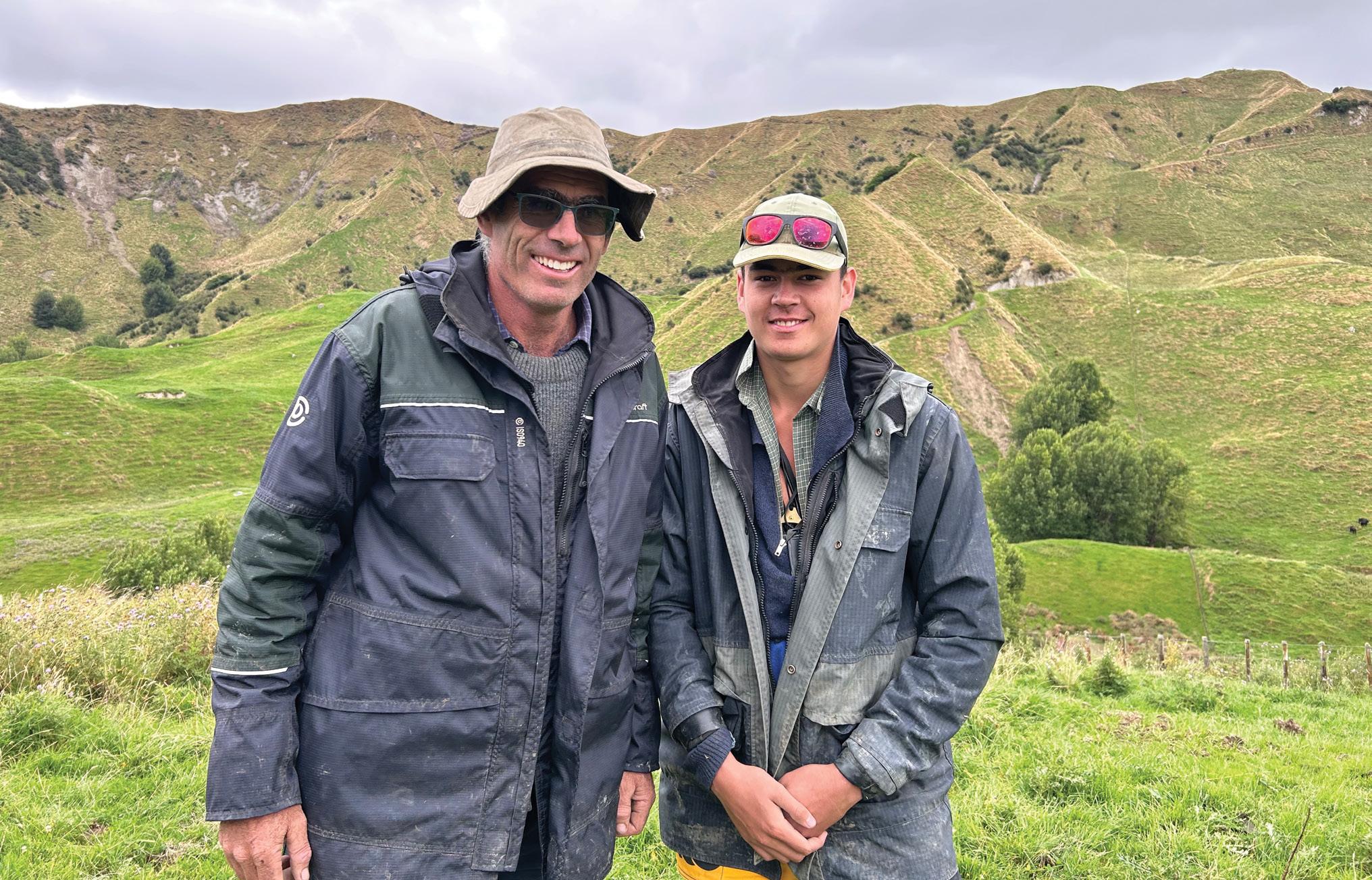
“We needed more reliability and to be able to integrate cows and ewes and lambs.”
AngusPRO are a group of New Zealand Angus studs that encompass over 40% of New Zealand’s registered Angus cattle. These studs have united and made the shift across the ditch, to join the progressive governing body that is Angus Australia.
Angus Australia pride themselves on their quality of leadership in the delivery of innovative programs that will enhance and promote the value of Angus cattle and beef.

Cleardale
Focus Genetics
Grampians
Kahurangi
Kakahu
KauriDowns
Komako
Lake Farm Genetics
Mount Linton
Ngāputahi
Ranui
Rimanui Farms
Rissington
Rotowai
Seven Hills
Stokman
Storth Oaks
Takapoto
Te Mania
The Sisters
Totaranui
Twin Oaks
Vermont
Wairere
Waitangi
Waiwhero
Wakare
Whangara
anguspro.co.nz
Everyone in the industry knows that profitability within a cattle system can be improved by making educated predictions with factual data.
It’s scientifically proven.
The bull goes out on December 15 to the yearling heifers, which are at an average mating weight of 329kg. The mixed-age cows are put to the bull on January 15. The cows are set-stocked for calving in July and stay on the hill until weaning. The heifers calve on easier country behind a wire. All calves are weaned from late April or early May and all but the very smallest surplus calves are sold at weaning. Bull calves are sold entire. The calves weaned to cows mated is 72%, with misadventure being behind a number of losses on their steep country.
This year, as part of a Beef + Lamb NZ Genetics progeny trial, the Proffits artificially inseminated 350 cows and heifers. Bevan said they have used Hereford, Shorthorn and Angus sires to see how the different breeds perform against each other in a commercial environment. Most importantly, they were testing to see if estimated breeding values (EBVs) continue to be expressed in what is a tough testing ground.
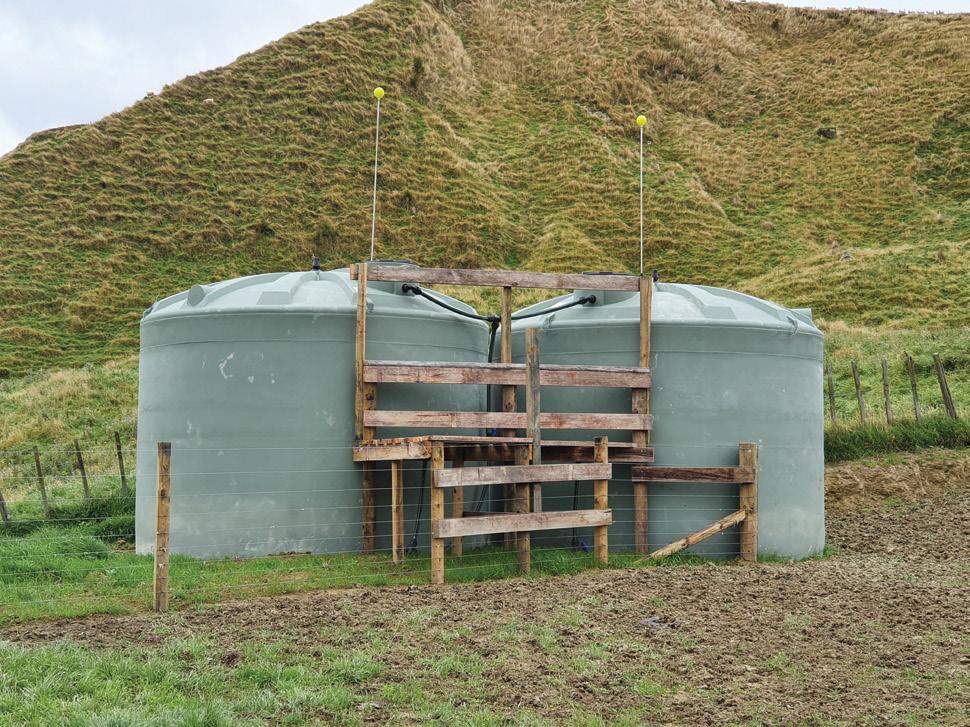
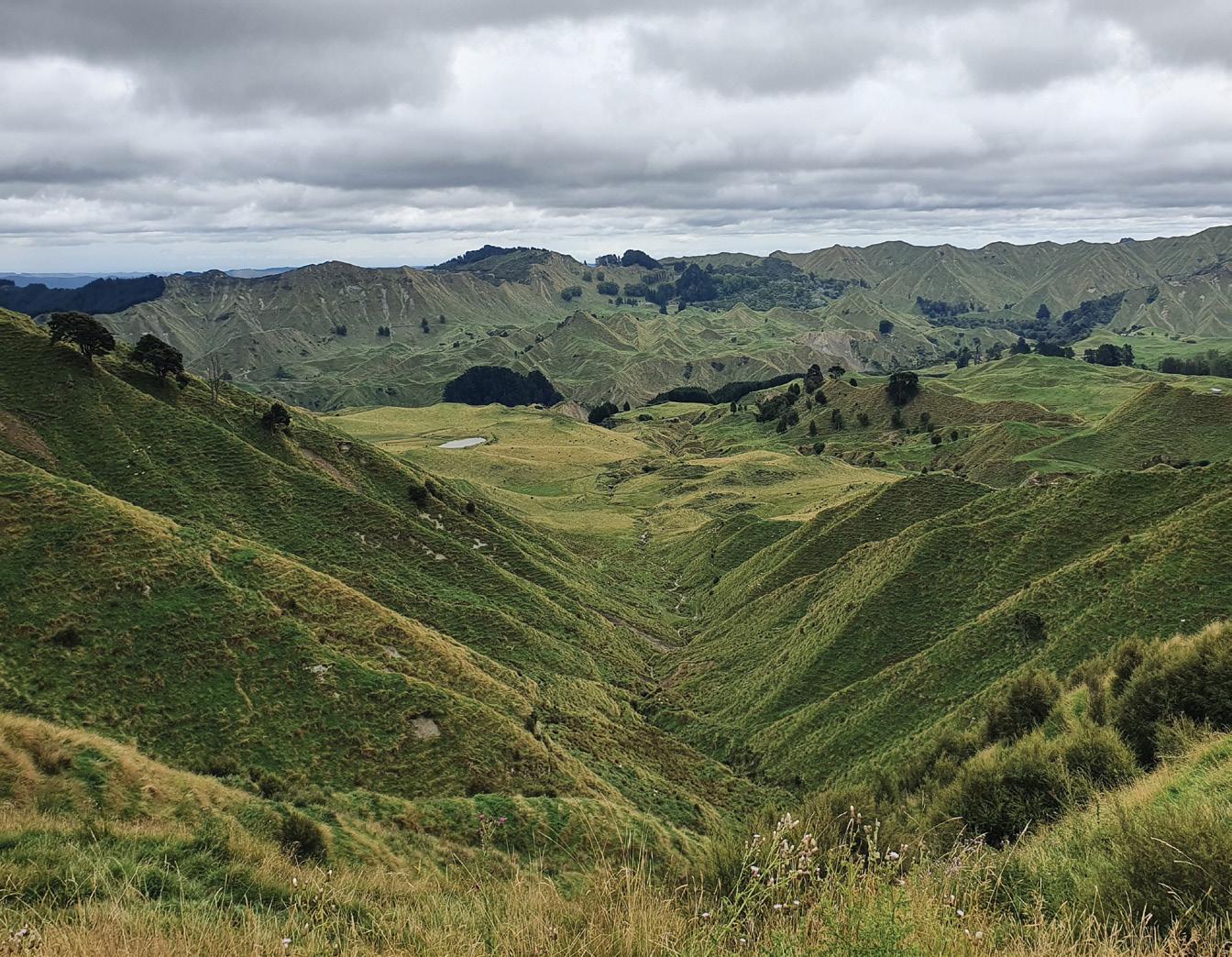
“We offered up our commercial herd to see if the EBVs do stack up, and hopefully the outcomes will be of some benefit to all commercial farmers.”
It is strictly a breeding farm with all non-replacement progeny sold store.
The main breeding objectives in their Perendale ewes is to breed a mobile sheep for their hill country and their older or off-type ewes are put to a Suftex cross terminal sire.
Ram lambs are used for the first 30 days of mating and these are followed up by older rams until scanning. The scanner marks late in-lamb ewes.
Lambing dates are staggered with the terminal sires going to 2100 ewes on March 10 and Perendale rams going to 3200 mixed-age ewes on March 20. These mating dates have been moved
forward by 20 days to produce an older lamb for sale in December. On April 5, Perendale rams went out to 2000 twotooth ewes for a September 1 lambing.
Last year, the terminal and mixedage ewes scanned 160% and 159% respectively, and the two-tooths scanned 143%. Across all three classes, the ewes lambed 119% (lambs weaned to ewes mated), six percentage points below their goal of 125%.
Weaning in the terminal sire ewes takes place in late November and everything above 25kg is sold. This is about 70% of the lambs. The mixed-age ewes are weaned in mid-December and all male lambs above 25kg are sold, this is about 45% of the maternal lamb crop.
The Proffits aim to average 30kg at weaning and they draft every month thereafter to achieve a 33–35kg average sale weight.
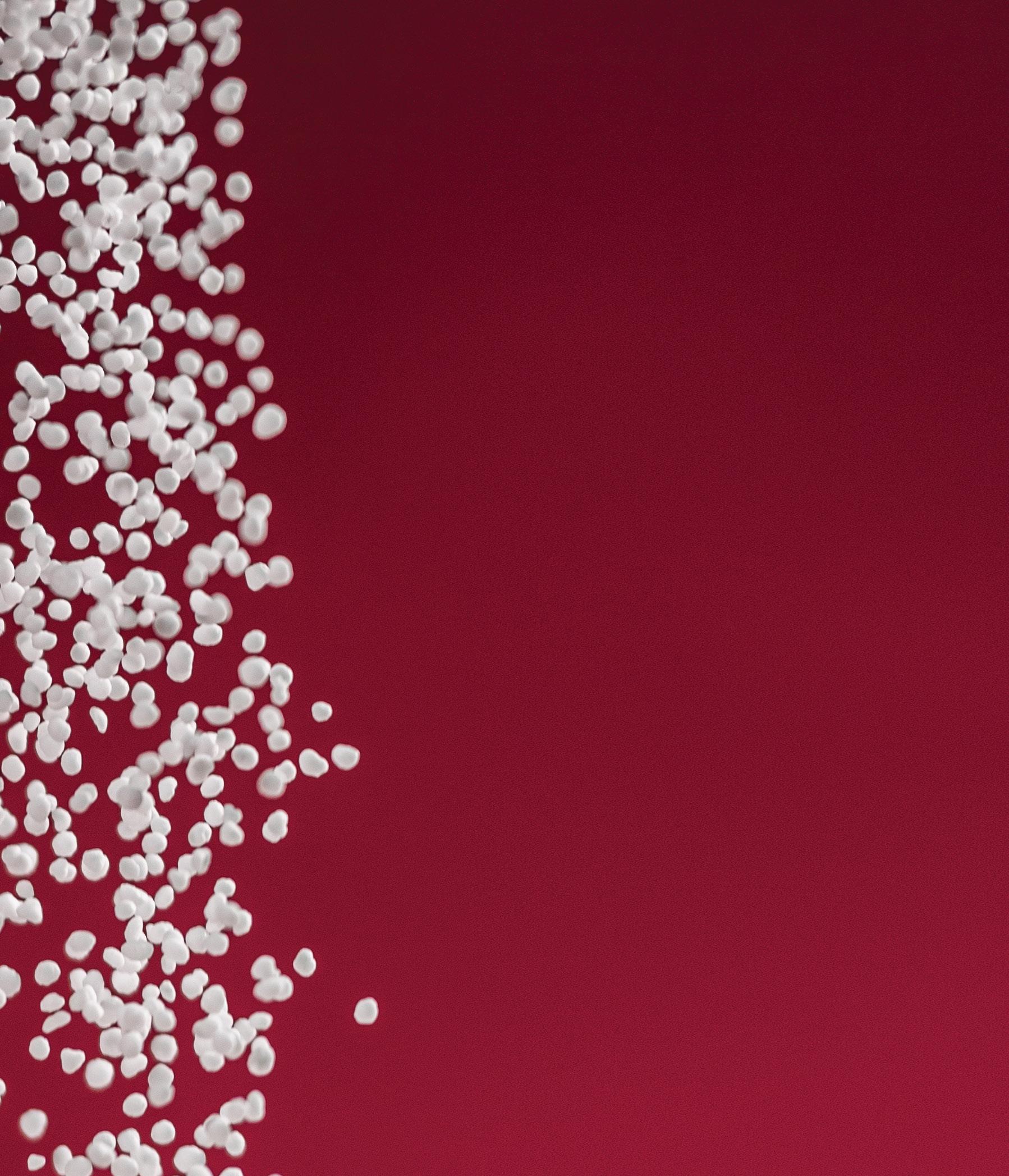
Look
Superphosphate is our staple fertiliser. The price of super has typically been in the range $300–$350 a tonne (t) during the last decade (see Figure 1) but has recently spiked to more than $500/t, mimicking what happened during the Global Financial Crisis in 2008. The temptation in these circumstances is to withhold fertiliser inputs. And it is a real temptation, given that fertiliser is often the largest item of discretionary expenditure in the budget – the average dry-stock farmer spends about $83,000 a year.
If you are tempted to withhold inputs, I suggest you think again.
Remember the past. In the mid-1980s subsidies on fertilisers were removed. Many farmers, caught with this sudden rise simply could not afford to apply fertiliser. A later survey (1990) revealed the financial consequences: For those farmers who continued to apply fertiliser (at least > 100kg/ha) their gross revenue and expenditure were $441/ha and $291/ha respectively, leaving a profit of $151/ha. For those who withheld fertiliser inputs, the gross revenue and expenditure were $253/ha and $207/ha respectively with a profit of $46/ha.
The old adage remains – nobody goes broke putting on fertiliser!
At this same time, several on-farm trials were conducted looking at the effects of withholding fertiliser inputs on pasture and animal production. The rule of thumb that emerged from all this
science is that production will decline by about 5% a year if no fertiliser is applied, assuming you are starting with a soil with adequate fertility.
Since then, we have learned some other tricks to cope with rising fertiliser costs. One is obvious when you think about it. Figure 2 shows the generalised relationship between soil fertility (in this case soil Olsen P) and relative pasture production. Note the relationship is not linear. When the soil fertility (Olsen P) is low, large increases in pasture production can be achieved by applying fertiliser and increasing the Olsen P. The dollars you make from the extra pasture produced are greater than the cost of applying fertiliser – i.e. fertiliser inputs are economic.
When the soil fertility (Olsen P) is high, the dollar benefits arising from any increase in pasture production are much less than the costs of applying fertiliser –fertiliser inputs are not economic. What we are looking for is the “sweet spot” –the economic optimal soil fertility (Olsen P) – the region on the graph were the long-term profitability is optimised – the economic optimum. This should not be confused with the agronomic optimal.
The economic optimal is determined by how many dollars you make for each kilo of dry matter grown and this, in turn, is determined by the gross margin –the gross income minus the variable costs (animal health, supplementary feed, shearing and electricity). The higher the
gross margin, the higher the economic Olsen P (Figure 3).
The average gross margin at present is about $120/stock unit (su) and the greater the stocking rate (su/ha) the higher the gross margin (GM)/ha, and hence, the higher the economic optimal Olsen P (Figure 3).
Using this information provides a good basis for rationalising the fertiliser bill.
Divide the farm into blocks of different economic efficiency
This may be based on land class or topography. For example, the potential stocking rate on the better class of land may be say 14–16 su/ha, which, assuming a gross margin of $120/su,

translates to a gross margin/ha of about $1600 to $1900 a hectare. With reference to Figure 3, this suggests that the economic optimal Olsen P is in the range 20–25. At the other extreme, the steep hill country block may only support 6–8 su/ha (i.e. gross margins of $700 to $900/ ha) indicating that the economic optimal Olsen P should be in the range 10–15. By the same logic, the economic optimal Olsen P for the middle country (rolling to easy hill country) will be in the range 15–20.
So, step one in the rationalisation programme should be to divide the farm into blocks based on their economic potential (GM/ha). The days of applying the same rate of fertiliser across the
whole farm should be gone! This knowledge will also help you set fertiliser priorities – the better the class of the land the higher the priority in terms of fertiliser expenditure. This may mean that as an interim measure to minimise the fertiliser budget no fertiliser is applied to the poorer country.
Importantly, remember there is no economic benefit in farming above the economic optimal soil P levels and this applies to all blocks. We frequently come across cases where, as a result of past fertiliser inputs, the Olsen P levels are above the respective economic optimal ranges. In these cases, fertiliser P inputs can be withheld for a period, mining the soil Olsen P levels down to the
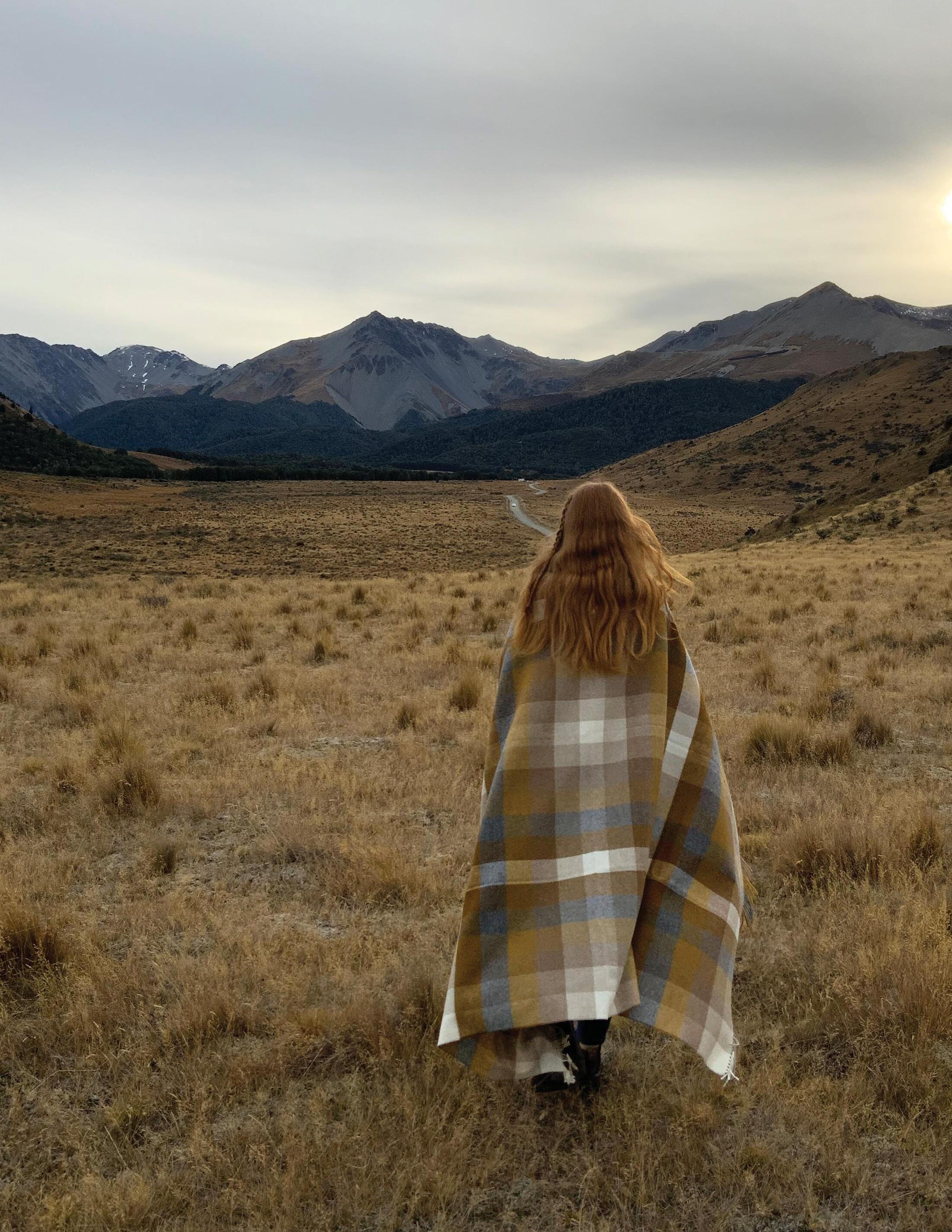
optimal range. This will have no effect on production in the short term, noting that the rate of decline in the Olsen P when fertiliser P is withheld is about 1–2 Olsen P units a year. In some cases, there will be sufficient plant available P in the soil tank to keep production ticking along for several years. The same does not apply to the more mobile nutrients, potassium (K) and sulphur (S). Unless the soil K and S levels are excessive, annual inputs are always required to maintain soil levels.
Historically when we talk about fertiliser, the emphasis has been on P. Farmers, with encouragement from the fertiliser industry, have focused on fertiliser P inputs and Olsen P levels. Consequently, while we have done a good job with P, we have forgotten about the other important nutrients required to grow good clover-based pastures.
This is where Liebig’s “law of the minimum” comes into play. It states that a plant can only grow as fast as the most limiting nutrient and we know
from our clients that about 60–70% were, when first visited, farming on soils that were initially K or S deficient, and often soil P levels were in the economic optimal range. In other words, the soil fertility was not balanced.
In these situations, it is not a matter of spending more on fertiliser – the trick is to redirect the fertiliser spend from P to the most limiting nutrient(s). One case I remember well. The farm was extremely deficient K, and, as a remedial solution, we recommended no further inputs of P and S but capital inputs of K. Fertiliser costs did not increase but the pasture production was increased by about 20% by chasing down the most limiting nutrient.
Also, do not forget about the trace elements, and in particular molybdenum
(Mo). Mo deficiency was first discovered in New Zealand in the early 1950s and tiny amounts of Mo (50 gm/ha) added to the fertiliser resulted in massive increases on clover production. Indeed, one of the visual symptoms of Mo deficiency is the absence of clover in the pasture, or simply poor clover growth, even though the soil fertility levels are optimal. Surprisingly, we see this problem frequently.
The last trick in the book to ensure the fertiliser dollar is well spent is to choose the least-cost fertilisers to deliver the nutrients required to optimise the soil fertility. As a rule of thumb, this is best achieved by sticking to the generic fertiliser products such as super, potash and urea and avoiding the branded products.

“We frequently come across cases where, as a result of past fertiliser inputs, the Olsen P levels are above the respective economic optimal ranges.”
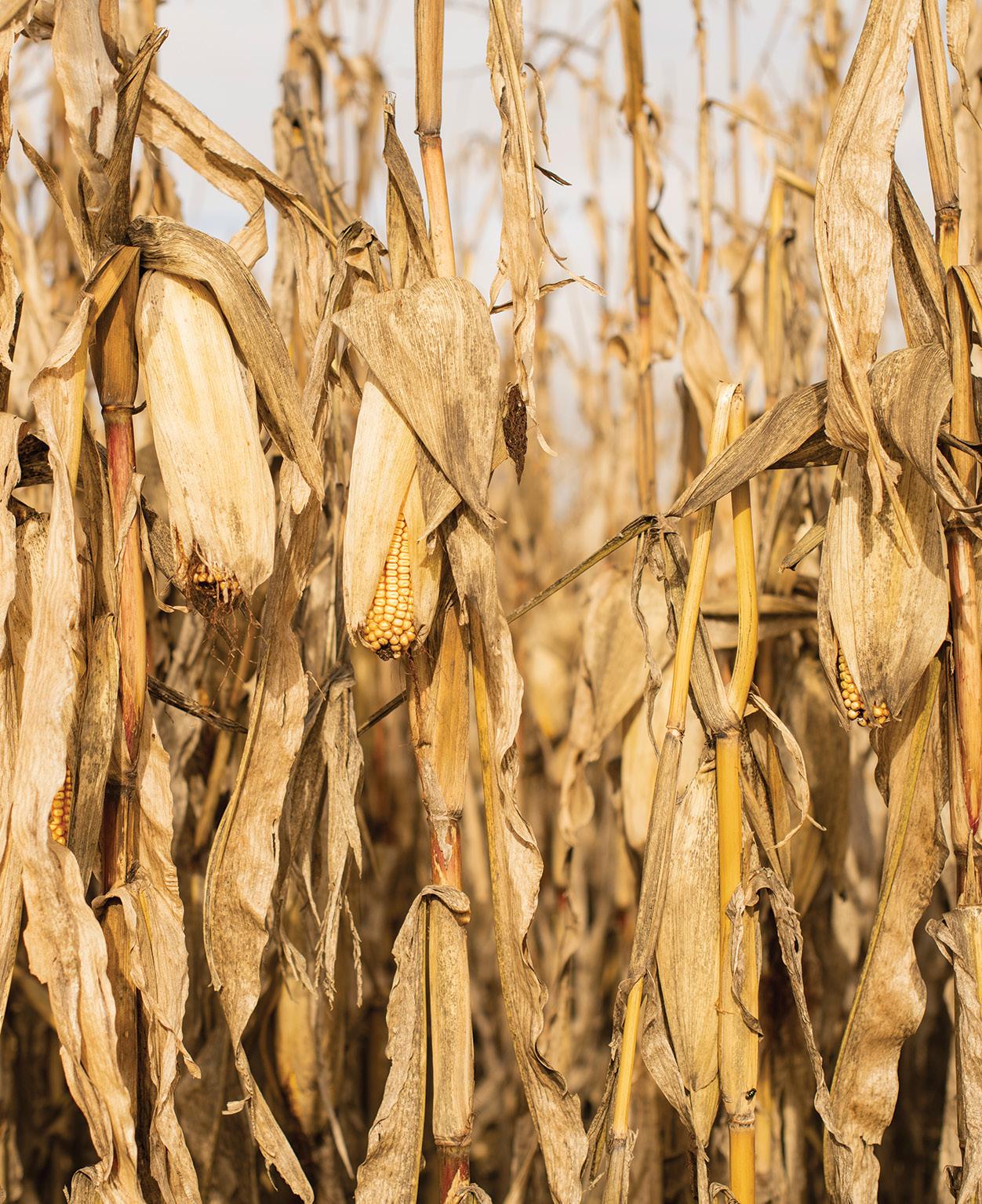
A leading United States crop scientist told delegates at February’s FAR conference in Hamilton that maize growers need to have the basic requirements of soil structure, drainage, season-long weed control and foliar disease protection right if they are to chase high yields.
By Raewyn Densley.Professor Fred Below, a maize expert, said getting the prerequisites right before focusing on seven factors can help farmers achieve high crop yields. Below is professor of crop physiology in the crop sciences department at the University of Illinois.
He and his team at the university’s crop physiology laboratory research the physiology and biochemistry of highyield maize. They are focused on helping growers make on-farm management decisions that sustainably produce high yielding crops.
Unfortunately, Below’s arrival in New Zealand coincided with Cyclone Gabrielle’s, resulting in the planned field day being changed to an online event, but not before about 60 growers and industry representatives had made their way to the Mystery Creek venue.
Average USA maize yields go up and down depending on the weather conditions. However, on average, maize
grain yield increases about 1t/ha every seven or eight years, mainly due to improvements in crop management, but also to maize hybrid genetics.

However, Below’s two presentations didn’t focus on the average maize grower. They were pitched at how growers might achieve top yields, specifically a 19t/ha maize grain crop.
“It’s not about what’s possible now,” Below said. “In research we need to look down the road as to what we might be able to achieve.”
Yields of this level may appear unrealistic for many growers. Below opened his presentation by introducing USA maize grain grower Herman Warsaw of Illinois who set a world record of 23t/ha maize grain in 1985. In Below’s first year as a University of Illinois professor, he visited Warsaw’s farm and saw first hand research plots that produced 19.7t/ha maize grain. Warsaw achieved this by having high soil fertility levels, planting a high
population in slightly narrower rows, matching the hybrid to his system and paying high attention to detail.
Below stressed that getting a number of crucial requirements right was the starting point for achieving high maize yields. These included having good soil structure and drainage, controlling weeds, pests and diseases and having proper soil pH and adequate levels of potassium (K) and phosphorus (P) based on soil tests.
After the basics were in place, Below ranked seven factors that could impact maize yield (Table 1).
He said the higher a farmer was on the list, the bigger the impact on the things below him. For example, the availability of nitrogen [N] was greatly influenced by the weather.
“The weather dictates when you can plant and the weather after that
determines the success of the crop. You are way better to plant when the weather is good for uniform, even emergence.”
While NZ’s temperate climate is seen as ideal for maize growing, the penalty associated with hot nights was a timely reminder for growers facing the effects of climate change.
“Every night during grain fill that the temperature stays above 23C results in a 62kg/ha loss in grain yield.”
Below stressed the importance of
good crop nutrition which took into consideration crop requirements for key micronutrients, as well as macronutrients including N, P, K and sulphur.
“A micronutrient is a macro problem if it limits yield.”
To ensure adequate nutrition for a high-yielding crop, Below believed that the form, rate, timing and placement of nutrients was important.
His research showed that in environments with high soil N levels,
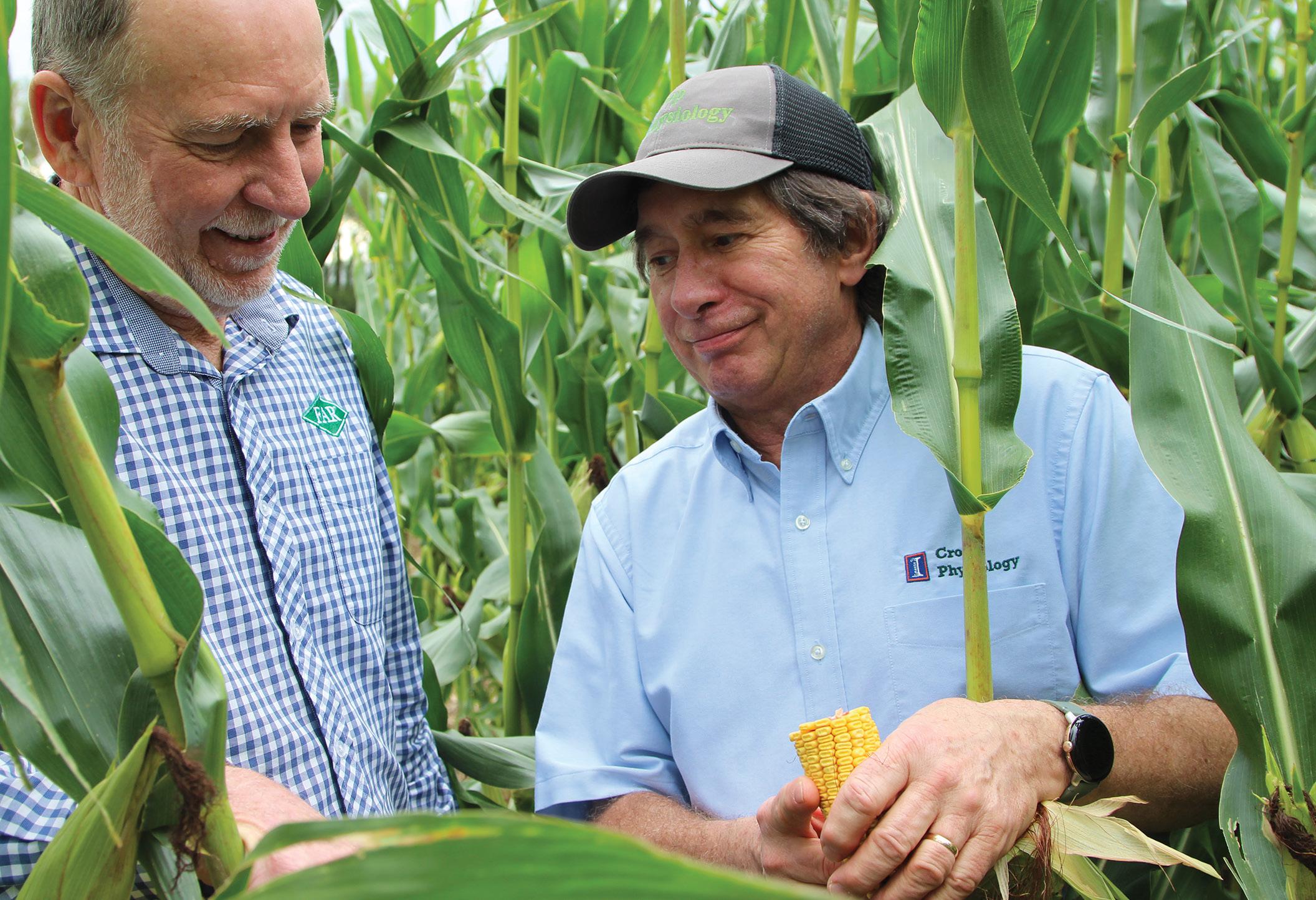
"The weather dictates when you can plant and the weather after that determines the success of the crop. You are way better to plant when the weather is good for uniform, even emergence."
split applications of N increased crop yields.
In the USA, under warmer growing temperatures, maize needs more than 8kg N/hectare a day for 21 days prior to flowering. Required N will not be as much on a daily basis, but the number of days of high demand will be longer under NZ’s temperate growing conditions.
Nutrient placement was also critical because while maize roots grow to great depth, they only spread 15-20 cm horizontally.
“Fertiliser placement is important
because maize roots do not cross the row.”
Below said that in the USA, Y-DROP application of liquid N to maize was gaining popularity. The method allows for the N to be placed within a few centimetres of the maize stalks, which means nearly 80% of the root mass is in the fertiliser application zone.
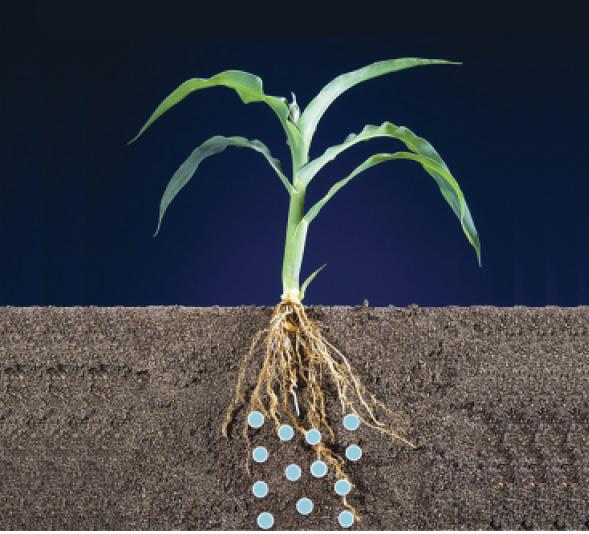
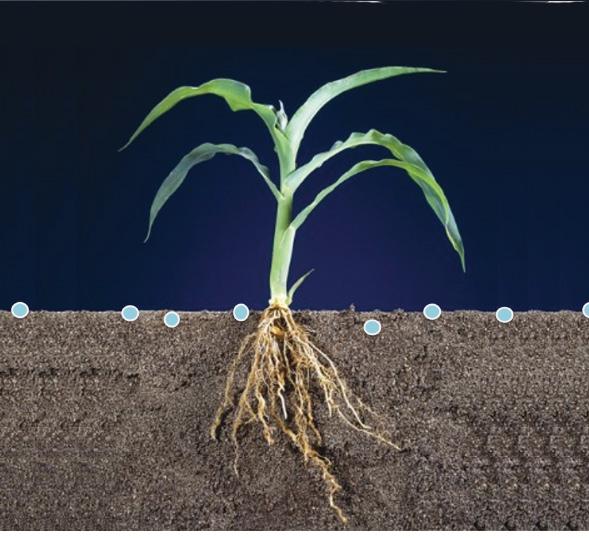
Strip till, a system where only the narrow strip where the maize seed will be planted is cultivated, was growing in popularity. Below believed that one of its key advantages was the banding of the fertiliser in the strip below the seed
allowing better plant access to nutrients.
Maize hybrid selection was in third place in Below’s ranking system. His Illinois yield potential trials carried out using three sites, 32 hybrids and six factorial levels of management continued to demonstrate that “not all hybrids are created equal”.
Below said the best hybrid to plant is usually the newest one. He also reminded growers not to buy seed on price as “you get what you pay for”.
Below urged the audience to keep an eye out for short stature maize hybrids.
“Maize is the last major grain plant to be dwarfed, and short stature maize delivers management and physiological advantages compared with conventional tall maize hybrids.”
Plants have a thicker lower stem and are better able to withstand wind, the lower height makes it a lot easier to ground spray at later growth stages.
There is also less residue after grain harvest which is an advantage for reduced tillage systems.
He said it may not be so good for maize silage, but when growing short stature varieties grain there are advantages when windy.
According to Below, keeping the plant population up is a key factor for achieving high maize yields.
“Grain yield is determined by the number of plants per hectare, the number of maize kernels per plant and the weight of each kernel,” he said. “The one which growers have the most control over is plants per hectare.”
In the USA average seeding rates for grain crops have risen about 900 plants a hectare each year since the 1960s. Modern hybrids can perform well even at high planting densities. However, as plant population increases, root size decreases meaning plants are more susceptible to competition from neighbouring plants.
“There’s about a 1% decrease in root mass per 1000 plant increase in population.”
Below likened the competition plants face within the row to that of people
around the dinner table.
“You don’t want to sit too close to someone at the dinner table, you want some elbow room and maize plants are the same.”
He predicted that recommended planting populations would continue to rise and eventually reach a point where the increased competition between plants within a row limited yield increase. His solution to reducing competition between plants was to reduce row spacing. Narrow rows allowed the crop to intercept more light, there was less competition between plants and the size of each plant’s roots increased when compared to the same plant population planted in conventionally spaced rows.
While high plant population was a fundamental of higher yields, Below was quick to remind the audience that you couldn’t look at any one factor in isolation. The smaller root system of each individual plant further heightened the need to get the source, rate, time and placement of crop nutrients correct.
US research showed that crop rotation could impact maize yields

both positively and negatively. Maize crops following a legume generally had higher yields. Crop after a crop of Maize suffered a yield penalty. Below recommended local maize growers evaluate the impact of crop rotations and winter options on yields.
He likened tillage system preference to religion where followers tended to vehemently back their preferred option. His research showed tillage systems that preserved crop residues could have a positive impact on maize grain crop yields.
The final factor, which is gaining grower interest globally, is the use of biological products to enhance maize yield by relieving plant stress and/ or improving nutrient availability. Biologicals commercially available in the USA included seed treatments, products that were applied in-furrow with the starter fertiliser, foliar products that were applied with the post-emergence herbicide or at the reproductive stage, along with fungicide or insecticide or to crop residues.
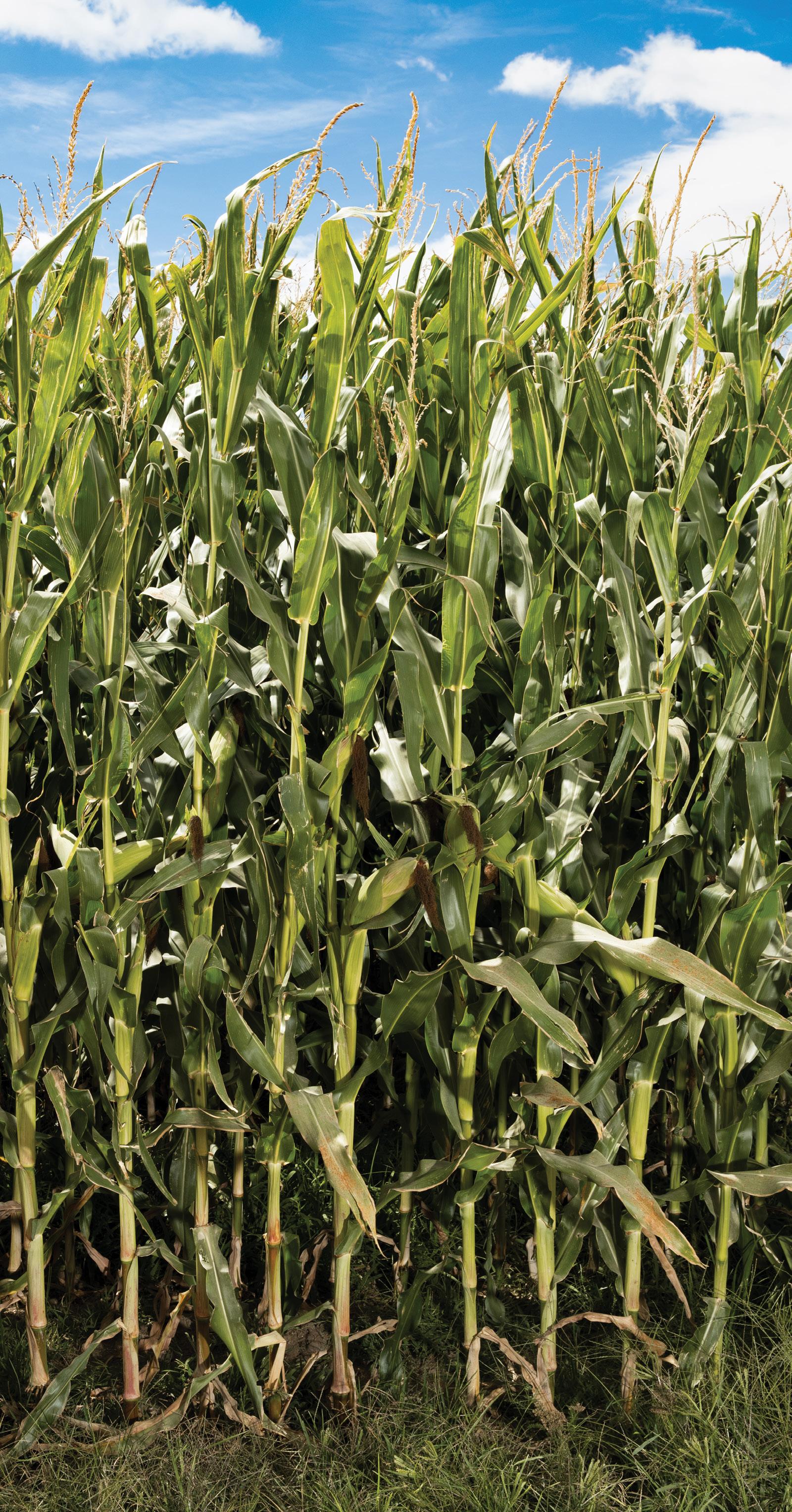
A number of different biological products showing promise in the USA focused on taking N gas from the air and converting it into plant-available forms that could be used by the plant for growth and yield. These products had a low carbon footprint and no or limited nitrous oxide emission if produced directly in the root rhizosphere or as endophytes within the plant.
Below’s advice on the use of biologicals was “be sceptical but willing to try”.
“Know what they are supposed to do and whether you need that done.”
As a child in the 1940s, Margaret Gould (nee Hebbard) used to sneak to the woolshed to blade shear the sheep skins.
“We were not allowed to do it – but that’s how I started into shearing.”
Margaret, now 93, is quite possibly one of the first female blade shearers in New Zealand.
Margaret was one of nine siblings who lived on the family farm at Onahau Bay in Marlborough’s Queen Charlotte Sound. When her father Joseph Hebbard died in 1942, Margaret was 13 and she and her brothers and sisters had no choice but to shear the flock themselves.
“It was the war and there were no shearers around.”
Eighty years ago a young Margaret Hebbard picked up the blades and began to shear. She became something of a celebrity.
By Joanna Grigg.Three of the sisters, Jean, Margaret (born 1930) and Gwen, picked up the blades, and started to hone their skills. Jean and Margaret went on to compete at the Golden Shears (blade class) at the inaugural competition in 1961 and became, perhaps, the first female ‘celebrity shearers’ – being asked to shear at events in Australia.
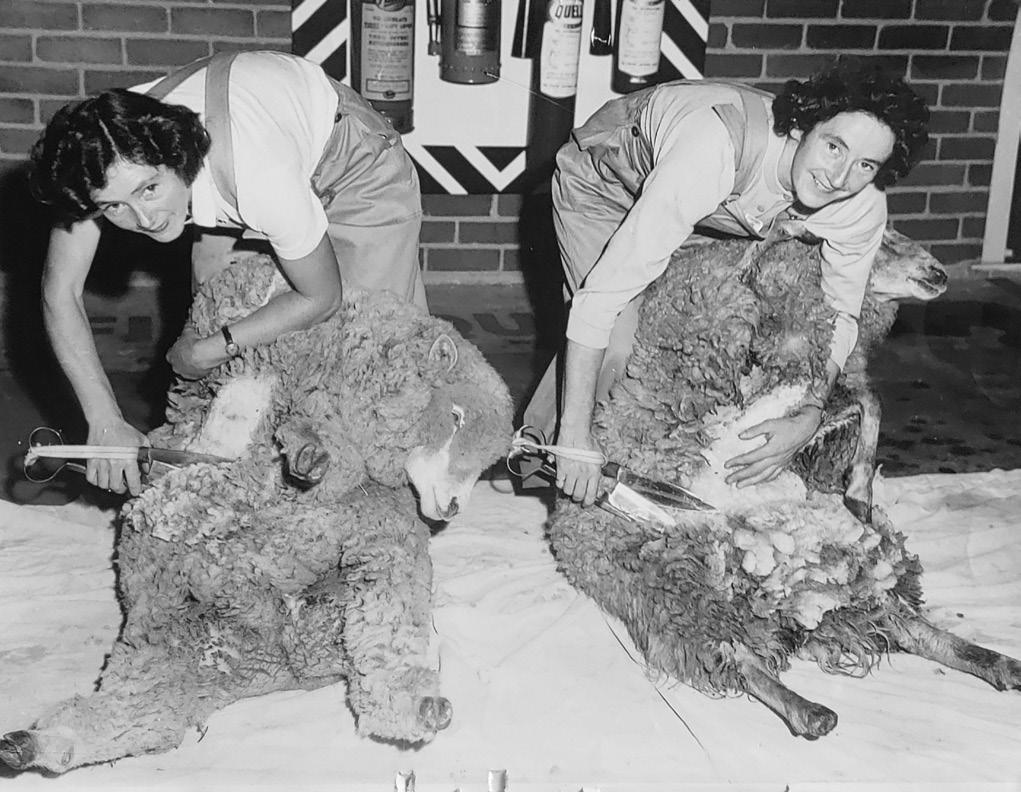
“Jean and I taught ourselves – we had watched Dad do it.”
The day Margaret turned 15, she had a paid job shearing on a farm near Ward.
“I had my fifteenth birthday at the Ngaionui woolshed.”
She and Jean had been sent to Ward to shear Jim Rudd’s sheep, as the usual shearer, their brother Don, had cut his hand.
“Mum made us go down to shear and finish the sheep. We shore there for the next 13 years.”
Margaret’s younger brother Joe was the shedhand and sister Gwen was sent as the cook. It was always toast and chops for breakfast.
Margaret never used an electric handpiece, except for crutching sometimes. She sharpened and set all her gear and always had two handpieces at the ready. Shearing was done bare-foot or in canvas sneakers. Shoes were kept for town trips (and rotated amongst the sisters as to who got to wear them). Shearing pants were army surplus.
Margaret said she never heard of any other young girls shearing at this time.
“The first female shearers that came along after us were machine shearers.”
As a shearer, Margaret says they stayed in shearers’ accommodation on the farm and seldom saw the farmer’s wife.
“She would never come down to the woolshed.”
To get to Ward, they rowed to Picton, then caught the train south – stopping at Ward or Wharanui. Margaret recalls shearing at Blue Mountain and Mirza Downs.
Margaret and Jean became well known in Marlborough. They were asked to shear sheep on floats at gala days and at garden parties. In 1959, they shore at Thomas’s Department store (in their pearls) as part of a national wool promotion.
When they competed in the inaugural Golden Shears in 1961, Margaret says they never got a hard time from the male shearers at the competition.
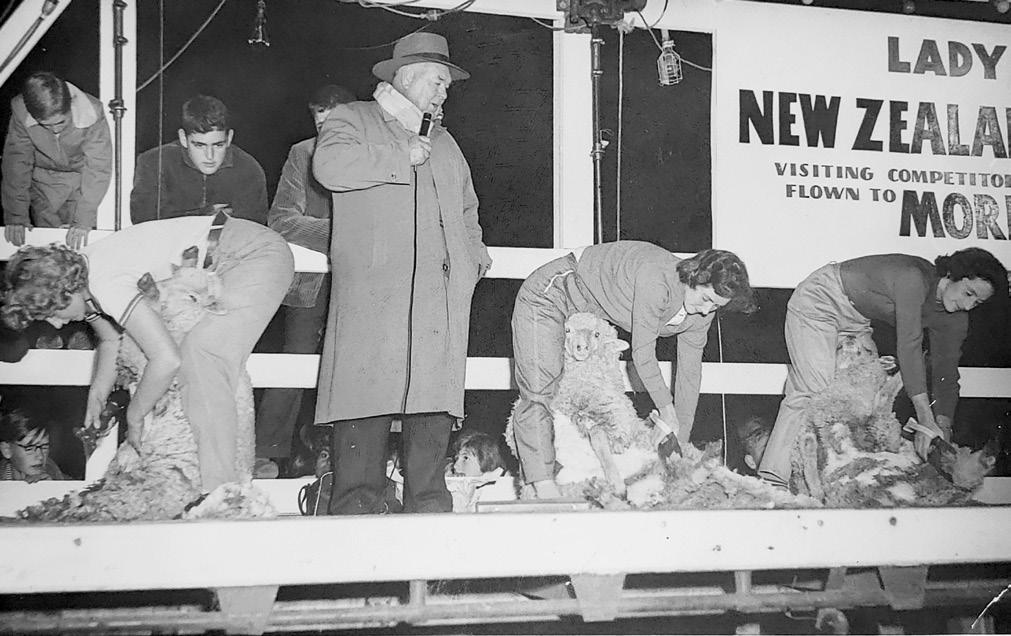
“We got changed at the hotel, and did our thing and went back to the hotel.”
Margaret could shear 102 a day. Sheep were shorn as presented off the paddock, not crutched.
In 1962, they were sent by the Wool Board to Australia to
demonstrate blade shearing at the Moree Centennial Show. It was a grand affair. At the ball, Margaret was asked to pick the Belle of the Ball and Jean the Matron of the Ball.
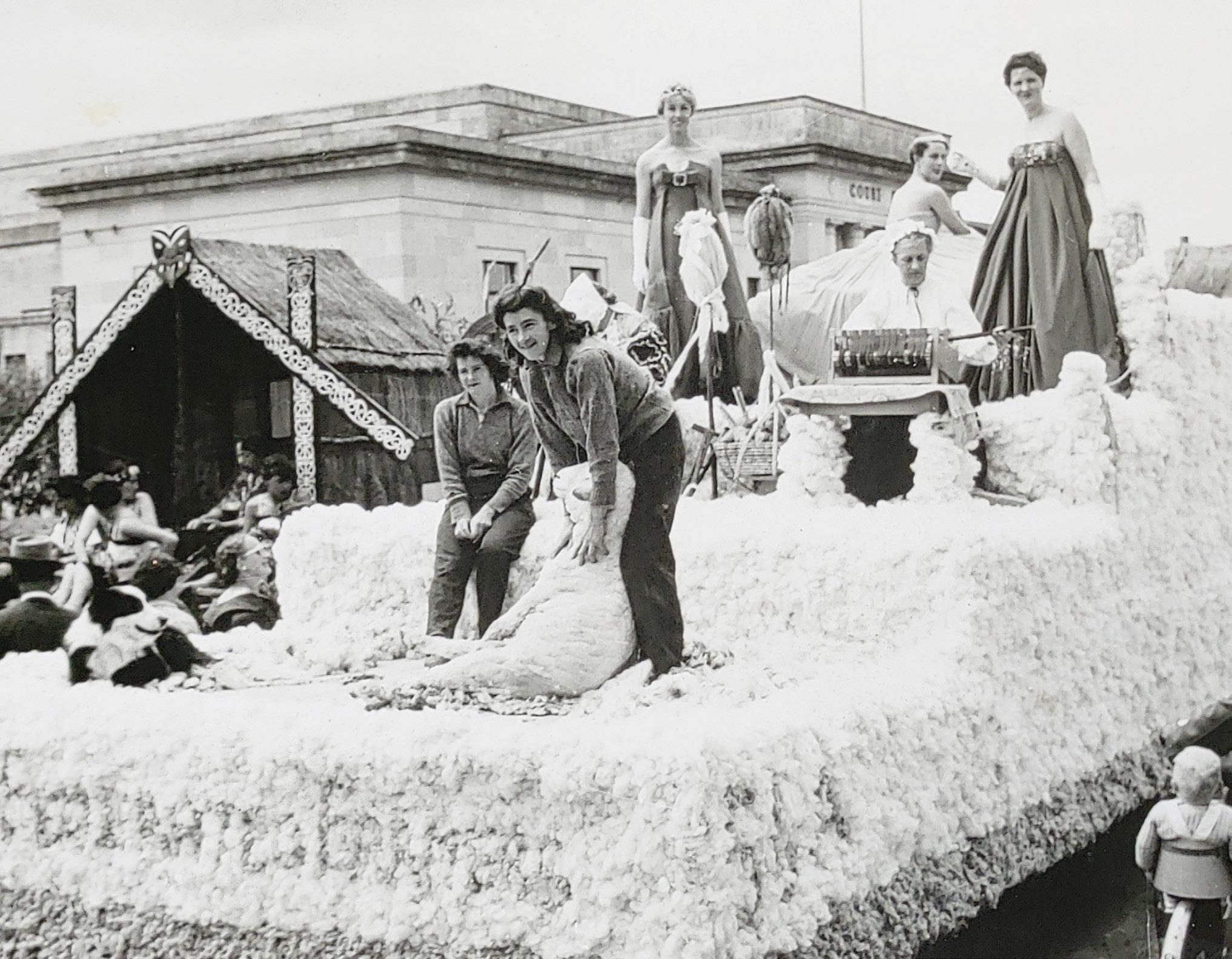
“The David Jones department store heard about us and asked us to do a shearing demonstration at their Sydney store.
“Hundreds of people saw us shear at the top of the building. The sheep went up the lift. Some were Corriedales and some were scruffy like goats,” Margaret says.
“They paid us under the table.”
Jean and Margaret Hebbard ran their Onahau Bay farm in the Marlborough Sounds, while their brothers worked off farm at the freezing works, shearing or fishing.

Margaret remembers the first top-dressing plane brought in to spread fertiliser.
“We put fertiliser on and watched it all grow, and then the cows got bloat,” she says.
“We let it grow too long and learnt from our mistakes.”
Grubbing Tauhinu and Scotch heather took three months to do the whole farm. Now there is no Scotch heather.
A cheap source of dog food was whale meat from Picton.
(Whaling ceased in 1964.) Margaret used to get two tonnes at a time. It was a big job, so sometimes it was left on the home wharf overnight. Come morning, the blood dripping off the wharf had attracted several 18-foot sharks.
“So we went down with the .303 and threw in some fatty stuff and when they came up the top… boom!”
Margaret says whale meat tasted like beef – but it was only a certain part of the whale.
“We never saw orca in the 50s, although I hear they are back now.”
The Hebbards lived off the land. They would only fish for one meal, never more than needed. They made their own butter and rowed to Picton to sell it. Milk was fed to the pigs.
Margaret Hebbard, now 93, at her home in Renwick. Margaret blade shore more than 100 ewes a day, mostly in bare feet.
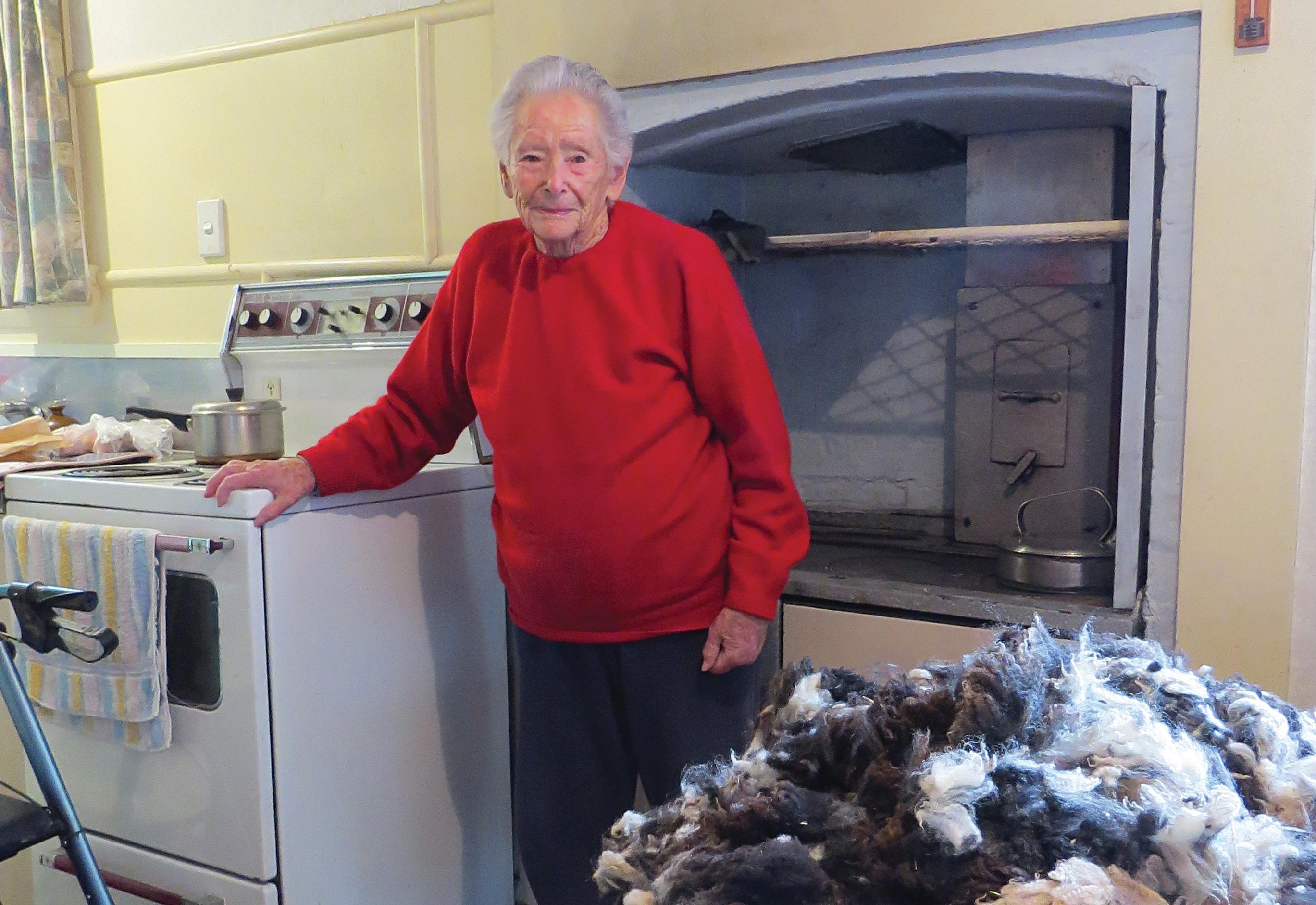
Pig hunting was a favourite pursuit and necessary to stop lambs being eaten by wild pigs.
“We used our sheep dogs to hunt, and one had a tiny bit of bully in it.
“Our dogs never bolted off after pigs when mustering – they knew the difference.”
During a break in shearing, Margaret went out with a local farmer to shoot goats for dog tucker around the Ward area. There were no deer in this country then – just a few further south. The sisters mustered all over the Sounds, often rowing and walking several hours to get there.
Margaret married in 1971 and in the 1980s moved off the farm to 21 acres (8.5 hectares) in Renwick. She was widowed, but built up her house from a “tin-shed”, ran 120 sheep and had a big vegetable garden. Now at 93, she still lives in her “country” home, although it’s now surrounded by new houses.
“So we went down with the .303 and threw in some fatty stuff and when they came up the top… boom!”
Worry is natural, but direct it at things you have control over, Peter Andrew writes.

This year it feels like we are all going to be deep in that bunker from hell.
Having the odd fairway bunker to negotiate has long been a part of farming and the everchanging world market.
Cyclone Gabrielle has caused havoc across Tairawhiti, Wairoa and to our close cousins to the South. It has been a cold reminder that nature is really in charge.
She has been a reminder of the value of resilient farming systems and the need for us all to continue with this in the future.
High interest rates, high costs and depressed market prices are all going to put a choke-hold on the way we run our businesses and the way we farm. This is a natural business cycle that has challenged us many times before.
Unfortunately, this time we also have the climate change brigade’s social experiment of planting Gisborne district’s top farmland in permanent pines, which means your average cocky has a few more things to think about.
It is easy to have a bit of brain overload and brain fade. Changing times can cause stress and worry, which can impact the farm and the whole family.
Changing times mean it is also a very good time to seriously think about the way we do things.
The number one area to start with is the top two inches; it’s
a good time to push the reset button on that special place. It is important to remember the priority position that the family should and must take. We all need to work hard to create a positive and healthy family environment.
It is natural to worry; worry is just our minds trying to find the best escape pathway out of the current hole we find ourselves in.
The mind throws a cluster bomb of “what ifs” to get us out of a current pickle. And some of us appear to have quite a few pickles to handle on a daily basis.
Our cavemen would definitely have had climate change, but thankfully no surviving zealots and probably little to no debt.
Debt and high interest rates can be a stress magnet, with a classic caveman play of revisiting in the early hours of the morning to offer a bucket-load of solutions to mull over. We need to be careful to manage our worry, as too often too much energy is burnt and sleep lost worrying about issues we have little control over, such as international interest rates. Do what you can with your bank manager to manage the lending,
This process is handy if we are faced with a charging bull, or the huntaway flips over to “I’m sure I know where this mob needs to go”.
Worry provides us with a bucket-load of great solutions interlaced with appropriate swear words to accompany the implementation. A handy legacy from the caveman days.
Stress, when pointed in the right direction, is the breakfast of champions. Managing stress is an artform by our top operators. It enables them to positively move through the challenges thrown at them each day.
tell the caveman who calls to piss off, and worry about something a little closer to home, like getting to every one of your son or daughter’s sports games this year.
We don’t want to worry about activities that we don’t have any control or influence over.
A classic example is being a stressed passenger on a plane.
Unless you are trained in aviation, stressing out and creating a load of “what ifs” is going to be of little assistance to the pilot.
Make sure you save your worry for something you will have a greater influence on.
"Stress, when pointed in the right direction, is the breakfast of champions."
Over the years we have had challenges thrown at sheep and beef farming. Classic challenges of the past have been increasing lambing percentages, drench resistance to internal worms, and vulnerability to facial eczema.
Most challenges of the past have been natural or biological systems, which means our response to solve is typically logical with a commonsense science base.
Sheep and beef farmers have listened to the challenge, evolved, and moved forward positively with a number of solutions. The solutions work with the challenge to ensure sustainable production continues, which is critical to drive business and communities.
Why then do we allow the climate change brigade's social experiment to turn our top farmland into permanent pine
forest that destroys the land, the community and our children’s food production?
After the recent events in the Gisborne-Wairoa district, I think the pines are telling us that they are not a sustainable option. But sadly, no one is listening. Where was the brigade when it came to cleaning up our farms, our bridges and our beaches? If they were really interested in saving the planet they would be organising a working bee or being the first to ask for an inquiry.
What can we learn from tough times in the past?

Every downturn is a great chance to get rid of some lazy costs. This is a good time to be conservative with your spending – hunker down.
Have projects to keep the mind
busy, but hold back on the big spend items.
Work hard to ensure that maintenance phosphate and sulphur still go on. Vibrant cloverbased pastures are a rock in these high-cost times.
Do a meaningful budget.
Ring a mate – there’s nothing like a good catch up.
Put your energy and thoughts into areas you have influence over.
We used to pour all our efforts into improving the land, for the family and the community. The target was a perfect farm with productive land that looked a picture. You could be proud of your link in the stewardship of the land as it was passed to the next generation. Much of that hard work was based on an investment that had payback over many years and often over many generations. So why is having the climate change brigade’s social experiment of planting our top farmland in permanent pines important?
There is a real risk right now of losing the drive, of getting an infestation of “why should I bother?”
We need to make sure we are bigger than all of this. Our land is a treasure, a taonga, we all need to continue to protect and improve for the next generation. We need to stay focused hard on that big picture of a top farm with sustainable production. The supply-demand principle of economics will tell you the prize will be even bigger.
A healthy, motivated and welldirected top two inches will be critical to make it happen.
Don’t under-estimate the benefits of bringing up a family in the country, Binds White says. She and husband Tim are this year’s Keinzley Ag Wairarapa Farm Business of the Year award winners. They both had business careers outside farming before making the switch to full-time farming 10 years ago.
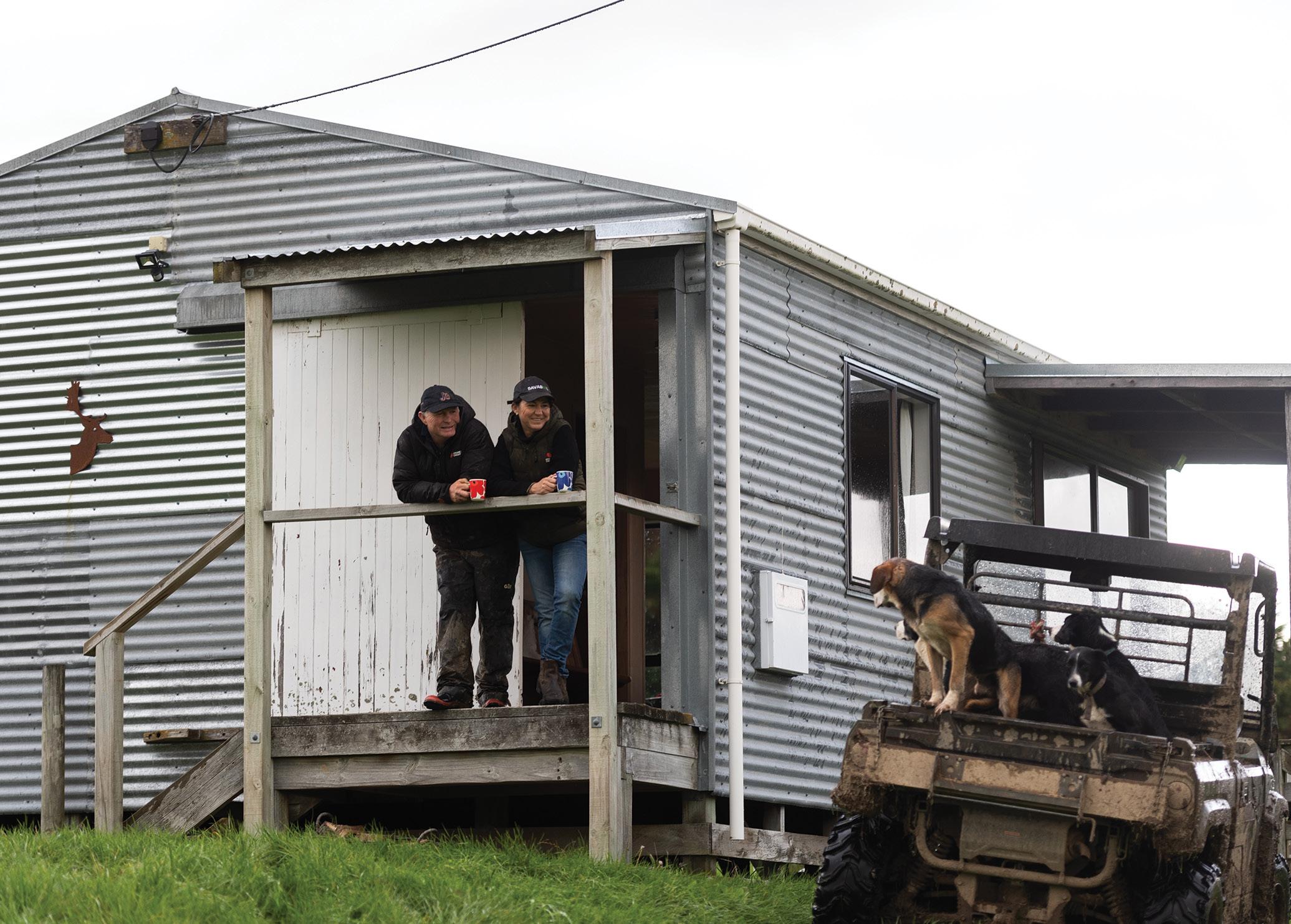

The couple have a farm stay cottage on the farm, called Fallow Hut, and most of their visitors are town or city folk keen on a stay in the country. The direct contact with them has changed Binds’s perspective on the size of the socalled urban-rural divide.
“It’s a big topic I know but we find their values and goals are closely aligned with ours.”
She says most of our visitors who stay at Fallow Hut feel it’s a privilege to stay on their farm and love the experience of country living.
It has highlighted the many
benefits their own two daughters have enjoyed as kids growing up in the country.
“Raising a family on a farm has lots of benefits that our visitors don’t get. There are lots of enjoyable things, and life lessons too.”
She says they get to shoot their first deer or rabbit, ride a horse bareback and swim them in the river, and learn to drive and do 360 hand-brakies. There’s spotlighting, bonfires, docking, eventing, planting, endless mates to visit and a great work-life balance.
Binds and Tim are big travellers and always set goals around getting off the farm to refresh and enjoy new places. They are active relaxers and rarely book anything in advance when they travel, in stark contrast to the budgeted, detailed way they run their farm business.
“Our latest thing is e-biking and there is plenty of scope for
that around here,” Binds says.
The first Covid lockdown in 2020 provided just the time for the family to connect with their neighbours and they established a community group with the vision of “know better, do better”.
They also renovated a redundant woolshed on the property and turned it into the Duck & Hare just in time to celebrate a 21st birthday for their eldest daughter Grace. It’s become a focal point for occasional community gatherings and a popular venue for birthday and anniversary celebrations.
Minimising the moisture content of bedding in animal housing is important because increased moisture allows for increased microbial activity and potentially harmful levels of pathogens.
environmental alkalinity and increases the animals’ risk of infection.
Binds says they always encouraged their two children to grow their own futures and not feel any expectation to take over running the farm in the future.
As a family, they decided they didn’t want to create a set of goals then ignore them.
“What use are they if you don’t return to them and hold yourself accountable?”
Words like resilience and adaptability won’t be among their goals.
“Farmers are already experts at pivoting when something changes, and resilience is ingrained in most farming families too,” Binds says.
The Whites list their goals under headings: today, tomorrow, this month, this financial year and next financial year and review them often.
Dry bedding also encourages resting – helping to support animal health, welfare and productivity.

Cheap and readily available, limestone is often used to reduce moisture in animal bedding. However, its water absorbing capacity is very limited at about 30%, meaning 100g of limestone will only absorb about 30g of water. Water-bound limestone also forms a slippery film, creating hazardous conditions for workers and animals.
Other chemical characteristics of limestone means application to bedding may even be detrimental to animal health. In contrast to animal skin which has a pH around 5.5, limestone has a high pH (9-10). This, combined with the high pH (13) of ammonia from animal waste increases
The high pH of limestone also results in increased ammonia evaporation from urinary or faecal material found in animal bedding. This results in elevated ammonia levels in the barn, increasing the risk of respiratory irritation and pneumonia in animals housed, and making working conditions unpleasant.
Stalosan F, formulated to absorb up to 400% moisture, is a blend of natural minerals, each of which acts in a different way to keep bedding dry, absorb ammonia and inhibit bacterial growth. The inclusion of essential oils also repels bugs.
With a pH of 3.5, Stalosan F helps keep the pH of bedding low, helping to reduce the production of ammonia from urine and faeces in animal housing. Bedding with a low pH also supports the maintenance of a healthy layer of sebum on the skin, protecting animals from the risk of infection.
• Supplied content
“It’s a big topic I know but we find their values and goals are closely aligned with ours.”
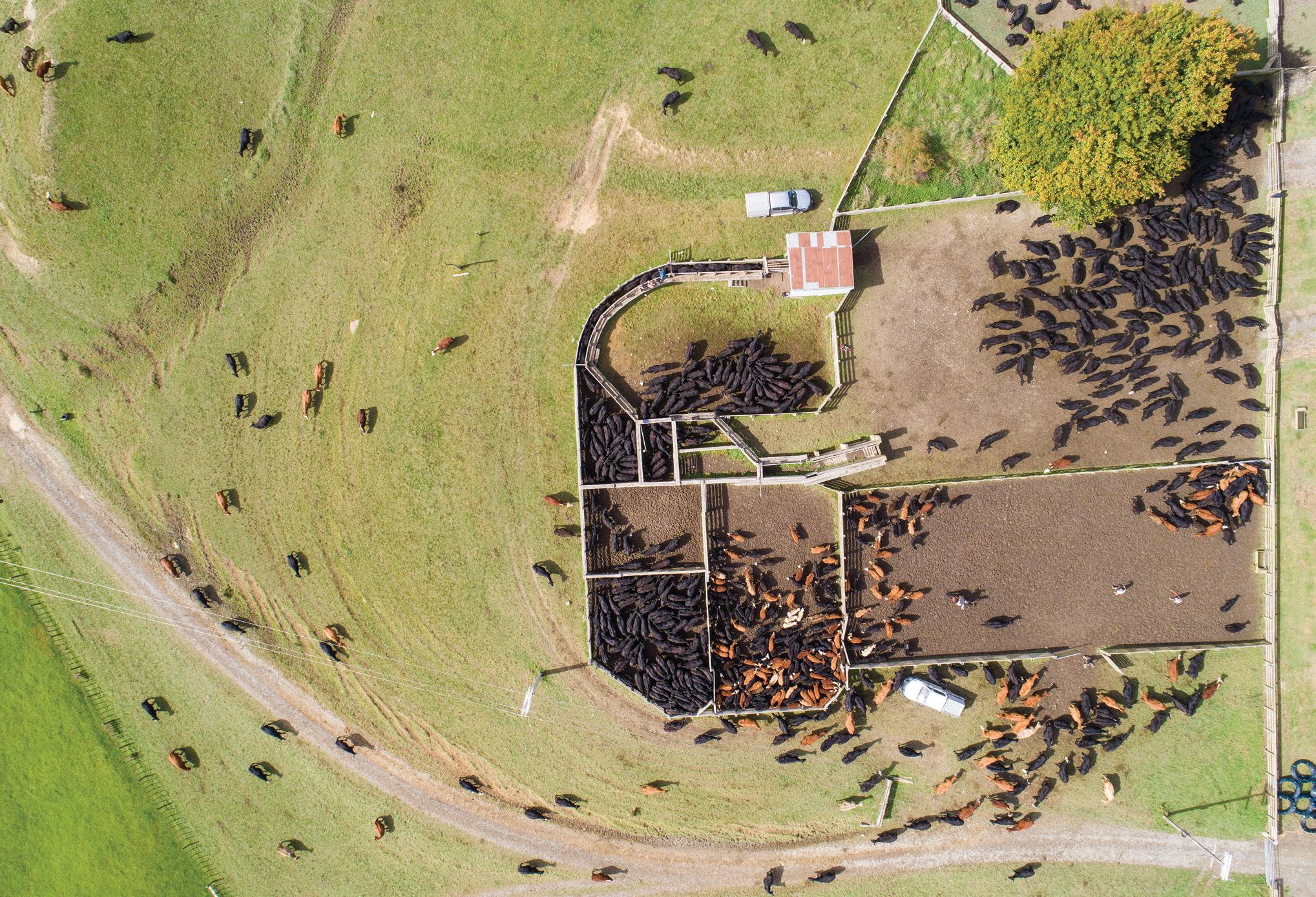

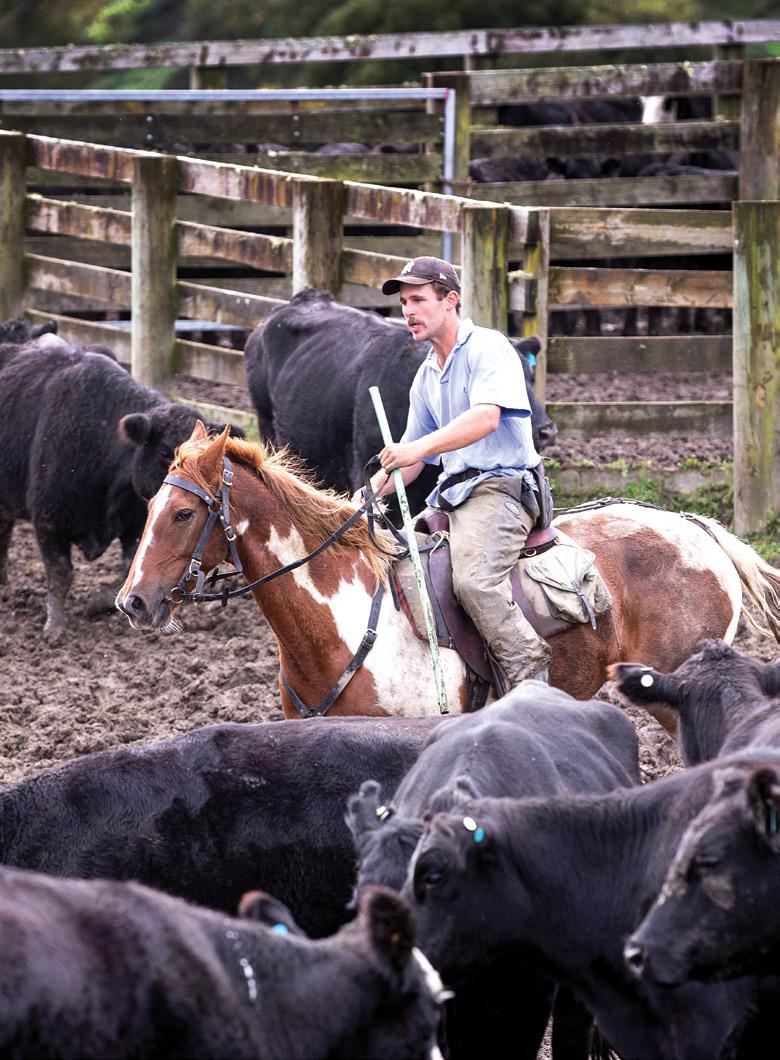


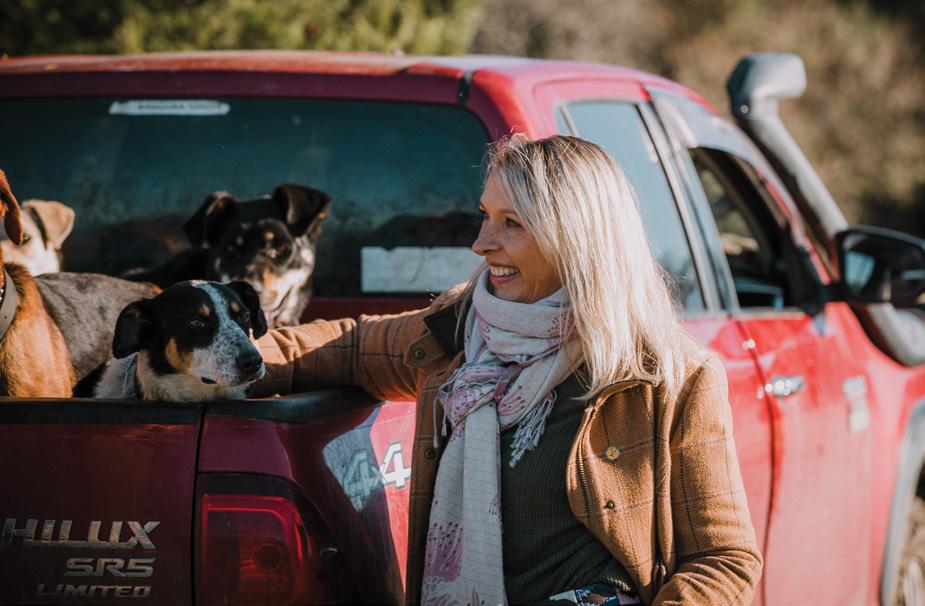
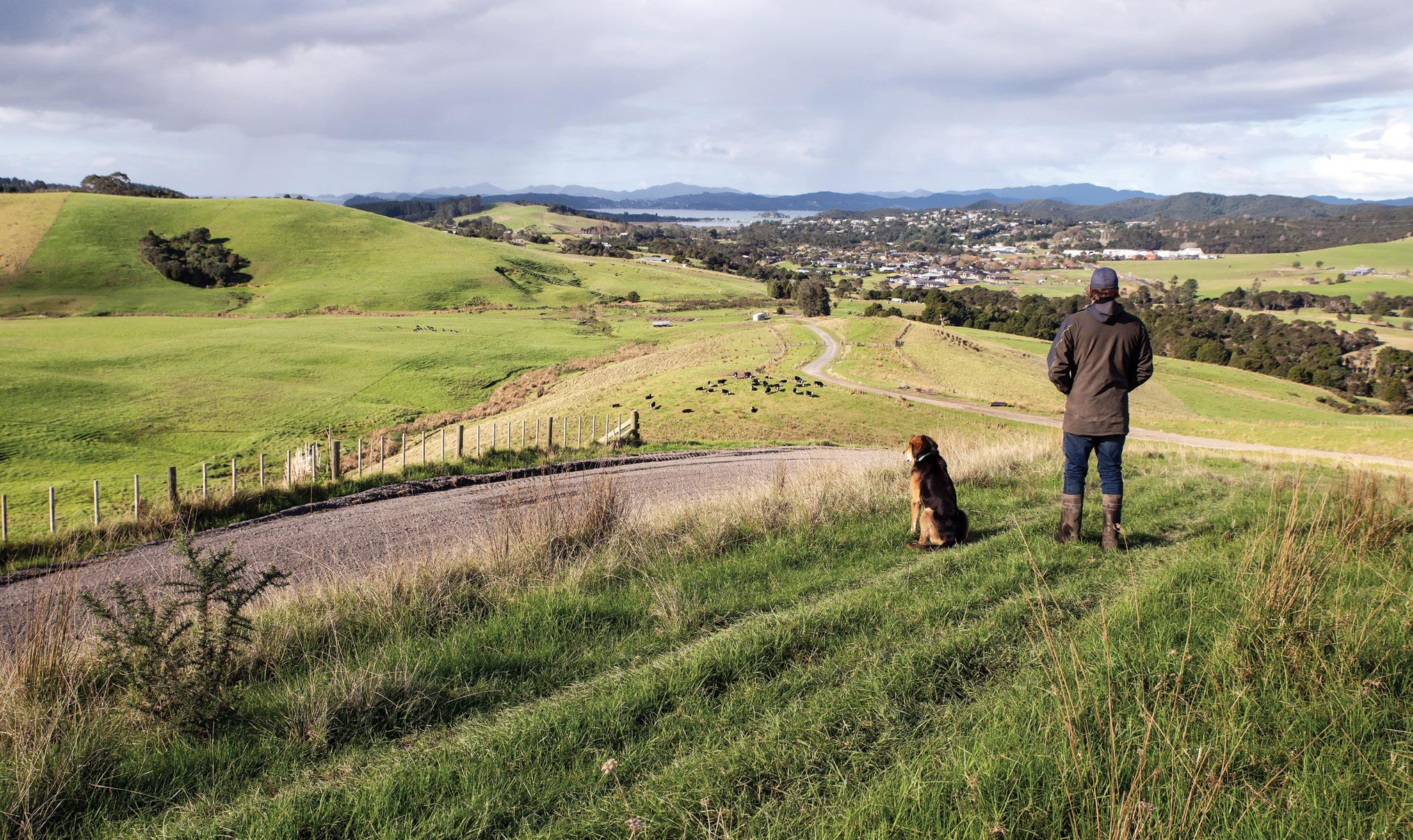
G SERIES
105 – 135 HP
Ready for anything, the G Series is a multipurpose, full-featured tractor made for all your farming needs. Enjoy its gutsy features, including advanced power lift and high capacity hydraulics, plus the new 6 speed powershift for a great range of work speed options.
SPEAK TO YOUR LOCAL VALTRA DEALER FOR MORE INFORMATION.
